Will Prescription Testosterone Show On Employee Drug Test
Diabetes drug metformin may lower liver cancer risk in diabetic patients
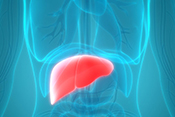 Image: ©Getty Images/magicmine
Image: ©Getty Images/magicmine
(12/03/2021)
Metformin use and glycemic control were linked to reduced risk of liver cancer in patients with diabetes and nonalcoholic fatty liver disease, found a Michael E. DeBakey VA Medical Center study. Nonalcoholic fatty liver disease patients who also have diabetes have a high risk of developing liver cancer. Researchers looked at data from nearly 86,000 VA patients with both conditions. Use of the diabetes drug metformin was linked to a 20% lower risk of liver disease compared to patients not taking the drug. Adequate control of blood sugar levels was linked to a 31% lower risk of cancer. Taking insulin alone did not affect cancer risk. Insulin combined with other oral medications was linked with a 1.6-fold higher risk of liver cancer. The results support the idea that metformin may help prevent liver cancer in these patients, say the researchers. (Hepatology, Nov. 15, 2021)
Combination antibiotics may effectively treat drug-resistant bacteria
 Photo: ©Getty Images/Ridofranz
Photo: ©Getty Images/Ridofranz
(12/03/2021)
Combination antibiotics may be more effective than older medication at treating antibiotic-resistant infections, according to a review by Hines VA researchers and colleagues. Antibiotic-resistant bacteria, such as carbapenem-resistant Enterobacterales and Pseudomonas aeruginosa, are serious health care concerns. Combination antibiotics pair older drugs with a drug called beta-lactamase inhibitor. The researchers reviewed scientific studies to see whether these new antibiotics are more effective than older drugs at treating the two infections. They found that combination antibiotics produced similar clinical results as older drugs. The new drugs appear to be more effective at controlling bacteria levels. The results support recommendations that combination antibiotics be used to overcome antibiotic resistance, say the researchers. (Antimicrobial Stewardship & Healthcare Epidemiology, Nov. 25, 2021)
Asthma drug may reduce lung cancer risk
 Photo: ©Getty Images/mustafagull
Photo: ©Getty Images/mustafagull
(12/03/2021)
Asthma medication may reduce the risk of lung cancer, found a study by Columbia VA researchers. Drugs called leukotriene inhibitors are used to treat asthma. Some research suggest that they may also suppress tumor growth. Researchers studied data on more than 550,000 VA patients with asthma. Patients taking a leukotriene inhibitor had a 22% reduced risk of lung cancer, compared with patients not on the drug. The researchers caution that other factors may be at play because treatment was not randomized. The findings suggest that leukotriene inhibitors have potential as lung cancer prevention, say the researchers. (Pulmonary Pharmacology and Therapeutics, Oct. 15, 2021)
Lithium does not appear to improve suicide risk
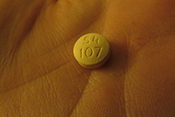 Photo: ©Getty Images/Chris Marshall
Photo: ©Getty Images/Chris Marshall
(11/24/2021)
Adding lithium to medication regimens does not help prevent suicide-related events in patients with mood disorders, found a VA study. Prior studies have suggested that lithium may prevent suicide in patients with bipolar disorder or depression. Researchers added lithium to the treatment of VA patients with bipolar disorder or depression who had survived a recent suicide-related event, such as a suicide attempt or a hospital admission to prevent suicide. The trial was stopped for futility after 519 Veterans were enrolled. No difference between lithium and placebo treatment was found. Both the lithium and placebo groups had similar rates of suicidal behavior. The findings suggest that adding lithium has no effect on suicidal behavior for patients with mood disorders, say the researchers. (JAMA Psychiatry, Nov. 17, 2021)
Telemedicine could help reduce emergency department overcrowding
 Photo: ©Getty Images/Marje
Photo: ©Getty Images/Marje
(11/24/2021)
Tele-urgent care could safely decrease emergency department overcrowding, according to a San Francisco VA study. Emergency department use for non-emergency issues often leads to overcrowding and decreased quality of care. Researchers tested a telehealth program for urgent care to address this issue. Out of 2,510 patients who used tele-urgent care, 21% were referred to in-person emergency care. Among those not referred to in-person care, 11% ended up visiting an emergency department within 72 hours. Only one in five in this group required hospitalization. The results show that a virtual platform may offer an effective and safe way to assess patients and decrease emergency department burden, say the researchers. (Journal of Telemedicine and Telecare, June 21, 2021)
Smartphone app aims to help prevent Veteran suicide
 Photo: ©Getty Images/PeopleImages
Photo: ©Getty Images/PeopleImages
(11/24/2021)
Researchers from the Providence VA developed a smartphone app to help prevent suicide. The Mobile Application for the Prevention of Suicide (MAPS) uses assessment in the moment to identify suicide risk and deliver real-time treatment strategies. The app is personalized to each patient. Eight Veterans hospitalized for suicidal behavior tried MAPS for two weeks. They reported high levels of satisfaction. All eight Veterans opted to continue using the app after the trial period ended. MAPS could be a useful addition to treatment and may help better track suicide risk and provide assistance for high-risk Veterans, according to the researchers. (Military Psychology, Oct. 28, 2021)
Daily fasting could improve metabolic health, suggests mouse study
 Photo: ©Getty Images/dra_schwartz
Photo: ©Getty Images/dra_schwartz
(11/17/2021)
Fasting is an important aspect of a calorie-restricted diet, suggests a study by William S. Middleton Memorial Veterans Hospital researchers. Calorie restriction has been shown to promote healthy aging in mouse models. But in such models, feeding usually happens once per day, altering normal feeding behavior. Researchers studied multiple feeding patterns in mice to see how periods of fasting affect calorie restriction benefits. They found that prolonged fasting is necessary for key metabolic and molecular benefits of calorie restriction to take effect. A calorie-restricted diet improved glucose tolerance, body composition, and age-related frailty, but only in mice that fasted for extended period between meals. The results suggest that when a person eats, not just how much they eat, is important to health and diet, according to the researchers. Daily prolonged fasting could have real benefits for metabolic and aging health in humans, they say. (Nature Metabolism, October 2021)
Homelessness, justice involvement linked to mental health difficulties
 Photo: ©Getty Images/LordHenriVoton
Photo: ©Getty Images/LordHenriVoton
(11/17/2021)
Homelessness and justice involvement are linked to greater mental health difficulties, according to a VA Rocky Mountain MIRECC study. Researchers looked at data from a 2018 survey of more than 15,000 post-9/11 Veterans. They found that homelessness and a history of involvement with the criminal justice system were both linked to more severe PTSD, depression, and substance use symptoms, compared with other Veterans. Those who experienced homelessness or justice involvement also had increased rates of suicidal thoughts and attempts. Veterans with a history of both homelessness and justice involvement had the most severe mental health symptoms and suicide risk of the study group. The findings show that increased access to mental health services is needed in these Veteran populations, say the researchers. (Journal of Psychiatric Research, Nov. 3, 2021)
Solar activity may be linked to high blood pressure in elderly men
 Image: ©Getty Images/dzika_mrowka
Image: ©Getty Images/dzika_mrowka
(11/17/2021)
Sunspots may be linked to higher blood pressure in older men, found a study including VA Boston researchers. The researchers studied blood pressure readings for 675 elderly men between 2000 and 2017. Participants were born between 1884 and 1945. They found that periods with high magnetic field activity from the sun corresponded with higher diastolic and systolic blood pressure patterns. The pattern was most evident when the number of sunspots and disturbance to Earth's magnetic field were high 16 days before blood pressure reading. The link between solar radiation and blood pressure was independent of pollution or ambient radioactivity levels. Previous research has shown that changes in magnetic field linked to sunspots and solar wind can affect autonomic nervous system activity. The results could have implications for long-term management of blood pressure, and also may help scientists interpret data from long studies, according to the researchers. (Journal of the American Heart Association, Nov. 2, 2021)
COVID-19 vaccine effectiveness wanes, but remains high against death
 Photo: ©Getty Images/Inside Creative House
Photo: ©Getty Images/Inside Creative House
(11/10/2021)
Vaccine protection against COVID-19 declined during 2021, but protection against death after infection remained high, according to a study by VA San Francisco researchers. The study looked at COVID-19 infection rates and deaths for more than 780,000 VA patients between February and October 2021. Effectiveness against infection for the three vaccines being given in the United States—created by Pfizer, Moderna, and Janssen—fell from an average of 88% to 48% as the Delta variant of the virus emerged. Although breakthrough infections increased, the vaccines proved to be highly protective against death from COVID-19. Protection against death from COVID-19 remained above 73% for all three vaccines in patients younger than 65, and above 70% for older patients. The findings support efforts to increase vaccination, booster campaigns, and additional layers of protection against infection, say the researchers. (Science, Nov. 4, 2021)
E-cigarettes may increase inflammation, disease risk
 Photo: ©Getty Images/danchooalex
Photo: ©Getty Images/danchooalex
(11/10/2021)
E-cigarettes may increase inflammation and weaken immune response, according to a VA San Diego study. Researchers measured the levels of several biomarkers in the saliva, sputum, and blood of e-cigarette users and non-smoking controls. E-cigarette smokers had higher levels of proteins that indicate inflammation. Smokers also had lower levels of proteins that signal the immune response to help fight off infections. The immune response was also blunted in smokers when challenged by a bacteria. This suggests a decreased ability to respond to infection. The findings raise concerns that smoking e-cigarettes may make people more vulnerable to infectious disease, say the researchers. (American Journal of Physiology, Oct. 27, 2021)
PTSD medication disparities between rural and urban VA patients mostly eliminated
 Photo: ©Getty Images/SDI Productions
Photo: ©Getty Images/SDI Productions
(11/10/2021)
Disparities in PTSD treatment between rural and urban VA patients have improved in the last decade, found an Iowa City VA study. Researchers looked at VA prescribing data from 2009 and 2019. They found that recommended PTSD medications were prescribed significantly less often in rural clinics than in larger medical centers in 2009. By 2019, recommended prescribing was about equal in rural and urban settings. In 2009, prescribing of medications not recommended for PTSD patients was higher among rural than urban residents. The rates were largely equal by 2019. The results show that rural discrepancies in PTSD prescribing in VA had largely been corrected by 2019, according to the researchers. (Journal of Rural Health, Nov. 9, 2021)
Tau protein linked to traumatic brain injury, processing problems
 Image: ©Getty Images/selvanegra
Image: ©Getty Images/selvanegra
(11/02/2021)
High levels of the protein tau are linked with a history of traumatic brain injury and reduced processing speed in Vietnam-era Veterans, found a study by VA San Diego researchers. The team checked the levels of several biomarkers in the cerebrospinal fluid of 102 Veterans, half of whom had history of TBI. The TBI group had significantly higher levels of both p-tau and t-tau, two forms of a protein often found in the brain and spinal cord. Researchers did not find differences in levels of amyloid beta, a peptide associated with Alzheimer's disease. Those with TBI history and high tau levels had reduced performance on a measure of cognitive processing. The findings suggest that tau accumulation may be a mechanism of dementia risk for Veterans with TBI, according to the researchers. (Alzheimer's and Dementia, Oct. 14, 2021)
Pregnancy-related anxiety linked to postpartum depression
 Photo: ©Getty Images/AsiaVision
Photo: ©Getty Images/AsiaVision
(11/02/2021)
Pregnancy-related anxiety was linked to postpartum depression and parent-child bonding difficulties, in a study of pregnant Veterans. Twenty-eight pregnant Veterans completed questionnaires during and after pregnancy. Results showed that pregnancy-related anxiety was a stronger predictor of postpartum depression than depression during pregnancy. Postpartum depression was in turn associated with parenting stress. More depressed mothers were more likely to have greater difficulties bonding with their child and experienced more feelings of rejection, anger, anxiety, and stress. The results suggest that treating anxiety during pregnancy could help prevent postpartum depression and subsequent parenting difficulties, say the researchers. (Maternal Child Health Journal, Oct. 9, 2021)
Transcranial magnetic stimulation can improve depression, PTSD
 Image: ©Getty Images/image_jungle
Image: ©Getty Images/image_jungle
(11/02/2021)
Transcranial magnetic stimulation (TMS) was shown to reduce depression and PTSD symptoms, in the largest study to date of the treatment in Veterans. TMS noninvasively uses magnetic fields to affect the electrical signals in the brain. Researchers studied its effectiveness in 770 Veterans with major depressive disorder. Of those, 68% also had PTSD. TMS led to clinically meaningful symptom reductions for both conditions. Of patients who received an adequate dose of TMS, 41% saw depression symptom improvements, with a remission rate of 20%. For patients with PTSD, 65% had meaningful symptom reduction, and 46% no longer met the criteria for PTSD. The results support the effectiveness and safety of TMS for treating both depression and PTSD, say the researchers. (Journal of Affective Disorders, Oct. 20, 2021)
Low-value prostate cancer screening common in VA
 Photo: ©Getty Images/BeholdingEye
Photo: ©Getty Images/BeholdingEye
(10/26/2021)
Low-value cancer screenings in VA were low for some cancers, but high for prostate cancer, found a study by VA Puget Sound researchers. Clinical practice guidelines recommend stopping cancer screenings when risks exceed benefits. Researchers looked at data on almost 6 million VA patients. For men of average risk, 19% underwent prostate cancer screening and 5% underwent colorectal cancer screening. For women of average risk, 5% underwent breast cancer screening and 14% underwent cervical cancer screening. Low-value screening was defined as screening outside of recommended age ranges or mortality risks. It was rare for breast, cervical, and prostate cancers. However, more than one-third of prostate cancer screens were low-value. Patient race and ethnicity, sociodemographic factors, and health burdens were linked to the likelihood of receiving low-value tests. Individualized recommendations for cancer screenings could help limit low-value screenings, say the researchers. (JAMA Network Open, Oct. 1, 2021)
Mild traumatic brain injury linked to prolonged health problems
 Photo for illustrative purposes only. ©Getty Images/Ridofranz
Photo for illustrative purposes only. ©Getty Images/Ridofranz
(10/26/2021)
Deployment-related mild traumatic brain injury was associated with multiple persistent post-concussive symptoms, in a VA study. Researchers interviewed 613 Veterans and service members who served in Afghanistan and Iraq. They found that mild TBI was linked to headaches, sleep disturbance, and difficulty making decisions an average of 10 years after injury. Deployment-related TBI was also associated with nausea/upset stomach and numbness or tingling. These symptoms were seen in deployment-related TBI but not normally in TBI patients. The results show that mild TBIs sustained during deployment have enduring negative health effects, according to the researchers. (Brain Injury, Sept. 20, 2021)
Statin use may increase diabetes progression
 Photo: ©Getty Images/vitapix
Photo: ©Getty Images/vitapix
(10/26/2021)
Statin use is linked to worsening diabetes progression, according to a study led by a VA North Texas researcher. Statins are drugs intended to lower cholesterol. Researchers compared data on over 80,000 VA patients with diabetes who took statins and a matched group not on statins. They found that diabetes worsened in 56% of patients taking statins, compared with 48% of those not on the drug. Patients taking statins were more likely to have begun insulin treatment, have high blood sugar, have diabetes complications, and take an increased number of prescriptions. Results show that the risks and benefits of statin use need to be carefully weighed in diabetes patients, say the researchers. (JAMA Internal Medicine, Oct. 4, 2021)
Biological pathways of suicide risk identified
 Image: ©Getty Images/kirstypargeter
Image: ©Getty Images/kirstypargeter
(10/21/2021)
VA Million Veteran Program researchers identified several biological factors related to suicide risk. Researchers conducted a genome-wide association study comparing Veterans with a history of suicide attempts with those without suicidal behavior. They found 30 biologic pathways associated with an increased risk of suicide attempts. Those pathways included differences in the signaling of oxytocin, a hormone involved in social bonding. Multiple stress pathways, including cortisol secretion and blood pressure regulation, were also found to be related to suicide risk. Subject groups also showed differences related to circadian rhythm. Identifying biological factors related to suicide risk could help identify new treatments, according to the researchers. (American Society of Human Genetics, Oct. 18, 2021)
Statin use disparities
 Photo: ©Getty Images/rogerashford
Photo: ©Getty Images/rogerashford
(10/21/2021)
Disparities exist between which patients continue to take statins when experiencing side effects, according to a study by Michael E. DeBakey VA Medical Center researchers and colleagues. Statins are drugs that lower cholesterol. Side effects—such as headache, muscle pain, digestive problems, and poor sleep—are the leading cause of statin discontinuation. Researchers studied data on more than 1 million patients with atherosclerotic cardiovascular disease. Females, white patients, and those with high blood pressure or ischemic heart disease were at increased risk of statin side effects. Those receiving care at a teaching facility had lower risk. Among patients experiencing side effects, those with diabetes or ischemic heart disease and those with more cardiology visits were more likely to remain on statins. Being female was linked with lower odds of remaining on statins. The results suggest areas for improvement in optimizing statin use, say the researchers. (Journal of Clinical Lipidology, Oct. 2, 2021)
Many VA health care enrollees purchase outside insurance
 Photo: ©Getty Images/Andrei Sauko
Photo: ©Getty Images/Andrei Sauko
(10/21/2021)
Many enrollees of VA health care also acquire health insurance outside VA, found an Edward Hines, Jr. VA Hospital study. Researchers surveyed almost 4,000 Veterans enrolled in VA health care. Of those, 32% also had non-VA insurance. The most common reasons for having outside insurance were wanting coverage for emergency situations or family members. The largest barrier to outside insurance coverage was affordability. The results show the importance of meeting all of VA enrollees' health care needs within VA and community care financed through VA, according to the researchers. (Medical Care Research and Review, Oct. 8, 2021)
Military sexual trauma independently increased suicide risk
 Photo: ©Getty Images/globalmoments
Photo: ©Getty Images/globalmoments
(10/21/2021)
Military sexual trauma is a risk factor for suicide in Veterans without mental health diagnoses, found a study by VA Connecticut researchers. While sexual trauma is associated with suicidal ideation—thinking about suicide—less is known about this relationship when other mental health concerns, such as depression or PTSD, are not involved. Researchers examined more than 41,000 Veterans without a mental health diagnosis. They found that 28% of women and 3% of men reported military sexual trauma. Fifteen percent of women and 17% of men experienced suicidal ideation. Military sexual trauma was linked to a higher risk of suicidal ideation in both men and women. The findings suggest that instances of military sexual trauma should prompt suicide screening, say the researchers. (Psychiatric Research, September 2021)
Legal involvement increases risk of opioid overdose death
 Photo: ©Getty Images/South_agency
Photo: ©Getty Images/South_agency
(10/21/2021)
Legal system involvement was linked to increased risk of opioid overdose and death, in a study of VA patients. Researchers looked at data of more than 5 million Veterans who used VA health care. Of those, around 32,000 had legal system involvement, meaning they spent time in prison or jail. Veterans with legal involvement were significantly more likely to die from an opioid overdose, compared with those without legal involvement. The results show that opioid overdose prevention and naloxone distribution should target legally involved Veterans, say the researchers. (American Journal of Preventive Medicine, Sept. 11, 2021)
Poor diet quality in older Veterans with PTSD
 Photo: ©Getty Images/Mukhina1
Photo: ©Getty Images/Mukhina1
(10/21/2021)
Older Veterans with PTSD may have poor quality of diet, found a pilot study by Durham VA researchers. Older Veterans with PTSD are at an increased risk of obesity and cardiovascular disease. Researchers examined the eating habits of 54 older Veterans participating in a supervised exercise trial. They found that consumption of added sugar exceeded dietary recommendations. Consumption of healthy foods such as whole grains, fruits and vegetables, and calcium fell short of recommendations. Participating in the exercise program did not affect diet quality. Interventions that target both diet and exercise are needed to address obesity and cardiovascular disease in Veterans with PTSD, conclude the researchers. (Translational Behavioral Medicine, Sept. 6, 2021)
Severe obesity a risk factor for death from COVID-19
 Photo: ©Getty Images/spukkato
Photo: ©Getty Images/spukkato
(10/06/2021)
Severe obesity increases the risk of death from COVID-19, according to a study of VA patients. Researchers looked at outcomes for more than 16,000 VA patients hospitalized with COVID-19 between March and November of 2020. Of those, 12% died in the hospital. Severe obesity, defined as a body mass index above 40 kg/m2, increased the risk of death by 43%. Obesity (BMI between 30 and 40) and sleep apnea did not increase the risk of death from COVID-19. According to the Centers for Disease Control and Prevention, a BMI between 18.5 and 24.9 is considered a healthy weight. Severe obesity should be considered an underlying medical condition when prioritizing treatment and predicting severe COVID-19 risk, conclude the researchers. (International Conference on Pharmacoepidemiology & Therapeutic Risk Management, Aug. 23, 2021)
Disability compensation may affect PTSD treatment response
 Photo: ©Getty Images/PeopleImages
Photo: ©Getty Images/PeopleImages
(10/06/2021)
Disability compensation status may affect how well Veterans respond to PTSD treatment, found a study by Battle Creek VA Medical Center researchers and colleagues. The researchers reviewed the charts of 105 Veterans undergoing cognitive processing therapy, a PTSD psychotherapy. Those seeking compensation from the Veterans Benefits Administration saw less symptom improvement. About 67% of non-compensation seeking Veterans saw clinically significant improvements. Only 40% of those who were seeking VBA benefits saw PTSD improvement. Some researchers and clinicians have suggested that Veterans may be concerned with losing their disability status if they show symptom improvement. Others fear that some Veterans may participate in mental health treatment to establish a basis for a PTSD claim, only to drop out after their claim is adjudicated. More research is needed on whether the benefits process unintentionally discourages PTSD improvement, say the researchers. (Psychiatric Quarterly, Sept. 17, 2021)
Transcranial magnetic stimulation safe for patients with alcohol use disorder
 Photo: ©Getty Images/gorodenkoff
Photo: ©Getty Images/gorodenkoff
(10/06/2021)
Transcranial magnetic stimulation is safe for patients with alcohol use disorder (AUD), according to a Providence VA study. In transcranial magnetic stimulation, a magnetic field is applied to the skull to influence brain impulses. One form of this treatment, intermittent theta burst stimulation (iTBS), has potential as a treatment for PTSD and depression. However, there are some safety concerns about the treatment in patients with AUD. Researchers studied 50 Veterans with PTSD receiving iTBS, 17 of whom had AUD. iTBS was shown to be safe for AUD patients. These patients also had greater improvements in depression symptoms, compared to patients without AUD. AUD did not impact PTSD symptom change. The results suggest that AUD should not be excluded from receiving iTBS treatment, say the researchers. (Journal of Affective Disorders, Oct. 1, 2021)
Heart rate variability as a biomarker of PTSD treatment response
 Photo: ©Getty Images/Kativ
Photo: ©Getty Images/Kativ
(09/29/2021)
Heart rate variability could be a useful predictor of how patients with PTSD will respond to transcranial magnetic stimulation, according to a study by VA Providence researchers. PTSD is linked to problems with autonomic functions, such as elevated heart rate and reduced heart rate variability. Intermittent theta-burst stimulation (iTBS) is a form of transcranial magnetic stimulation, in which a magnetic field is applied to the head to affect brain signals. Researchers examined how well Veterans with PTSD responded to this treatment. Those with less dysfunction had greater PTSD symptom improvements from iTBS. Measuring abnormalities such as heart rate variability could be a useful way to gauge how patients will react to iTBS, say the researchers. (Neuromodulation, Sept. 27, 2021)
Cough medicine may reduce flu hospitalizations
 Photo: ©Getty Images/Photodisc
Photo: ©Getty Images/Photodisc
(09/29/2021)
The drug dextromethorphan may reduce hospitalization from the flu, found a Columbia VA study. Dextromethorphan is an over-the-counter cough suppressant. It is sold as Robitussin, Delsym, and several other brands. Researchers looked at data on more than 18,000 Veterans with confirmed flu cases, nearly 3,000 of whom were given dextromethorphan. Those treated with the drug had a 34% reduced risk of being hospitalized. The chances of being hospitalized for a respiratory problem were even lower for treated patients, compared with patients not given the drug. The results suggest that dextromethorphan could be repurposed as a treatment for the flu, say the researchers. (Pharmacotherapy, Aug. 24, 2021)
Gender-based health care disparities
 Photo: ©Getty Images/FatCamera
Photo: ©Getty Images/FatCamera
(09/29/2021)
A study by Michael E. DeBakey VA Medical Center researchers and colleagues examined how gender affects cost-related health care disparities. The researchers looked at data from a CDC survey of more than 1.7 million people. They found that women were more likely than men to delay health care, be unable to see a doctor because of cost, and have cost-related medication non-adherence. Women were less likely to not have health coverage or a primary care physician. These disparities were most pronounced in women younger than 45 and Black women. Identifying such health care barriers is crucial to ensuring equitable health care access for all, according to the researchers. (Preventive Medicine, Sept. 3, 2021)
Primary care employment support helps Veterans with psychiatric disorders
 Photo: ©Getty Images/ablokhin
Photo: ©Getty Images/ablokhin
(09/22/2021)
Offering employment support in primary care helps Veterans with psychiatric disorders find meaningful employment, found a Tuscaloosa VA Medical Center study. Individual placement and support (IPS) is a program that helps Veterans with disabilities find personally matched work. But many find it stigmatizing to receive this service through mental health care. Some Veterans fear that they will not be able to find employment if their psychiatric needs are disclosed. Researchers studied the effectiveness of IPS integrated with VA primary care. Nearly twice as many IPS participants achieved steady work, compared with controls receiving standard vocational rehabilitation. IPS participants worked significantly more weeks and earned more income from competitive jobs. The results show that integrating IPS with primary care is feasible and effective, say the researchers. (Psychiatric Services, Sept. 15, 2021)
Gulf War chemical exposure could cause cell dysfunction
 Image: ©Getty Images/wir0man
Image: ©Getty Images/wir0man
(09/22/2021)
A combination of toxins can cause cell dysfunction related to Gulf War illness, according to a study by VA New Jersey researchers. Previous studies have suggested that GWI is related to exposure to various toxins during service. Researchers exposed human cells in the lab to three chemicals: a pesticide, an insect repellant, and a nerve gas antitoxin. Service members were commonly exposed to these chemicals during the Gulf War. Exposure to all three together caused mitochondrial dysfunction in the cells. Problems with cell function could cause GWI symptoms such as fatigue, forgetfulness, and muscle pain, according to the researchers. Combined exposure to all three toxins should be examined as a possible cause of GWI, they say. (Journal of Biochemical and Molecular Toxicology, Sept. 15, 2021)
Differentiating between Veterans who think about and attempt suicide
 Photo: ©Getty Images/AntonioGuillem
Photo: ©Getty Images/AntonioGuillem
(09/22/2021)
A study of more than 4,000 Veterans identified demographic differences between those who only have suicidal thoughts and those who attempt suicide. Out of the sample, 26% thought about suicide at some point in their lives. Four percent attempted suicide. Several factors distinguished Veterans with a history of a suicide attempt from those with suicidal thoughts only. Factors linked to suicide attempts were younger age, nonsuicidal self-injury, adverse childhood experiences, alcohol use disorder, lower household income, and physical disability. These factors should be considered when assessing Veterans for suicide risk, say the researchers. (General Hospital Psychiatry, September-October 2021)
Review: No link between cinnamon and lower cardiovascular risk
 Photo: ©Getty Images/Marat Musabirov
Photo: ©Getty Images/Marat Musabirov
(09/16/2021)
Consuming cinnamon does not appear to reduce cardiovascular risk, according to a review by Michael E. DeBakey VA Medical Center researchers. Cinnamon is used as a traditional medicine for a variety of conditions by many cultures. Researchers performed a literature review of published studies on the effects of cinnamon on cardiovascular risk. They identified 23 studies. The existing research shows no differences in hemoglobin A1c levels or both types of cholesterol for patients who did or did not consume cinnamon. The results suggest that cinnamon has no effect on these measures of cardiovascular risk, say the researchers. (American Journal of Medicine, Aug. 16, 2021)
High altitude may negatively affect brain chemistry
 Photo: ©Getty Images/Aaron Hawkins
Photo: ©Getty Images/Aaron Hawkins
(09/16/2021)
Living at a higher altitude could negatively affect brain chemistry, found a study by VA Salt Lake City researchers and colleagues. Epidemiological studies have suggested that living at high altitude may be a risk factor for mood disorders, substance abuse, and suicide. The researchers used brain imaging to compare metabolite levels in the brains of patients living in Utah, Massachusetts, and South Carolina. Metabolites are molecules that the brain needs to function properly. Patients in Utah, which is at a higher elevation, had lower levels of several brain metabolites, compared with patients in the two other locations closer to sea level. Larger studies are needed to examine how altitude affects brain chemistry and mental health conditions, according to the researchers. (Psychiatry Research: Neuroimaging, Aug. 30, 2021)
PTSD and traumatic brain injury alter brain connectivity
 Photo: ©Getty Images/koya79
Photo: ©Getty Images/koya79
(09/16/2021)
Patients with PTSD and blast-related mild traumatic brain injury showed significant alterations to neural connections in the brain, in a Salisbury VA and Wake Forest School of Medicine study. Researchers used imaging to map the network of connections in patients' brains. Patients with both PTSD and mild TBI shared structural characteristics in the brain that were not present in patients with PTSD only. The findings demonstrate that TBI and PTSD interact to create distinct neurological damage in the brain. The evidence strongly supports mild TBI as a risk factor for PTSD, according to the researchers. The connection patterns identified could aid in diagnosing both conditions, they say. (Journal of Neurotrauma, Aug. 26, 2021)
COVID-19 pandemic has not increased suicide risk in Veterans
 Photo: ©iStock/Cortney Hale
Photo: ©iStock/Cortney Hale
(08/30/2021)
The COVID-19 pandemic has not increased suicidal behavior among Veterans, according to a VA National Center for PTSD study. Many scholars warned that hardships and isolation caused by the pandemic could create a "perfect storm" of suicide risk among vulnerable populations. Researchers surveyed more than 3,000 Veterans in November 2019, and again in November 2020. They found that rates of suicidal thoughts actually decreased by nearly a third during the pandemic, from 10.6% of Veterans surveyed to 7.8%. The number of suicide attempts did not increase during the study period. However, Veterans who contracted COVID-19 were more than twice as likely to report suicidal thoughts than they were before infection. The results suggest that the resiliency of Veterans and increased social support may be protective against suicide risk during a health crisis, according to the researchers. More research is needed into how the physical and social effects of COVID-19 infection may affect suicide, they say. (JAMA Psychiatry, Aug. 25, 2021)
PTSD treatment improves sleep
 ©iStock/Wavebreakmedia Photo for illustrative purposes only.
©iStock/Wavebreakmedia Photo for illustrative purposes only.
(08/30/2021)
PTSD treatments improve sleep difficulties, according to a review that included a VA Greater Los Angeles researcher. Patients with PTSD often have difficulties with sleep. Researchers reviewed 89 studies on various PTSD treatments. They found that treatments that improved PTSD symptoms also improved sleep. Different types of treatment all led to better sleep. Interventions that specifically targeted sleep were more effective at improving sleep outcomes than other PTSD treatments. The results show that treatments that target sleep improvement may be helpful for patients with PTSD, say the researchers. ( Sleep Medicine, Aug. 19, 2021)
Testosterone treatment not associated with cardiovascular events
 Image: ©iStock/Evgeny Gromov
Image: ©iStock/Evgeny Gromov
(08/30/2021)
Testosterone treatment in not associated with increased risk of cardiovascular events, found a study by VA Puget Sound researchers and colleagues. Concerns have been raised that treating men with testosterone could lead to cardiovascular events such as heart attack and stroke. The researchers studied more than 200,000 male Veterans with low testosterone levels. They found that testosterone treatment was not linked to increased cardiovascular events in patients without cardiovascular disease. In patients with cardiovascular disease, testosterone treatment was linked to lower risk. The results provide some reassurance that testosterone treatment does not pose a significant risk for cardiovascular events, say the researchers. (Journal of the American Heart Association, Aug. 21, 2021)
New tool to predict suicide risk
 Photo: ©iStock/PeopleImages
Photo: ©iStock/PeopleImages
(08/26/2021)
Durham VA researchers and colleagues created an accurate tool for predicting future suicide attempts. The researchers gathered data from a nationwide study and two smaller Veteran studies, for a total of over 35,000 participants. They developed a tool, the Durham Risk Score, based on psychiatric, social, economic, and health risk factors. The score proved to be a strong predictor of future suicide attempts. It performed well among multiple subgroups, including people of different ethnicities, Veterans, low-income people, and LGBTQ people. The results suggest that the Durham Risk Score represents a significant advancement in suicide risk prediction, say the researchers. (PLoS Medicine, Aug. 5, 2021)
Smoking, alcohol use tied to lower mortality risk in COVID-19 patients
 Photo: ©iStock/Dusan Ilic
Photo: ©iStock/Dusan Ilic
(08/26/2021)
Risk factors for death differ in COVID-19 infected and uninfected patients, found a Durham VA and Duke University study. Researchers compared mortality rates between Veterans with and without COVID-19 who had similar risk factors. They looked at outcomes of more than 340,000 male Veterans tested for COVID-19 between March and September 2020. Of those, 7% tested positive. Older age and obesity both increased the chance of death in patients with COVID-19 beyond the risk in similar patients not infected. Surprisingly, COVID-19 patients who smoked or had alcohol use disorder had lower mortality risk than patients who did not smoke or had alcohol use disorder. Both smoking and alcohol use disorder increased mortality risk in patients without COVID-19. More study is needed on why normally harmful behaviors might be associated with better mortality outcomes in COVID-19 patients, say the researchers. (International Journal of Environmental Research and Public Health, Aug. 11, 2021)
Treating vitamin D deficiencies could lower risk of heart attack, death
 Photo: ©iStock/yulka3ice
Photo: ©iStock/yulka3ice
(08/26/2021)
Treatment of vitamin D deficiencies may help prevent heart attacks and death, according to a study by Kansas City VA and University of Kansas Medical Center researchers. The study included more than 20,000 VA patients with low vitamin D levels. Patients given vitamin D to correct the deficiency had significantly lower chance of death from any cause, compared with those not given vitamin D. Patients whose vitamin D levels were maintained above a certain level were less likely to have a heart attack, compared with patients treated with a lower level of vitamin D. The findings suggest that correcting vitamin D deficiency could improve patients' health outcomes, say the researchers. (Journal of the Endocrine Society, July 15, 2021)
Racial gaps in PTSD treatment outcomes
 Photo: ©iStock/Prostock-Studio
Photo: ©iStock/Prostock-Studio
(08/18/2021)
A VA study found that Black Veterans saw less improvement than white Veterans from PTSD treatment. Researchers looked at outcomes for 2,870 Veterans in a residential rehabilitation treatment program. Compared with white Veterans, Black Veterans had lower PTSD symptom reduction during treatment. They also had greater depression symptom recurrence four months after discharge. Importantly, both Black and white Veterans had PTSD symptom improvements during treatment. More study is needed to understand the causes of these differences in mental health treatment outcomes, say the researchers. (Psychiatric Services, Aug. 9, 2021)
Convalescent plasma treatment did not affect COVID-19 mortality
 Image: ©iStock/Floriana
Image: ©iStock/Floriana
(08/18/2021)
Convalescent plasma treatment did not reduce mortality in patients with non-severe COVID-19, in a study of VA patients. Convalescent plasma is a treatment using the blood from a person who has recovered from COVID-19. Scientists hypothesized that transferring antibodies to the new patients could improve recovery. Out of nearly 5,000 VA patients admitted for non-severe COVID-19 between May and November of 2020, about 8% received convalescent plasma. Thirty-day mortality for the convalescent plasma patients was 6.5%, compared with 6.2% in other patients. The results show no meaningful differences between patients treated or not treated with convalescent plasma for non-severe COVID-19, according to the researchers. (Journal of Infectious Disease, June 21, 2021)
Toxic exposure increases Gulf War illness likelihood in women Veterans
 Photo: ©iStock/Brasil2
Photo: ©iStock/Brasil2
(08/18/2021)
Women Gulf War Veterans exposed to toxins were significantly more likely to have Gulf War illness than those without toxic exposures, found a study by VA Boston researchers. They surveyed 202 women Veterans who deployed during the Gulf War. Self-reported exposure to pesticides, oil well fires, and anti-nerve gas medication increased the likelihood of meeting Gulf War illness criteria. Results also suggest that women exposed to particular toxic substances may benefit from more targeted treatment strategies, according to the researchers. (Life Sciences, Sept. 1, 2021)
Chronic pain may disrupt nervous system, lead to walking problems
 Photo: ©iStock/Piyapong Thongcharoen
Photo: ©iStock/Piyapong Thongcharoen
(08/10/2021)
Chronic pain may impact the body's nervous system responses and disrupt a person's walking, found a study including a Malcom Randall VA Medical Center researcher. Researchers measured sympathetic reactivity—how the body responds to danger or complex tasks such as walking on uneven terrain—by measuring skin conductivity. They found that participants with chronic pain had lower sympathetic reactivity when walking over obstacles, compared with participants without pain. They also found that blunted sympathetic reactivity was linked to disruptions in the brain's autonomic network structure, the part of the brain responsible for involuntary actions such as heartbeat and breathing. The results suggest that chronic pain may negatively impact the body's autonomic responses, which could lead to walking problems and falls, say the researchers. (Chronic Stress, July 7, 2021)
Gulf War illness symptoms persist 25 years later
 Photo: ©iStock/robertcicchetti
Photo: ©iStock/robertcicchetti
(08/10/2021)
A survey of Gulf War Veterans by Durham VA researchers found evidence of sustained, multis-symptom illness decades after deployment. Researchers surveyed more than 1,000 Veterans of the Gulf War era for Gulf War illness symptoms. Using the Centers for Disease Control and Prevention (CDC) definition of Gulf War illness, 84% of Veterans surveyed had the condition. Under the Kansas criteria, a different measure of the condition, 40% had the condition. Veterans who were deployed had higher odds of having symptoms related to Gulf War illness, compared with non-deployed Veterans. Symptom differences between deployed and non-deployed Veterans have diminished since initial reports. This suggests that definitions of Gulf War illness need to be updated to take into account age-related conditions, say the researchers. (Life Science, Aug. 1, 2021)
TBI and PTSD affect coping skills and self-efficacy differently
 ©iStock/molchanovdmitry
©iStock/molchanovdmitry
(08/10/2021)
Traumatic brain injury and PTSD change Veterans' coping skills and self-efficacy, according to a study by VA San Diego researchers. Analysis of a group of Iraq and Afghanistan-era Veterans revealed that those with both mild TBI and PTSD had lower self-efficacy than Veterans with TBI only or neither condition. Self-efficacy refers to confidence in one's ability to achieve goals. Veterans with PTSD but not TBI used less action-focused coping than those with only TBI or neither condition. The results suggest that treatments for TBI and PTSD should consider the interplay of the two conditions, say the researchers. (Journal of Clinical Psychology, May 15, 2021)
Equal access to VA COVID-19 testing among racial groups
 Photo: ©iStock/ljubaphoto
Photo: ©iStock/ljubaphoto
(08/04/2021)
Minority Veterans have had equal or greater access as White Veterans to COVID-19 testing from VA during the pandemic, found a VA Greater Los Angeles study. Researchers looked at data on the nearly 1 million Veterans who sought care through VA for COVID-19 symptoms or exposure in 2020. Early in the pandemic, Hispanic, Black, and other non-White minorities were more likely than White patients to receive COVID-19 tests. As the pandemic continued, testing was similar in VA among all racial and ethnic groups. As periodic testing shortages continue, it is important to ensure that groups with increased COVID-19 exposure risk continue to have equal access to testing, say the researchers. (Preventive Medicine Reports, July 22, 2021)
Gulf War toxic exposure may be linked to damaging gene expression changes
 Photo: ©iStock/koto_feja
Photo: ©iStock/koto_feja
(08/04/2021)
Toxic exposure during the Gulf War may alter gene expression in the hippocampus, which could cause memory problems, found a VA New Jersey study. The hippocampus is a part of the brain involved in spatial memory. Researchers simulated Gulf War toxic exposure in mice using three chemicals: two insecticides and an anti-sarin prophylactic. The chemical exposure resulted in inflammation and other changes in gene expression in the hippocampus. Genes involved in neuron health were downregulated after chemical exposure. The results suggest that exposure to these toxic substances could cause chronic neurodegeneration. The findings could help explain how Gulf War illness develops, according to the researchers. (Life Sciences, July 20, 2021)
Knee replacement surgery at VA facilities leads to fewer complications than community surgeries
 Photo: ©iStock/kckate16
Photo: ©iStock/kckate16
(08/04/2021)
Veterans receiving knee replacement surgery at VA facilities generally have fewer complications than those who receive VA-purchased surgery in the community, found a VA study. In addition to delivering health care directly, VA is increasingly purchasing health care for Veterans in the community. Researchers compared post-surgery complications between Veterans who had knee replacement surgery at VA and in the community. Overall, complication rates were significantly lower for VA-performed surgeries. However, there were five locations where VA-purchased care outperformed VA-delivered care. However, there were five locations where VA-purchased care outperformed VA-delivered care. In an email, lead researcher Dr. Alex Sox-Harris emphasized that the findings at those sites should not be "misinterpreted to mean those five facilities provided suboptimal care. We did not look at that directly. What we can say is that those five facilities managed to purchase care of even better quality than they delivered." The results highlight the importance of monitoring quality of care both at VA facilities and where Veterans receive outside care, say the researchers. (Health Affairs, August 2021)
Shorter antibiotic treatments effective at treating UTIs in men
 Photo: ©iStock/Ridofranz
Photo: ©iStock/Ridofranz
(07/28/2021)
A shorter course of antibiotics can effectively treat urinary tract infections in men, according to a study by Minneapolis VA and Michael E. DeBakey VA Medical Center researchers. Standard treatment for UTIs is antibiotics for 7 to 14 days. In a study of more than 300 men, taking antibiotics for seven days was as effective as a 14-day course at resolving symptoms. Being on antibiotics for a shorter period of time is easier on patients who may experience side effects, say the researchers. Shortening the course of antibiotic treatment is also important for preserving the overall effectiveness of antibiotics. (JAMA, July 27, 2021)
Program could prevent suicide after psychiatric hospitalization
 Photo: ©iStock/PeopleImages
Photo: ©iStock/PeopleImages
(07/28/2021)
A brief intervention could help prevent suicide after psychiatric hospitalization, found a White River Junction VA study. Risk for suicide is high after psychiatric hospitalization. The World Health Organization's Brief Intervention and Contact (BIC) program has shown some success at preventing suicide for these patients. Researchers tested the effectiveness of the BIC adapted for VA patients. The VA BIC program consists of six sessions within three months of discharge. Sessions include education about suicide prevention resources and conversations about motivation and social support. They found that, one month after discharge, the intervention led to meaningful reductions in suicidal thoughts. VA BIC also led to improvements in social connectedness, feelings of hopelessness, and engagement. The results show that the VA BIC program may be useful for preventing Veteran suicide during a vulnerable time, according to the researchers. (Psychiatric Services, May 12, 2021)
Factors associated with homelessness
 Photo: ©iStock/MattGush
Photo: ©iStock/MattGush
(07/28/2021)
Birmingham VA researchers and colleagues identified both individual and community risk factors for homelessness in Veterans. They surveyed more than 5,000 Veterans. Of those, 9% had at least seven nights unsheltered over a six-month period. Veterans experiencing homelessness were more likely to report criminal justice history, poor social support, medical and drug problems, financial hardships, and being unmarried. The communities they lived in had poorer shelter access and warmer temperatures. Having more than one of these risk factors increased the chances of homelessness significantly. The results show the need to consider both individual and community factors when addressing Veteran homelessness, say the researchers. (American Journal of Preventive Medicine, July 15, 2021)
Nasal swab COVID-19 test less sensitive, easier than sinus swab
 Photo: ©iStock/Giuseppe Lombardo
Photo: ©iStock/Giuseppe Lombardo
(07/21/2021)
Nasal swabs are less sensitive than deeper sinus swabs at detecting the virus that causes COVID-19 but are still highly accurate, found a study by a VA researcher. The "gold standard" for detecting SARS-CoV-2 is a nasopharyngeal swab, which takes a sample from the back of the sinuses through the nose. Researchers reviewed studies of how effective this type of COVID-19 test was compared with nasal swabs taken from the nostrils. They found that nasal swabs were 82% to 88% effective at detecting the virus, compared with 98% for nasopharyngeal swabs. However, nasal swabs are quicker to perform and require less protective equipment. The lower sensitivity of nasal swabs is balanced by the ability to screen more patients and the easier procedure, conclude the researchers. (PLoS One, July 20, 2021)
Remdesivir linked to longer hospital stays for COVID-19 patients
 Photo: ©iStock/Hispanolistic
Photo: ©iStock/Hispanolistic
(07/21/2021)
Remdesivir treatment was associated with longer hospital stays for COVID-19 patients, in a study by Iowa City VA researchers. Previous studies suggested that the drug remdesivir can reduce recovery time for COVID-19 patients. Researchers looked at data on nearly 6,000 Veterans treated for COVID-19 at VA medical centers. Of those, 40% received remdesivir. Patients given remdesivir had longer median hospital stays than patients not treated with the drug. Remdesivir did not appear to reduce patients' 30-day risk of death. Because the treatment lasts several days, remdesivir may increase the need for hospital beds for COVID-19 patients while not improving survival, say the researchers. (JAMA Network Open, July 1, 2021)
Eating disorder symptoms linked to trouble at work
 Photo: ©iStock/Daisy-Daisy
Photo: ©iStock/Daisy-Daisy
(07/21/2021)
An eating disorder can lead to worse functioning at work in women Veterans, according to a VA Boston study. Researchers surveyed 198 female Veterans. They found that high eating disorder symptoms were linked to worse occupational functioning, a measure of how well an employee performs at a job. Eating disorder symptoms were not linked to employment status. The link between having an eating disorder and having trouble at work was largely mediated by depression symptoms. The results suggest that depression may be an important treatment target for women with eating disorders and work problems, say the researchers. (Eating Behaviors, June 21, 2021)
Telehealth increases specialty pain care use
 Photo: ©iStock/Nattakorn Maneerat
Photo: ©iStock/Nattakorn Maneerat
(07/14/2021)
Telehealth led to an increase in specialty pain services use among VA patients with chronic care, found a study by VA Puget Sound researchers. The study examined health care use by more than 33,000 Veterans over a five-year period. Specialty pain care use increased from 11% to 16% after a telehealth program was introduced. This increase occurred in both urban and rural patients, although the increase was smaller for rural patients. Among rural patients using specialty pain care, 12% used telehealth, compared with only 3% of urban patients. The results suggest that telehealth may increase patients' access to specialty pain services, say the researchers. (Pain Medicine, June 18, 2021)
Brief intimate partner violence counseling program shows promise
 Photo: ©iStock/Jose Girarte
Photo: ©iStock/Jose Girarte
(07/14/2021)
A counseling program for women who experience intimate partner violence proved potentially helpful, in a VA pilot study. Recovering from IPV through Strengths and Empowerment (RISE) is an empowerment and skills-focused treatment. It involves motivational interviewing in up to six sessions. Fifteen women Veterans who experienced intimate partner violence within the past year participated in a pilot of the program. Results suggest RISE improves psychosocial well-being. Both participants and clinicians gave positive feedback on the program, with the participants giving high retention and satisfaction ratings. The results show that RISE could be effective for women who experience intimate partner violence, say the researchers. (Psychological Services, June 2021)
Transportation a barrier to colon cancer care
 Photo: ©iStock/humonia
Photo: ©iStock/humonia
(07/14/2021)
Transportation is a barrier to colorectal cancer care, according to a study by VA researchers and colleagues. Researchers mailed surveys to 115 Veterans with colorectal cancer. Of those, 18% reported transportation barriers that made attending appointments difficult. The distance a patient lived from a VA facility was not linked to transportation barriers. The greatest contributor to transportation barriers was a chaotic lifestyle. Identifying Veterans with chaotic lifestyles for interventions such as organizational skills training could improve colorectal cancer outcomes, say the researchers. (BMC Health Services Research, April 13, 2021)
Race more important than rural-urban residency in suicide risk
 Photo: ©iStock/pixdeluxe
Photo: ©iStock/pixdeluxe
(07/06/2021)
Race significantly affects the relationship between rural residence and suicide risk, according to a VA White River Junction study. Researchers looked at data on nearly 11 million VA patients over a 15-year period. They found that patients who live in rural areas have a significantly higher risk of suicide, compared with more urban residents. However, this connection disappeared when race was considered. Rural living significantly increased suicide risk for Hispanic patients, but not for Black or White patients. White VA patients had the highest suicide rates of any group, regardless of where they lived. The results show that race must be considered when studying the effects of location of suicide risk, say the researchers. (Journal of Rural Health, June 15, 2021)
Public transportation, high Veteran population increase VA health care use
 Photo: ©iStock/Bim
Photo: ©iStock/Bim
(07/06/2021)
Public transportation and the size of Veteran populations influence how likely formerly homeless Veterans are to use VA health care, found a VA study. Researchers looked at data on 711 Veterans in VA's permanent supportive housing program. They found that Veterans in neighborhoods with a high percentage of Veteran residents were more likely to use emergency departments, compared to those in other areas. In areas with high public transportation use, Veterans had increased likelihood of emergency department and primary care visits. Neighborhoods with more property vacancies had increased outpatient mental health visits. The results highlight the importance of public transportation availability and social engagement with other Veterans in getting homeless Veterans to use VA health care, according to the researchers. (Psychological Services, June 3, 2021)
A1c variability linked to increased risk of death in diabetes patients
 Photo: ©iStock/jarun011
Photo: ©iStock/jarun011
(07/06/2021)
Maintaining hemoglobin A1c at steady levels lowers risk of death in older patients with diabetes, found a VA Boston study. Hemoglobin A1c is a type of blood cell that is linked to sugar. Measuring A1c levels is a common test of how well diabetes is being managed. Researchers studied how variations in A1c levels affected outcomes in more than 400,000 older Veterans with diabetes. Patients whose A1c levels were less often within the targeted range set by each individual's doctors had a higher risk of death, compared with patients whose A1c levels were more stable. More variable A1c levels were also associated with greater cardiovascular disease risk. The results show that reducing A1c variability is important for lowering mortality and cardiovascular risk in diabetic patients, say the researchers. (Diabetes Care, June 14, 2021)
Social and behavioral risk factors did not increase COVID-19 mortality risk in Veterans
 Photo: ©iStock/sasirin pamai
Photo: ©iStock/sasirin pamai
(06/29/2021)
Social and behavioral risk factors were not associated with death from COVID-19 in VA patients, in a study of more than 27,000 Veterans. Researchers looked at data on Veterans with a positive COVID-19 test between March and September of 2020. They found that Veterans with risk factors traditionally associated with barriers to care had no higher risk of dying from COVID-19 than patients without those risk factors. Social risk factors included housing problems and financial hardship. Behavioral risk factors included tobacco, alcohol, and drug use. The results show that an integrated health system such as VA can transcend social vulnerabilities that often lead to health care disparities, according to the researchers. (JAMA Network Open, June 9, 2021)
Psychiatric issues increase risk of multiple suicide attempts
 Photo: ©iStock/ligonpix
Photo: ©iStock/ligonpix
(06/29/2021)
Veterans who attempt suicide had greater psychiatric issues than those with only one suicide attempt, according to a VA study. Half of military Veterans who attempt suicide report more than one attempt. Researchers looked at data on more than 4,000 Veterans who attempted suicide. They found that Veterans with multiple attempts had higher rates of lifetime depression, non-suicidal self-injury, and substance use disorder, compared with those who made only one attempt. Veterans with multiple suicide attempts were also less likely to be married or living with a partner. The results highlight the importance of examining risk factors for single and multiple suicide attempts separately, say the researchers. (Journal of Psychiatric Research, June 7, 2021)
High-performance brain-to-text communication
 Photo: ©iStock/baona
Photo: ©iStock/baona
(06/29/2021)
A team including a Providence VA researcher developed a brain-computer interface that allowed a paralyzed user to quickly type just by thinking. Brain-computer interfaces allow people who have lost the ability to move or speak to interact directly with computers by reading brain signals. Most brain-computer interfaces for typing have focused on moving and clicking a computer cursor. The researchers developed a system in which a paralyzed participant thought about writing by hand. The computer analyzed patterns in the participant's motor cortex and converted them to text. The participant achieved typing speeds of 90 characters per minute. Raw typing accuracy was 94%, with 99% accuracy using an autocorrect program. This type of brain-computer interface could enable faster communication than point-and-click typing, say the researchers. (Nature, May 12, 2021)
Predictors of response to PTSD treatment
 Photo for illustrative purposes only. ©iStock/Courtney Hale
Photo for illustrative purposes only. ©iStock/Courtney Hale
(06/23/2021)
Time since trauma is an important predictor of how well patients respond to PTSD treatment, found a VA study. Patients were given a combination of prolonged exposure psychotherapy and the drug sertraline (sold as Zoloft). Those with a longer time since their trauma exposure had the greatest PTSD symptom improvement 24 weeks after treatment. Higher baseline pain severity predicted smaller symptom improvement. Hispanic patients also showed greater improvement than non-Hispanics. Alcohol use did not impede the effectiveness of treatment. The findings suggest that patients who might not seek help for years following trauma can still benefit from PTSD treatment, say the researchers. (Journal of Clinical Psychiatry, June 15, 2021)
Phone intervention can relieve PTSD caregiver burden
 Photo: ©iStock/KatarzynaBialasiewicz
Photo: ©iStock/KatarzynaBialasiewicz
(06/23/2021)
A behavioral intervention program can help relieve burden for caregivers of Veterans with PTSD, found a Memphis VA study. Loved ones caring for Veterans with PTSD often face stress that may seem overwhelming. The REACH VA intervention aims to help caregivers cope and manage PTSD-related concerns. It includes four one-hour sessions delivered by phone. In a group of 161 caregivers, the program significantly improved burden, depression, anxiety, frustrations, general stress, time providing care, troubling behavior, and safety risk. REACH can help reduce caregivers' psychological distress and can improve their ability to care for Veterans with PTSD, concluded the researchers. (Military Behavioral Health, May 27, 2021)
Discussing firearms storage safety in primary care
 Photo: ©iStock/NoDerog
Photo: ©iStock/NoDerog
(06/23/2021)
Veterans are open to discussing firearms storage safety in primary care as long as it is done in a Veteran-centric manner, according to a study by VA Portland researchers. Two-thirds of Veteran suicides involve a firearm. Researchers surveyed 68 Veterans about their views on discussing firearms during health care visits. The Veterans generally accepted discussing firearms in primary care. However, most did not support direct questions about gun ownership because of fears of having firearm access taken away or limited. Participants suggested using personalized, caring, and conversational approaches to the discussions rather than scripted checklists. They said that Veterans should be engaged in a non-judgmental manner that respects a Veteran's knowledge of firearms. Participants also suggested that care teams provide information on legal consequences of disclosing gun ownership. The results show that discussing firearms storage safety could help with suicide prevention efforts when done correctly, say the researchers. (Journal of General Internal Medicine, June 2021)
Trauma-sensitive yoga effective treatment for PTSD
 Photo: ©iStock/fizkes
Photo: ©iStock/fizkes
(06/16/2021)
Trauma-sensitive yoga may be an effective treatment for PTSD in women Veterans who experienced military sexual trauma, found an Atlanta VA study. Women Veterans with PTSD participated in either a yoga program or cognitive processing therapy, a psychotherapy. The yoga program involved 10 weekly 60-minute group sessions. Trauma-sensitive yoga focuses on establishing safety, individual choice, and being in the present moment, along with the physical movements. Both groups saw clinically meaningful improvements in PTSD symptoms after treatment. While improvement rates were similar, 60% of the women in the yoga group completed their treatment. Only 35% in the cognitive processing therapy group completed treatment. The results show that yoga could be an effective alternative to trauma-focused therapy, say the researchers. (Journal of Alternative and Complementary Medicine, March 2021)
Chronic pain linked to cognitive processing problems in Gulf War Veterans
 Photo: ©iStock/ljubaphoto
Photo: ©iStock/ljubaphoto
(06/16/2021)
Pain interferes with cognitive processing in Gulf War Veterans, according to a William S. Middleton Memorial Veterans Hospital study. Both disrupted thinking and chronic musculoskeletal pain are common in Gulf War Veterans. Researchers performed magnetic resonance imaging on Veterans with chronic pain while running through cognitive tests. Imaging showed that Veterans with chronic musculoskeletal pain required more neural resources to sustain cognitive performance during pain stimuli, compared with controls without chronic pain. The results suggest that Veterans with chronic pain linked to Gulf War illness may have abnormal pain processing, according to the researchers. (Life Sciences, May 26, 2021)
Soldiers with chronic pain likely to use VA health care
 Photo: ©iStock/gsheldon
Photo: ©iStock/gsheldon
(06/16/2021)
The majority of soldiers with chronic pain were likely to use VA health care after separating from the military, found a study by VA researchers. The study looked at data on nearly 140,000 soldiers who served between 2008 and 2014. Of those who met the criteria for chronic pain, 79% began using VA health care after leaving the military. Veterans who used VA health care as a non-enrollee prior to military separation were more likely to use VA after separation. Separating for disability, having mental health conditions, and being of Black or Hispanic ethnicity all predicted VA health care use. Of all the soldiers who enrolled in VA health care, about 50% had chronic pain. The findings show that careful coordination of pain management between the military health service and VA is needed to optimize care, say the researchers. (BMC Health Services Research, May 24, 2021)
Alzheimer's screening tool highly effective in Mexican American patients
 Photo for illustrative purposes only. ©iStock/ajr_images
Photo for illustrative purposes only. ©iStock/ajr_images
(06/08/2021)
A blood-based screening tool can help detect Alzheimer's disease and may increase Mexican Americans' access to clinical research, found a study including VA researchers. Mexican Americans have been poorly represented in Alzheimer's disease research. As part of the Health & Aging Brain among Latino Elders (HABLE) study, researchers studied data on 1,600 patients. About half were Mexican American, and the other half were non-Hispanic whites. Profiling the protein content of patients' blood was highly accurate in detecting mild cognitive impairment and dementia. Blood protein profiles varied significantly between ethnic groups and disease state. The findings could help bridge the gap between community-based and clinical settings and recruit more Hispanic patients into Alzheimer's disease research, say the researchers. (Alzheimer's and Dementia, May 31, 2021)
Diabetes linked to worse COVID-19 outcomes
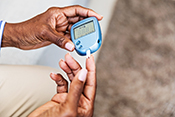 Photo: ©iStock/vitapix
Photo: ©iStock/vitapix
(06/08/2021)
Diabetes is linked to worse outcomes from COVID-19 infection, according to a VA Puget Sound study. Researchers looked at outcomes form nearly 36,000 VA patients who tested positive for COVID-19. Patients with diabetes had greater odds of hospitalization, intensive care unit admission, and death than patients without diabetes. Prior use of the diabetes medication sulfonylurea was linked to increased odds of hospitalization. Prior insulin use was linked to increased odds of both hospitalization and death. Statin use was associated with lower chance of death, and angiotensin receptor blockers (ARBs) were associated with lower odds of hospitalization. The results show that diabetes can increase the danger posed by COVID-19. (BMJ Open Diabetes Research and Care, June 2021)
Some VA therapists more effective than others at treating PTSD
 Photo: ©iStock/FatCamera
Photo: ©iStock/FatCamera
(06/08/2021)
Some therapists are more effective than others at keeping patients engaged in PTSD treatment, found a study by VA researchers. The study looked at data on nearly 3,000 therapists providing the psychotherapies cognitive processing therapy (CPT) or prolonged exposure (PE) to more than 18,000 VA patients with PTSD. Results showed that dropout rates varied by 11% for CPT and 6% for PE between different therapists. Whether or not patients received an adequate psychotherapy dose varied by as much as 9% for both therapies based on therapist. The VA facility where a patient received care accounted for only a 1% to 3% variance in dropout and adequate dose rates. The results show that therapist skill and work environment are important to the success of PTSD treatment, say the researchers. (Journal of Traumatic Stress, May 28, 2021)
COVID-19 vaccines largely effective in inflammatory bowel disease patients taking immunosuppressants
 Photo: ©iStock/Juanmonino
Photo: ©iStock/Juanmonino
(06/03/2021)
Vaccination against COVID-19 proved mostly effective in patients with inflammatory bowel disease, found a Michael J Crescenz VA Medical Center study. Clinical trials of COVID-19 vaccines mostly excluded patients taking immunosuppressive medication, which keep the immune system in check. The researchers studied outcomes for nearly 15,000 patients taking medication for inflammatory bowel disease. Full vaccination—meaning patients were at least a week past the second vaccine dose—showed 80% effectiveness against COVID-19. Unvaccinated patients in this population had a much higher rate of COVID-19 infection than vaccinated patients. Partial vaccination did not significantly reduce the hazard of infection. The results could help increase patient and provider willingness to vaccinate immunosuppressed patients, say the researchers. (Gastroenterology, May 25, 2021)
Depression and other conditions often co-occur
 Photo: ©iStock/Srdjanns74
Photo: ©iStock/Srdjanns74
(06/03/2021)
Veterans with depression often have other psychiatric conditions, according to a study by VA researchers and colleagues. Researchers surveyed nearly 3,000 Veterans receiving treatment for depression in VA. They found that almost all patients screened positive for at least one other mental health condition. About half had four or more conditions. The most common conditions were generalized anxiety disorder, PTSD, and panic/phobia. Results showed that depression severity plays a large role in impairment caused by other mental health conditions. The findings suggest that addressing depression could help improve symptoms of other mental health conditions, say the researchers. (Journal of Affective Disorders, April 27, 2021)
Affordable Care Act reduced catastrophic health costs for young Veterans
 Photo: ©iStock/hudiemm
Photo: ©iStock/hudiemm
(06/03/2021)
The Affordable Care Act reduced catastrophic health expenditure among young Veterans, found a study by VA Greater Los Angeles researchers. While some Veterans receive health care through VA, many get their health coverage outside the system. Researchers looked at health care costs for more than 13,000 Veterans receiving health care outside VA before and after the Affordable Care Act was passed. Catastrophic health expenditure was defined as health care costs of more than 10% of the yearly family income. They found that the Act was linked to a 26% decrease in the likelihood of a catastrophic health expenditure in Veterans aged 18 to 64. Veterans 65 and older did not see a similar reduction in catastrophic health care costs. The results highlight gaps in Veterans' financial protection based on age, say the researchers. (Journal of General Internal Medicine, May 6, 2021)
Most adult COVID-19 patients develop antibodies
 Image: ©iStock/wildpixel
Image: ©iStock/wildpixel
(05/27/2021)
Most adults with COVID-19 develop antibodies that stay in the body after infection, according to a review by VA Portland researchers. The researchers surveyed studies published on COVID-19 in 2020. They found that most adults had detectable levels of antibodies after infection with the SARS-CoV-2 virus. Levels of IgM, short-term antibodies that protect from initial infection, peak at about 20 days after infection and then decline. IgG—longer-term antibodies—levels peak about 25 days after symptom onset and remain detectable for at least 120 days. Some evidence suggests that older age, greater COVID-19 severity, and presence of symptoms may be linked to higher antibody levels. Some adults do not develop antibodies for unclear reasons. (Annals of Internal Medicine, March 16, 2021)
PTSD treatment more effective in patients with specific brain traits
 Image: ©iStock/johan63
Image: ©iStock/johan63
(05/27/2021)
VA San Diego researchers identified brain network traits that could predict which patients will see an improvement of PTSD symptoms from psychotherapy. The researchers took magnetic resonance imaging (MRI) scans of the brains of 53 patients with both PTSD and alcohol use disorder. They found that a subgroup of patients with specific brain connectivity traits were more likely than others to benefit from prolonged exposure therapy. They did not find any brain connectivity patterns related to alcohol consumption. The results could lead to treatments that target brain connectivity to boost treatment effectiveness, say the researchers. (Psychological Medicine, April 30, 2021)
Veterans more likely to use community care in rural areas
 Photo: ©iStock/JamesBrey
Photo: ©iStock/JamesBrey
(05/27/2021)
How rural the area is and the closeness of VA facilities affected how frequently Veterans used community health care, found a VA Boston study. In 2014, the Veterans Choice Act made it possible for some VA patients to receive health care in the community instead of from VA facilities. Researchers looked at data from over 3,000 counties across the country. Rural counties saw the greatest increase in community care use. Counties with a VA facility were less likely to see community care increases. The results suggest that community care may enhance primary care access for Veterans in areas farther away from VA facilities, according to the researchers. (Medical Care, June 1, 2021)
Brain connectivity disruption may explain poor social connection in PTSD patients
 Image: ©iStock/Naeblys
Image: ©iStock/Naeblys
(05/20/2021)
Poor social connection in people with PTSD may be related to abnormalities in brain structure, found a White River Junction VA study. Researchers looked at 31 participants with PTSD and 21 controls with trauma exposure but no PTSD. The PTSD group reported smaller social networks and greater loneliness. The researchers used magnetic resonance imaging (MRI) while participants performed a memory task involving social relationships. Imaging of the PTSD group during the memory task showed hyperactivation of the default network, the connection between different parts of the brain. MRI also revealed less functional connectivity between specific brain systems in the PTSD group. The results suggest that poor social connection in people with PTSD could be caused by disrupted brain connectivity, according to the researchers. (Depression and Anxiety, Feb. 23, 2021)
Cognitive behavioral therapy beneficial for dementia patients
 Photo: ©iStock/Enes Evren
Photo: ©iStock/Enes Evren
(05/20/2021)
Cognitive behavioral therapy could improve mood and insomnia in people with dementia, found a review by Michael E. DeBakey VA Medical Center researchers and colleagues. Cognitive behavioral therapy aims to improve mental distress by helping a person modify and control their thought processes. Researchers reviewed the available evidence on this approach for people with mild cognitive impairment and dementia. Multiple studies showed that cognitive behavioral therapy can improve anxiety, depression, and quality of life in these patients. Some evidence also suggests that the therapy can reduce insomnia and improve sleep quality. The results show a need for more study on cognitive behavioral therapy in dementia patients, especially with regard to insomnia, say the researchers. (Alzheimer's Disease and Associated Disorders, April 28, 2021)
High blood pressure could cause peripheral artery disease
 Photo: ©iStock/Ivan-balvan
Photo: ©iStock/Ivan-balvan
(05/20/2021)
Higher blood pressure is likely to cause peripheral artery disease, according to a study by VA researchers and colleagues. In peripheral artery disease, narrowed arteries reduce blood flow to the limbs. Researchers looked at genome-wide study data on blood pressure and cardiovascular disease. They found that higher pulse pressure and mean arterial pressure directly increase the risk of peripheral artery disease. Use of blood pressure medications such as beta-blockers and diuretics was linked to lower risk of peripheral artery disease. This suggests that medications that lower blood pressure protect against the disease. More research is needed to clarify how exactly blood pressure influences peripheral artery disease, say the researchers. (Arteriosclerosis, Thrombosis, and Vascular Biology, April 15, 2021)
Comparing different forms of transcranial magnetic stimulation
 Photo: ©iStock/Henrik5000
Photo: ©iStock/Henrik5000
(05/11/2021)
One form of transcranial magnetic stimulation may be better than another method at treating PTSD and depression, found a Providence VA study. In TMS, magnetic pulses are applied to the outside of the head to influence the electrical signals in the brain. It has been shown to help with both PTSD and major depressive disorder. The researchers compared two types of TMS, 5 Hz TMS and intermittent theta burst stimulation (iTMS), in 10 Veterans each with PTSD and depression. The treatments are similar but use different frequencies and duration. Both methods were safe and reduced PTSD and depression symptoms. However, Veterans who received iTMS reported poorer outcomes. Separate studies of iTMS showed similar outcomes to 5 Hz TMS when the iTMS exposure time was longer. The results could help clinicians choose the best form of TMS for their patients, say the researchers. (Journal of Traumatic Stress, May 11, 2021)
Gene therapy could prevent learning and memory loss from Alzheimer's disease
 Photo: ©iStock/Evgenyi_Eg
Photo: ©iStock/Evgenyi_Eg
(05/11/2021)
VA San Diego researchers and colleagues used gene therapy to prevent learning and memory loss in a mouse model of Alzheimer's disease. The researchers introduced a compound called AAV-SynCav1—a protein that can potentially activate mechanisms to prevent structural damage in the brain—into the hippocampus brain region of mice with deficits similar to Alzheimer's. The hippocampus is one of the first parts of the brain affected by Alzheimer's. At nine and 11 months after treatment, hippocampus-related learning and memory were preserved. Important membrane structures and receptors also remained intact in the treated mice, while control mice had damage. The results show the treatment has potential to restore brain plasticity and improve function in humans with Alzheimer's, according to the researchers. (Molecular Therapy, March 29, 2021)
Cannabis use disorder linked to aggression
 Photo: ©iStock/Olga Novikova
Photo: ©iStock/Olga Novikova
(05/11/2021)
Cannabis use disorder and aggression appear to be linked, according to a Durham VA study. Cannabis use disorder refers to addiction to the substance and negative social impacts of excessive use. Evidence suggests that some Veterans attempt to self-medicate with cannabis for conditions such as PTSD. The researchers studied cannabis use and psychological factors for more than 3,000 Iraq/Afghanistan-era Veterans. They found that cannabis use disorder was associated with increased odds of difficulty managing anger, aggressive impulses, and problems controlling violence. The study could not determine whether cannabis use disorder causes aggression, or whether people with more aggressive tendencies were more likely to develop the disorder. The results show a need to assess violent tendencies along with cannabis use disorder, say the researchers. (Journal of Psychiatric Research, April 22, 2021)
Combined PTSD, substance use disorder lead to worse social well-being
 Photo: ©iStock/PeopleImages
Photo: ©iStock/PeopleImages
(04/27/2021)
Veterans with both PTSD and substance use disorder face significant social problems, found a Durham VA study. Researchers analyzed data on social functioning for more than 1,000 Veterans. Those with both PTSD and SUD were particularly likely to experience homelessness, violent behavior, and suicidal behavior. Veterans with both conditions were more likely to report worse social well-being, compared to those with only PTSD, only SUD, or neither disorder. Veterans with both conditions were also more likely to have worse job and financial well-being. The findings suggest that multiple aspects of well-being should be assessed together in Veterans with PTSD and SUD, according to the researchers. (Psychological Trauma, March 4, 2021)
Cognitive and motor performance linked in stroke recovery
 Image: ©iStock/peterschreiber.media
Image: ©iStock/peterschreiber.media
(04/27/2021)
Cognitive function affects physical motor performance after stroke, according to a study by Providence VA researchers and colleagues. The study assessed how 50 patients recovering from stroke did on two arm movement tasks. Patients performed worse on the more cognitively demanding task, especially immediately after their strokes. Poorer performance on the more complex test was linked to broad injury beyond the parts of the brain involved with movement, while performance on the simpler task was mostly linked to injury of the brain regions related to motor function. The results show that motor ability and cognitive function must be considered together when treating stroke patients, say the researchers. (Neurology, April 15, 2021)
Transportation an important barrier to colorectal cancer care
 Photo: ©iStock/Kichigin
Photo: ©iStock/Kichigin
(04/27/2021)
Transportation is an important barrier to colorectal cancer care, found a study by Durham VA researchers. Researchers surveyed 115 Veterans with colorectal cancer. Of those, 18% said they had transportation barriers that made accessing care difficult. Their distance from a VA facility was not strongly linked to transportation difficulty. Rather, a chaotic lifestyle was the largest cause of transportation barriers. Chaotic lifestyle mainly means that patients have an unpredictable schedule. Identifying Veterans with chaotic lifestyles could allow for timely intervention to improve their cancer care, say the researchers. (BMC Health Services Research, April 13, 2021)
COVID-19 'long-haulers' face increased risk of death and many other health problems
 Photo: ©iStock/MilosStankovic
Photo: ©iStock/MilosStankovic
(04/26/2021)
A large VA study showed that people who have had COVID-19 are at heightened risk of both death and many other health problems. In the largest post-acute COVID-19 study to date, VA Saint Louis Health Care System researchers characterized many potential long-term consequences of COVID-19. The researchers looked at outcomes on more than 73,000 VA patients who survived COVID-19 and close to 5 million who did not contract the disease. The COVID-19 group had a higher risk of dying six months after diagnosis. People who have recovered from COVID-19 also are at increased risk of health problems affecting virtually every organ system in the body, not just the lungs. About 8% to 10% of people affected by COVID-19 will likely have long-term effects, according to the researchers. (Nature , April 22, 2021)
Inflammation linked to Alzheimer's disease risk
 Photo: ©iStock/digicomphoto
Photo: ©iStock/digicomphoto
(04/21/2021)
Inflammation in the brain is linked to greater Alzheimer's disease risk, found a VA San Diego study. Researchers analyzed the cerebrospinal fluid and performed cognitive testing on 81 cognitively normal older adults and 137 with mild cognitive impairment. In the cognitive impairment group, those with biomarkers for vascular inflammation also had increased levels of tau proteins, which have been linked to Alzheimer's. Higher levels of tau protein were associated with poorer memory performance in the cognitive impairment group only. However, in the cognitively normal group, participants with lower pulse pressure who had greater inflammation showed signs of lower burden of amyloid-beta, an amino acid also linked to Alzheimer's. The findings suggest that pulse pressure and inflammation have a complex effect on markers of Alzheimer's disease, say the researchers. (Journal of Alzheimer's Disease, March 4, 2021)
Non-suicidal self-injury linked to suicide attempts
 Photo: ©iStock/ligonpix
Photo: ©iStock/ligonpix
(04/21/2021)
Non-suicidal self-injury disorder is strongly linked to suicide attempts among Veterans, found a study by Durham VA researchers and colleagues. The study looked at more than 100 Veterans with at least one mental health disorder. Forty-eight percent had a diagnosis of non-suicidal self-injury disorder. Suicide attempts were reported in 28% of the participants. Those with non-suicidal self-injury disorder were nearly five times more likely to have a suicide attempt than those without. The results show that understanding the link between self-injury and suicide could improve prevention, say the researchers. (Journal of Affective Disorders, March 15, 2021)
Older adults show low physical activity in and out of nursing facilities
 Photo: ©iStock/Dean Mitchell
Photo: ©iStock/Dean Mitchell
(04/21/2021)
Older adults in skilled nursing facilities showed low physical activity both during and after their stays, according to a study led by an Eastern Colorado VA researcher. The study followed patients during the last few days of their stay at a skilled nursing facility and a few days after discharge. Participants spent a median of 12% of their time in the facility and 17% at home standing upright. The number of steps taken per day was very low and did not increase much when patients returned home. Patients thought that they were more physically active than they actually were. The results highlight the need to encourage physical activity both in and out of skilled nursing facilities, say the researchers. (Disability and Rehabilitation, April 9, 2021)
Higher risk of suicidal thoughts in American Indian, Alaska Native Veterans
 Photo: ©iStock/grandriver
Photo: ©iStock/grandriver
(04/14/2021)
American Indian and Alaska Native (AI/AN) Veterans have more than twice the risk of suicidal thoughts compared to white Veterans, found a VA Salt Lake City study. Researchers looked at data from two large national surveys. In the Behavioral Risk Factor Surveillance System, 9.1% of AI/AN Veterans reported suicidal thoughts, compared with 3.5% of white Veterans. In the National Survey on Drug Use and Health, 8.9% of AI/AN Veterans reported suicidal thoughts, compared with 3.7% of white Veterans. Suicide prevention efforts in collaboration with these communities are needed, conclude the researchers. (Military Psychology, April 8, 2021)
Veterans open to firearms safety discussions in primary care to prevent suicides
 Photo: ©iStock/KarenMower
Photo: ©iStock/KarenMower
(04/14/2021)
Veterans are open to discussing firearms safety in primary care, according to a study by VA Portland researchers and colleagues. More than half of Veterans who die by suicide visit their primary care provider a month before their death. The researchers surveyed 27 Veterans with depression and PTSD. All participants received health care through VA. The majority felt that discussing firearms safety was acceptable and needed, even if discussions were uncomfortable. They cited the urgent need to prevent Veteran suicide for this feeling. The Veterans identified the need for providers to be transparent in their reasons for asking about firearms and to respect Veterans' unique relationships with firearms. The findings show that a Veteran-focused approach to firearms safety could help address Veteran suicide, say the researchers. (Journal of the American Board of Family Medicine, March–April 2021)
PTSD symptoms linked to unhealthy diet
 Photo: ©iStock/wildpixel
Photo: ©iStock/wildpixel
(04/14/2021)
Veterans with PTSD symptoms often have a more unhealthy diet than those without PTSD, found a VA National Center for PTSD study. Researchers assessed more than 800 Veterans twice during a three-year period. They found that trauma exposure directly predicted diet quality. Participants with greater PTSD symptoms at baseline were more likely to have a poor diet, compared to those without PTSD symptoms. The findings suggest that consuming unhealthy food was driven by emotional suppression. The researchers did not find any link between PTSD symptoms and amount of exercise. The results could help treat medical comorbidities in patients with PTSD, say the researchers. (European Journal of Psychotraumatology, March 2021)
Feelings of anger often lead to self-injury
 Photo: ©iStock/ananaline
Photo: ©iStock/ananaline
(04/06/2021)
Feelings of anger and hostility often lead to self-injury, found a study by Durham VA researchers. Forty Veterans diagnosed with nonsuicidal self-injury disorder completed an electronic diary for 28 days. During the time period, 9% of participants reported self-injury, and 19% said they had the urge to self-injure. The most common type of self-injury was punching walls or objects. Momentary feelings of anger or hostility were linked to subsequent self-injury urges. The reverse was not true: self-injury did not lead to feelings of anger. The results highlight the need to assess and treat patients who self-injure for anger issues, say the researchers. (Journal of Psychiatric Research, March 2021)
Stem cell therapy offers potential treatment for ischemia
 Image: ©iStock/luismmolina
Image: ©iStock/luismmolina
(04/06/2021)
Stem cells may be an effective treatment for life-threatening ischemia, according to a mouse study led by a VA Connecticut researcher. Ischemia is when an organ does not get enough blood, which can cause serious organ problems. Researchers treated ischemic mice with smooth muscle cells derived from pluripotent stem cells that had been grown in a lab. Pluripotent stem cells are base cells that can be reprogramed to form into different types of body cells. Treated mice had improved functional outcomes and blood flow, compared with controls. They also showed signs of improved wound healing. The results show that stem-cell therapy has potential to effectively treat ischemia in humans, say the researchers. (Cells, April 2, 2021)
Peer-led program leads to better Veteran engagement and well-being
 Photo: ©iStock/Georgijevic
Photo: ©iStock/Georgijevic
(04/06/2021)
A peer-led program resulted in greater Veteran health care engagement and well-being, found a study by VA Bedford researchers and colleagues. Forty-eight Veterans took part in a group-led VA program called Taking Charge of My Life and Health. The nine-week program used peer support to improve patient engagement and health by teaching whole health concepts and strategies. Participants had a significant decrease in perceived stress. They also showed significant improvements in mental health and quality of life. Patients were more engaged with their health care after the program. The findings suggest that using peers to guide patients in exploring their values and goals can improve their health and engagement, say the researchers. (Journal of Alternative and Complementary Medicine, March 2021)
Black patients face credibility bias
 Photo for illustrative purposes only. ©iStock/monkeybusinessimages
Photo for illustrative purposes only. ©iStock/monkeybusinessimages
(03/31/2021)
Black patients may face systemic bias in physicians' perceptions of their credibility, according to a study that included a VA Portland researcher. The researchers identified three linguistic features that may indicate disbelief in medical notes: putting patient statements in quotation marks, using judgment words such as "claims" or "insists," and reporting patients' symptoms and experiences as hearsay. They then used machine learning to look for these features in more than 9,000 medical notes. Notes written about Black patients were more likely to contain all three signs of disbelief, compared with notes on white patients. Notes about female patients were more likely than male patient notes to contain quotes. The results suggest that Black patients are less likely to be believed when they describe their symptoms or experiences, say the researchers. (Journal of General Internal Medicine, March 22, 2021)
Challenges of providing telehealth care
 Photo: ©iStock/nensuria
Photo: ©iStock/nensuria
(03/31/2021)
A study of VA nurse practitioners and patients identified challenges of using telehealth for care. Nurses identified several logistical problems that made providing care over video more difficult. They noted the complexity of scheduling appointments, local barriers to care, and difficulty of remotely managing acutely ill patients. The nurses surveyed also said that it is harder to gather sensory data during remote visits. Video makes it harder to build provider-patient relationships, as well. Patients were aware of the limitations on physical exams but not the logistical challenges. Training videos and mentoring on best practices could improve the telehealth experience, according to the researchers. (Journal of Nurse Practitioners, March 20, 2021)
Process behind kidney stone formation
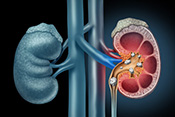 Image: ©iStock/wildpixel
Image: ©iStock/wildpixel
(03/31/2021)
Researchers with the VA Calcium Signaling Laboratory explored how a disease called acidosis can lead to the formation of kidney stones. A region of the kidney called the proximal tubule helps control the acid-base balance in the blood. Acidosis is when acids are not properly removed from the blood into the urine by the proximal tubule. In addition to causing problems with the blood, acidosis causes the urine to become more alkaline. The researchers used a mouse model of this condition to study how this shift may lead to kidney stones. They found that the shift in urine pH causes a build-up of calcium ions, which may form into stones. Dysregulation of the proximal tubule can also cause cell damage, which further leads to stone formation when damaged cellular fragments bind with calcium crystals. The results improve the understanding of the biological processes behind kidney stones, say the researchers. (International Journal of Molecular Sciences, March 17, 2021)
Mild traumatic brain injury and PTSD frequently occur together
 Photo: ©iStock/SDI Productions
Photo: ©iStock/SDI Productions
(03/23/2021)
Mild traumatic brain injury and PTSD are strongly linked in Veterans, according to a VA study. Researchers assessed more than 1,500 former and current military personnel with a history of combat exposure. Eighty-two percent had a history of mild TBI. Of those, 41% also screened positive for PTSD. Only 24% of participants without a history of TBI had PTSD. Mild TBI was a good predictor of more severe neurological symptoms related to PTSD. The results suggest that TBI and PTSD should be evaluated and treated together in Veterans and service members who experienced combat, say the researchers. (Journal of Head Trauma Rehabilitation, Feb. 22, 2021)
Morphine could improve heart function in diabetic patients
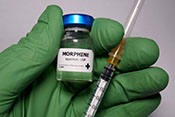 Photo: ©iStock/Hailshadow
Photo: ©iStock/Hailshadow
(03/23/2021)
Morphine could help restore heart function damaged by diabetes, found a study by VA San Diego researchers. Diabetes can increase the risk of serious heart problems, largely through increased obesity risk. Opioids are known to aid in cardiac stress tolerance, but diabetes disrupts how the body responds to opioids. The researchers tested a five-day, high-dose morphine treatment in a mouse model of type 2 diabetes. The treatment improved blood pressure stability, reversed cardiac depression, and improved heart function. It also restored impaired molecular heart processes. The findings suggest that short-term, high-dose morphine could help diabetic patients recover from acute cardiovascular events, say the researchers. (FASEB J, March 2021)
Addiction possibly linked to brain asymmetry
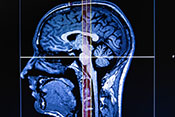 Photo: ©iStock/CasarsaGuru
Photo: ©iStock/CasarsaGuru
(03/23/2021)
Addiction may be linked to brain asymmetry, found a large international study that included a VA San Diego researcher. The researchers analyzed brain scans of nearly 1,800 patients who were dependent on alcohol, nicotine, cocaine, methamphetamine, or cannabis. They compared them to scans of almost 1,000 patients without substance dependence. The results showed that addiction was significantly linked to asymmetry of the nucleus accumbens, a region in the lower middle of the brain. The right side of the nucleus accumbens was smaller in patients with substance dependence. This effect was largest in patients with alcohol and nicotine dependence. More research is needed on whether substance use causes the brain asymmetry, or whether the asymmetry increases the risk of addiction, according to the researchers. (Addiction Biology, Jan. 28, 2021)
Increasing physical distance in schools not linked to fewer COVID-19 cases
 Photo: ©iStock/izusek
Photo: ©iStock/izusek
(03/17/2021)
Maintaining three feet versus six feet of physical distance between students did not affect COVID-19 case rates, found a study by VA Boston researchers and colleagues. Researchers looked at COVID-19 infection data for nearly 540,000 students and more than 99,000 staff attending in-person schools in the Massachusetts public school system. They found that the infection rate was similar in districts with policies requiring three feet of physical distance, compared with districts requiring six feet. Increasing physical distance may not be necessary to prevent COVID-19 cases in schools, concluded the researchers, provided that universal mask mandates and other precautions are implemented. (Clinical Infectious Diseases, March 10, 2021)
Moral injury increases Veteran suicide risk
 Photo: ©iStock/Drazen Zigic
Photo: ©iStock/Drazen Zigic
(03/17/2021)
Morally injurious experiences are linked to increased risk of suicidal behavior, found a VA study of more than 1,000 Veterans. Moral injury experienced during deployment includes perpetrating, failing to prevent, witnessing, or learning about acts that transgress deeply held moral beliefs. Of the Veterans surveyed, 36% had at least one morally injurious experience. Reports of transgressions by others and feelings of betrayal were more common than personal transgressions. These experiences were linked with a higher risk of suicidal thoughts, making a suicide plan, and suicide attempts. While the effect of moral injury on suicidal behavior was significant, PTSD and depression had greater effects on suicide risk. The results show that more work to evaluate and address moral injury in Veterans is needed, say the researchers. (Depression and Anxiety, March 5, 2021)
Rural Veterans may have less access to lung cancer screenings
 Photo: ©iStock/mustafagull
Photo: ©iStock/mustafagull
(03/17/2021)
Access to lung cancer screening varies widely based on location in the Veterans Health Administration, found a study by VA Bedford researchers. The researchers looked at data on screening exams at VA facilities and partner sites over a six-year period. They found that screening numbers varied by more than 30-fold across different regions. Screenings were particularly low in more rural locations. Nine of the 12 states with the highest proportions of rural Veterans had three or fewer lung cancer screening facilities. The findings indicate that VA needs to make efforts to provide more equitable access to lung cancer screening, according to the researchers. (Chest, Feb. 19, 2021)
Meditation program may reduce nursing burnout
 Photo: ©iStock/insta_photos
Photo: ©iStock/insta_photos
(03/09/2021)
An online mantram meditation program could help nurses with stress management and lead to improved patient care, according to a Edward Hines, Jr. VA Hospital study. Nurses often experience high levels of stress and burnout, which has been exacerbated by the COVID-19 pandemic. Registered nurses working in VA acute care units participated in an online mantram repetition program to learn stress coping skills. The program involved repeating a spiritually meaningful word or phrase, called a mantram, to slow down one's thoughts and refocus. Nurses who participated in the program reported increased mindfulness, spiritual well-being, and presence while with patients. They also experienced less burnout. Patients being treated by participating nurses noticed greater levels of presence from nurses and were highly satisfied with their care. The results suggest that portable stress reduction techniques can help alleviate nursing burnout, say the researchers. (Nursing Outlook, Feb. 8, 2021)
Traumatic brain injury increases sleep disorder risk
 Photo: ©iStock/amenic181
Photo: ©iStock/amenic181
(03/09/2021)
Veterans with traumatic brain injury have an increased risk of developing sleep disorders, found a study by San Francisco VA researchers. The study included data from nearly 200,000 Veterans over a 14-year period. Veterans who had a TBI were 41% more likely to develop a sleep disorder, compared with Veterans with no TBI history. The association between sleep disorders and TBI was most common in mild TBIs, or concussions. Sleep disorders seen in this population included sleep apnea, insomnia, excessive sleepiness during the day, and sleep-related movement disorders. The findings show that better prevention and long-term management for sleep are needed for Veterans with TBI, say the researchers. (Neurology, March 3, 2021)
MRI could help detect early Alzheimer's
 Photo: ©iStock/utah778
Photo: ©iStock/utah778
(03/09/2021)
Magnetic resonance imaging (MRI) of the locus coeruleus brain region could aid in early detection of Alzheimer's disease, according to a study of Vietnam-era male Veterans. The locus coeruleus is a structure in the brainstem involved in the sleep-wake cycle and in cognitive function. It is known to undergo extensive degeneration during Alzheimer's progression. Researchers assessed cognitive function and MRI scans in nearly 500 older Veterans. They found that reduced locus coeruleus integrity was linked to sleep dysfunction, poorer memory, and greater odds of mild cognitive impairment. The results suggest that assessing locus coeruleus structural integrity with MRI could be used as an early measure of Alzheimer's risk, according to the researchers. (Alzheimer's and Dementia, Feb. 13, 2021)
Height loss linked to higher hip fracture risk in older men
 Photo: ©iStock/RealPeopleGroup
Photo: ©iStock/RealPeopleGroup
(03/03/2021)
Height loss in elderly men is associated with a higher risk of hip fracture, found a study by Minneapolis VA researchers and colleagues. Losing height is common in older adults as age-related changes in the bones, muscles, and joints occur. The researchers studied a sample of nearly 3,500 older men. They found that men who had lost at least three centimeters in height over a period of seven years had nearly double the risk of a hip fracture, compared with those who lost less than a centimeter in height. Men who lost at least three centimeters had an 11.6% chance of a hip fracture. Those losing less than a centimeter had a 2.7% chance of hip fracture. The risk of other bone fractures was also higher in men who had lost height. The results suggest that height loss should be considered when assessing fracture risk, say the researchers. (Journal of Bone and Mineral Research, Feb. 22, 2021)
Simulating feeling in amputated feet
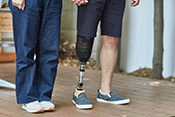 Photo: ©iStock/xavierarnau
Photo: ©iStock/xavierarnau
(03/03/2021)
Researchers with the VA Advanced Platform Technology Center were able to simulate foot sensations in patients with lower-limb amputations using electrodes. People with lower-limb amputation often experience postural instability because of missing sensory information from the foot. Researchers simulated sensation in patients missing a foot due to amputation during standing using implanted electrodes. They compared the patients' reactions to how they reacted to vibrations felt in the intact foot. Participants adjusted their posture in much the same way in both situations. This told the researchers that the participants perceived the electrical stimulation as if it were coming from the missing foot. The results could lead to using electrical stimulation to provide sensory feedback when walking with a leg prosthesis and improve gait stability, according to the researchers. (Frontiers in Neuroscience, Feb. 18, 2021)
Kidney transplant patients have lower risk of death when receiving VA care
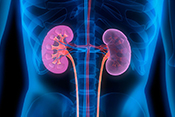 Image: ©iStock/peterschreiber.media
Image: ©iStock/peterschreiber.media
(03/03/2021)
Risk of death after a kidney transplant was significantly lower in patients whose post-surgery care was through VA, compared to those cared for outside VA, found a study by VA Pittsburgh researchers. The study focused on data from over 6,000 Veterans enrolled in both VA health care and Medicare. Of those, 16% had a kidney transplant at a VA hospital. Out of all kidney transplant patients, 12% received their post-transplant care from VA only, while 34% received care only at non-VA hospitals through Medicare. The remaining 54% used both VA and non-VA care. Patients who used only non-VA post-transplant care were more than twice as likely to die within five years of their surgery, compared with patients who used VA only. Compared with VA-only patients, patients who used both VA and Medicare were 1.5 times more likely to die within five years. The results show the need to monitor patient outcomes for Veterans receiving care outside VA, say the researchers. (Clinical Journal of the American Society of Nephrology, Feb. 18, 2021)
Quitting smoking linked to less pain
 Photo: ©iStock/Sezeryadigar
Photo: ©iStock/Sezeryadigar
(02/23/2021)
Quitting smoking was linked to significantly lower pain levels, in a VA study. Researchers studied data on nearly 2,000 Veterans who smoked an average of 15 cigarettes a day and had chronic pain. Participants were involved in a program of proactive outreach to help them quit smoking. At six and 12 months after the program, researchers asked participants whether they had smoked in the last seven days. Participants at all pain levels who had stopped smoking had significantly less pain at the six-month check-in. After 12 months, participants with severe pain had lower pain. The results show that abstinence from smoking may lower pain levels, according to the researchers. (Pain Medicine, Jan. 27, 2021)
Transgender Veterans at high risk of suicide
 Photo: ©iStock/AlxeyPnferov
Photo: ©iStock/AlxeyPnferov
(02/23/2021)
Transgender Veterans are at an elevated risk of suicide, found a study of more than 32,000 Veterans. Researchers assessed VA data from a 17-year period. They found that transgender patients had more than twice the risk of suicide, compared with cisgender patients—those whose gender identity matches their sex assigned at birth. This difference was especially pronounced among younger (18-39 years) and older (65 and older) patients. Overall, transgender patients had slightly lower risk of death from any cause, compared with cisgender patients. The results highlight an urgent need for more efforts to prevent suicide among transgender patients, say the researchers. (LGBT Health, Feb. 5, 2021)
Secure messaging changes how Veterans access health care
 Photo: ©iStock/katleho Seisa
Photo: ©iStock/katleho Seisa
(02/23/2021)
Secure messaging decreased in-person health care visits and increased telephone visits, according to a study of VA health care use. Secure messaging allows patients and health care providers to send messages back and forth online while protecting patient information. Researchers looked at how use of secure messaging on VA's MyHealtheVet patient portal affected health care usage in 2016. In-person health care visits decreased by 16% for secure messaging users and 10% for users who did not use secure messaging. Telephone visits increased by 11% for secure messaging users and 7% for non-users. The results show that secure messaging could improve clinic appointment availability, say the researchers. They also point out that secure messaging will likely increase providers' time commitments for not-traditional forms of access. (Journal of General Internal Medicine, Feb. 2, 2021)
Anticoagulants could lower COVID-19 mortality risk
 Photo: ©iStock/kovop58
Photo: ©iStock/kovop58
(02/16/2021)
Anticoagulation medication could lower the risk of death from COVID-19, according to a study by VA researcher and colleagues. The study looked at data on more than 4,000 patients hospitalized with COVID-19. Most of the patients were given medication to prevent blood clots. Results show that patients given the medication had a 27% lower risk of dying from COVID-19 within 30 days of hospitalization, compared with patients not receiving anticoagulants. Anticoagulant use was not associated with serious bleeding events. The findings provide strong evidence for the use of anticoagulants as an initial treatment for COVID-19, say the researchers. (BMJ, Feb. 11, 2021)
Recovery needs after suicide attempt vary by gender
 Photo: ©iStock/Marjan_Apostolovic
Photo: ©iStock/Marjan_Apostolovic
(02/16/2021)
Men and women have different needs when recovering from a suicide attempt, found a study by VA Portland researchers and colleagues. Researchers interviewed 25 female and 25 male Veterans who had attempted suicide but survived. When talking about their recovery needs, women focused on developing connections with others and wanting to increase their self-knowledge and self-worth. Men were more concerned with trying to live up to their ideal selves by living and doing "right." Men also wanted to feel like they were needed by others. Both men and women said they wanted to feel a sense of purpose. The results suggest that patients who attempt suicide could benefit from gender-specific treatment approaches, according to the researchers. (Medical Care, Feb. 1, 2021)
Temporary financial assistance helps homeless Veterans find stable housing
 Photo: ©iStock/turk_stock_photographer
Photo: ©iStock/turk_stock_photographer
(02/16/2021)
Temporary financial assistance increases the likelihood of homeless Veterans finding stable housing, found a VA study. Researchers looked at data on nearly 42,000 Veterans experiencing homelessness who were enrolled in the VA Supportive Services for Veteran Families program. About 70% of those Veterans received temporary financial assistance for housing-related expenses. In total, 81% of Veterans in the program achieved stable housing. Veterans who received financial assistance were significantly more likely to find stable housing. Receiving more financial assistance led to a greater chance of finding stable housing. The results suggest that providing temporary financial assistance may be an effective way to address Veteran homelessness, say the researchers. (JAMA Network Open, Feb. 1, 2021)
Unexpected or morally questionable combat experiences increase suicide risk
 Photo: ©iStock/Rockfinder
Photo: ©iStock/Rockfinder
(02/10/2021)
A study by VA Puget Sound researchers and colleagues identified specific combat experiences that may be linked with increased suicide risk in service members. Researchers looked at data on nearly 58,000 service members. Any combat exposure did not increase suicide risk. However, high combat severity and specific events were associated with the chance of suicide attempts. In particular, being attacked or ambushed, seeing dead bodies or human remains, and being directly responsible for the death of a noncombatant significantly increased a service member's risk of suicide. This connection was often mediated by PTSD. The results suggest that clinicians should inquire about the nature of combat experiences when assessing service members for suicide risk, say the researchers. (JAMA Network Open, Feb. 1, 2021)
Back and neck pain common after upper-limb amputation
 Photo: ©iStock/Aleksej Sarifulin
Photo: ©iStock/Aleksej Sarifulin
(02/10/2021)
Back and neck pain is common in Veterans with upper-limb amputations, found a Providence VA Medical Center study. People with an upper-limb amputation may experience back and neck pain because they change the way they move to compensate for the missing limb. Researchers evaluated nearly 800 Veterans with upper-limb amputation for pain. They found that 61% had back pain and 48% had neck pain. About 52% of respondents had both back and neck pain. Persistent pain was associated with lower quality of life. The findings show that additional pain prevention and intervention are needed in Veterans with amputation, according to the researchers. ( American Journal of Physical Medicine and Rehabilitation, Jan. 11, 2021)
Bacteria immunization may improve stress response
 Image: ©iStock/wildpixel
Image: ©iStock/wildpixel
(02/10/2021)
Immunization with M. vaccae bacteria could improve the body's response to stress, according to a study led by a VA Rocky Mountain MIRECC researcher. Mycobacterium vaccae is a bacterium derived from soil. It has been shown to have anti-inflammatory and immune regulation properties. Researchers immunized mice with M. vaccae to study its effects on the stress response. The bacterium stabilized the gut microbiome in the mice. This in turn led to a more proactive behavioral response to stress exposure through the connection between the gut and the brain. The immunization also appeared to promote stress resilience. The results suggest that M. vaccae could be used to improve negative reactions to stress. (Frontiers in Physiology, Jan. 5, 2021)
Veterans with ALS at high suicide risk
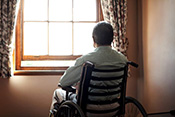 Photo: ©iStock/shapecharge
Photo: ©iStock/shapecharge
(02/02/2021)
Veterans with amyotrophic lateral sclerosis (ALS) are at high risk for suicide, according to a VA Rocky Mountain Mental Illness Research Education and Clinical Center study. ALS is a disease that affects nerve cells in the brain and spinal cord, causing muscle weakness and an increasing loss of function. There is no cure. Researchers looked at data on more than 7,000 Veterans with ALS and 1.5 million without. They found that Veterans with ALS had nearly four times higher risk of suicide. The most common means of suicide was with a firearm. The results show a need for additional efforts to prevent suicide in Veterans with ALS, according to the researchers. (Muscle and Nerve, Jan. 20, 2021)
Technology-based physical activity therapy for COPD cost-effective
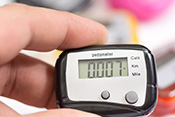 Photo: ©iStock/Antic Zlatko
Photo: ©iStock/Antic Zlatko
(02/02/2021)
A technology-based physical activity therapy is cost-effective for chronic obstructive pulmonary disease (COPD), found a VA study. Regular physical activity is recommended for patients with COPD. COPD patients were given either a pedometer alone, or a pedometer along with website-based support. The website provided goal-setting, feedback, motivation, and support. Researchers assessed cost-effectiveness by comparing cost per quality-adjusted life years, a measure of disease burden. Cost of both interventions fell below participants' willingness to pay for better quality of life. The results show that a technology-based approach to physical activity can directly benefit COPD patients. (American Journal of Respiratory and Critical Care Medicine, Dec. 23, 2020)
Study: Shock waves can cause structural brain damage
 Image: ©iStock/4X-image
Image: ©iStock/4X-image
(02/02/2021)
A study by VA researchers and colleagues using a mouse model provides new insights into how the brain is affected by shock waves from explosions. Researchers measured shock wave pressure and velocity during a simulated explosion experiment. The measurements will help researchers better understand how much force is absorbed by the brain during a shockwave. Mice exposed to low-intensity blasts showed signs of structural damage to the cells of the brain. Researchers found abnormalities in cell mitochondria, axons, and synapses. The findings provide new data on how blast exposure can cause traumatic brain injury, say the researchers. (Military Medicine, Jan. 25, 2021)
Identifying chronic cough with natural language processing
 Photo: ©iStock/AaronAmat
Photo: ©iStock/AaronAmat
(01/26/2021)
Natural language processing can identify chronic cough through patient records, found a study by a Richard L. Roudebush VA Medical Center researcher and colleagues. Chronic cough was defined as a cough lasting eight or more weeks. Chronic cough is difficult to identify in electronic health records because of incomplete diagnostic codes. Researchers used natural language processing, a form of machine learning that looks at written health care notes, to study more than 200,000 appointments. More than 20,000 of those patients had chronic cough. Natural language processing was able to identify chronic cough in 74% of these patients. Looking at diagnoses or prescriptions alone identified only 15% of chronic cough cases. Natural language processing could be a useful tool in treating unrecognized chronic coughs, according to the researchers. (Chest, Dec. 17, 2020)
Timed muscle stimulation makes wheelchair use easier
 Photo: ©iStock/ljubaphoto
Photo: ©iStock/ljubaphoto
(01/26/2021)
Stimulating trunk and hip muscles at the right time can improve manual wheelchair propulsion, found a VA Advanced Platform Technology Center study. Researchers used an accelerometer attached to a manual wheelchair user's wrist to time the two main phases of propulsion: contact and recovery. Using this data, they were able to time stimulation of trunk and hip muscles to assist in the movements. With properly timed stimulation, the wheelchair user had improved acceleration and reported that pushing the wheelchair was easier. The findings show that a simple accelerometer can detect wheelchair user movements. These measurements can improve muscle stimulation and make wheelchair use easier, say the researchers. (American Journal of Physical Medicine and Rehabilitation, Jan. 11, 2021)
Stepped care treatment model improves knee osteoarthritis
 Photo: ©iStock/thebigland88
Photo: ©iStock/thebigland88
(01/26/2021)
A stepped care model could be an effective way of delivering exercise therapy to patients with knee osteoarthritis, according to a Durham VA study. In a stepped care model, patients move through different steps if initial treatment is not effective. In the knee osteoarthritis program, step 1 is three months of an internet-based exercise program. If patients do not have pain improvement, they proceed to step 2, three months of biweekly physical activity coaching phone calls. Those who advance to step 3 receive in-person physical therapy visits. In a group of 230 patients, 65% progressed to step 2 and 35% progressed to step 3. After nine months, patients in the step program had modest improvements in knee osteoarthritis symptoms, compared to a control group. The results show that the stepped care model could be an efficient therapy method for osteoarthritis, say the researchers. (Annals of Internal Medicine, Dec. 29, 2020)
Potential new medication for treating COVID-19
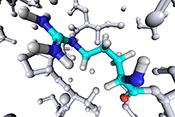 Photo: ©iStock/shunyufan
Photo: ©iStock/shunyufan
(01/21/2021)
A team led by a Jesse Brown VA Medical Center researcher created a potential new medication to treat COVID-19. The virus behind COVID-19 binds with an enzyme in the body called ACE2, which allows it to enter human cells. The researchers designed a peptide (a chain of amino acids) that blocks ACE2 from binding with the spike proteins on the outside of the virus. They gave the new peptide to mice with symptoms that mimic COVID-19 as a nasal spray. The spray reduced fever, protected the lungs, and improved heart function and the mice's movement. The results could lead to an important new treatment for COVID-19, according to the researchers. (Journal of Neuroimmune Pharmacology, Jan. 11, 2021)
Sleep coach program improves insomnia
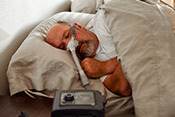 Photo: ©iStock/grandriver
Photo: ©iStock/grandriver
(01/21/2021)
A program combining cognitive behavioral therapy and positive airway pressure can improve insomnia, found a study by VA researchers and colleagues. Patients with both insomnia and obstructive sleep apnea participated in weekly sessions with a "sleep coach," along with using a C-PAP machine. The sleep coach used cognitive behavioral therapy, a psychotherapy focused on dealing with distressful thoughts, to provide support on several sleep-related behaviors, such as stimulus control and relaxation techniques. A C-PAP uses air pressure to improve the user's breathing during sleep. Patients receiving the coaching showed greater improvement in sleep quality, compared with a control group. They also more frequently used their C-PAP machines. The results show that the program can improve both C-PAP adherence and insomnia, say the researchers. (Sleep, Nov. 21, 2020)
Cognitive impairment common in homeless adults
 Photo: ©iStock/LordHenriVoton
Photo: ©iStock/LordHenriVoton
(01/21/2021)
Cognitive and functional impairments are common among homeless adults, found a study by VA San Diego researchers. One hundred participants staying at a homeless shelter completed a neurological assessment. Overall, 65% of participants had signs of cognitive impairment. About 30% had impaired processing speed, and 11% met the criteria for cognitive disability. Of the total sample, 48% were assessed with functional impairment, meaning cognitive problems made carrying out functions of their daily lives difficult. Poorer cognitive performance was linked to greater functional impairment. The results underscore the need for routine cognitive screening as part of homelessness services, say the researchers. (Psychiatric Services, Jan. 5, 2021)
Frailty increases the risk of death after surgery
 Photo: ©iStock/Satyrenko
Photo: ©iStock/Satyrenko
(01/14/2021)
Frailty raises the risk of death after most types of surgery, found a study by VA researchers. Frailty refers to increased vulnerability and weakness associated with aging. Researchers analyzed data on outcomes after surgery in nine non-cardiac specialties. They found that frail patients had a significantly higher risk of dying compared to non-frail patients, regardless of the type of surgery. This held true for low-intensity procedures such as plastic surgery, moderate-intensity surgeries such as neurosurgery, and high-intensity operations like vascular surgery. The results suggest that frailty should be assessed before surgery across all specialties, according to the researchers. (JAMA Surgery, Nov. 18, 2020)
Patients with kidney disease have mixed results on blood thinners
 Photo: ©iStock/Hailshadow
Photo: ©iStock/Hailshadow
(01/14/2021)
Beginning blood thinners for patients with kidney disease and atrial fibrillation has both benefits and problems, according to a study by Memphis VA Medical Center researchers and colleagues. Researchers looked at data on more than 22,000 Veterans with end-stage renal disease and atrial fibrillation (erratic heart beat) who began dialysis treatment. Patients with atrial fibrillation are often prescribed the blood thinner warfarin to prevent conditions like stroke, but its effect on dialysis is unknown. Warfarin use was linked to a higher risk of ischemia (lack of blood flow to an organ) and bleeding. However, patients taking warfarin had a lower risk of death than other patients. More study is needed to determine the net benefit of blood thinners in patients with kidney disease, say the researchers. (JACC Clinical Electrophysiology, Dec. 14, 2020)
Brain volume abnormalities linked to impulsive suicide attempts
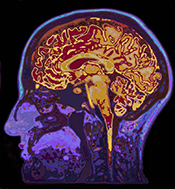 Photo: ©iStock/MachineHeadz
Photo: ©iStock/MachineHeadz
(01/14/2021)
Impulsive suicide attempts are linked with abnormalities in the cingulate cortex of the brain, found a VA study. The cingulate cortex is a brain region known to be involved in inhibitions and impulsive behavior. Researchers conducted magnetic resonance imaging on the brains of 52 Veterans with either suicidal thoughts or attempts. They found that those who had attempted suicide had lower white matter volume in the cingulate cortex, compared with those who had suicidal thoughts but not attempts. Those with lower white matter volume also scored higher on an assessment of impulsivity. The results suggest that abnormalities in this part of the brain could lead to more unplanned suicide attempts, according to the researchers. (Journal of Affective Disorder, Dec. 3, 2020)
Disadvantaged patients less likely to receive flu shots
 Photo: ©iStock/annebaek
Photo: ©iStock/annebaek
(01/06/2021)
Socioeconomic factors can predict the likelihood of flu vaccination in patients with diabetes, found a study including a Michael E. DeBakey VA Medical Center researcher. The study looked at data on more than 25,000 patients with diabetes. About 36% of those did not receive a flu shot. Younger age, Black race, being uninsured, and having no usual source of health care all decreased the odds of getting a flu shot. Nearly 64% of patients with all four of these socioeconomic factors did not receive a flu shot. The findings highlight the need to increase vaccine coverage in disadvantaged communities, say the researchers. (Journal of the Endocrine Society, Sept. 24, 2020)
Nerve stimulation may improve cognitive performance
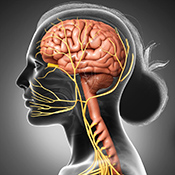 Illustration: ©iStock/sankalpmaya
Illustration: ©iStock/sankalpmaya
(01/06/2021)
Stimulating the vagus nerve may improve cognitive performance, found a study by VA San Diego researchers. The vagus nerve is a large nerve connected to the brain. It is involved with controlling the heart, lungs, and digestive tract. The researchers stimulated the nerve from outside the body using electrical current in 15 subjects, who then performed cognitive tests. Compared with participants who did not receive nerve stimulation, the subjects had higher accuracy on both easy and hard mental reasoning tests. The researchers hypothesize that stimulating the vagus nerve could increase attention, thereby enhancing cognitive function. The results suggest that vagus stimulation could be a low-risk, low-cost treatment for cognitive disorders, according to the researchers. (Neuromodulation, Nov. 25, 2020)
Higher suicide risk in sexual minority Veterans
 Photo: ©iStock/Srdjanns74
Photo: ©iStock/Srdjanns74
(01/06/2021)
Suicide rates are high in sexual minority Veterans, according to a VA Salt Lake City study. Researchers looked at data on more than 8 million Veterans for an 18-year period. They found that risk of death from suicide was four times higher in sexual minority Veterans, compared with the general population. Sexual minority Veterans had more than twice the risk of death by suicide than the general Veteran population. Sexual minority was defined as identifying as gay, lesbian, bisexual, or other sexual orientations not heterosexual. In 2017, suicide was the fifth-leading cause of death in sexual minority Veterans. For both men and women Veterans belonging to a sexual minority, suicide was the most common cause of death for 18- to 20-year olds. The most common method of suicide for this group was by firearm, used in 40% of deaths. The results suggest that more attention to suicide prevention is needed in this population, say the researchers. (JAMA Network Open, Dec. 1, 2020)
Lab study sheds light on insomnia caused by alcohol withdrawal
 Photo: ©iStock/1281086710.jpg
Photo: ©iStock/1281086710.jpg
(12/22/2020)
Researchers at the Harry S. Truman Memorial Veterans' Hospital found the possible cause of alcohol withdrawal-related insomnia, using a mouse model. Insomnia is the most common symptom of alcohol withdrawal. However, why alcohol withdrawal causes insomnia is not known. In the study, mice exposed to chronic alcohol had severe insomnia-like symptoms, similar to those in humans with alcohol use disorder. During seven days of alcohol withdrawal, the mice had a significant reduction in a chemical process called histone acetylation in several parts of the brain. This process allows histones (a type of protein) to regulate gene expression. Giving the mice a chemical compound called Trichostatin A, which aids in histone acetylation, reduced insomnia symptoms. The results could explain how alcohol withdrawal causes insomnia and lead to better treatment, say the researchers. (Neuropharmacology, Dec. 1, 2020)
Veterans homeless services use reduces death by suicide
 Photo: ©iStock/AleksandarGeorgiev
Photo: ©iStock/AleksandarGeorgiev
(12/22/2020)
Use of homeless services by Veterans significantly lowered the risk of death, including from suicide, according to a study by the VA National Center of Homelessness among Veterans. Researchers studied data on almost 170,000 Veterans who reported housing instability between 2012 and 2016. More than half of the Veterans studies accessed VA homeless services, such as emergency housing or work therapy programs. Those who used these services had a 6% reduction in the risk of death from any cause, compared with those not using the services. Veterans who accessed VA homeless services had a 21% lower risk of dying by suicide. The results show that social programs that address homelessness can be an important method to prevent Veteran suicide, according to the researchers. (Journal of Epidemiology and Community Health, Nov. 18, 2020)
Higher rates of drug use disorder among transgender patients
 Photo: ©iStock/Atiwat Studio
Photo: ©iStock/Atiwat Studio
(12/22/2020)
Transgender VA patients have increased odds of having drug use disorders, found a VA Puget Sound study. Researchers looked at data on nearly 9 million VA patients, more than 8,000 of whom were transgender. Transgender patients had a 67% higher likelihood of having any drug use disorder, compared with cisgender patients. The difference was highest for amphetamine use. The presence of mental health conditions did not affect the disparity in drug use disorder rates. The results point to a need for more research into health disparities for transgender patients, say the researchers, particularly toward potential barriers to substance use treatment. (Journal of Addiction Medicine , Nov. 25, 2020)
Nurses at higher risk of COVID-19 than other health care workers
 Photo: ©iStock/FG Trade
Photo: ©iStock/FG Trade
(12/16/2020)
Nurses are more likely than other health care workers to test positive for the virus causing COVID-19, found a study including an Edward Hines, Jr. VA Hospital researcher. Researchers looked at COVID-19 test data for more than 6,500 health care workers. Nearly 2,000 of those were nurses. About 5% tested positive for the virus. Nurses had nearly twice the odds of testing positive, compared with other health care workers. Administrators who worked in hospitals but did not interact with patients were the least likely to test positive. Nurses who saw patients receiving high-flow oxygen therapy had a 45% higher risk of contracting the virus, and those treating patients receiving kidney dialysis had 57% higher odds, compared with other nurses. The results show that health care workers who spend more time around COVID-19 patients, such as nurses, are at increased risk from the virus, say the researchers. (Open Forum Infectious Disease, Dec. 9, 2020)
Number of concussions does not affect cognitive treatment response
 Photo: ©iStock/TefiM
Photo: ©iStock/TefiM
(12/16/2020)
The number of concussions one sustains does not affect treatment response, according to a study of service members with a history of brain injury. Participants underwent six weeks of cognitive rehabilitation for traumatic brain injury. All patients in the study improved in cognitive deficits and psychological distress over the course of treatment. Participants who had more concussions showed about the same level of improvement as those with fewer concussions. Participants with more concussions did report more cognitive difficulties both before and after treatment. The results show that cognitive rehabilitation is effective regardless of the number of concussions sustained, say the researchers. (Archives of Clinical Neuropsychology, Dec. 3, 2020)
Psychiatric conditions not linked to worse nicotine withdrawal
 Photo: ©iStock/Juanmonino
Photo: ©iStock/Juanmonino
(12/16/2020)
Patients with PTSD or depression had less increase in nicotine withdrawal symptoms than those without psychiatric conditions, in a study of Veterans who smoked. Smokers with psychiatric disorders often have increased trouble quitting. Researchers measured smokers' nicotine withdrawal symptoms both before and during a two-day period without nicotine. Contrary to what the researchers expected, those without psychiatric conditions had greater increases in withdrawal symptoms when deprived of nicotine. The researchers suggest that high levels of distress and craving, not increased withdrawal symptoms, may account for the difficulties people with psychiatric conditions have to quit smoking. (Nicotine and Tobacco Research, Nov. 27, 2020)
Race-based COVID-19 disparities
 Photo: ©iStock/JONGHO SHIN
Photo: ©iStock/JONGHO SHIN
(12/10/2020)
African American and Hispanic populations have higher rates of COVID-19 infection and death compared with other ethnic groups, according to a VA Portland review. Researchers reviewed 37 studies on COVID-19 data. They found that African American and Hispanic patients had disproportionately higher rates of virus infection, hospitalization, and death from COVID-19, compared with white patients. While these groups had a higher proportion of deaths from COVID-19, they did not show a higher risk of death in confirmed COVID-19 cases. Asian patients had similar COVID-19 rates as white patients. Not enough data exist on other racial groups to draw conclusions. The higher COVID-19 rates appear to be due to differences in health care access and exposure risk rather than any biological disposition, according to the researchers. (Annals of Internal Medicine, Dec. 1, 2020)
Post-traumatic headaches are often more complex than non-traumatic headaches
 Photo: ©iStock/Nenad Cavoski
Photo: ©iStock/Nenad Cavoski
(12/10/2020)
Headaches caused by traumatic brain injury usually include more symptom features than non-traumatic headaches, found a study by VA researchers and colleagues. Headaches are a common symptom of mild traumatic brain injury. Researchers assessed more than 1,000 soldiers for different headache features, such as pain level, pulsating sensation, and visual auras. Soldiers with post-traumatic headaches were more likely to have all 12 headache features assessed, compared with soldiers with headaches but no traumatic brain injury. Unsurprisingly, soldiers who experienced a wider variety of headache symptoms, termed headache complexity, were more likely to use health care services. The results suggest that post-traumatic headaches differ from non-traumatic headaches in severity more than type of headache, say the researchers. Headache complexity could be a useful tool to assess post-traumatic headaches. (Cephalalgia, Nov. 27, 2020)
New technique could improve wound healing
 Photo: ©iStock/yenwen
Photo: ©iStock/yenwen
(12/10/2020)
A study led by a Corporal Michael J. Crescenz VA Medical Center researcher has demonstrated a process that could lead to better wound healing. Wounds often heal with fibrous scar tissue that can cause problems. In a mouse model, researchers used medication to activate pain receptor cells in the skin to promote wound healing. Activating the pain receptors stimulated the skin cells to produce interleukins, proteins involved in the body's immune response. Triggering this immune response led to less scar tissue and promoted tissue regeneration. The results present a new avenue for research into faster and healthier wound healing, according to the researchers. (Science Immunology, Aug. 28, 2020)
Elevated immune response leads to more severe COVID-19
 Photo: ©iStock/JONGHO SHIN
Photo: ©iStock/JONGHO SHIN
(12/02/2020)
Elevated immune response is associated with more severe COVID-19 and death, found a review led by a Michael E. DeBakey VA Medical Center researcher. The review analyzed 16 previous studies. Researchers found that COVID-19 patients with higher levels of interleukins, proteins secreted by the immune system, were more likely to have worse symptoms or die, compared with patients with lower levels. Conversely, high levels of a different type of immune proteins (CD4 and CD8) were linked to better prognosis in COVID-19 patients. The results suggest that medications that block interleukin production could be a useful treatment for COVID-19, say the researchers. A number of interleukin blockers are already being tested as possible treatments. (Diabetes and Metabolic Syndrome, November–December 2020)
Blood pressure medications not linked to worse COVID-19
 Photo: ©iStock/anyaivanova
Photo: ©iStock/anyaivanova
(12/02/2020)
Common blood pressure drugs are not linked to worse COVID-19 outcomes, according to a review by VA Portland researchers. Researchers reviewed 17 studies on how angiotensin-converting enzyme (ACE) inhibitors and angiotensin-receptor blockers (ARBs) interact with the SARS-CoV-2 virus. Both types of drugs are used to treat high blood pressure and heart failure. Evidence suggests that taking ACE inhibitors or ARBS does not lead to more severe COVID-19. The drugs also were not linked to positive SARS-CoV-2 test results. The researchers found four studies looking at ACE inhibitors or as COVID-19 treatments, but results from these studies are not yet available. (Annals of Internal Medicine, Aug. 4, 2020)
Phone-based diabetic kidney disease care effective for African American patients
 Photo: ©iStock/kali9
Photo: ©iStock/kali9
(12/02/2020)
A telehealth program could effectively slow kidney decline in African American patients, according to a Durham VA and Duke University study. Pharmacists delivered a phone-based intervention to patients with diabetic kidney disease. The program focused on behavioral and medication management. African American patients who received the program had significantly greater control of eGFR levels (a measure of kidney function), compared with patients receiving usual care. Non-African American patients in the program had a much faster decline in eGFR levels. The results suggest that this high-risk population may respond well to a telehealth approach to diabetic kidney disease care, say the researchers. (Medical Care, November 2020)
Inflammation may cause motor slowing in patients with schizophrenia
 Photo: ©iStock/1147468451
Photo: ©iStock/1147468451
(11/23/2020)
Inflammation may play a role in schizophrenia-related movement problems, according to an Atlanta VA and Emory University study. Fine motor deficits are common in patients with schizophrenia. Researchers had patients with schizophrenia complete motor tasks (e.g., a finger tap test) and also tested their blood. As expected, patients with schizophrenia were slower on motor tests than controls without the disease. Patients with slower motor performance also had higher concentrations of molecules associated with inflammation in their blood. The results add to growing evidence that inflammation is the cause of motor slowing in people with schizophrenia and other mental conditions, say the researchers. (NJP Schizophrenia, April 1, 2020)
Walking program improves diabetes control
 Photo: ©iStock/monkeybusinessimages
Photo: ©iStock/monkeybusinessimages
(11/23/2020)
A new walking program improves older patients' health and diabetes control, found a South Texas Veterans Health Care System study. Patients 60 and older with diabetes participated in the Geriatrics Walking Clinic (GWC), a six-week program to promote physical activity. Participants were given a pedometer and weekly phone calls to monitor progress and give encouragement. Participants showed lowered HbA1c levels—a measure of diabetes control—at three, six, and 12-month follow-ups. They also improved their walking speed. The results highlight the benefits of exercise programs such as GWC for older patients with diabetes. (Geriatric Nursing, Nov. 3, 2020)
Perceived discrimination linked to worse arthritis outcomes
 Photo: ©iStock/LightFieldStudios
Photo: ©iStock/LightFieldStudios
(11/23/2020)
Perceived discrimination contributes to poor osteoarthritis outcomes, found a study by VA researchers and colleagues. Researchers evaluated more than 500 older Veterans with knee osteoarthritis. They found that those with higher cumulative disadvantage had significantly higher perceived discrimination. Cumulative disadvantage was defined as belonging to multiple socially disadvantaged groups. The researchers identified female gender, African American race, low income earning, and unemployment due to disability as known social disadvantages. Those with higher disadvantage also had higher pain and depression symptoms. Analysis showed that perceived discrimination was largely responsible for this connection. The results show that discrimination can lead to poorer physical and mental health outcomes, say the researchers. (Arthritis Care & Research, Oct. 7, 2020)
Stroke survivor mental deficits negatively affect caregiver well-being
 Photo: ©iStock/Chinnapong
Photo: ©iStock/Chinnapong
(11/19/2020)
Stroke patients' emotional or cognitive deficits negatively impact caregiver well-being, found a North Florida/South Georgia VA study. Researchers surveyed 109 caregivers of stroke survivors. They found that higher cognitive and emotional deficits in the stroke patient led to more depression and burden in the caregiver. Cognitive/emotional deficits negatively affected caregiver mental quality of life. Higher motor or functional deficits in those they cared for did not significantly affect caregiver outcomes. The results suggest that cognitive/emotional deficits impact caregivers more than physical deficits, say the researchers. (Disability and Health Journal, Nov. 4, 2020)
Program helps lower self-stigma from PTSD
 Photo: ©iStock/SDI Productions
Photo: ©iStock/SDI Productions
(11/19/2020)
A new group program could help Veterans with PTSD deal with self-stigma, according to a VA Maryland study. Self-stigma is when someone comes to believe that common negative stereotypes and assumptions about PTSD are true of oneself. Researchers began a pilot program: Ending Self-Stigma for PTSD. The program involves nine group sessions aimed at learning tools to address PTSD stigma and self-stigma. Compared with Veterans receiving usual care, those in the program showed significantly less self-stigma and depression symptoms. They also had higher social confidence and feelings of belonging. The results show that the new program could help Veterans cope with negative views of PTSD, say the researchers. (Journal of Traumatic Stress, Oct. 15, 2020)
Exercise alleviates sleep problems caused by nicotine withdrawal
 Photo: ©iStock/PeopleImages
Photo: ©iStock/PeopleImages
(11/19/2020)
Exercise can help with sleep problems caused by nicotine withdrawal, found a Pittsburgh VA study. Sleep disturbances, including insomnia, are common symptoms of nicotine withdrawal. Researchers tested the effects of exercise on 49 daily smokers who were quitting. They found that engaging in daily exercise improved the patients' ability to stay asleep. Patients with the greatest withdrawal severity had the most trouble falling asleep. But these participants also had the greatest benefits from afternoon exercise in how long it took them to fall asleep. The findings suggest that an exercise routine can improve sleep problems in people trying to quit smoking. (Experimental and Clinical Psychopharmacology, Oct. 29, 2020)
Gene variant increases risk of blast-induced memory problems
 Photo: ©iStock/peterschreiber.media
Photo: ©iStock/peterschreiber.media
(11/12/2020)
A specific gene variant may make people more vulnerable to cognitive problems from explosive blasts, found a study by VA Boston researchers and colleagues. Researchers examined the genomes of nearly 500 Veterans. They found that those with a common variant of the apolipoprotein (APOE) gene had an increased risk of memory problems after close-range blast exposure. This APOE variant is known to be a risk factor for Alzheimer's disease. The results suggest that carriers of the gene variant could suffer worse outcomes from blast injuries than those with different forms of the gene, according to the researchers. They point out the importance of considering genetic risk when studying cognitive effects of trauma. (Journal of the International Neuropsychological Society, Nov. 3, 2020)
Involuntary opioid dose reduction does not lead to more chronic pain
 Photo: ©iStock/Charles Wollertz
Photo: ©iStock/Charles Wollertz
(11/12/2020)
Involuntary opioid dose reduction did not affect chronic pain severity, in a VA study. The study involved nearly 300 VA patients with chronic pain. Over the past year, about equal numbers had their opioid doses reduced involuntarily, reduced voluntarily, or kept the same. All three groups had similar pain levels before medication doses were adjusted. After 18 months, no significant differences in pain severity were found between the three groups. The findings suggest that reducing opioid dosing, whether voluntarily or involuntarily, does not lead to an increase in chronic pain, according to the researchers. (Journal of General Internal Medicine, Nov. 3, 2020)
Toxic exposure linked to rheumatoid arthritis-related antibodies
 Photo: ©iStock/katleho Seisa
Photo: ©iStock/katleho Seisa
(11/12/2020)
Military toxic exposure was linked to antibodies associated with rheumatoid arthritis, in a VA study. In rheumatoid arthritis, the body's immune system attacks its own tissue, including joints. Participants in a Veteran rheumatoid arthritis study were surveyed about inhalant exposures during their military service. The researchers found that Veterans with military burn pit or waste disposal exposure were more likely to have anti-cyclic citrullinated peptide antibodies, compared with those without toxic exposure. This type of antibody is an immune protein that mistakenly attacks healthy cells in the body. It is common in patients with rheumatoid arthritis. The results suggest that toxic exposure changes antibody expression and can increase the risk of rheumatoid arthritis, say the researchers. (Arthritis & Rheumatology, Oct. 15, 2020)
Molecular DNA changes linked to depression
 Photo: ©iStock/Gio_tto
Photo: ©iStock/Gio_tto
(11/06/2020)
A study involving an Atlanta VA researcher identified molecular DNA changes in the brain that may contribute to major depressive disorder. Researchers studied DNA methylation in the brain tissue of more than 600 older patients. DNA methylation is a process in which molecules called methyl groups attach to the DNA molecule. The researchers identified four new locations on the genome where methylation appears to be linked to major depressive disorder risk. Notably, the association between methylation levels and depression was stronger in men than in women. The results help explain how molecular changes could be involved in depression, according to the researchers. (Translational Psychiatry, July 30, 2020)
Cannabis use linked to psychiatric problems
 Photo: ©iStock/digihelion
Photo: ©iStock/digihelion
(11/06/2020)
Cannabis use is linked to psychiatric problems in Veterans, found a study by VA San Diego researchers and colleagues. Researchers surveyed more than 3,000 Veterans about their cannabis use and mental health. Those who used cannabis had higher odds of PTSD and mood, anxiety, and substance use disorders, compared with those who never used cannabis. Cannabis users also had higher rates of current suicidal thoughts, suicide attempts, and mental health treatment utilization. Veterans with cannabis use disorder (CUD) had higher odds of PTSD, mood and anxiety disorders, nicotine and alcohol dependence, and suicidal thoughts, compared with those who used cannabis but did not meet CUD criteria. While the researchers suggest that cannabis use could increase mental health burden, it is also possible that many Veterans with psychiatric issues turn to cannabis as a form of self-medication. Outreach and education are needed about possible cannabis-related psychiatric burden, say the researchers. (Journal of Affective Disorder, Sept. 29, 2020)
Risk factors for COVID-19 death
 Photo: ©iStock/homeworks255
Photo: ©iStock/homeworks255
(11/06/2020)
VA Puget Sound researchers identified risk factors for death from COVID-19. The study included almost 89,000 patients tested in the VA health system. More than 10,000 tested positive for COVID-19. Higher risk of death from the disease was linked to being older than 50, being male, and having more health conditions. The researchers could not confirm several risk factors identified in other, smaller studies. These factors include obesity, Black race, Hispanic ethnicity, and smoking. The findings can help predict disease outcomes and plan treatment accordingly, say the researchers. (JAMA Network Open, Sept. 1, 2020)
Cigarette smoke makes lung infection bacteria more dangerous
 Photo: ©iStock/bagi1998
Photo: ©iStock/bagi1998
(10/28/2020)
Cigarette smoke alters the genes of bacteria in the lungs, making them more resistant to the immune system, found a VA San Diego study. Researchers exposed the bacteria P. aeruginosa to cigarette smoke extract. Infection with this bacteria often leads to pneumonia. Smoke exposure changed the gene expression in the bacterium, making it more resistant to white blood cells. Cigarette smoke also increased biofilm formation, making the bacteria more resistant to antibiotics. P. aeruginosa also became more harmful in a mouse model of pneumonia when exposed to smoke. The results show one way that smoking cigarettes can increase the danger of lung infections, say the researchers. (Infection and Immunity, Oct. 19, 2020)
Transcranial magnetic stimulation reduces PTSD-linked anger
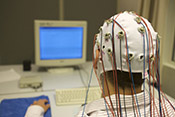 Photo: ©iStock/fotografixx
Photo: ©iStock/fotografixx
(10/28/2020)
Transcranial magnetic stimulation could reduce anger in Veterans with PTSD, found a Providence VA study. In transcranial magnetic stimulation, magnetic fields are applied to the outside of the skull to influence electrical currents in the brain. Researchers applied a form of this treatment called intermittent theta burst stimulation to patients with PTSD in 10 daily sessions. Patients receiving the treatment reported significantly reduced anger, compared with control patients. The change remained one month after treatment. Results suggest that the treatment could be an effective way to control increased anger caused by PTSD, according to the researchers. (Neuromodulation, Sept. 17, 2020)
Identity disruption linked to Veteran reintegration trouble
 Photo for illustrative purposes only. ©iStock/Geber86
Photo for illustrative purposes only. ©iStock/Geber86
(10/28/2020)
Identity disruption is linked to Veteran difficulty reintegrating into civilian life, according to a Minneapolis VA study. Identity disruption refers to questioning one's sense of self and place in the world. Researchers surveyed more than 200 Veterans who served in Afghanistan and Iraq. About 49% of those surveyed showed signs of identity disruption. Identity disruption was linked to more severe PTSD symptoms, lower satisfaction with life, greater reintegration difficulty, and less social support. The findings suggest that understanding identity disruption could help Veterans better reintegrate into civilian life, say the researchers. (Developmental Psychology, November 2020)
Poor oral health linked to less gut bacteria diversity
 Veterans Health Administration photo
Veterans Health Administration photo
(10/21/2020)
Oral health is linked to changes in the makeup of colon bacteria that could contribute to disease, found a study by Michael E. DeBakey VA Medical Center researchers and colleagues. Poor oral health has been associated with several diseases, but the reason for this link is not well understood. Researchers examined colonoscopy biopsies along with oral health questionnaires of 62 patients. They found that more tooth loss and gum disease were linked to lower bacteria diversity in the digestive tract. People with more tooth loss had lower levels or Faecalibacterium, bacterium known to be anti-inflammatory. Lower levels of this bacterium could indicate systemic inflammation, according to the researchers. The results suggest that poor oral health could lead to other health problems by altering the gut microbiota. (Digestive Diseases and Sciences, Sept. 24, 2020)
Immunotherapy improves cancer survival
 Photo: ©iStock/blueringmedia
Photo: ©iStock/blueringmedia
(10/21/2020)
Immune checkpoint inhibitors seem to improve cancer patients' survival, according to a VA Boston study. Immune checkpoint inhibitors are drugs that block specific proteins. This allows immune cells to recognize and attack cancer cells. The researchers looked at data on more than 11,000 VA patients, in one of the largest studies on the topic. The most common type of cancer treated was lung cancer, followed by melanoma. Odds of survival a year after treatment were somewhat lower in this group of VA patients, compared with other studies of immune checkpoint inhibitors. However, mortality rates were similar after adjusting for frailty. Patients given immune checkpoint inhibitors generally survived longer than patients receiving standard care. This study provides a platform for further analysis of immunotherapy outcomes in real-world patients, say the researchers. (Journal of Clinical Oncology, Oct. 19, 2020)
TBI increases risk of dementia to different degrees based on race
 Photo for illustrative purposes only. ©iStock/Juanmonino
Photo for illustrative purposes only. ©iStock/Juanmonino
(10/21/2020)
Traumatic brain injury significantly increases the risk of dementia, and race appears to affect this relationship, found a San Francisco VA study. Researchers studied data on nearly a million older Veterans. Overall, Veterans with a TBI were more than twice as likely to be diagnosed with dementia than those without TBI. White Veterans were nearly three times more likely to have dementia if they had a TBI. Dementia was more than twice as likely in Black Veterans with TBI, compared to Black Veterans without TBI. TBI nearly doubled the risk of dementia in Hispanic Veterans. More research is needed to understand how race contributes to TBI's connection to dementia, say the researchers. (Neurology, Sept. 29, 2020)
Many Veterans with suicidal thoughts not receiving mental health care
 Photo: ©iStock/vadimguzhva
Photo: ©iStock/vadimguzhva
(10/14/2020)
More than 3 in 5 Veterans who have suicidal thoughts are not engaged in mental health treatment, according to a VA study. Researchers looked at data from 2011 on more than 3,000 Veterans. About 7% said they have suicidal thoughts. Only 36% of those were receiving mental health treatment. Younger Veterans; women; those with current depression; and those with more lifetime suicide attempts, lifetime trauma, and medical problems were more likely to be in treatment. Mistrust of mental health providers and fear of damaging one's reputation were linked to lower mental health treatment. The results highlight a need to find new ways to engage Veterans at risk for suicide in mental health care, say the researchers. (Journal of Psychiatric Research, July 29, 2020)
Novel risk factors for heart attack in younger patients
 Photo for illustrative purposes only. ©iStock/digitalskillet
Photo for illustrative purposes only. ©iStock/digitalskillet
(10/14/2020)
Younger patients who had heart attacks had both traditional and non-traditional risk factors, found a study by Michael E. DeBakey VA Medical Center researchers and colleagues. The study looked at characteristics of patients younger than 55 who had a heart attack. Younger patients were at higher risk of heart attack if they had HIV, lupus, and obstructive sleep apnea. Younger patients with rheumatoid arthritis had a lower risk of heart attack. Cigarette smoking, obesity, high lipid (fat) content in the blood, and a family history of coronary artery disease were linked to heart attack risk in both younger and older patients. Younger patients with HIV, lupus, or sleep apnea should be monitored for heart attack, in addition to those with traditional risk factors, conclude the researchers. (International Journal of Cardiology, Sept. 23, 2020)
Yoga a cost-effective treatment for back pain
 Photo for illustrative purposes only. ©iStock/jacoblund
Photo for illustrative purposes only. ©iStock/jacoblund
(10/14/2020)
Yoga can be a cost-effective treatment for Veterans with chronic low back pain, found a VA San Diego study. Patients were assigned to either 60-minute yoga sessions twice a week for 12 weeks or delayed treatment, in which they would receive the yoga treatment after the study. Yoga instruction could be provided for about $300 per participant. An analysis indicated that the costs of this program are offset by long-term reductions in health care costs for participants. Research suggests that yoga may have health benefits similar to physical therapy and can likely be delivered at a lower cost. The study suggests that yoga could be a useful non-opioid option for patients with chronic low back pain, say the researchers. (Medical Care, September 2020)
Head and neck cancer rates increasing
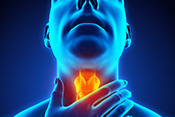 Illustration: ©iStock/Nerthuz
Illustration: ©iStock/Nerthuz
(10/08/2020)
Head and neck cancer in VA patients has become more common in recent years, found a Michael E. DeBakey VA Medical Center study. Researchers looked at data on more than 12,000 patients with head and neck cancers. They found that the incidence of this type of cancer in VA patients declined between 2000 and 2006, but then increased between 2006 and 2012. The increase was seen across ethnic and age groups. Although smoking remains highly connected to this type of cancer, the percentage of cancer in those who never smoked has increased. About 8% of those with head or neck cancer were nonsmokers in 2000. This number increased to 16% in 2012. The finding suggests a different cause of the cancer beyond smoking, such as human papilloma virus, say the researchers. (Head and Neck, Sept. 12, 2020)
Air pollution linked to stroke risk in atrial fibrillation patients
 Photo: ©iStock/lapandr
Photo: ©iStock/lapandr
(10/08/2020)
Higher air pollution increases the risk of stroke in patients with atrial fibrillation, found a study by VA Pittsburgh and University of Pittsburgh researchers. The study followed more than 31,000 patients with atrial fibrillation along with pollution measures for a number of years. Atrial fibrillation refers to irregular heartbeat. Those exposed to greater fine particulate matter had a significantly higher risk of stroke, compared with those exposed to less pollution. Fine particulate matter refers to airborne particles less than 2.5 micrometers in diameter. The higher the air pollution, the higher the risk of stroke. The results highlight the need to address how air pollution contributes to cardiovascular disease, according to the researchers. (JAMA Network Open, Sept. 1, 2020)
American Indian/Alaskan Native Veterans have higher risk of death
 Photo for illustrative purposes only. ©iStock
Photo for illustrative purposes only. ©iStock
(10/08/2020)
American Indian/Alaskan Native Veterans had higher death rates than other ethnic groups, found a VA Greater Los Angeles study. Researchers looked at health and census data on more than 5 million Veterans. They found that American Indian/Alaskan Native Veterans had a 7% higher risk of death from any cause in a given year, compared to Black and white Veterans. Mortality rates were similar between other ethnic groups when controlling for other factors. Neighborhood segregation was a large contributor to this disparity. American Indian/Alaskan Native Veterans who lived areas with greater non-Hispanic Black segregation had a lower risk of death than those in other areas. Living near tribal reservations also seemed to lessen the disparity. The results suggest that social characteristics of neighborhoods need to be examined to address racial disparities, say the researchers. (Health Services Research, October 2020)
Risk factors for lower-limb re-amputation
 Photo: ©iStock/Morsa Images
Photo: ©iStock/Morsa Images
(09/30/2020)
VA Puget Sound researchers identified risk factors that led to further lower-limb amputation in Veterans. The study included more than 7,000 VA patients who had an amputation because of diabetes or peripheral artery disease. Re-amputation included removing tissue and bone near the amputation site or amputation higher on the leg, and might become necessary because of improper healing. Re-amputation was highest (41%) in patients who had part of the foot removed. About 25% of amputations at the tibia and 9% at the femur required re-amputation. Risks for re-amputation included chronic obstructive pulmonary disease, reduced blood flow, and alcohol misuse. Different levels of amputation carried different risk factors. The results will help surgeons and patients make decisions on amputation level, according to the researchers. (European Journal of Vascular and Endovascular Surgery, Aug. 12, 2020)
Combat exposure linked to suicidal thoughts through PTSD symptoms
 U.S. Army photo by Maj. Thomas Cieslak
U.S. Army photo by Maj. Thomas Cieslak
(09/30/2020)
PTSD symptom severity largely controls the link between combat exposure and suicidal thoughts in Veterans, found a Durham VA study. Previous findings have been mixed on whether combat exposure is directly related to suicidal thoughts or if other factors are involved. Researchers evaluated 319 Veterans at the beginning of the study, as well as six and 12 months later. They found that the link between combat exposure and the risk of suicidal thoughts was controlled by how severe PTSD symptoms were in 64% of cases. The results emphasize the importance of addressing PTSD symptoms when trying to prevent suicide, say the researchers. (Suicide and Life-Threatening Behavior, Aug. 8, 2020)
One-day mental health workshop helps rural Veterans in distress
 Photo: ©iStock/davidperks
Photo: ©iStock/davidperks
(09/30/2020)
Rural Veterans in mental distress found community-based mental health workshops helpful, in a VA study. VA researchers partnered with nonprofit organizations to identify distressed Veterans in rural areas. They conducted a one-day acceptance and commitment therapy group workshop in rural locations for 31 Veterans. Each Veteran was interviewed after the workshop, as well as one and three months later. Veterans appreciated the structure, content, and environment of the workshops. Most used the learned coping skills in their daily lives, and some initiated new treatment after the workshop. Veterans scored better on measures of functioning and reintegration afterward. They also showed higher feelings of meaning and purpose and reduced distress. The results show that partnering with rural non-profits can help engage rural Veterans in mental health care, say the researchers. (Journal of Behavioral Medicine, Sept. 17, 2020)
Nondrug therapy use for chronic pain common
 Photo by Robert Turtil
Photo by Robert Turtil
(09/23/2020)
Nondrug therapy use is common in Veterans with chronic pain, found a Minneapolis VA study. Researchers surveyed nearly 9,000 Veterans who had been prescribed long-term opioid therapy for chronic pain. In the past year, 80% used at least one nondrug therapy for pain. Therapies included meditation, psychotherapy, yoga, and other techniques. Younger Veterans and female Veterans were more likely to use nondrug therapies. Greater pain severity was linked to lower use of exercise and movement therapies. Further research into complementary and integrative health could lead to more nondrug treatment for chronic pain, say the researchers. (Medical Care, September 2020)
Exploring gene expression in prostate cancer
 Photo: ©iStock/jamesbenet
Photo: ©iStock/jamesbenet
(09/23/2020)
A team including Southeast Louisiana Veterans Health Care System researchers found multiple gene expression trends linked to prostate cancer. Gene expression refers to the creation of proteins based on genetic instructions. The team studied data from three large genomic databases. They found that gene expression of the protein FBXW7 was significantly lower in prostate cancer, compared to in normal prostate tissue. Expression of several related proteins (FBXW8–10) was higher in prostate cancer, as well. The study also found higher expression of several different FBXW proteins in metastatic castration-resistant prostate cancer, a hard-to-treat form of the cancer, compared with more common prostate cancers. The results help explain the role genes play in prostate cancer risk, say the researchers. They also suggest that FBXW7 has potential as a treatment to suppress tumor growth. (American Journal of Clinical and Experimental Urology, Aug. 15, 2020)
Cause of light sensitivity the same in multiple conditions
 Photo: ©iStock/laflor
Photo: ©iStock/laflor
(09/23/2020)
Light sensitivity associated with three separate conditions could share a common cause, according to a review by VA researchers and colleagues. Patients with dry eye disease, migraines, and traumatic brain injury all commonly have a sensitivity to light. These conditions are usually considered different types of medical issues. However, they often occur together. By reviewing available studies, the researchers found that light sensitivity is linked to disruptions in brain connectivity in all three conditions. Light sensitivity is closely connected to increased activity of the protein CGRP. The results suggest that treatments that target neural pathways should be considered for light sensitivity in these conditions, according to the researchers. (British Journal of Ophthalmology, July 23, 2020)
Understanding prostate cancer molecular processes
 Photo: ©iStock/selvanegra
Photo: ©iStock/selvanegra
(09/17/2020)
Minneapolis VA researchers explored molecular processes involved in prostate cancer growth. Protein kinase CK2 is an enzyme involved in the life cycle of the cell. It is known to be elevated in many types of cancer, but its function within cancer cells is not well known. The researchers exposed prostate cancer cell lines in the lab to compounds that inhibit protein kinase CK2. They found that inhibiting the enzyme led to decreased levels of calcium ions in the body of the cell and increased levels in the endoplasmic reticulum and mitochondria, two discrete or structures in the cell. Calcium ions are known to drive signaling of processes within cells. Calcium levels were much lower within cells given enough protein kinase CK2 inhibitors to kill the cell. This study increases the understanding of the processes involved in cancer cell growth and death. It could lead to new areas of study for treatment of prostate cancer. (Molecular and Cellular Biochemistry, July 2020)
Opioid misuse linked to emotion dysregulation
 Photo: ©iStock/VladimirSorokin
Photo: ©iStock/VladimirSorokin
(09/17/2020)
Opioid misuse could cause emotion dysregulation, according to a study by VA Salt Lake City researchers and colleagues. Researchers had patients on long-term opioid therapy for chronic pain complete an emotion regulation task. The task involved viewing emotionally charged pictures while trying to control one's emotions. Patients were measured for heart rate and galvanic skin response (a change in the electrical resistance of skin caused by emotional stress). Patients who correctly followed their medication protocols were able to control their emotional responses. Those who misused opioids had increases in the reaction measures during tests involving negative emotion. They also did not show signs of emotional control during positive emotion tests. The results suggest that opioid misuse is linked with an inability to control emotions that occurs immediately after emotional provocation, say the researchers. (Progress in Neuro-Psychopharmacology and Biological Pharmacology, June 24, 2020)
Blast exposure linked to attention problems
 DOD photo by Lance Cpl. Immanuel Johnson
DOD photo by Lance Cpl. Immanuel Johnson
(09/17/2020)
Blast pressure from an explosion contributes to cognitive problems caused by traumatic brain injury (TBI), found a VA Mid-Atlantic Mental Illness Research, Education, and Clinical Center (MA-MIRECC) study. Explosions cause a pressure wave in the air that can strike people near the blast. More than 250 post-9/11 Veterans completed cognitive tests and surveys about blast exposure. Those with a mild TBI performed worse on cognitive tests than those without TBI. The severity of blast pressure seemed to control this relationship. In Veterans with mild TBI, those who had experienced more severe blasts showed lower performance on a simple attention task, even with the same TBI diagnosis. The results show that severe pressure waves could lead to persisting attention difficulties that impede cognitive function in Veterans with TBI, say the researchers. (Neuropsychology, July 16, 2020)
3D-printed masks can be decontaminated of coronavirus using standard methods
 Photo: ©iStock/beerkoff
Photo: ©iStock/beerkoff
(09/11/2020)
VA researchers identified several methods that effectively decontaminate 3D-printed mask material of the virus that causes COVID-19. The researchers tested viral activity on mask material using multiple disinfectants. They found three solutions that inactivated the virus: bleach, quaternary ammonium sanitizer, and hydrogen peroxide. Likewise, exposing the material to dry heat for 30 minutes inactivated the viruses. The liquid alcohol isopropanol was not as effective. The cleaning methods tested did not interfere with the integrity of the 3D-printed material. Standard decontamination methods can be an effective way to allow for reuse of 3D-printed material when surgical mask supplies are limited, conclude the researchers. (Infection Control and Hospital Epidemiology, Aug. 12, 2020)
Educational program increases Veterans' confidence in suicide crisis hotline
 Photo for illustrative purposes only. ©iStock/BraunS
Photo for illustrative purposes only. ©iStock/BraunS
(09/11/2020)
Educating Veterans about the Veterans Crisis Line improves their views of the suicide prevention resource, found a study by the VA Center for Clinical Management and Research. The Veterans Crisis Line is a toll-free, confidential hotline staffed by mental health professionals 24 hours a day. It offers support and help to Veterans thinking about suicide. Usage numbers suggest that the hotline is likely underutilized by high-risk Veterans. Researchers developed a program to educate Veterans about the hotline. It includes discussing participants' perceived barriers and calling the hotline together with their therapist to provide firsthand experience with the service. Researchers provided the program to 301 Veterans. Preliminary results suggest that the program significantly increased Veterans' comfort with and confidence in the hotline. The program could increase the likelihood of high-risk Veterans in crisis using the hotline for help. The Veterans Crisis Line can be reached by calling 1-800-273-8255 or texting #838255. (Cognitive and Behavioral Practice, June 25, 2020)
Testing for virus presence after COVID-19 infection
 Photo: ©iStock/homeworks255
Photo: ©iStock/homeworks255
(09/11/2020)
Researchers from the San Francisco VA and University of California San Francisco studied how long it took health care workers with COVID-19 to test negative after initial infection. They tested 12 employees with reverse transcriptase polymerase chain reaction (RT-PCR). RT-PCR measures the amount of a specific type of RNA (genetic material). It can be used to test for the presence of the virus that causes COVID-19. The time between initial COVID-19 infection and a negative test ranged from seven to 57 days. The average time was 34.5 days. Understanding this time range could help institutions make decisions on when it is safe for employees to return to work, say the researchers. (Journal of Occupational and Environmental Medicine, Aug. 13, 2020)
Veterans Choice Program did not reduce appointment wait times
 Photo: ©iStock/SDI Productions
Photo: ©iStock/SDI Productions
(09/02/2020)
Giving Veterans the choice to receive specialty care from non-VA community providers did not lower appointment wait times, according to a VA Boston study. The Veterans Choice Program, passed in 2014, allowed Veterans to access care in the community if they live far from a VA facility. Researchers looked at data from 2013 to 2019 to study wait times in four specialties: cardiology, gastroenterology, orthopedics, and urology. The data included 6.9 million VA consultations and 869,000 community visits. The results showed that average wait times for appointments within VA were shorter than those in the community. Administrative delays did not account for the difference. Wait times in VA declined during the study period. However, the decline began before Veterans Choice was implemented. Geographical areas with the highest VA wait times also had the highest community wait times. The results suggest that increasing eligibility for community care may be insufficient to lower Veterans' wait times, say the researchers. (JAMA Network Open, Aug. 3, 2020)
HIV drug may increase kidney disease, fractures
 Photo: ©iStock/erdikocak
Photo: ©iStock/erdikocak
(09/02/2020)
A common treatment for HIV was associated with higher odds of chronic kidney disease and osteoporotic fractures, found a study by Columbia VA researchers and colleagues. The team compared outcomes for nearly 5,000 VA patients with HIV. Some were on the medication tenofovir disoproxil fumarate, sold as Viread, while others were not. Those taking the drug had 48% higher odds of chronic kidney disease. They also had more than twice the risk of osteoporotic fracture. In osteoporosis, bones become more fragile due to bone deterioration or low bone mass. HIV regimens using this drug have been associated with impaired kidney function and loss of bone mineral density in the past. The results shed light on the extent of this association. (Current Medical Research and Opinion, Aug. 28, 2020)
Patient portal use higher in those with more severe depression

(09/02/2020)
Patients with more severe depression were more likely to use an online patient portal, found a study of VA users. Researchers looked at whether more than 3,000 Veterans with depression used the patient portal My HealtheVet. My HealtheVet allows VA patients to refill prescriptions, manage appointments, message their doctors, and view their health records. Patients with more severe depression were more likely to have registered for the portal and downloaded medical records, compared to those with milder symptoms. Male patients had lower rates of registration than women. Older patients were also less likely to register than younger patients. African American Veterans had lower rates of portal use, compared with other races. The results highlight the need to address barriers to patient portal use, say the researchers. (Journal of Affective Disorder, Oct. 1, 2020)
Lower weight, diabetes increase risk of death from pulmonary hypertension
 Photo: ©iStock/Rostislav_Sedlacek
Photo: ©iStock/Rostislav_Sedlacek
(08/26/2020)
Lower weight and diabetes are risk factors for death in patients with pulmonary hypertension, found an Atlanta VA study. Pulmonary hypertension refers to high blood pressure in the arteries of the lungs and heart. Researchers looked at data on more than 110,000 Veterans diagnosed with pulmonary hypertension. Diabetes increased patients' risk of death by 28% to 33%. Surprisingly, higher body mass index was linked to lower mortality. Underweight and normal weight patients were at higher risk of death than those who were overweight or obese. The results underscore the need for more research on how metabolic factors affect pulmonary hypertension, say the researchers. (American Journal of Cardiology, Aug. 15, 2020)
Neurostimulation could prevent wheelchair falls
 Photo: ©iStock/vadimguzhva
Photo: ©iStock/vadimguzhva
(08/26/2020)
Researchers with the VA Advanced Platform Technology Center in Cleveland developed a neurostimulation system to help stop users from falling out of wheelchairs. The team developed an algorithm to detect sudden stops during wheelchair use. Sudden stops are often a cause of falls in paralyzed wheelchair users. The team then tested the algorithm with three volunteers with spinal cord injury who had an implanted neurostimulation system and three nondisabled volunteers. When the program detected a sudden stop, the system triggered stimulation to stiffen the muscles of the user's trunk. This allowed the user to maintain a seated posture. The system was able to detect sudden stops with a 93% success rate. The participants consistently reported feeling safer when the system signaled their implants to stiffen their muscles, providing more stability. The results suggest that the neurostimulation system could improve wheelchair safety for paralyzed users, according to the researchers. (Journal of Spinal Cord Medicine, Aug. 14, 2020)
Racial/ethnic disparities exist in diabetes control
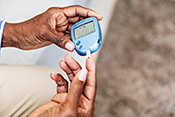 Photo: ©iStock/vitapix
Photo: ©iStock/vitapix
(08/26/2020)
Disparities in diabetes control based on race and ethnicity exist across the country, found a study of VA patients. Researchers looked at data on more than a million VA patients with diabetes. They found that the percentage of patients with uncontrolled diabetes varied by location, ranging from 19% to 29%. Hispanic patients and non-Hispanic Black patients were more likely to have uncontrolled diabetes, compared with non-Hispanic white patients. The disparity was consistent across most geographic areas. The results highlight areas that need to be addressed in diabetes care, say the researchers. (Diabetes Care, Aug. 7, 2020)
Treatment for depression linked to apathy
 Photo: ©iStock/duncan1890
Photo: ©iStock/duncan1890
(08/19/2020)
Selective serotonin reuptake inhibitor (SSRI) use may be linked with higher rates of apathy syndrome, found a Central Arkansas Veterans Healthcare System study. SSRIs are a common treatment for depression. Apathy has been reported as a potential side effect of SSRIs, but this association has not been systematically assessed. Apathy refers to loss of motivation, energy, and curiosity. The researchers compared scores on an apathy evaluation scale between patients in mental health treatment taking an SSRI and those not on the medication. They found that 92% of patients on SSRIs had clinically significant apathy, compared to 61% not on SSRIs. Apathy was most common in patients with dementia. The results suggest that clinicians should assess apathy when evaluating patients on SSRIs, say the researchers. (Medicine, Aug. 14, 2020)
Many patients receive potentially dangerous medication combinations from dentists
 Photo: ©iStock/licsiren
Photo: ©iStock/licsiren
(08/19/2020)
Many older patients receive opioids from dentists that can cause adverse reactions with their other medications, according to a study by VA researchers and colleagues. The researchers looked at data on more than 40,000 older dental patients. They found that about 10% were prescribed a potentially inappropriate medication combination. Patients given potentially dangerous combinations were more likely to seek health care for an acute condition after the dental visit. Higher opioid doses prescribed by a dentist increased this likelihood. More support is needed to make sure dentists are aware of possible dangerous medication combinations, say the researchers. (Pharmacotherapy, Aug. 7, 2020)
Keeping women Veterans in PTSD therapy
 Photo: ©iStock/SDI Productions
Photo: ©iStock/SDI Productions
(08/19/2020)
Women Veterans with PTSD are more likely to stay in psychotherapy when treatment aligns with their preferences, found a study by VA Palo Alto researchers. The researchers surveyed more than 6,000 women Veterans with PTSD. They found that 79% used psychotherapy. Of those, 42% received enough psychotherapy (at least eight visits) to be clinically meaningful. According to the survey, receiving treatment aligned with gender- and group-related preferences was associated with higher therapy retention. Other mental health conditions, exposure to military sexual trauma, and being a minority were also linked to higher psychotherapy use. Being a parent was linked to lower retention. Enhancing efforts to use shared decision-making for mental health care could increase PTSD treatment retention for women Veterans, according to the researchers. (Women's Health Issues, July 14, 2020)
Potential new migraine medication developed
 Photo: ©iStock/NickyLloyd
Photo: ©iStock/NickyLloyd
(08/12/2020)
An international team including an Iowa City VA researcher has developed a potential new nasal migraine medication. Previous research has established that the peptide (a string of amino acids) CGRP is involved in migraine development. The researchers prepared a compound that blocks the receptors in the brain that bind to CGRP. Using a mouse model, they found that the compound significantly reduced CGRP's ability to activate the receptors, compared to other compounds. The compound can be formulated into a dry powder without degrading, meaning it potentially could be used nasally to treat migraines, according to the researchers. (Journal of Pharmacy and Pharmacology, June 25, 2020)
Acid reflux may accelerate COPD progression
 Photo: ©iStock/stevanovicigor
Photo: ©iStock/stevanovicigor
(08/12/2020)
Gastroesophageal reflux disease (GERD) may accelerate chronic obstructive pulmonary disease (COPD) progression, according to a study by Minneapolis VA researchers. GERD, a chronic form of acid reflux, commonly occurs with COPD. The researchers looked at nearly 6,000 patients with COPD over a five-year study. They found that those with GERD had faster decline in some measures of lung function, compared to those without GERD. Patients taking common medications for GERD had faster lung function decline than those not taking the medications. Although the lung function differences were relatively small, say the researchers, more study is warranted on how GERD affects COPD progression because of its high prevalence. (Respiratory Health, Aug. 3, 2020)
Veterans with unstable housing at greater risk of death
 Photo: ©iStock/Rawf8
Photo: ©iStock/Rawf8
(08/12/2020)
Veterans who experience homelessness or a threat of unstable housing have a higher risk of death from external causes, found a large VA study. Researchers looked at data on nearly 6 million Veterans over a four-year period. About 3% had unstable housing or were at imminent risk of homelessness during the study period. Veterans with unstable housing had a 1.69 times risk of death than those with stable housing. Those at imminent risk of housing instability had a nearly 1.5 times higher risk of death as well. Unstably housed Veterans had over three times greater risk of dying by homicide and unintentional injury. They also had a 1.75 times higher risk of dying by suicide. Veterans at imminent risk for housing instability had over twice the risk of dying by homicide and nearly two times the risk of dying by injury or suicide. The results show that more proactive measures are needed to prevent death in Veterans with unstable housing, say the researchers. (Journal of Social Distress and Homelessness, Aug. 5, 2020)
Copper-impregnated hospital surfaces may reduce microbial contamination
 Photo: ©iStock/monkeybusinessimages
Photo: ©iStock/monkeybusinessimages
(08/07/2020)
Copper-impregnated surfaces may reduce microbial contamination in hospital rooms, according to a Central Texas VA study. High-touch hospital surfaces such as sinks, tray tables, and bedrails were replaced with a new material made of 20% copper oxide in a polymer-based resin. Researchers tested for bacterial colonies on high-touch surfaces in hospital rooms with and without copper-impregnated materials. Surfaces were tested three times a day for three days to see whether the copper stopped microbes from re-accumulating. In further evidence of copper's germ-fighting ability, copper-impregnated surfaces had about 40% the bacterial count as standard laminate surfaces. Copper-impregnated solid surfaces could reduce microbial contamination in patient rooms, conclude the researchers. (Open Forum Infectious Diseases, June 19, 2020)
Implanted electrical stimulation device for paralysis safe and effective
 Photo: ©iStock/jxfzsy
Photo: ©iStock/jxfzsy
(08/07/2020)
Researchers from VA's Advanced Platform Technology Center showed that nerve health is maintained after implanting an electrode stimulation device in a patient with spinal cord injury (SCI). A patient with leg paralysis from an SCI was given an implanted nerve cuff electrode device to stimulate his leg muscles and allow him to stand. In the first such human trial, the researchers examined physiologic changes to the nerves during the surgery and a year later. After a year, the nerves remained healthy. The patient showed strengthened motor responses from the electrical stimulation. Some nerve irritation occurred during the surgery but did not continue afterwards. The results show that implanted electrodes to restore function after SCI can be safe and effective, according to the researchers. (Journal of NeuroEngineering and Rehabilitation, July 14, 2020)
New assessment for pulmonary hypertension
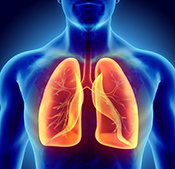 Photo: ©iStock/yodiyim
Photo: ©iStock/yodiyim
(08/07/2020)
VA researchers and colleagues have established what they propose as a new standard for assessing pulmonary hypertension. Pulmonary hypertension is high blood pressure in the lung arteries. If the condition is left untreated, average survival is two to three years after diagnosis. However, a uniform, evidence-based definition for pulmonary hypertension has not existed till now. The researchers looked at data on more than 40,000 patients in the VA health care system over a nine-year period. They found that patients with pulmonary vascular resistance of 2.2 Wood units (a measure of blood flow from the pulmonary artery to the lungs) or higher were at elevated risk of death. This number is well below what is currently associated with the disease in clinical practice. The new standard will help identify patients at risk of death who previously had been considered normal, say the researchers. (Lancet Respiratory Medicine, July 27, 2020)
Measuring brain connectivity after magnetic stimulation
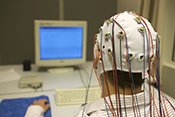 Photo: ©iStock/fotografixx
Photo: ©iStock/fotografixx
(07/29/2020)
Researchers at the Providence VA Medical Center have developed a way to study how brain connectivity is affected by transcranial magnetic stimulation (TMS). In TMS, magnetic pulses are used to affect brain signals as a treatment for PTSD or depression. The researchers studied intermittent theta burst stimulation (iTBS), a form of TMS that uses low-frequency magnetic pulses. They used an EEG (electroencephalography) to image the brains of participants with PTSD and controls before and after iTBS. They also used machine learning programs to track changes. This system was able to successfully track which patients had received iTBS 75% of the time. Using the brain imaging, the researchers were able to show that iTBS increased connectivity between the midline central/occipital regions of the brain and decreased it between the frontal and central regions. The results could provide a window into exactly how TMS affects the brain, according to the researchers. This approach could help develop individualized treatment methods for PTSD, they say. (European Archives of Psychiatry and Clinical Neuroscience, July 27, 2020)
Alcohol use changes linked to HIV medication non-adherence
 Photo: ©iStock/eclipse_images
Photo: ©iStock/eclipse_images
(07/29/2020)
Changes in alcohol use were linked to non-adherence to HIV medication, found a study of VA patients. Researchers looked at how well more than 21,000 patients with HIV kept up with their antiretroviral therapy. They found that increased alcohol use led to a decrease in medication adherence. The finding confirms previous research that found alcohol use increases non-adherence. However, the study also found that a decline in alcohol use was linked to decreased medication adherence. Patients whose alcohol use remained steady had the most stable HIV medication adherence. The results suggest that unstable alcohol use—which could reflect underlying alcohol use disorder—can lead to lower antiretroviral therapy adherence, say the researchers. (AIDS and Behavior, July 2, 2020)
History of sexual assault linked to increased emergency department use
 Photo: ©iStock/MJFelt
Photo: ©iStock/MJFelt
(07/29/2020)
Women Veterans who had experienced sexual assault were more likely to use emergency departments, in an Iowa City VA study. Researchers conducted phone interviews with nearly 1,000 women Veterans who used VA health care. Of those, 64% had visited a VA or non-VA emergency department in the previous five years. Women with a history of mental health diagnosis and those who had experienced sexual assault were almost twice as likely to have visited an emergency department, compared with those without a history of sexual assault. It is unclear whether the findings are due to greater health care needs, suboptimal access to treatment, or lack of health care coordination, say the researchers. (Women's Health Issues, June 19, 2020)
Efforts to change sexual orientation increases suicidal thoughts, actions
 Photo: ©iStock/kieferpix
Photo: ©iStock/kieferpix
(07/22/2020)
Efforts to change one's sexual orientation lead to much higher rates of suicidal behavior, found a study by a VA Pittsburgh researcher and colleagues. Researchers looked at survey data from more than 1,500 non-transgender lesbian, gay, and bisexual adults. About 7% had experienced sexual orientation change efforts. These efforts, sometimes referred to as conversion therapy, include various approaches, meant to condition a person against attraction to the same gender. More than 80% of change efforts in the study were administered by religious leader. Participants who experienced change efforts were nearly twice as likely to have suicidal thoughts at some point in their lives. Change efforts increased odds of planning to attempt suicide by 75%. Odds of a suicide attempt increased by 88% with change efforts. The results support minimizing exposure to sexual orientation change efforts and offering identity-confirming care to sexual minorities, say the researchers. (American Journal of Public Health, June 10, 2020)
Medical record notes often inaccurate
 Photo: ©iStock/Zinkevych
Photo: ©iStock/Zinkevych
(07/22/2020)
Medical records often contain errors that may affect care and billing, found a Jesse Brown VA Medical Center study. Patients covertly recorded medical appointments to compare with medical record notes. In 105 appointments, the study found 636 documentation errors. The errors included 181 charted findings that did not take place and 455 findings that were not charted. Almost all (90%) of the notes contained at least one error. The results show that the medical records should not be assumed to reflect care delivered, according to the researchers. Efforts are needed to improve documentation requirements, they say. (Journal of the American Medical Informatics Association, May 1, 2020)
Possible molecular link between nonalcoholic fatty liver disease and cancer
 Photo: ©iStock/jxfzsy
Photo: ©iStock/jxfzsy
(07/22/2020)
A team including Harry S. Truman Veterans' Hospital researchers has identified the possible connection between liver cancer and nonalcoholic fatty liver disease (NAFLD). The rates of both NAFLD and hepatocellular carcinoma (liver cancer) have been increasing at an alarming rate. While NAFLD appears to be a risk factor for liver cancer, the mechanism behind this relationship is largely unknown. Researchers found that patients with liver cancer had reduced activity from the HADHA gene. They also found that mice with a deficiency of a protein analogous to HADHA were likely to develop NAFLD when young. Older mice with the protein deficiency developed hepatocellular carcinoma. The results suggest that impairment of this gene can lead to the progression from NAFLD to liver cancer, say the researchers. (International Journal of Cancer, March 16, 2020)
Increased blood flow in the brain linked to blast exposure
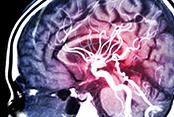 Photo: ©iStock/mr.suphachai praserdumrongchai
Photo: ©iStock/mr.suphachai praserdumrongchai
(07/16/2020)
Blast exposure may cause increased blood perfusion in the brain, found a VA Boston study. Perfusion refers to blood flow from the blood vessels to organ tissue. Previous studies have shown that damage to blood vessels may be related to poorer brain function after traumatic brain injury. Researchers performed brain scans on 160 military personnel. They found that as the number of blast exposures increased, perfusion also increased in many areas of the brain. The findings suggest that perfusion could be an important biomarker of brain health after blast exposure, say the researchers. (Journal of Cerebral Blood Flow and Metabolism, June 24, 2020)
New wheelchair design reduces bacterial contamination
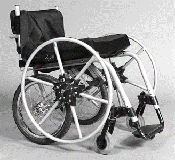 Photo by April Eilers
Photo by April Eilers
(07/16/2020)
A new ergonomic wheelchair designed by Minneapolis VA researchers reduces bacterial hand contamination. In most manual wheelchairs, users push directly on the tires or on a push rim directly connected to the tires to move forward. This can allow contaminants from the ground to get on the hands. VA researchers designed a wheelchair with separate push rims connected to the wheels with a bicycle chain. The intent was to improve shoulder ergonomics. The researchers measured bacteria on the hands of volunteers using both the new design and standard wheelchairs in a hospital. Bacterial counts on the hands were 10-fold lower using the ergonomic wheelchair. The results show that this new design can keep wheelchair users' hands cleaner in addition to improving shoulder ergonomics, according to the researchers. (Disability and Rehabilitation: Assistive Technology, July 3, 2020)
Racial disparity in sleep apnea treatment adherence
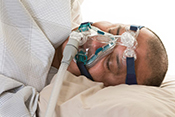 Photo: ©iStock/yelo34
Photo: ©iStock/yelo34
(07/16/2020)
Black patients were less likely than white patients to use prescribed sleep apnea devices, in a VA Greater Los Angeles Healthcare System study. Researchers looked at data on more than 2,000 Veterans diagnosed with obstructive sleep apnea. All patients were prescribed a positive airway pressure (PAP) machine. Black patients were 36% less likely than white patients to adhere to PAP use 30 days after diagnosis. The results suggest health inequality related to sleep apnea, according to the researchers. More research is needed on the cause of this disparity, they say. (Journal of Clinical Sleep Medicine, April 8, 2020)
Cirrhosis hospitalizations decline due to COVID-19
 Photo: ©Peter Horrox
Photo: ©Peter Horrox
(07/16/2020)
Hospitalizations for cirrhosis have dropped sharply because of COVID-19, found a study by Corporal Michael J. Crescenz VA Medical Center researchers. They looked at data on more than 7,000 VA patients with cirrhosis in 2019 and 2020. Hospitalizations related to cirrhosis per week were significantly fewer in mid-2020, compared with before the pandemic. Shelter-in-place orders or rates of COVID-19 cases and deaths did not affect the weekly average. The researchers found significantly more end-stage liver disease admissions as the pandemic went on, indicating more severity. This finding suggests cirrhosis patient outcomes are being hurt by the pandemic, say the researchers. The study also showed that as the pandemic went on, academic hospital admissions, length of stay, and hospital transfers all decreased. These changes likely reflect efforts to preserve inpatient resources, and guidance urging people to stay home, say the researchers. How these patients are being managed as outpatients is unclear, but it is likely they do not currently have adequate health care access, say the researchers. They add that the findings parallel changes seen in other resource-intensive conditions, such as congestive heart failure. (Gastroenterology, May 6, 2020)
Trauma exposure worsens work-related outcomes in women Veterans
 Photo: ©iStock/PeopleImages
Photo: ©iStock/PeopleImages
(07/09/2020)
Women Veterans who experienced trauma had worse work-related outcomes, in a study by VA Boston researchers. More than 350 women Veterans answered surveys about trauma experiences and work. Participants reported high rates of trauma exposure. Nearly half were not working. Military-related trauma, military sexual assault, and adult sexual assault were all linked to worse job functioning. Participants with PTSD and depression related to trauma were less likely to be employed than those without these conditions. The results highlight the need to screen for trauma exposure and address work-related needs of women Veterans, say the researchers. (International Journal of Environmental Research and Public Health, June 25, 2020)
Telehealth adherence in patients with heart failure
 Photo: ©iStock/FG Trade
Photo: ©iStock/FG Trade
(07/09/2020)
VA researchers identified factors that added to home telehealth adherence for patients with heart failure. The researchers studied data on Veterans with heart failure in the VA Home Telehealth Program at several time points after enrollment. Patients in the program are expected to participate in daily monitoring of their symptoms and health. The researchers found that participation increased the longer patients remained in the program. Being older and not having depression were also associated with greater program adherence. Black and other non-white patients had lower adherence, compared with white patients. The findings can help target patients who need more encouragement to use the program, according to the researchers. (Journal of Gerontological Nursing, July 1, 2020)
Statin use linked to lower risk of death in older patients
 Photo: ©iStock/rogerashford
Photo: ©iStock/rogerashford
(07/09/2020)
Taking statins was linked to lower risk of death in older patients, in a study by VA Boston Healthcare System researchers. Statins are medications for lowering cholesterol. Until recently, medical guidelines recommended halting statin therapy at age 75. The study of more than 300,000 Veterans using VA health care found that people 75 and older without heart disease who were prescribed a statin had a 25% lower risk of all-cause mortality and a 20% lower risk of heart-related death, compared with those not on the drug The results suggest that age is not a reason to not prescribe statins, say the researchers. (JAMA, July 7, 2020)
Treadmill training helps correct walking problems in prosthetic users
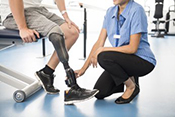 Photo: ©iStock/JohnnyGreig
Photo: ©iStock/JohnnyGreig
(07/06/2020)
Split-belt treadmill walking can help people with prosthetic legs correct gait asymmetry, found a VA Eastern Colorado study. People who use a prosthetic leg because of an amputation often have trouble taking the same sized step with both legs. Researchers had participants with gait asymmetry walk on a treadmill with separate belts for each leg. When each belt was moving at a different speed, participants were able to adjust their gait. They were able to maintain this adaptation after the belts were returned to the same speed, creating more symmetry in their gait in the short term. The results show that adapting step-length symmetry is possible without modifying the prosthetic limb, say the researchers. (Gait & Posture, May 31, 2020)
Hormone biomarkers give insight into PTSD treatment response
 Photo: ©iStock/Mikhail Artamonov
Photo: ©iStock/Mikhail Artamonov
(07/06/2020)
A VA study showed that biomarkers could be used to tell which patients are likely to respond well to PTSD treatment. Researchers studied function of the neuroendocrine system—which regulates hormones—in patients undergoing prolonged exposure therapy for PTSD. Prolonged exposure therapy involved confronting traumatic memories, and is one of the gold standards in PTSD treatment. The researchers found that higher cortisol levels during therapy was linked to more severe PTSD. They also found that baseline levels of three hormones, allopregnanolone, pregnanolone, and cortisol, could predict how well patients reacted to treatment. Higher levels of these hormones before prolonged exposure were linked to greater reductions in PTSD. The findings suggest that neuroendocrine biomarkers could be used to monitor PTSD treatment response, according to the researchers. (Psychoneuroendocrinology, June 8, 2020)
Frailty linked to low bone mineral density in men
 Photo: ©iStock/PIKSEL
Photo: ©iStock/PIKSEL
(07/06/2020)
Frailty is associated with lower bone mineral density in males, found a study by VA researchers and colleagues. Frailty refers to increased vulnerability and weakness due to age. It is often linked to poor health, including low bone mass and fracture risk. Researchers assessed frailty and bone mineral density in both male and female patients with rheumatoid arthritis. They found that women had a higher rate of frailty than men. However, frailty was associated with low bone mineral density only in male patients. The results suggest that sex may influence the relationship between bone mineral density and frailty. (Bone Reports, May 22, 2020)
Opioid misuse common in older adults
 Photo: ©iStock/Aleksandr_Gromov
Photo: ©iStock/Aleksandr_Gromov
(06/23/2020)
Opioid misuse is common in older adults, found a study by Providence VA researchers and colleagues. Most research on opioid misuse focuses on younger people. The researchers studied Medicare data on more than 7 million patients over the age of 65 to find opioid use disorder rates. In the year studied, 1% of patients had opioid use disorder documented on a hospital claim. Among this group, 17% had opioid use disorder as the primary diagnosis, and 83% had it as a secondary diagnosis. One in five opioid-related hospitalizations were for overdose. Given the high prevalence, more research is needed on the needs of older adults with opioid use disorder, say the researchers. (Journal of the American Medical Directors Association, April 2020)
Exercise training reduces protein linked to muscle pain
 Photo: ©iStock/Mary Swift
Photo: ©iStock/Mary Swift
(06/23/2020)
A study by Iowa City VA researchers explored the biological process behind muscle pain caused by exercise. Pain can often limit how much exercise people can engage in. Researchers found that mice undergoing high-intensity interval training had less immediate pain after exercise, based on brain scans. These mice had lower levels of proteins called acid-sensing ion channels (ASICs) in neuron cells. The researchers also found that mice that genetically did not produce the ASIC protein did not experience immediate exercise-induced muscle pain. The results suggest that pain after exercise is linked to ASICs. They also suggest that high-intensity exercise training reduces ASIC production, thereby reducing muscle fatigue. Low-intensity exercise was not linked to less ASIC. The findings help explain why training increases exercise capacity, according to the researchers. (Journal of Applied Physiology, May 28, 2020)
Less sleep time may predict higher chance of dementia
 Photo for illustrative purposes only. ©iStock/amenic181
Photo for illustrative purposes only. ©iStock/amenic181
(06/23/2020)
Total sleep time may be a useful biomarker of dementia, according to a Michael E. DeBakey VA Medical Center study. Researchers studied data from nearly 70,000 sleep studies conducted over a 20-year period in VA. They found that lower total sleep time predicted greater odds of dementia diagnosis in patients. The study suggests that less than 360 minutes (six hours) per night is a good cut-off to predict greater odds of dementia. This cut-off could help clinicians assess a patient's risk of dementia, say the researchers. (Sleep, May 27, 2020)
Mental health treatment improves lung cancer outcomes
 Photo: ©iStock/Chinnapong
Photo: ©iStock/Chinnapong
(06/16/2020)
Treatment for mental health disorders led to better outcomes in patients with lung cancer, found a study by San Francisco VA researchers and colleagues. Researchers looked at data on more than 55,000 Veterans diagnosed with non-small cell lung cancer. About 18,000 had pre-existing mental health disorders. Among this group, those in mental health treatment programs were less likely to be diagnosed at a later stage of their cancer and were more likely to receive stage-appropriate cancer treatment, compared to those not in mental health treatment. They were also less likely to die from lung cancer or any other cause during the study period. Participation in housing and employment support programs was also linked to similar cancer outcome improvements. The results show that investing in mental health and social needs can improve other aspects of health such as cancer, say the researchers. (JAMA Oncology, June 4, 2020)
Prolonged exposure therapy reduces trauma-related guilt
 Photo: ©iStock/kieferpix
Photo: ©iStock/kieferpix
(06/16/2020)
Prolonged exposure therapy for PTSD and substance use disorder reduces feelings of guilt, according to a VA study. PTSD is often accompanied by trauma-related guilt, which is usually related to negative views of one's actions or inactions during a traumatic event. Researchers assessed guilt in more than 100 Veterans with both PTSD and SUD. Half received prolonged exposure therapy designed to treat both conditions together. The rest received therapy focusing on coping skills. The prolonged exposure group reported significantly lower guilt over time, compared to the other group. The results show that exposure-based treatment for both PTSD and SUD is more effective at reducing guilt than non-exposure treatment, conclude the researchers. (Journal of Traumatic Stress, June 10, 2020)
Patient-aligned care teams help keep patients in VA care
 Photo for illustrative purposes only. ©iStock/FatCamera
Photo for illustrative purposes only. ©iStock/FatCamera
(06/16/2020)
Patient-aligned care teams (PACTs) positively affect patient use of VA health care, found a study of data on 1.5 million patients. PACTs are a team-based approach to care that involves the patient in decision-making. The model focuses on easy access to care, care coordination, better communication, and self-management. Researchers used a quality measure of how well PACTs had been implemented at each VA primary care practice. Patient attrition was lower in practices with higher PACT implementation scores, compared to those with worse implementation. Out of the 1.5 million patients, 4.4% dropped out of care during a two-year follow-up. At the lowest-scoring PACT locations, this rate was 4.8%. At the highest-scoring locations, the attrition rate was 4.0%. The results show that better PACT implementation positively affects patients' decisions to stay in VA care. (Healthcare, June 2020)
Psychotic symptoms linked to solitary confinement in incarcerated individuals
 Photo: ©iStock/Rattankun Thongbun
Photo: ©iStock/Rattankun Thongbun
(06/03/2020)
Incarcerated people with psychotic symptoms are more likely to be placed in solitary confinement, found a Maryland VA researcher and colleague. People with psychiatric disorders are disproportionately represented in the U.S. prison system. The researchers surveyed 176 previously incarcerated people. Those with a schizophrenia diagnosis or psychotic symptoms were more than twice as likely to have been placed in solitary confinement, compared to those without psychiatric conditions. More research is needed to determine whether prisoners are placed in solitary confinement based solely on behaviors related to psychiatric illness, according to the researchers. Such action could violate the Americans with Disabilities Act, they say. (Psychiatry Research, May 21, 2020)
Secure messaging from clinicians improves diabetes patient self-management
 Photo: ©iStock/fizkes
Photo: ©iStock/fizkes
(06/03/2020)
Diabetes patients who received online messaging support from their clinicians better self-managed their care, in a study by researchers at the Edith Nourse Rogers Memorial Veterans Hospital in Massachusetts. Secure messaging over the internet allows doctors and patients to communicate in between visits. The study included more than 400 Veterans with diabetes who used VA's My HealtheVet online patient portal. Patients who received at least one proactive message about their care were more likely to engage in better diabetes self-management, compared to patients who were not messaged. They also reported a higher sense of self-confidence. Proactive communication from clinical teams can foster a patient's sense of autonomy and encourage better self-care, conclude the researchers. (Journal of General Internal Medicine, May 21, 2020)
Blood thinner linked to higher fracture risk
 Photo: ©iStock/Hailshadow
Photo: ©iStock/Hailshadow
(06/03/2020)
Atrial fibrillation patients taking the blood thinner warfarin had a higher risk of fractures than patients taking other blood-thinning drugs, in a study by Minneapolis VA researchers and colleagues. Atrial fibrillation is an irregular heart rate that causes poor blood flow. Patients with the condition are often prescribed blood thinners (anticoagulants) to prevent stroke and other problems. Some evidence has shown that the common anticoagulant warfarin may be linked to poor bone health. The researchers looked at data on nearly 170,000 patients with atrial fibrillation. They found that patients taking warfarin were more likely to have bone fractures, compared to those taking newer oral anticoagulants. This difference was especially high in patients with osteoporosis. The drug apixaban had the lowest fracture risk. The findings suggest that caution should be used when prescribing warfarin to patients with a high risk of fracture, say the researchers. (JAMA Internal Medicine, February 2020)
Blood pressure variability linked to heart failure risk
 Photo: ©iStock/LumiNola
Photo: ©iStock/LumiNola
(05/28/2020)
Blood pressure variability is associated with heart failure risk in people with diabetes, according to a study by VA researchers. Blood pressure variability is known to be a risk factor for cardiovascular disease. But its relationship with heart failure is less clear. The study found that variability in both systolic and diastolic blood pressure was connected to increased risk of heart failure. Variability increased the risk independently of elevated average blood pressure. The effects of blood pressure variability appear to be related to dips in pressure, not with elevations. The results will help optimize blood pressure treatment in patients with diabetes, according to the researchers. (Diabetes Care, April 23, 2020)
Parkinson's patients with sleep disorder have poorer mental function
 Photo for illustrative purposes only. ©iStock/adamkaz
Photo for illustrative purposes only. ©iStock/adamkaz
(05/28/2020)
Disordered sleep was linked to poorer mental function in patients with Parkinson's disease, found a VA San Diego study. Many patients with Parkinson's disease are affected by rapid eye movement sleep behavior disorder. Researchers compared cognitive performance between Parkinson's patients with and without the sleep disorder. Those with disordered sleep had poorer executive functioning and learning performance. They also had poorer neuropsychological functioning across all cognitive domains. Those with sleep disorder also showed poorer medication management skills. The results underscore the importance of assessing for sleep disorder in patients with Parkinson's disease, say the researchers. (Journal of the International Neuropsychological Society, May 7, 2020)
HIV linked to lung impairment
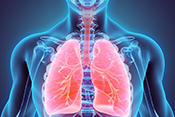 Photo: ©iStock/yodiyim
Photo: ©iStock/yodiyim
(05/28/2020)
HIV-positive men were at increased risk of lung impairment, found a study including a Minneapolis VA researcher. Previous studies have suggested that HIV may increase the risk of chronic lung diseases. The researchers compared several measures of lung function in men with and without HIV infection. Those with HIV had worse defusing capacity, the ability of oxygen to pass from the lungs into the blood. Worse defusing function has been linked to worse quality of life, worse exercise capacity, and higher risk of respiratory disease. HIV status did not affect forced expiratory volume, a measure of how much air can be exhaled during a forced breath. The impairment of the gas defusing capacity may be behind a higher risk of respiratory diseases in men with HIV, according to the researchers. (AIDS, April 13, 2020)
PTSD suppresses the brain's immune system
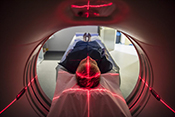 Photo: iStock/JohnnyGreig
Photo: iStock/JohnnyGreig
(05/21/2020)
A study by VA Connecticut and Yale University researchers showed how PTSD is linked with neuroimmune suppression. The researchers compared brain scans of 23 patients with PTSD and 26 without. They found that patients with lower levels of a protein TSPO in the prefrontal-limbic part of the brain had worse PTSD symptom severity. This protein is a biomarker for activation of microglial cells, the brain's first form of immune defense. Those with PTSD had significantly lower TSPO levels than those without PTSD. Those with lower TSPO concentration also had higher levels of C-reactive protein, a protein that is increased when inflammation is present in the body. The findings suggest that PTSD hinders the function of the immune system in the brain, according to the researchers. (Nature Communications, May 12, 2020)
Veterans from lower ranks less likely to use mental health care
 Photo: iStock/SDI Productions
Photo: iStock/SDI Productions
(05/21/2020)
Veterans from lower ranks were less likely to use VA mental health care, found a VA study. Researchers analyzed data on almost 10,000 post-9/11 Veterans. Of those, 34% had at least one mental health condition. Veterans from junior enlisted ranks were significantly less likely than those from higher ranks to use mental health programs and services. Use of these services was similar between male and female Veterans. The study also showed more similarities than differences in mental health care use between Veterans of different racial/ethnic backgrounds. Veterans exposed to combat, with a medical discharge, or with ongoing medical conditions were much more likely to use VA health care services. The results highlight the need to encourage Veterans from lower ranks to seek mental health services, say the researchers. (Psychiatric Services, May 12, 2020)
Adding social workers to primary care teams reduces emergency room visits
 Photo: iStock/peakSTOCK
Photo: iStock/peakSTOCK
(05/21/2020)
Including social workers on VA primary care teams reduced emergency room visits, found a study led by Providence VA Medical Center researchers. The study looked at the effects of adding social workers to rural primary care teams in VA facilities. Results showed that, among high-risk patients, introducing a social worker decreased emergency department visits by 3%. Acute hospital admissions declined by 4.4%. Among all Veterans receiving care at these facilities, social work encounters increased by 33% after social workers were integrated into primary care teams. The results show that including social workers in care is a key strategy to improve care coordination for high-risk patients, say the researchers. (Health Affairs, April 2020)
PTSD may increase risk of autoimmune diseases
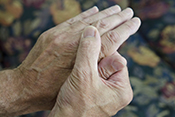 Photo: iStock/KenTannenbaum
Photo: iStock/KenTannenbaum
(05/13/2020)
Service members with PTSD may have a higher risk of autoimmune diseases, found a VA-funded study of active duty personnel. As part of the Millennium Cohort Study, researchers looked at data on more than 120,000 service members. They found that those with a history of PTSD had a 58% higher chance of having an autoimmune disease. Autoimmune diseases included rheumatoid arthritis, lupus, inflammatory bowel diseases, and multiple sclerosis. The connection between PTSD and autoimmune diseases was independent of combat experience or prior trauma. The results add to growing evidence that PTSD is a risk factor for autoimmune disease, say the researchers. (BMC Psychiatry, Jan. 15, 2020)
PTSD and alcohol use disorder feed into each other
 Photo: iStock/axelbueckert
Photo: iStock/axelbueckert
(05/13/2020)
PTSD and alcohol use disorder can feed into one another and make both worse, according to a VA San Diego study. PTSD and alcohol use disorder often occur together. Researchers studied symptoms in 107 Veterans being treated for PTSD and alcohol use disorder. They found that greater PTSD symptom severity was linked with greater future alcohol use. Likewise, greater alcohol use was linked with greater future PTSD symptom severity. The effect of PTSD on drinking was higher than the other way around. The findings support the idea of mutual maintenance between PTSD and alcohol use. Integrated treatments for both PTSD and alcohol use may be better than expecting patients to reduce alcohol use before beginning trauma-focused treatment, say the researchers. (Psychology of Addictive Behavior, Feb. 27, 2020)
Migraine genetically linked to other health conditions
 Photo: iStock/g-stockstudio
Photo: iStock/g-stockstudio
(05/13/2020)
Migraine headaches have a shared genetic basis with multiple other conditions, found a study including several VA researchers. The study used data from the UK Biobank, a large repository of genetic information. Researchers found that people with migraine had similar gene variants as those with many other conditions, including heart disease, high cholesterol, and autoimmune diseases. The results confirm past studies suggesting a connection between these conditions. The researchers also identified a genetic similarity between migraine and Type 2 diabetes risk, a connection that had not been identified previously. Notably, the data showed that blood pressure directly contributes to migraine, suggesting that high blood pressure may partially cause migraines in addition to sharing genetic risk factors. (International Journal of Epidemiology, April 19, 2020)
Elective percutaneous coronary interventions in VA largely appropriate
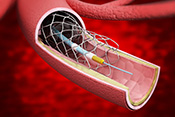 Photo: iStock/adventtr
Photo: iStock/adventtr
(05/06/2020)
Most procedures for stable coronary artery disease in VA medical centers were appropriate, found a study by Rocky Mountain Regional VA and VA Puget Sound researchers. Percutaneous coronary interventions involve treating narrowing arteries with angioplasty or stenting. In patients with stable coronary artery disease, these interventions can relieve symptoms but do not increase survival. They also may cause complications such as bleeding, kidney injury, stroke, or death. Researchers looked at data on these procedures in 59 VA medical centers over a two-year period. They found that 30% of elective procedures were classified as appropriate, and 60% as "may be appropriate." About 10% were deemed "rarely appropriate." While most procedures were appropriate or possibly appropriate, efforts to improve patient selection are still needed, according to the researchers. (JAMA Network Open, April 1, 2020)
Many Veterans prefer virtual health care visits
 Photo: iStock/SDI Productions
Photo: iStock/SDI Productions
(05/06/2020)
Many patients using VA-issued tablets preferred video health care to in-person care, found a VA Palo Alto study. In 2016, VA began issuing tablets to Veterans to allow them to receive care virtually. The program aimed to improve care access for Veterans who face barriers such as transportation issues. Researchers surveyed about 600 tablet recipients about their experiences with telehealth. Satisfaction with the tablet program was high. Almost a third of patients said they preferred virtual care to in-person visits, while 36% said care was "about the same." Patients were more likely to prefer video visits if they felt uncomfortable in a VA setting, had communicated well with their doctor, had substance use disorder, or lived in a place with better broadband coverage. Patients with more chronic conditions were less likely to prefer video visits. The results will help identify which patients would benefit from virtual care, say the researchers. (Journal of Medical Internet Research, April 15, 2020)
Survey: Majority of women Veterans feel welcome at VA
 Photo: iStock/monkeybusinessimages
Photo: iStock/monkeybusinessimages
(05/06/2020)
Researchers surveyed women Veterans at 26 VA locations. Out of more than 1,000 women, 85% said they felt welcome at VA. Not quite a third of the women surveyed answered an open-ended prompt about their experience with VA. Of those, 26% told of feeling uncomfortable or being harassed at a VA facility. Suggestions to improve VA included providing additional resources and clinical services for women Veterans, changing male Veterans' behavior toward women, and making treatment of women and men the same. Although most women Veterans felt welcome in VA, opportunity exists to make them more comfortable and improve their experience in VA, say the researchers. (Women's Health Issues, April 24, 2020)
High-dose folic acid may improve diabetic foot ulcer healing
 Photo: iStock/MangTeng
Photo: iStock/MangTeng
(04/29/2020)
High-dose folic acid may improve diabetic foot ulcer healing, found a Hunter Holmes McGuire VA Medical Center study. Researchers reviewed the charts of 29 Veteran patients with chronic, non-healing diabetic foot ulcers who were treated with high-dose folic acid. Of the study group, 90% saw complete wound closure after folic acid treatment. The researchers also compared the wound healing rate of four subjects with patients who had not received high-dose folic acid. Over a four-week period, the patients treated with folic acid showed significant improvements, compared with the non-treated group. The researchers recommend larger randomized clinical trials to establish how effective high-dose folic acid is at treating diabetic foot ulcers. (Wound Repair and Regeneration, March 5, 2020)
Shifting risk factors for cirrhosis
 Photo: iStock/Rasi Bhadramani
Photo: iStock/Rasi Bhadramani
(04/29/2020)
The most common risk factors for cirrhosis may have shifted, found a study by Michael E. DeBakey VA Medical Center researchers. Previous studies identified active viral infection with hepatitis B or C as the most common risk factors for cirrhosis and liver cancer. In this study, researchers looked at more than 1,000 patients with cirrhosis. They found that the most common cirrhosis and liver cancer risk factors had shifted to resolved hepatitis C and fatty liver disease. They also found racial and ethnic differences in risk factors. Hispanic patients with cirrhosis were more likely to have obesity, diabetes, and non-alcoholic fatty liver disease, compared with other groups. These risk factors were less common in black patients. Black patients had higher rates of alcoholic liver disease and heavy alcohol drinking than other groups. The results suggest that minorities may still face a higher burden of chronic liver disease, say the researchers, and that multiple risk factors should be examined to monitor for cirrhosis. (Gastroenterology, March 29, 2020)
High-dose flu vaccine may improve response in rheumatoid arthritis patients
 Photo: iStock/SDI Productions
Photo: iStock/SDI Productions
(04/29/2020)
High-dose flu vaccines posed no risk and offered some benefits to patients with rheumatoid arthritis, found an Iowa City VA study. People with rheumatoid arthritis taking arthritis medications are at risk for severe cases of the flu and may not respond well to the flu vaccine. Rheumatoid arthritis patients were given either a standard or high dose of the flu vaccine. High-dose patients had a higher antibody response, although the difference was small. Neither group showed any safety concerns. Although larger studies are needed, high-dose flu vaccines may be a good option for rheumatoid arthritis patients considering their increased flu risk, say the researchers. (Vaccine, April 12, 2020)
PTSD increases women Veterans' risk of heart disease
 Photo for illustrative purposes only. ©iStock/patrickheagney
Photo for illustrative purposes only. ©iStock/patrickheagney
(04/23/2020)
PTSD significantly increased the risk of ischemic heart disease in woman Veterans, found a VA Greater Los Angeles Health Care System study. In ischemic heart disease, the heart does not get enough blood because of plaque in the arteries. It is the most common type of heart disease. Researchers looked at data on women Veterans visiting VA medical centers between 2000 and 2017. Out of more than 800,000 women, about 18% had PTSD. These women had significantly higher risk for ischemic heart disease, compared with women without PTSD. This risk was independent of age, obesity, alcohol use, and other factors related to heart disease. Previous research has linked PTSD with ischemic heart disease in men, but studies in women have been limited. The researchers recommend early and routine screening for ischemic heart disease in women Veterans with PTSD. (Journal of the American College of Cardiology, March 2020)
Opioid agonist therapy infrequent in VA
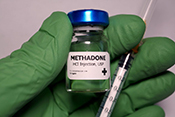 Photo: ©iStock/Hailshadow
Photo: ©iStock/Hailshadow
(04/23/2020)
Opioid agonist therapy is delivered infrequently in VA hospitals, found a study by VA Portland researchers and colleagues. Opioid agonists are medications, such as methadone and buprenorphine, that help prevent withdrawal from and cravings for opioids. Researchers looked at data on more than 12,000 patients with opioid use disorder who were hospitalized at a VA facility. Only 15% received opioid agonists, mostly to help with withdrawal symptoms. Just 2% began agonist treatment after discharge. Treatment delivery frequency varied across the health system. The results show that policy and educational steps should be taken to promote hospital-based opioid agonist therapy, say the researchers. (Journal of General Internal Medicine, April 14, 2020)
Brain activity relation to emotions could predict PTSD treatment response
 Photo: ©iStock/alvarez
Photo: ©iStock/alvarez
(04/23/2020)
How well patients respond to PTSD treatment may be linked to how regions of the brain activate and connect with other regions, according to a VA study. Researchers used MRI to study brain signals in Veterans with PTSD. Patients were treated with either prolonged exposure therapy, medication, or both and compared to a control group. Results showed that patients with greater activation in brain regions related to emotional processing and modulation before treatment responded better to all types of treatment. Greater connectivity between brain regions involved in attention and emotional processing also positively affected PTSD improvement. The findings suggest that measuring how these brain regions function could help predict PTSD treatment response, according to the researchers. (Depression and Anxiety, April 19, 2020)
Editorial: Pandemic could increase suicide risk
 Photo for illustrative purposes only. ©iStock/Marjan_Apostolovic
Photo for illustrative purposes only. ©iStock/Marjan_Apostolovic
(04/16/2020)
An editorial by VA Puget Sound psychologists warns that COVID-19 may lead to increased risk of suicide. The "secondary consequences" of social distancing could put people at higher risk. These consequences include economic stress, social isolation, decreased community support, and barriers to mental health treatment. Increased national anxiety linked to 24/7 news coverage and a surge in U.S. gun sales could also raise the suicide risk for some, say the researchers. The editorial suggests several steps to improve suicide prevention during the crisis. Staying socially connected by telephone and video can help ease feelings of isolation. Efforts to increased access to mental health care, especially using telemedicine, could give at-risk patients the support they need. The authors also offer an optimistic view of one possible result of the pandemic. Suicide rates have historically declined after national disasters and tragedies such as the 9-11 terrorist attacks. It is possible that pulling together when facing trying times can strengthen social connectedness and make people feel that life is more precious, say the researchers. (JAMA Psychiatry, April 10, 2020)
Prolonged exposure therapy could improve sexual desire problems
 Photo: ©iStock/vadimguzhva
Photo: ©iStock/vadimguzhva
(04/16/2020)
Prolonged exposure therapy for PTSD could improve sexual desire problems, found a study that included an Atlanta VA researcher. People with PTSD often report difficulties with sexual functioning, including sexual desire. The researchers assessed nearly 200 Veterans who were undergoing prolonged exposure therapy for PTSD. They found that patients who saw PTSD symptom improvement also experienced improved sexual desire. Those who did not respond to the treatment did not see sexual desire improvements. Patients with severe depression at the start of treatment showed less sexual desire improvement than patients without depression, regardless of PTSD improvement. The results suggest that prolonged exposure could help with PTSD-related sexual desire problems. (Psychiatry, April 1, 2020)
Spiritual difficulties may increase suicidal thoughts
 Photo for illustrative purposes only. ©iStock/PeopleImages
Photo for illustrative purposes only. ©iStock/PeopleImages
(04/16/2020)
Spiritual difficulties were linked with increased suicidal thoughts, in a Durham VA study. Researchers collected data on religion and spirituality for a thousand Iraq and Afghanistan Veterans. They found that perceived lack of control and problems with self-forgiveness increased the risk of suicidal thoughts. Perceived punishment by God and a lack of meaning or purpose significantly increased the risk of suicide attempts. The results suggest that screening for spiritual difficulties, possibly in collaboration with chaplains, could help detect Veteran suicide risk, according to the researchers. (Depression and Anxiety, April 5, 2020)
Study: Patient outcomes similar with nurse practitioners or physicians
 Photo for illustrative purposes only. ©iStock/GlobalStock
Photo for illustrative purposes only. ©iStock/GlobalStock
(04/10/2020)
VA patients with a nurse practitioner as their primary care provider (PCP) had similar health outcomes as those with a medical doctor as the PCP, found a VA Puget Sound study. Researchers looked at data on over 800,000 VA patients who had originally been assigned a doctor as their PCP. Each patient's PCP had left VA practice, meaning the patient was then reassigned to either a doctor or nurse practitioner. The researchers found little difference between the two groups for clinical outcomes, costs, and receipt of diagnostic tests. Patients reassigned to a nurse practitioner were less likely to use primary or specialty care services, but still had similar health results. The study confirms that nurse practitioners offer a cost-effective way to address anticipated shortages of primary care physicians, say the researchers. (Health Services Research, April 2020)
Mind-body skills intervention improves PTSD symptoms
 Photo: ©iStock/PeopleImages
Photo: ©iStock/PeopleImages
(04/10/2020)
A mind-body skills group significantly improved patients' PTSD symptoms, in a study at the Southeast Louisiana VA. A group of 108 Veterans with PTSD received 10 weeks of either the mind-body skills intervention along with standard treatment, or standard treatment only. The mind-body program included meditation, guided imagery, biofeedback, and group support. Standard treatment consisted of trauma-focused psychotherapy. Patients in the mind-body group had significantly better PTSD improvement compared with the control group. They saw improvements in hyperarousal and avoidance that lasted at least two months after treatment, as well as decreased anger and sleep disturbances. The findings show that the mind-body skills intervention offers promise for relieving PTSD symptoms, according to the researchers. (Psychological Trauma, March 5, 2020)
Stem cells accelerate diabetic wound healing in mouse model
 Photo: ©iStock/dra_schwartz
Photo: ©iStock/dra_schwartz
(04/10/2020)
Stem cells could accelerate diabetic wound healing, found a study that included a VA Connecticut researcher. The team embedded human smooth muscle cells derived from stem cells into a 3-D collagen scaffold. They then placed the scaffold into diabetic wounds on mice. The stem-cell implantation increased concentrations of biological products involved in wound healing. The stem cells accelerated the healing process, compared to control wounds not treated with the scaffold. While the technique has to be studied further, say the researchers, it is a promising potential therapy for diabetic wounds. (Regenerative Medicine, March 31, 2020)
Patient hassles lead to delayed or skipped care
 Photo for illustrative purposes only. ©iStock/DjelicS
Photo for illustrative purposes only. ©iStock/DjelicS
(04/02/2020)
Health care hassles greatly increase patients' likelihood of delaying or forgoing care, according to a VA Greater Los Angeles study. Researchers surveyed women Veterans receiving care at 12 VA medical centers. They found that 39% reported four or more hassles to obtaining care, while 26% reported no hassles. Hassles included the work a patient must do to get questions answered between appointments or to navigate pharmacy, testing, and specialty services. Patients who said they faced four or more hassles were five times more likely to delay or skip care, compared to those with no hassles. Improving communication and coordination hassles is an important step in improving patients' access to care, say the researchers. (Healthcare (Amsterdam, Netherlands), Feb. 29, 2020)
Gender differences in newly separated Veterans' health care use
 Photo for illustrative purposes only. ©iStock/Human Role
Photo for illustrative purposes only. ©iStock/Human Role
(04/02/2020)
Researchers from the VA Central Western Massachusetts Healthcare System identified gender differences in newly separated Veterans' health care use. They surveyed nearly 50,000 Veterans about 90 days after military separation and then again a year later. Results showed that sleep problems, anxiety, and depression were linked to greater health care use for both men and women. Women were twice as likely as men to use health care in general. However, men and women were equally likely to use VA care. For women Veterans, unstable housing at separation was linked with less health care use a year later, especially for those with mental health issues. The results suggest that VA needs to do more to reach out to women Veterans considering that they are more likely to use health care than men but not more likely to use VA care, say the researchers. One way to improve this disparity, they say, may be housing assistance programs targeting women. (American Journal of Managed Care, March 2020)
Infectious disease specialist consultation improves long-term S. aureus outcomes
 Photo: ©iStock/South_agency
Photo: ©iStock/South_agency
(04/02/2020)
Infectious disease consultation improves long-term outcomes for patients with Staphylococcus aureus bacteremia, found an Iowa City VA study. Bacteremia is when the bacterial infection makes it into the bloodstream. Studies have shown that 15% to 30% of patients with S. aureus bacteremia die within 30 days. They also have high rates of infection recurrence. Researchers studied data on more than 30,000 VA patients who had the infection. About half of the patients had a consultation with an infectious disease specialist during their initial hospital stay. These patients were 23% less likely than patients who had not had a consultation to die from any cause in the five years after hospitalization. They were also 32% less likely to have a bacteremia recurrence five years later. The results suggest that consulting infectious disease specialists improves patients' long-term health, say the researchers. (JAMA Network Open, Feb. 5, 2020)
Trust of electronic health records sharing differs by race
 Photo for illustrative purposes only. ©iStock/DragonImages
Photo for illustrative purposes only. ©iStock/DragonImages
(03/19/2020)
Patient views on sharing electronic health records differed by race, in a study of nearly 20,000 Veterans. Currently, VA patients must opt in to allow their electronic health records to be shared with outside health care providers. But as VA transitions to a new electronic health record system, it is switching to an opt-out model to make data-sharing easier. In the opt-out model, patient data can be shared with other health care providers unless the patient withdraws consent. Researchers surveyed patients about their preferences for providing data-sharing consent. A majority of white patients, 57%, preferred an opt-out policy. But patients of other races were less likely to prefer the opt-out model: 48% of Asian/Pacific Islander patients, 45% of Hispanic patients, 40% of black patients, and 38% of Native American patients preferred this policy to opt-in. The results show that cultural sensitivity and trust must be considered during the electronic health records implementation, say the researchers. (Journal of the American Informatics Association, March 9, 2020)
Hoarding treatment shows promise
 Photo: ©iStock/Dennis Torkhov
Photo: ©iStock/Dennis Torkhov
(03/19/2020)
A community-based intervention for hoarding disorder shows promise, found a VA San Diego study. Hoarding refers to compulsively acquiring and saving large quantities of things, and it can often impede daily living. It is much more common in older adults than younger people. Researchers tested a treatment called Cognitive Rehabilitation and Exposure/Sorting Therapy (CREST). During an initial two-year program, 15 out of 37 participants completed the program. In those 15, there was significant improvement in hoarding severity and clutter volume. After the initial test, the program was expanded to reach more patients. The results suggest that CREST can be successfully used in the community with positive results, according to the researchers. (International Psychogeriatrics, March 5, 2020)
Many providers unaware of COPD treatment guidelines
 Photo for illustrative purposes only. ©iStock/nimis69
Photo for illustrative purposes only. ©iStock/nimis69
(03/19/2020)
Many primary care providers in VA are unaware of recommendations for treating chronic obstructive pulmonary disease, found a VA study. Inhaled corticosteroids are recommended for COPD only when patients have frequent exacerbations. But more than 50% of Veterans with mild to moderate COPD are prescribed the medication. A survey of primary care providers at 13 VA facilities found that providers are largely unaware of current evidence and recommendations. For example, 46% of those surveyed did not know of the risk of pneumonia caused by corticosteroids. Providers said they were unable to keep up with current literature because of the broad scope of practice. Many were also reluctant to change prescriptions from other doctors. The results support the idea that lack of awareness on guidelines is an important part of corticosteroid overuse, say the researchers. (Journal of General Internal Medicine, January 2020)
Augmentee status and mental health risk in women service members
 (U.S. Army Reserve photo by Master Sgt. Michel Sauret,for illustrative purposes only.)
(U.S. Army Reserve photo by Master Sgt. Michel Sauret,for illustrative purposes only.)
(03/12/2020)
Women in the Reserves or National Guard who deploy on temporary duty assignments without their home unit may be at higher risk of mental health problems than those who serve in their regular units. Researchers with the Central Arkansas and Iowa City VA health care systems surveyed women who deployed to Iraq or Afghanistan as individual-augmentees. Individual-augmentees are service members who deploy with a unit other than their regular one. Compared to women who deployed with their home unit, these women were more likely to experience depression, PTSD, and binge drinking. Women in the Reserves or National Guard also had higher mental health risk than active duty women. Prior studies have found similar results in men. The results suggest that particular focus should be given to the mental health risks of Reserve/Guard women who deploy as individual-augmentees, say the researchers. (Women's Health Issues, Feb. 18, 2020)
Antimicrobial hospital curtains fall short in curbing contamination
 Photo: ©iStock/pixelci
Photo: ©iStock/pixelci
(03/12/2020)
Antimicrobial curtains did not reduce hospital room contamination in an Iowa City VA and University of Iowa study. Researchers compared the microbe levels on hospital room privacy curtains in an intensive care unit. Some rooms had standard curtains, while others had curtains impregnated with halamine, an antimicrobial polymer. The rooms with antimicrobial curtains did not have lower contamination levels than the rooms with standard curtains. Antimicrobial curtains that were sprayed twice weekly with disinfectant had lower microbe levels than unsprayed antimicrobial curtains, but the effect lasted only 72 hours. Further study is needed to find out what, if any, effect antimicrobial curtains have on infection rates, according to the researchers. (American Journal of Infection Control, March 2, 2020)
Exercise boosts quality of life after liver transplant
 Photo for illustrative purposes only. ©iStock/Yuri_Arcurs
Photo for illustrative purposes only. ©iStock/Yuri_Arcurs
(03/12/2020)
Exercise can improve quality of life after a liver transplant, found a review including a VA Pittsburgh researcher. Physical fitness and frailty often improve slowly and may even deteriorate after a liver transplant. Based on a review of the available literature, researchers found that an exercise program can improve both fitness and quality of life for transplant patients. In addition to combating muscle loss and frailty, exercise can counteract post-transplant metabolic syndrome, which causes complications such as diabetes and hypertension. Exercise can improve post-transplant quality of life through both better health and increased social support. The researchers suggest that a tailored exercise program be part of post-transplant care. (Liver Transplant, March 3, 2020)
Quality of life improvements for PTSD patients differ by gender
 Photos for illustrative purposes only. ©iStock/ Petko Ninov; DigitalSkillset
Photos for illustrative purposes only. ©iStock/ Petko Ninov; DigitalSkillset
(03/06/2020)
How PTSD treatment improves quality of life differs in men and women patients, found a study by VA San Diego researchers. While cognitive processing therapy has been shown to improve PTSD symptoms, the treatment's effect on quality of life is less well-understood. The study looked at quality of life outcomes of men and women undergoing this treatment. Results showed that a reduction in depression symptoms was most likely to improve quality of life for women with PTSD. For men, reduced feelings of anger best predicted quality of life improvements. The findings suggest that the effectiveness of PTSD treatment should be evaluated within the context of gender, say the researchers. (Military Medicine, Feb. 20, 2020)
Neurofeedback has potential as schizophrenia treatment
 Photo: ©iStock/leezsnow
Photo: ©iStock/leezsnow
(03/06/2020)
Neurofeedback could improve cognitive function in patients with schizophrenia, but more study is needed, according to a VA San Diego and University of California at San Diego study. In neurofeedback, patients are able to directly see visual or auditory representations of their own brain activity. It may allow patients to modulate their neural activity. The review found some evidence that neurofeedback can lead to measurable changes in brain function in schizophrenic patients. However, most studies on the subject are either case studies or studies with small sample sizes. Large, randomized clinical trials are needed to validate the effectiveness of neurofeedback in schizophrenia, according to the researchers. (Schizophrenic Bulletin, March 2, 2020)
Possible biomarkers of traumatic brain injury identified
 Photo: ©iStock/nicolas
Photo: ©iStock/nicolas
(03/06/2020)
VA researchers and colleagues identified six new biomarkers that could possibly be used to identify traumatic brain injury caused by blasts. In a mouse model of blast exposure, the researchers performed two different tests to identify proteins linked to TBI. They found 75 unique proteins present in the thalamus of blast-exposed mice but not in control mice. They also tested the blood and found antibodies linked to 46 proteins in blast-exposed mice. Six of the identified proteins showed up in both tests. These six proteins have potential as biomarkers to identify blast-related TBI through blood tests, say the researchers. (Heliyon, Feb. 17, 2020)
Study finds unexpected relationship between social connectedness, depression
 Photo: ©iStock/kali9
Photo: ©iStock/kali9
(02/27/2020)
A VA Portland study found an unexpected relationship between social connectedness and depression. Researchers surveyed 262 Veterans with depression, asking about social connectedness. Social connectedness comprised social support, interpersonal conflict, loneliness, social norms, and number of confidants. Surprisingly, higher levels of loneliness were linked to decreased depression and suicidal thoughts one year later. A higher number of confidants was linked to increased depression. A more expected result was that higher levels of emotional support led to fewer mental health visits. More study is needed on the seemingly paradoxical relationship between depression and social connectedness, say the researchers. (Social Psychiatry and Psychiatric Epidemiology, Nov. 6, 2019)
Online therapy with peer support useful for depression
 Photo for illustrative purposes only. ©iStock/JohnnyGreig
Photo for illustrative purposes only. ©iStock/JohnnyGreig
(02/27/2020)
An online cognitive behavioral therapy program with peer specialists improved short-term depression symptoms and quality of life for Veterans with depression, in a VA Ann Arbor study. Patients with depression were given either usual care or a computerized cognitive behavioral therapy treatment supported by peer specialists in addition to usual care. Usual care consisted of medication and in-person psychotherapy. The online program included videos, interactive assignments, and symptom self-monitoring, in addition to peer support. Peer specialists were other Veterans who had lived with depression. The treatment group had greater improvement of depression symptoms than the treatment-as-usual group. However, the groups had similar symptoms six months later. The treatment group did have greater improvements in quality of life and mental health recovery three months after treatment. The results show that cognitive behavioral therapy with peer support may be an effective treatment for depression. (Psychological Services, Jan. 14, 2020)
Telehealth PTSD treatment as effective as in-person care, but has higher drop-out
 Photo for illustrative purposes only. ©iStock/FatCamera
Photo for illustrative purposes only. ©iStock/FatCamera
(02/27/2020)
Telehealth is an effective way to deliver PTSD treatment, but it does lead to higher drop-out rates than in-person treatment, found a VA San Diego study. Veteran patients with PTSD received prolonged exposure treatment in one of three ways. Some received treatment at home via teleconferencing. Others received teleconference treatment at a VA facility. For a third group, a therapist traveled to the patient's home for in-person treatment. All three groups saw similar levels of clinical effectiveness. The results confirm previous studies that found telehealth to be an effective way to treat PTSD. However, patients in the home or office telehealth groups were significantly more likely to drop out of treatment before completion. Patients in the at-home in-person group had lower drop-out rates than the other two groups. The results show that prolonged exposure can be effectively delivered via telehealth, say the research, but that treatment with an in-person element can help curb drop-out. (Depression and Anxiety, Dec. 24, 2019)
Study: Increased opioid dose not linked to improved chronic pain
 Photo: ©/Charles Wollertz
Photo: ©/Charles Wollertz
(02/21/2020)
Increasing opioid dosing does not seem to improve chronic pain, found a study by VA Portland researchers and colleagues. The study followed more then 500 patients with musculoskeletal pain for two years. All patients were on a steady opioid dose at the beginning of the study. About 20% of participants had their opioid dose increased at some point. But only 3% of those patients showed any meaningful improvement in their pain. The entire group showed small improvements in pain intensity and other symptoms, regardless of whether their dose had been increased or not. The results suggest that, while stable doses of long-term opioid therapy can improve pain, higher doses do not lead to better results, according to the researchers. (Pain, Jan 24, 2020)
VA patient portal leads to fewer duplicate lab tests
 Photo by Jerry Daliege
Photo by Jerry Daliege
(02/21/2020)
Use of the MyHealtheVet digital portal decreased duplicate diabetes testing among patient who use more than one type of health care, found an Iowa City VA study. MyHealtheVet is a website that allows Veterans to access their VA health care information. It includes a feature called VA Blue Button, which allows users to download their VA medical records. The researchers studied how using the portal affected HbA1c testing in patients receiving health care from both VA and non-VA providers. Those who used Blue Button at least once were significantly less likely to have duplicate testing. Duplicate testing was defined as more than five HbA1c tests in a year. The results show that the VA patient portal can lead to better information-sharing and less wasteful testing. (Telemedicine Journal and e-Health, Feb. 11, 2020)
Mixed results from peer specialists for formerly homeless Veterans
 Photo: ©iStock/kevinruss
Photo: ©iStock/kevinruss
(02/21/2020)
Peer specialists offered some benefit to formerly homeless Veterans for housing stability, but not behavioral health problems, found a VA study. Researchers looked at outcomes for Veterans in the U.S. Housing and Urban Development-VA Supported Housing (HUD-VASH) program. Participants were assigned peer specialist services or treatment as usual. Peer specialists were other Veterans who had shown significant recovery from mental health issues. They used a structured curriculum to meet with their assigned Veteran participants for up to 40 weeks. Peer meetings focused on mental health, substance use recovery, and community integration. Veterans working with the top-performing peer specialists showed greater housing stability between 400 and 800 days after the program began. However, the overall average time spent in housing for the peer group was not statistically higher than those receiving treatment as usual. Behavioral health problems, such as mental health symptoms and addiction severity, were not affected by the peer specialist program. Further study with more sensitive measures is needed on how beneficial the peer program is to these Veterans, say the researchers. (Medical Care, Jan. 7, 2020)
Insight on how subtle cognitive difficulties predict decline
 Photo for illustrative purposes only. ©iStock/fizkes
Photo for illustrative purposes only. ©iStock/fizkes
(02/13/2020)
Patients with subtle cognitive difficulties showed signs of brain changes linked to cognitive decline and Alzheimer's disease, in a study by VA San Diego researchers. They ran PET and MRI brain scans on more than 700 patients. The scans showed that patients with subtle cognitive difficulties had faster amyloid accumulation than cognitively normal patients. Amyloid is a toxic protein. Its build-up in the central nervous system has been linked to Alzheimer's. Patients with subtle cognitive difficulties also showed thinning of a section of the brain called the entorhinal cortex. Patients with mild cognitive impairment—a more advanced stage of cognitive decline—had faster atrophy in the entorhinal cortex and hippocampus. The findings suggest that objective psychological measures of subtle cognitive difficulties could help identify brain changes before impairment becomes noticeable, say the researchers. (Neurology, Jan. 28, 2020)
Sense of purpose may protect against cognitive decline
 Photo: ©iStock/FG Trade
Photo: ©iStock/FG Trade
(02/13/2020)
Having a sense of purpose in life may protect against cognitive decline, found an Atlanta VA and Emory University study. In a survey of more than 5,000 middle-aged participants, a greater sense of purpose was linked with less perceived cognitive decline. Statistical analysis showed that purpose in life is a strong predictor of cognitive decline when considered along with known protective and risk factors for cognition. Protective factors include education, exercise, and activity levels. Risk factors for cognitive decline include depression, health problems, and smoking. Interventions to enhance purpose in life as early as middle age may be useful, according to the researchers. (Journal of Affective Disorders, Feb. 15, 2020)
Benefits of testosterone therapy limited; more research needed
 Photo for illustrative purposes only. ©iStock/FlairImages
Photo for illustrative purposes only. ©iStock/FlairImages
(02/13/2020)
Testosterone treatment in older men may provide small improvements in sexual functioning and quality of life, but little benefit for other common symptoms of aging, according to a Minneapolis VA review. In men with low testosterone, sexual functioning and quality of life improved after testosterone therapy. However, the improvements were low to moderate. The review found little to no effect of testosterone therapy on physical functioning, depression, energy and vitality, or cognition. Not enough evidence exists to draw conclusions on how testosterone treatment affects cardiovascular events or prostate cancer. More research in needed on the possible harms of the treatment. (Annals of Internal Medicine, Jan. 7, 2020)
Pet ownership linked to lower risk of high blood pressure
 Photo for illustrative purposes only. ©iStock/adamkaz
Photo for illustrative purposes only. ©iStock/adamkaz
(02/05/2020)
Pet ownership was associated with lower rates of high blood pressure, in a study by Michael E. DeBakey VA Medical Center researchers and associates. Having a pet has previously been linked to lower cardiovascular risk, mostly due to increased physical activity and social support. Researchers looked at data on more than 10,000 participants to examine the link between pets and health. Pet owners in the study had lower hypertension rates than non-owners. Owning a pet did not seem to affect rates of heart failure, coronary artery disease, diabetes, or stroke. Further studies are needed to draw conclusions on the protective effect of pet ownership, say the researchers. (American Journal of Cardiology, Jan. 29, 2020)
Study points to shortcomings in VA outcomes for joint replacement surgery
 Photo for illustrative purposes only. ©iStock/sturti
Photo for illustrative purposes only. ©iStock/sturti
(02/05/2020)
VA patients have poorer short-term outcomes than non-VA patients in the general population after hip or knee replacement, found a large retrospective study. Researchers, including one from the VA Central Western Massachusetts Health System, looked at data on more than 10,000 VA and nearly 60,000 non-VA patients who had joint replacement surgery. They found that VA patients were more likely to have hospital readmission, prolonged length of stay, and complications. The finding held even after the researchers adjusted for higher rates of illness in the VA population. More research is needed to understand and address the discrepancy between VA and non-VA outcomes, say the researchers. (Journal of the American Academy of Orthopedic Surgeons, Jan. 30, 2020)
Toilet flushing may increase bacteria contamination in hospitals
 Photo: ©iStock/contrastaddict
Photo: ©iStock/contrastaddict
(02/05/2020)
Toilet flushing may contribute to the spread of harmful bacteria in hospitals, according to a study including Iowa City VA researchers. Flushing a toilet can send tiny particles of fecal matter into the air. Researchers took air samples in the rooms of patients with C. difficile infections. They found that concentrations C. difficile and other harmful bacteria were significantly higher after the toilet was flushed. The researchers suggest evaluating prevention measures such as adding toilet lids where they are not currently in place. (Infection Control and Hospital Epidemiology, Jan. 31, 2020)
Sexual dysfunction linked to suicidal thoughts in Veterans with PTSD
 Photo for illustrative purposes only. ©iStock/milanvirijevic
Photo for illustrative purposes only. ©iStock/milanvirijevic
(01/30/2020)
Sexual dysfunction was linked to suicidal thoughts in Veterans with PTSD, in a San Diego VA study. Sexual dysfunction is common in people with PTSD. Researchers assessed 138 Veterans and their partners before they began couples-based PTSD treatment. The assessment showed that decreased sexual pleasure and decreased frequency of sexual intercourse were linked with more recent suicidal thoughts in male Veterans. For female Veterans, increased sexual frequency was marginally linked with increased suicidal thoughts. The results stress the importance of assessing sexual function as a component of mental health for Veterans with PTSD, say the researchers. (Archives of Sexual Behavior, Jan. 8, 2020)
Training program leads to less unnecessary antibiotic prescribing
 Photo: ©iStock/izusek
Photo: ©iStock/izusek
(01/30/2020)
A training program led to less antibiotic prescribing in the VA Pittsburgh Healthcare System. Overprescribing of antibiotics has led to the rise of antimicrobial-resistant bacteria. While many antibiotic stewardship programs have focused on hospitals, most antibiotics are prescribed in outpatient settings. Researchers studied seven VA primary care clinics that underwent antibiotic interventions. The programs involved clinician education, peer comparisons, and computer decision support. The overall number of antibiotic prescriptions decreased significantly after the program. The rate of unnecessary antibiotic prescribing decreased by 36% six months after training. This rate was 25% lower than baseline a year later. The results show that interventions such as this can reduce potentially harmful antibiotic prescribing practices. (Clinical Infectious Diseases, Dec. 9, 2019)
Understanding chemotherapy-resistant lung cancer
 Photo: ©iStock/Design Cells
Photo: ©iStock/Design Cells
(01/30/2020)
Researchers with the Miami VA Healthcare System uncovered a mechanism by which some lung cancer cells resist the chemotherapy drug cisplatin. Researchers used cells in the lab, human blood samples, and mouse models to examine cancer cells at a molecular level. They found that cisplatin-resistant cells had higher activity of an enzyme called IDO1 and higher levels of reactive oxygen species, a chemical byproduct found in many cancers. Reactive oxygen species can cause cell breakdown. But IDO1 initiates the metabolization of kynurenine (an amino acid), which helps cancer cells cope with excessive reactive oxygen species. The researchers were able to use drugs to suppress IDO1 activity. This increased reactive oxygen species levels and in turn inhibited cancer cell growth. The results suggest that IDO1 inhibitors may be a suitable treatment in patients whose lung cancer resists cisplatin, say the researchers. (Molecular Cancer Research, January 2020)
More study needed on best C. difficile prevention practices
 Photo by Mitch Mirkin
Photo by Mitch Mirkin
(01/23/2020)
A study of C. difficile in VA hospitals did not find a clear link between prevention practices and infection rates. Researchers surveyed 123 VA facilities. Since implementing prevention practices in 2012, 49% of facilities reported decreased C. difficile rates. Eighteen percent reported an increase, and 33% reported no change. The variation did not appear to be linked to self-reported cleaning practices, length of contact precautions, use of private rooms, or certification of infection preventionists. More study is needed on what practices prevent C. difficile spread, say the researchers. (Infection Control and Hospital Epidemiology, January 2020)
Primary care visits linked to better statin adherence
 Photo for illustrative purposes only. ©iStock/monkeybusinessimages
Photo for illustrative purposes only. ©iStock/monkeybusinessimages
(01/23/2020)
More frequent primary care visits were linked to higher statin use and adherence, in a Houston VA study. Researchers looked at more than a million patients with atherosclerotic cardiovascular disease at 130 VA facilities. About 80% of patients were on statins to control cholesterol. Patients who frequently saw their primary care providers had more common statin use, higher-intensity statin use, and better statin adherence. Better adherence may be related to a greater rapport between provider and patients, suggest the researchers. (American Heart Journal, Dec. 7, 2019)
Genetics linked to cognitive impairment
 Photo: ©iStock/Nicolas
Photo: ©iStock/Nicolas
(01/23/2020)
Schizophrenic and bipolar patients with cognitive impairment had genetic variations that have also been linked to cognitive problems in the general population, in a study using Million Veteran Program data. Researchers analyzed the genomes of more than 5,000 patients with schizophrenia or bipolar disorder. No single gene variant showed a significant link to cognitive impairment. However, the researchers did find minor correlations between overall cognitive function and a number of variants shown in the past to be involved in cognitive performance, intelligence, and schizophrenia risk. Greater genetic risk of schizophrenia was linked to poorer cognitive performance. The results add to the understanding of how genetics affect cognition, say the researchers. (American Journal of Medical Genetics, Dec. 24, 2019)
Mindfulness program could curb suicide among Veterans
 Photo for illustrative purposes only. ©iStock/electravk
Photo for illustrative purposes only. ©iStock/electravk
(01/16/2020)
Mindfulness-based cognitive therapy shows promise for reducing suicide among Veterans, found a VA New Jersey study. Researchers evaluated 140 Veterans at high risk for suicide. Veterans received either Mindfulness-Based Cognitive Therapy adapted for Suicide (MBCT-S) or VA treatment as usual. MBCT-S combines mindfulness therapy with suicide safety planning. Patients receiving MBCT-S along with usual treatment made fewer suicide attempts within 100 days of treatment. Five of the MBCT-S group attempted suicide, compared with 13 from the control group. MBCT-S patients also showed greater distress tolerance over time. MBCT-S was especially effective in participants who also received VA residential care. No participants receiving both MBCT-S and residential care attempted suicide during the study period. Patients receiving both also had significantly greater improvement on depression, hopelessness, distress tolerance, and suicide-related coping, compared with controls. MBCT-S could be a useful intervention for patients at-risk for suicide, according to the researchers. It can be integrated within existing VA programs, they say. (International Academy of Suicide Research, Oct. 29, 2019)
Study probes link between exercise-induced breathing problems and military exposures
 Photo by Senior Airman Julianne Showalter, USAF
Photo by Senior Airman Julianne Showalter, USAF
(01/16/2020)
Findings on the link between military exposures and exercise-induced breathing problems were mixed in a VA New Jersey study. Exposure to fine particulate matter in the air can lead to breathing problems. Service members in Iraq and Afghanistan were regularly exposed to dust and sand, smoke from burn pits, vehicle exhaust, and regional air pollution. Researchers tested the breathing of 24 Veterans without asthma who were not currently seeking treatment for breathing problems. After an exercise challenge, 17% tested positive for bronchial constriction. This rate is similar to the prevalence in the general population. However, a further 42% of the participants had a probable constriction response that did not meet the full diagnostic criteria. Many of the participants reported persistent cough, wheeze, and shortness of breath at the time of testing. The researchers urge continued monitoring of respiratory symptoms in this population. (Military Medicine, Dec. 31, 2019)
Study: End-of-life care for Vets with hearing and vision loss is up to par
 Photo for illustrative purposes only. ©iStock/seb_ra
Photo for illustrative purposes only. ©iStock/seb_ra
(01/16/2020)
Older Veterans with hearing and vision loss receive similar end-of-life care in VA as those without sensory loss, found a Corporal Michael J. Crescenz VA Medical Center study. Researchers looked at data on more than 42,000 Veterans at 145 VA medical centers. They found that end-of-life care quality indicators were similar between patients with and without sensory loss. Patients with hearing loss had slightly lower pain management scores and less satisfaction with communication. Patients with vision loss were less likely to have received a palliative care consult or contact with a chaplain. Patients with vision loss were also less likely to report excellent overall care and satisfaction with emotional support, but most care outcomes were similar to those of patients without vision loss. (Journal of the American Geriatrics Society, Dec. 30, 2019)
Complicated grief may make PTSD treatment less effective
 Photo for illustrative purposes only. ©iStock/fizkes
Photo for illustrative purposes only. ©iStock/fizkes
(01/16/2020)
Patients with complicated grief have poorer responses to PTSD treatment, found a VA study. Complicated grief refers to feelings of loss after the death of someone close that are debilitating and do not improve with time. It often occurs with PTSD in military personnel. Researchers analyzed outcomes from Veterans being treated with prolonged exposure therapy and medication for combat-related PTSD. They found that those who also had complicated grief had lower response to PTSD treatment than those with PTSD only. Those with complicated grief had greater PTSD severity and trauma-related guilt both before and after treatment. They were also more likely to have suicidal thoughts during the study than patients with PTSD only. The results suggest that screening for complicated grief as well as PTSD may be needed, say the researchers. (Depression and Anxiety, January 2020)
Gene mutation linked to ALS
 Photo: ©iStock/koto_feja
Photo: ©iStock/koto_feja
(12/19/2019)
A large genetic study including a VA researcher identified a gene linked to ALS. Amyotrophic lateral sclerosis (ALS) is a neurodegenerative disease that affects nerve cells. People with ALS progressively lose control of the body's muscles, which eventually leads to death. Researchers studies the genomes of more than 20,000 patients with ALS and almost 60,000 without to look for genetic causes of the disease. They found that a specific mutation of the gene KIF5A is linked with developing ALS. Mutations to this gene previously have been linked to two other neurodegenerative diseases: hereditary spastic paraplegia and Charcot-Marie-Tooth type 2. However, ALS appears to be linked to a different mutation to gene KIF5A than the other two diseases. The discovery will add to scientists' understanding of the causes and progression of ALS. (Neuron, March 21, 2018; available in PubMed Central in March 2019)
Post-exertion malaise symptom inconsistent in Vets with Gulf War illness
 Photo for illustrative purposes only. ©iStock/ClarkandCompany
Photo for illustrative purposes only. ©iStock/ClarkandCompany
(12/19/2019)
Although many Veterans with Gulf War illness experience post-exertional malaise, the causes and patterns of the condition remain unknown, found a VA study. Post-exertional malaise refers to increased pain, fatigue, and cognitive problems after physical or mental exertion. It is a common symptom of GWI. Researchers compared symptoms of 39 Gulf War Veterans with and 28 without GWI after exercise. Some participants with GWI perceived exercise as more painful and fatiguing, compared with a control group. However, not all participants with GWI reported post-exertional malaise. The results show that post-exertional malaise is not always a symptom of GWI, say the researchers, and more research is needed on the condition. (International Journal of Psychophysiology, Nov. 28, 2019)
Opioids negatively affect pain relief from antidepressant
 Photo: ©iStock/chesiireCat
Photo: ©iStock/chesiireCat
(12/19/2019)
Patients prescribed both opioids and the antidepressant venlafaxine for low back pain had reduced pain relief, in a study including a VA Pittsburgh researcher. Venlafaxine (sold as Effexor) is an antidepressant commonly given to people with chronic pain along with opioids. Because chronic pain and depression are related in a complex way, antidepressant treatment can also reduce pain. The researchers looked at pain relief in older adults with chronic low back pain and depression. They found that patients taking both opioids and venlafaxine had less pain reduction in response to venlafaxine, compared with those not taking opioids. Depression symptoms were not altered by the drug interaction. The study suggests that clinicians may want to reconsider prescribing the two medication together. (Pain Medicine, Oct. 21, 2019)
Drug use treatment up for urban and rural Vets in recent years
 Photo for illustrative purposes only. ©iStock/Viktoriia Hnatiuk
Photo for illustrative purposes only. ©iStock/Viktoriia Hnatiuk
(12/12/2019)
Substance use disorder treatment has increased in recent years for both urban and rural Veterans, found an Iowa City VA study. Researchers looked at admissions data from non-VA treatment centers between 2011 and 2016. The study included data on more than 90,000 Veterans. Both urban and rural Veterans had similar rates of treatment for SUD. Rural Veterans had slightly higher rates of admission for injectable and opiate drug use. Admissions for opioid, heroin, and injectable drug use increased between 2011 and 2016 for both groups. The study shows that monitoring Veteran care outside VA is crucial to understanding and combating drug use in Veterans, say the researchers. (Journal of Rural Health, Dec. 6, 2019)
Sense of purpose appears to ward off cognitive decline
 Photo for illustrative purposes only. ©iStock/Image Source
Photo for illustrative purposes only. ©iStock/Image Source
(12/12/2019)
Greater purpose in life is linked with lower cognitive decline in middle age, according to an Atlanta VA and Emory University study. Researchers used a machine learning algorithm to assess how purpose in live affects perceived cognitive function. Purpose in life refers to a tendency to derive meanings and purpose from life events. Average participant age was 63. Researchers tested cognitive function with a questionnaire that assesses perceived functional problems that may not yet rise to clinical impairment. Those with greater purpose in life had less perceived cognitive decline. This result held true even after considering other factors that affect cognitive decline, such as activity level and depression. The results suggest that purpose in life is a robust protective factor of cognitive decline in middle age. (Journal of Affective Disorders, February 2020)
Low-vision intervention helps, but challenges remain
 Photo by Jerry Daliege
Photo by Jerry Daliege
(12/12/2019)
Low-vision services improved visual ability for patients with macular disease, but patients still lost reading ability, in a study of 255 VA patients. Researchers compared outcomes after patients were given either low-vision assistive devices alone or devices along with therapist rehabilitation. Both groups showed significant improvement in visual ability one year later. However, both groups lost visual reading ability during the study period. This loss in reading ability reduced the benefits gained from the low-vision services provided, according to the researchers. They recommend yearly low-vision follow-ups to assess disease progression and modify treatment. (Optometry and Vision Science, October 2019)
CPAP compliance lowers diabetic retinopathy risk
 Photo for illustrative purposes only. ©iStock/Darunechka
Photo for illustrative purposes only. ©iStock/Darunechka
(12/04/2019)
Using prescribed CPAP machines reduces diabetic retinopathy, found a VA Maine Health Care System study. Obstructive sleep apnea has been linked to diabetic retinopathy. Diabetes can cause damage to the blood vessels in the eyes, a condition called retinopathy. It can eventually lead to blindness. Researchers looked at the rates of retinopathy in patients with diabetes who had been prescribed continuous positive airway pressure (CPAP) therapy to treat sleep apnea. Those who used their CPAP machines regularly were significantly less likely to have retinopathy than those who were not compliant with their treatment. The results show that improving CPAP compliance could lower risk of diabetic retinopathy, say the researchers. (Optometry and Vision Science, November 2019)
Present-centered therapy eases PTSD, but not as much as cognitive behavioral therapy
 Photo: ©iStock/Pornpak Khunatorn
Photo: ©iStock/Pornpak Khunatorn
(12/04/2019)
Present-centered therapy can reduce PTSD symptoms, but is less effective than cognitive behavioral therapy, according to a review by VA National Center for PTSD researchers and colleagues. Present-centered therapy (PCT) focuses on the patient's current life and how to cope with PTSD symptoms. It does not directly confront trauma memories as cognitive behavioral therapy (CBT) does. The review found that PCT reduces PTSD severity, compared with no treatment. However, studies show that CBT is more effective than PCT. Because PCT has a lower treatment dropout rate than CBT, it could be a useful PTSD treatment when patients are resistant to CBT, say the researchers. (Cochrane Database of Systematic Reviews, Nov. 18, 2019)
Amino acid may protect against kidney damage
 Photo: ©iStock/cdascher
Photo: ©iStock/cdascher
(12/04/2019)
Researchers with the Washington DC VA Medical Center have identified an amino acid that may help reverse kidney damage. They tested the effects of the amino acid L-ornithine on proximal tubular cells, the most common type of cells in the kidney. They found that the amino acid activated a protein called calcium-sensing receptor, which protected the kidney cells from harmful chemicals called reactive oxygen species. When ornithine activates the calcium-sensing receptors, they stop reactive oxygen species from being produced. The results show that ornithine could be useful in reversing kidney diseases involving proximal tubular cell damage, according to the researchers. (Cellular Signalling, Nov. 23, 2019)
Excess medication supply potentially a problem for many Vets
 Photo for illustrative purposes only. ©iStock/Burlingham
Photo for illustrative purposes only. ©iStock/Burlingham
(11/27/2019)
Excess medication supply was high among VA health care users, in a study by the VA Center for Healthcare Organization and Implementation Research. Excess medication was defined as having more doses of a prescription than needed to treat a condition. It can occur for a number of reasons, including being prescribed two different formulations of the same drug. Experts consider this a problem because it can increase the risk of overdose and other harms. In a study of almost 5 million Veterans with prescriptions through VA, 64% had at least one duplicated medication. Excess medication was more likely for Veterans with both VA and non-VA health care and with more medical conditions. Patients who had a copay for medication were less likely to have excess medication. The results show that further efforts are needed to make sure patients receive the right amount of medication, say the researchers. ( Medical Care, November 2019)
Insulin overtreatment common in VA nursing homes
 Photo: ©iStock/Maya23K
Photo: ©iStock/Maya23K
(11/27/2019)
Diabetes insulin overtreatment is common in VA nursing homes, found a San Francisco VA Medical Center study. Researchers looked at data on more than 5,000 patients with Type 2 diabetes in VA nursing homes. They found that 14% patients showed signs of overtreatment, based on their HbA1c levels. Only 1.4% showed likely undertreatment. The results suggest that insulin regimens that were appropriate when patients were healthier and living in the community may be too intensive when they get older and transition into nursing homes, say the researchers. Nursing home admission may be a good time to reevaluate diabetes treatment, they conclude. (Journal of Internal Medicine, Nov. 8, 2019)
Study suggests a more accurate approach to diabetes diagnosis
 Photo: ©iStock/ftwitty
Photo: ©iStock/ftwitty
(11/27/2019)
Using HbA1c levels alone can lead to both over- and under-diagnosis of diabetes, according to Atlanta VA researchers and colleagues. HbA1c blood tests determine glucose levels over the previous two to three months. It is the most common test to diagnose diabetes and assess how well patients are controlling their blood sugar. However, for some people the HbA1c test is inaccurate. Some may have higher or lower HbA1c readings than would be expected based on actual glucose levels. The researchers gave participants with diabetes oral glucose tolerance tests, which compare fasting glucose levels with levels after the person is given oral glucose. They found that using HbA1c alone led to under-diagnosis of diabetes for people who had lower HbA1c mismatches, and over-diagnoses for people with mismatches in the other direction. The results suggest oral glucose tests should be used along with HbA1c to ensure a proper diagnosis, say the researchers. ( Diabetic Medicine, Nov. 13, 2019)
Swimming may help protect against knee arthritis
 Photo: ©iStock/microgen
Photo: ©iStock/microgen
(11/18/2019)
A study including a Houston VA researcher found that swimming may help protect against knee arthritis. Researchers surveyed more than 2,000 people about their exercise history and knee health. Participants with a history of swimming for exercise had a modestly lower rate of knee osteoarthritis, compared to those who did not swim. Participants who reported swimming at a younger age (between 12 and 34) were less likely to have osteoarthritis than those who swam when older. Swimmers had slightly lower rates of knee pain than non-swimmers, although the results were not statistically significant. The researchers note the possibility that participants with less arthritis led healthier, more active lifestyles in general and the effects seen were not just from swimming. However, a previous study by the same group showed that people who ran for exercise had lower rates of symptomatic arthritis but not radiographic arthritis, suggesting the benefits in the new study were specific to swimming. They also found that people who played football had higher rates of knee arthritis. Swimming is often recommended for patients with osteoarthritis because it is a non-weight bearing exercise that is easy on the joints. But more study is needed to confirm the benefits of swimming on knee health, say the researchers. (Physical Medicine and Rehabilitation, Oct. 19, 2019)
Studies lacking on women with TBI
 Photo for illustrative purposes only. ©iStock/SDI Productions
Photo for illustrative purposes only. ©iStock/SDI Productions
(11/18/2019)
Female Veterans and service members are not well-represented in traumatic brain injury research, according to a Washington DC VA Medical Center review. Using several databases, the researchers found 29 studies on TBI in Veterans that included women. They found that few studies focused on gender, and most that did had only a small number of female participants. Most guidelines on TBI care are not differentiated based on gender, most likely due to lack of research. Limited evidence suggests that female Veterans with mild TBI report more neurobehavioral symptoms and use more outpatient health services than male Veterans. Studies also show that female Veterans with TBI are more often diagnosed with depression. More research is needed on how TBI specifically affects female Veterans and service members, say the researchers. (Physical Medicine and Rehabilitation, Aug. 10, 2019)
E-cigarettes may make it harder for the body to fight off infection
 Photo: ©iStock/danchooalex
Photo: ©iStock/danchooalex
(11/18/2019)
Electronic cigarettes weaken the body's ability to fight infection by affecting immune cells called neutrophils, found a study by VA San Diego and University of California San Diego researchers. Neutrophils are white blood cells that help control infections. Researchers exposed human cells to e-cigarette vapor in a lab. Exposure to the vapor interfered with neutrophils' ability to respond to the presence of bacteria. The vapor hindered the neutrophils' ability both to move to the site of bacteria and to produce infection-fighting substances. The neutrophils were affected even when nicotine was not present in the vapor, meaning that e-cigarette ingredients other than nicotine may be harmful. The researchers also found that mice exposed to e-cigarette vapor were less able to fight off bacterial infections than control mice. The results suggest that using e-cigarettes could change the immune response and make people more susceptible to infections, according to the researchers. (American Journal of Physiology, Oct. 30, 2019)
Mantram therapy curbs PTSD hyperarousal
 Photo for illustrative purposes only. ©iStock/electravk
Photo for illustrative purposes only. ©iStock/electravk
(11/06/2019)
Mantram repetition therapy may reduce hyperarousal in patients with PTSD, found a VA San Diego study. Hyperarousal, a common PTSD symptom, is a heightened state of anxiety. Common PTSD treatments are less effective at treating hyperarousal than other PTSD symptoms. In the study, researchers had Veterans practice mantram repetition to deal with hyperarousal. Mantram therapy is a type of meditation that employs repeated phrases to train attention and regulate emotions. Those using mantram repetition had greater reductions in hyperarousal, compared with patients using standard psychotherapy only. Those with reduced hyperarousal had greater overall PTSD symptom reduction. The results show that mantram treatment that focuses specifically on hyperarousal could lead to lower PTSD symptoms more generally, according to the researchers. (European Journal of Psychotraumatology, Sept. 30, 2019)
Does frequent switching of reminder signs help hand hygiene in hospitals?
 Illustration: ©iStock/Victor_Brave
Illustration: ©iStock/Victor_Brave
(11/06/2019)
Frequently changing reminder signs did not increase hand hygiene adherence in a study at nine VA medical centers. Proper hand hygiene by health care workers during direct patient contact reduces hospital-acquired infections. But adherence in hospitals to hand-washing guidelines is low. Researchers tested whether increasing the frequency with which hand-hygiene visual reminders were changed would boost adherence. Signs next to antibacterial hand soap dispensers were changed either weekly or monthly to make them more noticeable, or were left the same. Over six months, , hand-washing rates remained nearly the same in all three groups. The researchers concluded that frequently changing signs had no effect on hand hygiene, possibly because of the abundance of other notices in the acute-care setting. (JAMA Network Open, Oct. 2, 2019)
New genetic risk factors for PTSD identified
 Illustration: ©iStock/poba
Illustration: ©iStock/poba
(11/06/2019)
A large genome study identified new genetic risk factors for PTSD. The international study included multiple VA researchers. It examined the genomes of over 30,000 participants with PTSD and 170,000 controls without PTSD. The researchers estimate that 5 to 20% of PTSD risk can be attributed to inherited genes, with heritability higher in women than men. The analysis identified three new locations on the genome where gene variations affect a person's risk for PTSD. Two of these were found only in people of European ancestry and one was only in people of African ancestry. Three other gene locations related to PTSD risk were identified in men only. The study also found that a gene previously linked to Parkinson's disease is also associated with PTSD. The findings advance the understanding of the genetic basis of PTSD, say the researchers. (Nature Communications, Oct. 8, 2019)
Mouse study explores benefits of calorie restriction
 Photo: ©iStock/Eduard Lysenko
Photo: ©iStock/Eduard Lysenko
(11/01/2019)
A VA mouse study has challenged the understanding of how calorie restriction improves health. Limiting calories is known to improve health in mammals, including humans. Prior thought was that this is achieved through improved insulin sensitivity. Researchers at the Madison, Wisconsin, VA tested the effects of calorie restriction on mice with insulin resistance. Calorie-restricted mice had improved fitness and longevity compared to control mice. Calorie rest riction led to similar improvements in both insulin-resistant and non-insulin-resistant mice. The results show that the health benefits of calorie restriction are not solely based on insulin sensitivity, say the researchers. (Cell Reports, Oct. 1, 2019)
Opioids overused in dental care
 Photo for illustrative purposes only. ©iStock/tommaso79
Photo for illustrative purposes only. ©iStock/tommaso79
(11/01/2019)
U.S. dentists prescribe far more opioids than dentists in other countries, found a review that included a Edward Hines, Jr. VA Hospital researcher. For example, 22.3% of U.S. dental prescriptions in 2016 were for opioids, while only 0.6% were for opioids in the United Kingdom. Dentists are among the most frequent prescribers of opioids. Two large reviews cited by the study also showed that other types of pain medication are at least as effective as opioids for controlling dental pain. Because of the risk of opioid addiction, there is clear patient benefit to avoiding opioids for dental pain, say the researchers. (Journal of the American Dental Association, October 2019)
Serious mental illness no barrier to hepatitis C treatment
 Photo: ©iStock/Gligatron
Photo: ©iStock/Gligatron
(11/01/2019)
Serious mental illness such as schizophrenia doesn't affect access to hepatitis C treatment in VA, found a VA Capitol Healthcare Network study. Researchers looked at data on more than 4,000 VA patients with hepatitis C in a two-year period. About 30% of patients began treatment with the hepatitis drug sofosbuvir, one of the newer medications responsible for dramatically high cure rates. There was no difference in treatment rates between patients with and without serious mental illness. The results suggest that VA efforts to expand treatment using the new hepatitis C drugs have extended equally to those with serious mental illness, a group that has traditionally experienced barriers to optimal health care. (Psychiatric Services, Oct. 16, 2019)
Dietary oils could help with diabetic nerve damage
 Photo: ©iStock/mescioglu
Photo: ©iStock/mescioglu
(10/28/2019)
A rat study has shown that dietary oils could be an effective treatment for nerve damage caused by diabetes. Researchers from the VA Iowa City Health Care System and University of Iowa simulated diabetes by giving rats a high-fat diet. They then replaced the fat in the rats' diets (from lard) with unsaturated fats from several dietary oils. Rats given fish oil and flaxseed oil showed improvement in peripheral nerve damage. Enriched fish oil also led to the greatest improvements in vascular dysfunction and cognitive activity. The other dietary oils tested—olive oil, safflower oil, and evening primrose oil—provided no or only small improvements. The results show that dietary fat modification, especially with fish oil, could be a useful treatment for vascular and nerve problems caused by diabetes, say the researchers. (Journal of Diabetes Research, Aug. 7, 2019)
Researchers identify genes related to schizophrenia
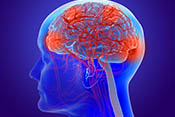 Illustration: ©iStock/Lars Neumann
Illustration: ©iStock/Lars Neumann
(10/28/2019)
A team including VA researchers identified several regions on the genome related to schizophrenia risk. The team sequenced the DNA of more than 1,500 patients with schizophrenia. They found seven regions of the genome that appear to relate to neurological dysfunction in schizophrenia. The analysis also confirmed multiple schizophrenia-related regions identified in previous studies. The results help explain the biological processes of schizophrenia and could lead to new targeted treatments, according to the researchers. (JAMA Psychiatry, Oct. 9, 2019)
Smoking linked to higher prostate cancer mortality
 Photo: ©iStock/sanjagrujic
Photo: ©iStock/sanjagrujic
(10/28/2019)
Smoking is linked to a higher risk of dying from prostate cancer, found a VA San Diego Health Care System study. Researchers looked at more than 73,000 VA patients diagnosed with prostate cancer. The rate of death from prostate cancer was 5.2% for currents smokers within 10 years of their diagnosis. Past smokers had a 4.8% mortality rate, while those who never smoked had a rate of 4.5%. The study shows that prostate cancer diagnosis may be an important opportunity to discuss quitting smoking. (Prostate Cancer and Prostate Diseases, Oct. 17, 2019)
Diabetic Veterans find peer mentors valuable
 Photo for illustrative purposes only. ©iStock/Kali9
Photo for illustrative purposes only. ©iStock/Kali9
(10/17/2019)
Veterans with diabetes found value in a peer mentor program aimed at improving self-care. Veterans at the Corporal Michael J. Crescenz VA Medical Center who had trouble controlling their diabetes were paired with other Veterans who had gotten their blood sugar under control. Mentors called mentees daily to offer encouragement and advice. The researchers interviewed both groups after a six-month period. Participants described several benefits of the program, including accessible support, improved self-confidence, and increased accountability. Some participants faced barriers to the experience, such as scheduling problems and interpersonal conflicts. The more successful mentees said they had a strong connection to their mentor. The study shows that a low-cost peer mentor program can offer support to patients with diabetes that may improve their self-care. (Diabetes Educator, Oct. 9, 2019)
Alcohol withdrawal in VA hospital patients
 Photo: ©iStock/ZzzVuk
Photo: ©iStock/ZzzVuk
(10/17/2019)
Alcohol withdrawal syndrome affected nearly 6% of Veterans hospitalized in VA in 2013, found a VA Puget Sound study. Heavy drinkers may go through withdrawal when they suddenly stop drinking. Withdrawal symptoms include trembling, headache, and even hallucinations and seizures. Researchers looked at data on almost half a million VA hospitalizations. Of those, 5.8% of patients had documented AWS. The prevalence varied widely based on location, facility, admitting specialty, and diagnosis. Psychiatric admissions had a higher rate of AWS than medical or surgical. AWS was especially common during hospitalizations for other alcohol-related disorders, substance use disorders, attempted suicide, and liver injury. (Journal of Addiction Medicine, Oct. 11, 2019)
Tinnitus rates going up in active duty service members
 Photo by Spc. Anthony Zendejas/USA
Photo by Spc. Anthony Zendejas/USA
(10/17/2019)
Tinnitus rates in active duty service members have increased significantly in recent years, according to a study by South Texas VA Health Care System and University of Texas at San Antonio researchers. They studied the health records of more than 85,000 active duty service members. Between 2001 and 2015, the rate of tinnitus more than tripled. Tinnitus refers to a ringing or buzzing in the ears. It is often caused by blast exposure. This was the first study to assess tinnitus rates in active duty rather than in Veterans. Further studies are needed on how hearing damage impacts active duty service members, say the researchers. (American Journal of Audiology, Oct. 16, 2019)
Early deployment could increase suicide risk
 U.S. Army photo by Maj. Thomas Cieslak
U.S. Army photo by Maj. Thomas Cieslak
(10/02/2019)
Early first deployment may increase the risk of suicide attempt, according to a study of U.S. enlisted soldiers. VA San Diego researchers and colleagues looked at data on a large number of soldiers, including 1,700 who attempted suicide. Soldiers who deployed within 12 months of beginning their Army service were 70% more likely to attempt suicide, compared with soldiers who deployed later. The early deployers' risk was elevated both during and after deployment. More study is needed to understand how training and preparedness affect suicidal behavior, say the researchers. (Suicide & Life-Threatening Behavior, Sept. 23, 2019)
Supported employment boosts functional outcomes in PTSD
 Photo: ©iStock/shironosov
Photo: ©iStock/shironosov
(10/02/2019)
Supported employment improves overall PTSD-related functioning, found a VA study. Individual Placement and Support is a VA program to help Veterans with PTSD find jobs. It uses individual-centered job development and employment specialists. Past studies have showed that IPS is more effective than transitional work programs at helping Veterans find sustained employment. The new study of 512 Veterans shows that IPS also improves PTSD-related functions in other areas. In addition to greater work functioning, Veterans given IPS had greater improvement in school, relationship, and lifestyle functioning, compared with those given transitional work. The results show that IPS has benefits beyond helping Veterans with PTSD find work. (Psychiatric Rehabilitation Journal, September 2019)
Brain structures account for transcranial magnetic stimulation effectiveness
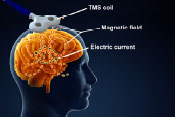
(10/02/2019)
A team including Providence VA Medical Center researchers identified brain structures that influence the effectiveness of transcranial magnetic stimulation for PTSD and depression. In TMS, magnets are placed on the outside of the head to affect electrical signals in the brain. The therapy has emerged in recent studies as a promising treatment for PTSD. Researchers used MRI to study the pre-TMS brain structure of 20 patients. Those with greater connectivity in the anterior thalamic radiation (fiber pathways in the white matter) had greater symptom relief after TMS. The results suggest that this brain area could be a good target for TMS treatment, according to the researchers. (Depression and Anxiety, Sept. 2, 2019)
Metformin, versus sulfonylureas, linked to fewer heart issues for diabetes patients with weakened kidneys
 Photo: ©iStock/ljubaphoto
Photo: ©iStock/ljubaphoto
(09/26/2019)
The diabetes drug metformin is more effective than sulfonylureas, a separate class of commonly used diabetes drugs, at preventing cardiovascular events in patients with reduced kidney function, according to a Tennessee Valley VA Health Care System study. Past studies showed that metformin is more effective at treating diabetes than sulfonylureas. However, worries over possible kidney damage led the FDA to warn against metformin for people with reduced kidney function. In 2016, the FDA revised its recommendation to say metformin was safe for people with kidney disease. To test metformin's effectiveness in this population, the researchers studied data on nearly 175,000 VA patients. They found that diabetic patients on metformin had significantly fewer cardiovascular events (such as heart attack or stroke) than those on sulfonylureas. (JAMA, Sept. 19, 2019)
Mouse study: Potential stroke treatment only effective in males
 Photo: ©iStock/D-Keine
Photo: ©iStock/D-Keine
(09/26/2019)
In a mouse study, a potential stroke therapy was found to be effective in males but not females. A team of VA Portland Health Care System researchers and colleagues gave stroke-affected mice a drug called anti-PDL2. An inflammatory immune response can lead to brain tissue death during stroke. Anti-PDL2 potentially block this immune response. The team found that giving anti-PDL2 significantly reduced the amount of brain cell death, but only in male mice. It had no protective effects in female mice. The difference may be due to changes in cell production in the spleen that occurred in males but not females. The results suggest that anti-PDL2's potential as a stroke treatment may be limited to men, say the researchers. (Metabolic Brain Disease, Aug. 13, 2019)
No link found between herbicide exposure and restrictive pulmonary disease
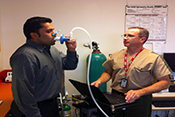 Photo for illustrative purposes only. Courtesy of Cincinnati VAMC
Photo for illustrative purposes only. Courtesy of Cincinnati VAMC
(09/26/2019)
A study by the VA Office of Patient Care Services did not find a link between herbicide exposure in Vietnam and restrictive pulmonary disease. Researchers tested Veterans using a spirometer, which measures lung volume. While participants who sprayed herbicides during their service showed more lung restriction than those who did not, the difference was not statistically significant. Race and waist circumference were much more predictive of restrictive pulmonary disease. Previous studies have shown race and weight to be risk factors for the disease. Black participants were three times more likely than white participants to have restricted breathing. Those with a larger waist circumference were 2.5 times more likely to have restricted breathing than those with a smaller waist. More research is needed on how chemical exposure may affect breathing in Veterans, according to the researchers. (International Journal of Environmental Research and Public Health, Aug. 28, 2019)
Gene linked to thinner cortex in PTSD patients
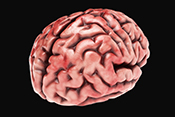 Photo: ©iStock/Denes Farkas
Photo: ©iStock/Denes Farkas
(09/19/2019)
Researchers at the VA Boston Healthcare System found evidence that gene variants are linked to reduced cortical thickness in people with PTSD. Past research has shown that PTSD is connected to reduced thickness in the cortex, the outer layer of the brain. By testing the genomes of 240 Veterans with PTSD, the researchers found that participants with specific variants of the gene PPM1F had reduced cortical thickness. The results suggest that people with these gene variants may be susceptible to greater PTSD severity from changes in brain structure, say the researchers. (Journal of Affective Disorders, Aug. 19, 2019)
Many VA providers unaware of corticosteroid risks
 Photo for illustrative purposes only. ©iStock/RgStudio
Photo for illustrative purposes only. ©iStock/RgStudio
(09/19/2019)
Many providers are unaware of guidelines on corticosteroid use for COPD, according to a survey of VA primary care providers. Inhaled corticosteroids are recommended for chronic obstructive pulmonary disease (COPD) only in severe cases. Their use can lead to pneumonia, fracture risk, cataracts, and poor diabetes control. However, more than 50% of COPD patients in VA are prescribed the drugs. According to the survey, many providers are not aware of the current evidence and recommendations regarding corticosteroids. For example, 46% were unaware of the risk of pneumonia. Participants said it was hard to keep up with current guidelines because of the broad scope of primary practice. Many were also reluctant to change prescriptions made by other providers. More efforts are needed to limit the use of this potentially harmful drug class in VA, say the researchers. (Journal of General Internal Medicine, Aug 8, 2019)
Diabetes risk over time for women Vets of Vietnam era
 Photo by CPT George Clemmons/USAF
Photo by CPT George Clemmons/USAF
(09/19/2019)
A VA study tracked the diabetes risk of women who served during the Vietnam War. Researchers interviewed 4,500 women who served between 1965 and 1973. Those who served in the warzone in Vietnam had a three-times lower diabetes risk at the start of their service, compared with women serving stateside. However, diabetes risk increased 38% faster in that Vietnam group than in the U.S. group in the decades after service. The researchers speculate that the lower initial risk could be due to the physical and mental fitness standards for service members in warzones. These standards are often not maintained when Veterans separate from service. Diabetes risk did not differ between women serving near but not in Vietnam and those serving in the U.S. The results show that factors related to warzone service that may lower diabetes risk can quickly wane as Veterans age. (Women's Health Issues, Sept. 10, 2019)
VA relatively free of disparities in colorectal cancer screening
 (Photo illustration by Michael Escalante)
(Photo illustration by Michael Escalante)
(09/11/2019)
Many demographic disparities in colorectal cancer screening seen in the general population do not exist in VA. That is the main finding from a study by VA Greater Los Angeles Healthcare System researchers. In the database study, the overall colorectal screening rate for VA patients ages 50 to 75 was 82%. Rates were lowest among American Indians/Alaska Natives, those with a history of serious mental illness or substance abuse, and those with the lowest socioeconomic status. However, screening rates even for these groups topped 75%. Older age, Hispanic ethnicity, black race, Asian race, and co-occurring illnesses were all predictors of higher screening rates. Although screening disparities are relatively rare in VA, groups with lower rates might benefit from targeted efforts to increase uptake, say the researchers. (Medical Care, Aug. 14, 2019)
Menopause linked to more opioid prescribing
 Photo for illustrative purposes only. ©iStock/BakiBG
Photo for illustrative purposes only. ©iStock/BakiBG
(09/11/2019)
VA researchers in San Francisco looked at prescribing data from over 100,000 mid-life women Veterans with chronic pain. They found that menopause symptoms were linked with higher opioid prescribing. Women with symptoms had higher odds of being prescribed long-term opioids, high-dose opioids, and opioids co-prescribed with central nervous system depressants such as sedatives or muscle relaxants, compared with symptom-free women. Another study by the team found that women with menopause symptoms were twice as likely to have chronic pain than those without symptoms. The researchers say more awareness of the links between menopause and pain could help curb risky prescribing. (Journal of General Internal Medicine, Aug. 14, 2019)
Cardiology visits linked with more statin use
 Photo: ©iStock/South_agency
Photo: ©iStock/South_agency
(09/11/2019)
Houston VA researchers and their colleagues found that cardiology visits lead to more statin use and adherence in patients with cardiovascular disease. Statin drugs lower cholesterol and help ward off heart attacks and strokes. The team studied data on more than a million VA patients with cardiovascular disease. Patients who had visited a cardiologist had greater odds of being on a statin and staying with the treatment, compared with those who had seen only a primary care provider. More cardiology visits were linked with greater statin use and adherence. Referrals to cardiologists may be among the strategies needed to boost appropriate statin use, say the researchers. (American Journal of Cardiology, July 25, 2019)
Traumatic loss tied to poorer response to PTSD treatment
 Photo: ©iStock/fizkes
Photo: ©iStock/fizkes
(09/11/2019)
In a study that included several VA researchers, service members with PTSD stemming from traumatic losses—such as the death of buddies—were less responsive to treatment than those with PTSD related to other causes. Past studies have shown that combat-related PTSD is less responsive to treatment than PTSD among civilians. The traumatic death of a close friend or colleague is a common deployment experience. The study showed that service members with traumatic loss-related PTSD recovered less from depression than those who experienced other traumatic events. Less recovery from depression predicted less recovery from PTSD. The results suggest that PTSD therapists should take into account loss and grief in military populations. Therapy could be tailored to focus on feelings of grief and guilt, say the researchers. (Journal of Traumatic Stress, Aug. 28, 2019)
Veterans in rural areas do not face longer kidney transplant wait times
 Photo: ©iStock/uchar
Photo: ©iStock/uchar
(09/05/2019)
Rural and urban Veterans have similar wait times for kidney transplant, according to an Iowa City VA Medical Center study. Prior research has shown that VA patients in need of new kidneys have lower rates of transplant than non-Veterans. Rural residents also have lower transplant rates than urban residents in the general population. A higher proportion of Veterans live in rural areas, compared with non-Veterans. To see whether these factors affected transplant rates, researchers looked at data on more than 3,000 Veterans participating in VHA's transplant programs. Veterans living in urban areas spent a longer time on dialysis than rural Veterans before registering for the transplant waitlist. But once on the waitlist, rural and urban Veterans did not have a significant difference in how long they waited for a kidney transplant. More research is needed to determine why transplant rates differ between Veterans and non-Veterans, the researchers write. (Transplantation, September 2019)
Controlled blast exposure top predictor of service-connected disability
 Photo by Lance Cpl. Immanuel Johnson/USMC
Photo by Lance Cpl. Immanuel Johnson/USMC
(09/05/2019)
Exposure to blasts from controlled detonations was the most common predictor of service-connected disability, in a study of post-9/11 Veterans. The number of controlled blasts experienced was the top predictor of a service-connected disability rating of 50% or greater. Breachers—personnel who use explosives to create entries to buildings—often have repeated exposure to low-level blasts, both in combat and training. The second highest predictor of high service-connected disability was exposure to uncontrolled blasts, such as from improvised explosive devices in combat. The results suggest that military calculations on the minimum safe distance from blasts may be inaccurate, say the researchers. (Military Health System Research Symposium, Aug. 22, 2019)
Low-value prostate cancer screening prevalent in VA
 Photo: ©iStock/jarun011
Photo: ©iStock/jarun011
(09/05/2019)
Low-value prostate cancer screening remains prevalent in the VA health system, found a VA Pittsburgh Healthcare System study. Prior research has shown that screening for prostate-specific antigen—a biomarker of prostate cancer in the blood—does not improve survival of men 70 and older. The screening can lead to anxiety about diagnosis and overly aggressive treatment. Out of more than 200,000 male Veterans 75 or older, 18% underwent prostate-specific antigen screening in the study year. The rates of screening for this age group of men varied across VA medical centers, ranging from 3% to 38%. The results show that more efforts are needed to reduce low-value tests in VA, say the researchers. (Journal of the American Geriatrics Society, July 5, 2019)
Boosting addiction treatment for opioid misuse
 Photo: ©iStock/KatarzynaBialasiewicz
Photo: ©iStock/KatarzynaBialasiewicz
(08/28/2019)
Recommending addiction treatment may increase patients' interest in and use of treatment for opioid misuse, according to VA New Jersey Health Care System researchers. They surveyed 567 patients taking opioids for chronic pain. A majority (63%) screened positive for opioid misuse. Health care providers had recommended addiction treatment to nearly a third of those misusing opioids. Almost the same number of patients took advantage of the treatment. In the survey, patients who had been offered treatment were more likely to say they were interested in the option, and, not surprisingly, were far more likely to report actually having undergone treatment, compared with those who were misusing but had not received a recommendation. More research is needed on barriers to providers' recommending addiction treatment for patients taking opioids for chronic pain, write the researchers. (American Psychological Association 2019 convention, Aug. 8, 2019)
Telephone goal-setting may ease depression in diabetic patients
 Photo: ©iStock/MartinPrescott
Photo: ©iStock/MartinPrescott
(08/28/2019)
Telephone-delivered collaborative goal-setting can help reduce depression in patients with diabetes, found a Michael E. DeBakey VA Medical Center study. One in three patients with diabetes also have depression symptoms. Patients with both uncontrolled diabetes and clinical depression were enrolled in the Healthy Outcomes Through Patient Empowerment (HOPE) program. HOPE includes nine telephone sessions with health care professionals, focusing on collaborative goal-setting to improve health and behavior. Twelve months after participating in HOPE, patients had lower depression symptom scores, compared with patients receiving usual care. HOPE did not lead to improved diabetes control, as measured by HbA1c levels. The results show that HOPE has potential to improve depression in patients with diabetes, say the researchers. (JAMA Network Open, Aug. 2, 2019)
Financial incentives fail to boost colorectal screening rates
 Photo: ©iStock/JoKMedia
Photo: ©iStock/JoKMedia
(08/28/2019)
Small financial incentives did not increase colorectal cancer screening participation, in a study including a VA San Diego Healthcare System researcher. Patients were mailed a fecal immunochemical test annually for three years. Some patients were also offered either a $5 or $10 incentive to complete the test. Response rates were similar for patients given outreach only and for both incentive levels. While previous research has shown that financial incentives may improve short-term health behaviors, the results suggest that they may not be effective for longer-term periodic testing, according to the researchers. (Cancer Epidemiology, Biomarkers & Prevention, Aug. 6, 2019)
New insight on the genetic basis of psychological resilience
 U.S. Army photo by Spc. Jeffery
U.S. Army photo by Spc. Jeffery
(08/22/2019)
A genetic study of U.S. soldiers has shown that psychological resilience may have a genetic basis. The study team, which included researchers from the VA San Diego and Connecticut health care systems, used genome mapping and survey data from more than 11,000 new recruits and deployed soldiers of European ancestry. They measured resilience both subjectively, as self-assessed ability to handle stress, and objectively, using mental disorder diagnoses. Two genes—DCLK2 and KLHL36—were linked with self-assessed resilience. Preliminary results on a smaller group of soldiers who had experienced high levels of combat stress suggest that another gene, SLC15A5, may influence objectively measured resilience. The results offer new insights into the possible biological bases for resilience to stressors, say the researchers. (American Journal of Medical Genetics, July 2019)
After smokers quit, heart risk declines, but slowly
 Photo: ©iStock/Suriyawut Suriya
Photo: ©iStock/Suriyawut Suriya
(08/22/2019)
Former heavy smokers had lower risk of cardiovascular disease five years after quitting but were still at greater risk than people who had never smoked, in a study including VA Tennessee Valley Healthcare System researchers. The study followed nearly 9,000 people for several decades. Heavy smokers who had quit about half the risk of cardiovascular disease five years after they stopped smoking, compared with current smokers. However, they were still at significantly higher risk than people who had never smoked. Former smokers had about the same cardiovascular risk as nonsmokers 10 to 15 years after quitting. The results show that while quitting smoking lowers risk of cardiovascular disease, it may take a decade or more for the risk caused by smoking to totally decline. (JAMA, Aug. 20, 2019)
Pre-treatment level of protein could predict cancer drug's effects
 Photo: ©iStock/Alexey_ds
Photo: ©iStock/Alexey_ds
(08/22/2019)
A phase 2 clinical trial that included VA researchers in Miami suggests that measuring a certain protein before treatment could predict whether a second-line cancer drug will be effective. The study added to the evidence that pembrolizumab (sold as Keytruda) may help slow or stop liver cancer progression for some patients. The drug, used for multiple types of cancer, has been given accelerated approval as a second-line treatment for liver cancer, but has not received full approval. The researchers tested the blood of nearly 30 liver cancer patients given intravenous pembrolizumab for three weeks. Tumor progression slowed or stopped in about a third of patients. Blood tests showed that a high level of TBF-beta—a protein involved in cell growth—before treatment was associated with poorer outcomes. The majority of adverse side effects were manageable—such as rash, fatigue, and diarrhea. While more testing is needed on the drug's effects, it would be reasonable to combine pembrolizumab with first-line treatments to improve response, say the researchers, adding that TGF-beta "could be a predictive biomarker." (Cancer, June 28, 2019)
Mouse study probes nicotine addiction from e-cigarettes
 Photo: ©iStock/sestovic
Photo: ©iStock/sestovic
(08/15/2019)
Daily use of electronic cigarettes may lead to nicotine addiction due to similar biological changes as are seen with regular cigarettes, suggests a mouse study by VA San Diego Healthcare System researchers and colleagues. E-cigarettes produce an aerosol that contains nicotine, as an alternative to smoking. To test whether using e-cigarettes (also known as "vaping") affects the same addiction pathway as conventional cigarettes, researchers exposed mice to nicotine vapor daily, comparable to a chronic e-cigarette use. They found that six months of exposure decreased dopamine concentrations in the striatum area of the brain. Concentrations of the neurotransmitter GABA decreased in the frontal cortex. Concentrations of the neurotransmitters glutamate and glutamine were increased. Changes in glutamate and dopamine levels are known to be involved in drug dependence, including in nicotine addiction. This imbalance of neurotransmitters could drive nicotine addiction from e-cigarettes, say the researchers. (Frontiers in Pharmacology, Aug. 12, 2019)
Do more blood pressure drugs pay off for nursing home residents?
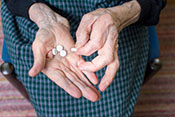 Photo: ©iStock/Creative-Family
Photo: ©iStock/Creative-Family
(08/15/2019)
Nursing home residents with high blood pressure do not get significant added benefit from multiple blood pressure medications, found a study by VA researchers from several systems. Researchers studied data from more than U.S. 250,000 nursing home residents with high blood pressure. They found small increases in hospitalization rates in residents whose blood pressure medication intensity had been increased. On the other hand, these patients had a slightly smaller decline in their activity level, compared with peers on fewer blood pressure medications. Intensity of blood pressure treatment did not affect mortality. On balance, the researchers concluded that the benefits from more intense blood pressure treatment were not significant, especially in light of the increased risk for side effects such as falls and incontinence. (Journal of the American Geriatrics Society, July 22, 2019)
The formula for effective rapid response in hospitals
 Photo for illustrative purposes only. ©iStock/stockstudioX
Photo for illustrative purposes only. ©iStock/stockstudioX
(08/15/2019)
A team including VA Ann Arbor Healthcare System and Iowa City VA Medical Center researchers evaluated the factors linked to high performance in rapid response teams for in-hospital cardiac arrest. They interviewed 158 clinicians and staff at nine different hospitals. At top-performing hospitals, rapid response teams were typically staffed by dedicated team members without competing responsibilities. They collaborated with bedside nurses before, during, and after rapid response events. Bedside nurses at top-performing hospitals were empowered to activate rapid responses based on their own judgment. At lower-performing hospitals, rapid response teams often had competing responsibilities and were less engaged with bedside nurses. Nurses at lower-performing hospitals were concerned about potential consequences from activating a rapid response. The findings can provide insights on the best way to handle in-hospital cardiac arrests, say the researchers. (JAMA Internal Medicine, July 29, 2019)
Women and men differ in understanding of harassment
 Photo: ©iStock/asiandelight
Photo: ©iStock/asiandelight
(08/07/2019)
Women and men have different perceptions of stranger harassment on VA facility grounds, found a VA Greater Los Angeles Healthcare System study. Stranger harassment refers to unwanted comments and attention—such as cat-calls and sexual comments. One in four women VA health care users has experienced harassment at VA facilities, according to a recent VA study, usually from male Veterans. In follow-up, researchers held group discussions at four VA medical centers to get patient perspectives on the problem. Women, on the whole, had clear understandings and experiences of what behaviors constituted harassment. Many men, however, expressed confusion about the difference between harassment and acceptable behavior, such as general friendliness and "harmless flirting." Men said women should set boundaries with men, while women indicated it was not their responsibility to "train" men about acceptable behavior. Both men and women said that VA staff are primarily responsible for preventing harassment. Participating Veterans recommended educating male Veterans on the issue, as well as training staff to address the problem. (Women's Health Issues, June 25, 2019)
Improving 'affirming care' for LGBT Veterans
 Photo for illustrative purposes only. ©iStock/asiseeit
Photo for illustrative purposes only. ©iStock/asiseeit
(08/07/2019)
Researchers with the VA Boston Healthcare System and Michael E. DeBakey VA Medical Center reported on the facilitators and barriers in a program to improve LGBT services for VA patients. The program, launched in 2016, requires every VHA facility to appoint an LGBT Veteran Care Coordinator to support affirming care. Affirming care includes providing LGBT patients with a welcoming environment and addressing their specific health care needs. Researchers surveyed 79 care coordinators to see how well the program has been implemented. The highest positive facilitator to the program was leadership engagement, reported by 53% of coordinators. The largest barrier was insufficient availability of resources, reported by 66% of coordinators. The survey results will help VHA improve the program in the future, say the researchers. (Psychological Services, July 25, 2019)
Pre-deployment TBI increases odds of post-deployment alcohol misuse
 iStock/South_agency
iStock/South_agency
(08/07/2019)
Traumatic brain injury prior to deployment could lead to problem drinking in soldiers after deployment, according to a study based on the Army STARRS survey. Soldiers who had a TBI that included loss of consciousness prior to deploying to Afghanistan had increased odds of binge drinking (five or more drinks at once) and heavy drinking (weekly binge drinking) three months after deployment. The connection between TBI and drinking appears more pronounced when the TBI occurred prior to age 13. Those who experienced both a prior TBI and a deployment-related TBI had even higher odds of heavy drinking nine months after deployment. The results suggest that routine screening for pre-deployment TBIs may help target efforts to prevent alcohol misuse in military members, say the researchers. (Journal of Head Trauma Rehabilitation, July 29, 2019)
Post-TBI symptoms linked to suicide attempts in soldiers
 Photo for illustrative purposes only. By Ensign Haraz Ghanbari/USN
Photo for illustrative purposes only. By Ensign Haraz Ghanbari/USN
(08/01/2019)
Having traumatic brain injury symptoms before deployment was linked to post-deployment suicide attempts in soldiers deployed to Afghanistan, found a study including a VA San Diego Healthcare System researcher. Using the Army STARRS survey, the researchers studied data on 7,677 soldiers deployed to Afghanistan in 2012. Of those, 103 made a suicide attempt. Soldiers who had post-concussive/post-TBI symptoms before deployment had a higher risk of a suicide attempt than those without TBI symptoms. The results show that detecting post-TBI symptoms could help target suicide prevention programs, say the researchers. (Journal of Head Trauma Rehabilitation, July 11, 2019)
Diabetes and Alzheimer's risk factors together linked to greater cognitive decline
 Photo for illustrative purposes only. ©iStock/Juanmonino
Photo for illustrative purposes only. ©iStock/Juanmonino
(08/01/2019)
Patients with both diabetes and Alzheimer's disease risk factors showed greater cognitive decline than those with one or the other, in a VA San Diego Healthcare System study. Researchers followed the cognitive functioning of patients for five years. Patients with both diabetes and at least one Alzheimer's risk factor showed the most cognitive decline, greater than those with only diabetes, only Alzheimer's risk factors, or neither. Alzheimer's risk factors included subtle cognitive decline, genetic risk, and three biomarkers found in the spinal fluid. The results suggest that diabetes interacts with Alzheimer's risk factors to increase cognitive decline, according to the researchers. (Alzheimer's Disease and Associated Disorders, July 10, 2019)
Substance use disorder treatment low for both HIV-infected and uninfected Veterans
 Photo for illustrative purposes only. ©iStock/joloei
Photo for illustrative purposes only. ©iStock/joloei
(08/01/2019)
Substance use disorder treatment was low for Veterans both with and without HIV, in a study of more than 160,000 Veterans. Researchers studied how HIV status affected patients' use of treatment for substance use disorders, considering SUDs are common in patients with HIV. Patients with HIV were slightly more likely than those without to have an SUD. Fewer than 17% of patients with an SUD engaged in treatment in both the HIV and non-HIV groups. Patients with HIV were more likely to stay in SUD treatment for six months, but the difference was small. While the percentage of VA patients with SUDs who receive treatment is higher than SUD treatment rates in the general population, the researchers still say efforts are needed to get more Veterans to engage in SUD treatment, regardless of HIV status.- - (Journal of Substance Abuse Treatment, August 2019)
Aspirin may help cancer patients live longer

(07/25/2019)
Aspirin use was linked with better survival in patients with head and neck cancer, in a study of patients at the Washington DC VA Medical Center. Studies have shown that long-term aspirin use can reduce the risk of developing several types of cancer, but its effects after cancer diagnosis are unknown. Researchers looked at the medical charts of 584 Veterans treated for cancers of the head and neck over a 20-year period. About 26% were prescribed long-term aspirin use. Aspirin users were significantly more likely to survive for at least three years after diagnosis. Overall survival was 79% for aspirin users and 56% for those not taking aspirin. While the study was not designed to show direct cause and effect, the results do suggest that aspirin may be a useful addition to treatment for head and neck cancer, say the researchers. (Head and Neck, May 2019)
Blast exposure linked to decreased sound tolerance
 DoD photo by Lance Cpl. Immanuel Johnson
DoD photo by Lance Cpl. Immanuel Johnson
(07/25/2019)
Blast exposure increases the likelihood of decreased sound tolerance in Veterans and service members, according to a VA Portland Health Care System study. People with decreased sound tolerance often experience negative physical or psychological reactions to everyday sounds, such as being uncomfortable or overwhelmed from the background noise of a public place. Researchers looked at data on 426 Veterans and service members who participated in a study on hearing. They found that, of those with blast exposure, 33% of service members and 48% of Veterans had decreased sound tolerance. For who had not been exposed to blasts, 28% of service members and 34% of Veterans had decreased sound tolerance. The researchers say more study is needed to understand the connection between blast exposure and sound tolerance, and to examine whether related auditory injuries are going undetected. (Scientific Reports, July 15, 2019)
Combined VA, Medicare Part D prescription use increases unsafe medication risk
 Photo: ©iStock/Darwin Brandis
Photo: ©iStock/Darwin Brandis
(07/25/2019)
Older Veterans who use both VA and Medicare Part D are at increased risk of receiving unsafe medication, according to a study by VA researchers from several VA locations. Almost all Veterans 65 and older with prescription benefits from VA are also eligible for Medicare Part D. To see whether dual use of prescription sources increases seniors' risk of unsafe medication use, the researchers looked at data for nearly 280,000 Veterans. They found that dual-use patients had a nearly twofold increase in the odds of receiving potentially unsafe medication. The results show that policies to expand Veterans' access to non-VA providers must ensure patient information is shared to avoid dangerous prescribing, say the researchers. (JAMA Internal Medicine, July 22, 2019)
How aspirin helps against cancer
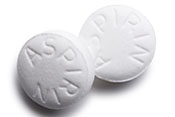 Photo: ©iStock/sd619
Photo: ©iStock/sd619
(07/17/2019)
A Michael E. DeBakey VA Medical Center researcher and a colleague have identified the possible mechanism behind aspirin's anticancer activity. Low-dose aspirin has been found to both help stop many forms of cancer from forming and also block cancer's ability to spread when taken after diagnosis. The researchers found evidence that aspirin's ability to inhibit platelet cyclooxygenase-1—an enzyme related to inflammation—is the key mechanism behind this. Platelet levels are often elevated in the later stages of cancer. They are known to promote cancer growth. Past research by the VA and University of Texas team has shown that low-dose aspirin can block the pro-cancer action of platelets, but until now the way this interaction worked was unknown. (Cancer Research, March 7, 2019)
Traumatic brain injury linked to higher psychiatric risk and symptoms
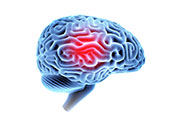 Illustration: ©iStock/Lamenko
Illustration: ©iStock/Lamenko
(07/17/2019)
Service members and Veterans with a history of traumatic brain injury have higher rates and severity of psychiatric conditions, found a Minneapolis VA Health Care System review. Researchers analyzed studies on TBI and psychiatric disorders conducted over a 17-year period, and found 33 relevant studies. The review shows that service members and Veterans with TBIs had higher rates of PTSD, depressive disorder, substance use disorder, and anxiety disorder, compared to those without TBI. One study showed higher rates of suicide attempts in people with TBI. Geographically diverse studies linked TBI to greater symptom severity of PTSD. Results of TBI's effect on depression and substance use disorder symptom severity were mixed. According to the researchers, the results support a need for increased emphasis on evaluation of psychiatric conditions in service members and Veterans with a history of TBI. (Journal of Head Trauma Rehabilitation, April 25, 2019)
Diet quality affects gut microbiome
 Photo: ©iStock/mphillips007
Photo: ©iStock/mphillips007
(07/17/2019)
Quality of diet affects the microbiome in the digestive tract, found a Michael E. DeBakey VA Medical Center study. Researchers studied the types of bacteria present in the colon of patients undergoing a colonoscopy. They found that patients who reported eating a good-quality diet—one high in fruits, vegetable, and whole grains and low in sugar, alcohol, and fats—had higher levels of beneficial bacteria, such as those with anti-inflammatory properties. Those with a poor-quality diet, by comparison, had more potentially harmful bacteria, such as bacteria linked to colorectal cancer. The study suggests that the microbiome of the colon can be modified through diet, which could help reduce the risk of chronic diseases, say the researchers. (American Journal of Clinical Nutrition, July 10, 2019)
Telehealth helps with HIV management
 Photo: ©iStock/AndreyPopov
Photo: ©iStock/AndreyPopov
(07/10/2019)
Telehealth availability improves viral suppression in HIV patients, found a VA Office of Rural Health study. Patients who previously traveled long distances to HIV specialty clinics were offered telehealth visits in nearby primary care clinics. The researchers compared outcomes of patients living in areas where telehealth was available to those of patients in areas without telehealth. In the areas where telehealth was available, 13% of patients used the option. Small average improvements in viral suppression were seen in patients offered telehealth visits compared with patients not offered telehealth, regardless of whether patients took advantage of telehealth or not. Patients who actually used telehealth had large improvements in viral suppression. The results show that HIV clinics should offer telehealth visits for patients facing travel burdens, say the researchers. (Open Forum Infectious Diseases, May 10, 2019)
Care cost lower for diabetes patients primarily seeing NPs or PAs rather than physicians
 Photo: ©iStock/Ridofranz
Photo: ©iStock/Ridofranz
(07/10/2019)
Use of nurse practitioners and physician assistants could lead to lower health care costs for diabetes care, according to a Durham VA Health Care System study. Researchers looked at a year of VA data on medically complex patients with diabetes. They found that patients whose primary care provider was a nurse practitioner or physician assistant had 6–7% lower average total care costs than patients with a physician as the primary care provider. The difference was mainly due to more use of emergency and inpatients services by the physician group. The study suggests that nurse practitioners and physician assistants can effectively manage primary care for complex patients with diabetes without increasing care costs. (Health Affairs, June 2019)
Newer hepatitis C drugs pose advantage for diabetes risk
 Photo: ©iStock/okskaz
Photo: ©iStock/okskaz
(07/10/2019)
Hepatitis C patients treated with directly acting antiviral agents had lower risk of diabetes than patients treated with interferon, in a VA Pittsburgh Healthcare System study. Hepatitis C infection is linked to higher risk of diabetes. Results from previous research were mixed on whether treatment with interferon—an older treatment for hepatitis C—affects diabetes risk. To test how newer directly acting antiviral agent treatment affects diabetes risk, researchers studied data on more than 240,000 people with chronic hepatitis C. For both untreated patients and patients treated with interferon, about 2% developed diabetes. Only 0.1% of patients treated with directly acting antiviral agents developed diabetes after treatment. Patients with more advanced liver fibrosis had even larger diabetes risk reduction. The results show that the new antiviral agents may be better than older treatments at controlling hepatitis C complications, say the researchers. (Clinical Infectious Diseases, April 12, 2019)
Continuity of care linked to better outcomes in inflammatory bowel disease
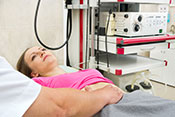 Photo for illustrative purposes only. ©iStock/Capifrutta
Photo for illustrative purposes only. ©iStock/Capifrutta
(07/09/2019)
Greater continuity of care leads to better outcomes for patients with inflammatory bowel disease, according to a VA Ann Arbor Healthcare System study. Researchers looked at more than 46,000 patients with inflammatory bowel disease—that is, either Crohn's disease or ulcerative colitis—who received care through VA. Average continuity of care (meaning patients saw the same provider for outpatient visits) was only 23%. Patients with lower care continuity had more flare ups, need for medication, hospitalizations, and surgery than those with more continuity. More research is needed on how to improve continuity of care and how team-based care may affect patient outcomes, say the researchers. (Digestive Disease Week, May 17, 2019)
Complementary and integrative health use linked to lower costs
 Photo: ©iStock/Wavebreakmedia
Photo: ©iStock/Wavebreakmedia
(07/09/2019)
Using complementary and integrative health (CIH) approaches for chronic musculoskeletal pain led to lower health care costs and pain in younger Veterans, found a study by VA researchers from several systems. CIH refers to practices not currently part of mainstream, conventional medical practice, such as acupuncture, chiropractic care, and massage. Researchers looked at data on more than 30,000 Veterans who used CIH and nearly 200,000 who did not. They found that CIH use was linked with lower health care costs and less pain from chronic musculoskeletal conditions, compared with one year before patients began CIH. However, the CIH group had slightly higher opioid use than those who did not use CIH. The researchers theorize that the slightly higher opioid use could reflect the fact that many patients turn to CIH treatments as a last resort after trying other pain treatments such as opioids. The results show that use of CIH is cost-effective and can even be cost-saving, they say. (PLoS One, June 5, 2019)
Three psychotherapies for depression reduce suicidal thoughts
 Photo for illustrative purposes only. ©iStock/SeventyFour
Photo for illustrative purposes only. ©iStock/SeventyFour
(07/09/2019)
A VA Office of Mental Health and Suicide Prevention study looked at the effectiveness of three psychotherapies for depression at reducing suicidal thoughts. The researchers studied treatment data on interpersonal psychotherapy, cognitive-behavioral therapy, and acceptance and commitment therapy. The analysis showed that all three treatments reduced suicidal thoughts, especially in women Veterans. For male Veterans, decreases in suicidal thoughts were significantly greater in interpersonal psychotherapy and cognitive-behavioral therapy, compared with acceptance and commitment therapy. The results show that all three therapies are effective treatments for suicidal thoughts and depression, say the researchers. They suggest that more research be done on how gender influences the effectiveness of these treatments. (Women's Health Issues, June 25, 2019)
Liver cancer risk remains after successful hepatitis C treatment
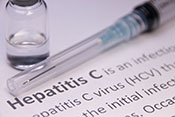 Photo: ©iStock/Hailshadow
Photo: ©iStock/Hailshadow
(07/09/2019)
Patients treated with direct-acting antiviral agents for hepatitis C remained at risk for liver cancer after several years, found a Michael E. DeBakey VA Medical Center study. Hepatitis C increases the risk of liver cancer. Direct-acting antivirals are a new form of medication that are more effective than interferon—an older treatment—at treating hepatitis C. But their long-term effect on cancer risk is unknown. Researchers followed more than 18,000 patients at VA medical centers who had achieved sustained virologic response (meaning that no hepatitis C viruses were found in blood samples) with these new medications. They found that three years later these patients, while having lower cancer risk than people with active hepatitis C infection, still had risk levels that warrant monitoring. The risk was particularly high in patients with cirrhosis. The researchers recommend that hepatitis C patients treated with antivirals continue to be monitored for liver cancer. (Hepatology, June 20, 2019)
Collaborative care plus self-management of chronic pain and mood symptoms leads to best results
 Photo: ©iStock/MartinPrescott
Photo: ©iStock/MartinPrescott
(06/27/2019)
Adding collaborative care by nurses and doctors to an automated self-management program improves outcomes for Veterans with chronic musculoskeletal pain and mood disorders. That is the main finding from a study at the Roudebush VA Medical Center in Indiana. Nearly 300 patients with both chronic pain and depression or anxiety were treated for 12 months. In addition to standard primary care—including medication as needed—one group received automated monitoring and web-based self-management modules. The other group received self-management along with collaborative care by a team of nurses and physicians, who were responsible for regular phone contact and optimized medication management. While both groups showed a trend toward symptom decline, the collaborative care group were more likely to report overall improvement and less likely to have worsening symptoms. (Journal of General Internal Medicine, June 21, 2019)
New insight on role of hippocampus in memory
 Photo: ©iStock/Vera_Petrunina
Photo: ©iStock/Vera_Petrunina
(06/27/2019)
A study including researchers from the VA Boston Healthcare System found that the hippocampus is involved in consolidation of memory even when it is not involved in the initial learning. The hippocampus is a part of the brain involved in spatial memory and navigation. During sleep, the hippocampus helps convert short-term memories to long-term memories for tasks it was initially involved in. To test whether the hippocampus plays a role in other instances of memory formation, the researchers taught a simple motor task to people with hippocampal amnesia (meaning they couldn't form long-term memories), and to control patients. While both groups showed similar initial learning, only the control group showed memory consolidation overnight, meaning they learned the task over the longer term. In the words of the researchers, "These results demonstrate that the hippocampus can be required for normal consolidation of a task without being required for its acquisition." The results suggest that the hippocampus plays a broader role than previously thought in memory, they say. (Hippocampus, June 3, 2019)
Rat study: Single injection protects against TBI damage in short term
 Photo: iStock/gorodenkoff
Photo: iStock/gorodenkoff
(06/27/2019)
In a rat study by VA Pittsburgh Healthcare System researchers, a single shot of the drug memantine protected against neurodegeneration caused by traumatic brain injury (TBI), although the effects did not last. Within hours of a TBI, levels of the neurotransmitter glutamate rise in the brain. This can cause cell damage and long-term neurological deficits. To counter this, the researchers gave brain-injured rats a single injection of memantine one hour after injury. Memantine, sold as Nemenda, blocks glutamate receptors in the brain, and is used to treat Alzheimer's disease. The shot protected cortical tissue and reduced neuronal degradation one day after injury. It also protected the hippocampus from damage seven days after injury. Higher doses of memantine were more effective than smaller doses. Researchers did not see any adverse side effects from the drug in the rats. However, the benefits did not remain past five weeks. While memantine injections have potential to protect the brain from degradation after TBI, a single dose may not be enough for long-term benefits, say the researchers. (Restorative Neurology and Neuroscience, 2019)
Diabetes drug equally effective across groups
 Photo for illustrative purposes only. ©iStock/Jelena Danilovic
Photo for illustrative purposes only. ©iStock/Jelena Danilovic
(06/20/2019)
The diabetes medication empagliflozin reduces blood sugar levels for people with diabetes across a variety of demographics, found a VA Palo Alto Health Care System. Empagliflozin, sold as Jardiance, is a medication for reducing A1c (blood glucose) levels. Researchers looked at data on nearly 8,000 VA patients with Type 2 diabetes taking the drug. They found patients had an average of 0.7% reduction in A1c levels after six months on empagliflozin. Black and white patients had similar A1c reductions. Those with and without cardiovascular disease also had similar reductions. Patients with the highest A1c levels at baseline had the largest A1c reductions after six months. Patients also taking insulin had lower A1c reductions than those not taking insulin. (American Diabetes Association, June 9, 2019)
More study needed on TBI's effect of psychiatric treatment
 Illustration ©iStock/laramenko
Illustration ©iStock/laramenko
(06/20/2019)
Evidence is lacking on how mild traumatic brain injury (TBI) affects treatment for psychiatric conditions, according to Minneapolis VA Health Care System researchers. The researchers conducted a literature review for studies on patients with mild TBI and several other conditions: PTSD, depression, substance use disorders, suicidal thoughts or attempts, and anxiety disorders. They found seven studies looking at mild TBI occurring with these conditions. None of the studies looked at treatment effectiveness for substance use disorder or suicidal thoughts. For the other conditions, TBI history did not affect treatment outcomes. However, the studies that were analyzed did not use control groups or a randomized trial design, making it hard to assess the strength of the evidence. More studies are needed on how TBI affects treatment for other psychiatric conditions, say the researchers. (Journal of Affective Disorders, June 1, 2019)
Breast cancer screening guidance
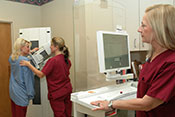 Photo by Robin DeMark
Photo by Robin DeMark
(06/20/2019)
The American College of Physicians released four guidance statements on breast cancer screening for average-risk women. A researcher from the Minneapolis VA Medical Center was part of the guideline committee. First, they recommend that clinician discuss whether or not to screen for breast cancer with women below age 50 since potential harms often outweigh the benefits in this age group. Second, for women 50 to 74, they recommend offering mammogram screening every other year. Third, they recommend discontinuing breast cancer screening for women age 75 or older, or for those with a life expectancy of 10 years or less. Fourth, for all age groups they say that clinicians should not use clinical breast examination to screen for breast cancer. (Annals of Internal Medicine, April 9, 2019)
Gene variants linked to habitual alcohol use
 Photo by Mitch Mirkin
Photo by Mitch Mirkin
(06/13/2019)
Researchers with the VA Connecticut and Boston health care systems found five new locations on the human genome related to habitual alcohol use. Using VA's Million Veteran Program, the researchers studied the genomes of 126,936 European American Veterans and 17,029 African American Veterans. They found habitual alcohol use—which could lead to alcohol dependence—was linked to gene variants at specific locations on the genome for both groups. One gene, ADH1B, is already known to influence alcohol dependence. Five other gene locations (the most significant of which is called CRHR1) also showed a link to increased habitual alcohol use. These five gene locations have not previously been associated with alcohol use. The results provide new insight into how genetics could affect harmful alcohol use, say the researchers. (Biological Psychiatry, April 8, 2019)
Lipid testing boosts statin adherence
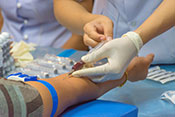 Photo: ©iStock/PongMoji
Photo: ©iStock/PongMoji
(06/13/2019)
Routine lipid testing can lead to Veterans taking their statin medication more regularly, found a study by Michael E. DeBakey VA Medical Center researchers. The study looked at data on patients receiving care through VA for atherosclerotic cardiovascular disease. Researchers looked at medication refill data to see whether patients were taking prescribed statins. Patients with at least one lipid panel over a one-year period had a 66% chance of adhering to their medication, while those without a lipid panel had a 61% chance. Among new statin users, 68% adhered to their medication when they had a lipid panel within 4–12 weeks of beginning treatment. For those without a lipid panel, adherence was 59%. While the difference is modest, routine statin testing can significantly increase patient's statin adherence, according to the researchers. (American Journal of Medicine, May 16, 2019)
Study: Almost all VA patients would benefit from gene tests to guide drug choice
 Photo: ©iStock/Nicolas_
Photo: ©iStock/Nicolas_
(06/13/2019)
Almost all Veterans would benefit from genetic testing to see how they would react to various medications, according to a study of data from nearly 8 million Veterans. Specific gene variants affect how people respond to different drugs. The researchers looked at pharmacy and demographic data on 7.7 million Veterans who used VA pharmacies over a six-year period. They projected, based on the Veterans' demographics, that 99% would have at least one gene variant that could affect their response to commonly used drugs. Common prescriptions in VA that could be affected by gene variation included simvastatin (sold as Zocor) for high cholesterol, tramadol (sold as Ultram) for pain, and warfarin (sold as Coumadin) for high blood pressure. Genetic testing could influence prescribing decisions for many Veterans, concluded the researchers. (JAMA Network Open, June 5, 2019)
New insight into how cancer spreads
 Illustration: ©iStock/Mohammed Haneefa Nizmudeen
Illustration: ©iStock/Mohammed Haneefa Nizmudeen
(06/04/2019)
An international study led by a researcher at the VA San Diego Healthcare System yielded new insight into how cancer spreads. The study focused on a protein known as Caveolin-1, or Cav-1, which scientists have found plays a role in cancer cell migration from a primary tumor into other areas of the body. The new study tested whether a particular part of this protein, called the caveolin scaffolding domain, or CSD, is critical in this process. The team engineered cancer cell lines into three categories. One over-expressed the entire Cav-1 protein. The second over-expressed the protein but without a working CSD. The third over-expressed green fluorescent protein, as a control. The researchers found that cancer cell migration was inhibited in the first group of cells, but increased in the second group, the cells without the CSD. The finding supports their theory that Cav-1 thwarts cell migration through its CSD. They write, "Modulating the CSD and targeting specific proteins may offer potential new therapies in the treatment of cancer metastasis." Besides VA and a few other U.S. institutions, the work involved collaborators in Japan, Scotland, and Pakistan. (Cell Cycle , online May 22, 2019)
CPAP machines and insomnia
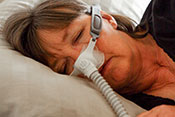 Photo for illustrative purposes only. ©iStock/grandriver
Photo for illustrative purposes only. ©iStock/grandriver
(06/04/2019)
Many people with sleep apnea—a potentially dangerous condition in which breathing repeatedly stops and starts during sleep—use a continuous positive airway (CPAP) device, which pumps air through the nose. VA researchers in Pittsburgh and colleagues looked at how CPAP therapy affected insomnia among patients with Type 2 diabetes and sleep apnea. Not surprisingly, they found that greater use of CPAP was associated with improvements in insomnia overall. Specifically, the therapy helped with difficulty staying asleep, and with early waking. However, CPAP use did not appear to help difficulty falling asleep. The researchers say it's important to delve into the specific type of insomnia patients experience, and to understand the potential pros and limitations of CPAP for each type. (American Thoracic Society meeting, May 20, 2019)
Overuse of antibiotics in dental care
 Photo: iStock/sturti
Photo: iStock/sturti
(06/04/2019)
A study led by investigators at VA's Center of Innovation for Complex Chronic Healthcare found that the great majority of preventive antibiotic prescriptions written by dentists in the U.S. are not in accord with clinical guidelines, and are unnecessary. The team analyzed more than 168,000 dental visits involving more than 91,000 U.S. patients using commercial dental health plans. Per current guidelines, only patients with cardiac conditions who are at high risk for endocarditis, in which germs from other parts of the body, such as the mouth, spread to the heart, should receive prophylactic antibiotic treatment before invasive dental procedures. The study found that dentists, on the whole, operated well outside the guideline, and that 8 in 10 preventive antibiotic prescriptions were unnecessary. The researchers called the finding "worrisome," in light of the ongoing crisis stemming from antibiotic overuse and the proliferation of drug-resistant bacteria. Though their data were from 2011–2015, and they note the situation has been "slowly improving," they still called for better antibiotic stewardship in dentistry. (JAMA Network Open, May 3, 2019)
Rural Veterans have higher per-capita opioid use
 Photo: iStock/sassy1902
Photo: iStock/sassy1902
(06/04/2019)
Rural Veterans receive over 30% more opioids than their urban counterparts, found a study by VA's Iowa-based Center for Comprehensive Access and Delivery Research and Evaluation. Using national data, the team examined how opioid prescribing varies by region in VA, and whether there are differences based on rural vs. urban status. They used a measure called "morphine milligram equivalents." The average per-person use for VA patients in 2016 was 1,038 MME. The lowest use was in the Northeast: 894 MME. The highest was in the West, at 1,368 MME. Urban residents averaged 988 MME, compared with 1,306 for those in rural areas. Most of the difference was explained by more long-term opioid use by rural Veterans. Short-term use of the pain medications was similar. The researchers say the reasons for the disparity need to be studied further. It's possible, they say, that rural Veterans don't have equal access to non-drug pain treatment for chronic pain. (Military Medicine, May 21, 2019)
Tinnitus frequently occurs with mental health disorders
 Photo for illustrative purposes only. ©iStock/Ridofranz
Photo for illustrative purposes only. ©iStock/Ridofranz
(05/29/2019)
A study of VA health care users found that nearly 4% met the diagnostic criteria for tinnitus, the perception of ringing, buzzing, or other noises in the ears. The prevalence estimate is based on a random, representative sample of more than 600,00 Veterans who received care in VA between 2011 and 2016. The study found that tinnitus was often co-diagnosed with hearing loss and traumatic brain injury. Tinnitus was also associated with mental health diagnoses, including anxiety, depression, and substance use disorders. While the study wasn't designed to show cause-and-effect relationships between tinnitus and mental health, the researchers did stress the need for coordinated care between the two areas. A team at VA's National Center for Rehabilitative Auditory Research led the study. (American Journal of Audiology , April 22, 2019)
Pinpointing genetic targets for meth addiction
 Photo: ©iStock/JTSorrell
Photo: ©iStock/JTSorrell
(05/29/2019)
Researchers at the Portland VA Medical Center and Oregon Health & Science University are working to understand genetic risk for methamphetamine addiction. In a recent experiment, they used mice that were genetically bred to crave methamphetamine. The researchers first identified two proteins that appear at higher-than-normal levels in the brains of those animals. One is a receptor for glutamate, the most abundant neurotransmitter in the brain, and is known as mGluR5. The other is a scaffolding protein known as Homer2a/b. There are no known drugs that target the latter protein, but there are several that target mGluR5. The next step was to test drugs known to bind to mGluR5 and make it less active. Those drugs, however, appeared to have little effect on the mice's meth appetite. The researchers concluded that targeting mGluR5 may not be an adequate strategy, and that scientists will need to better understand the role of Homer2a/b in addiction. (International Behavioural and Neural Genetics Society meeting, May 2019)
Alert to curb antibiotic overuse
 Photo: ©iStock/busracavus
Photo: ©iStock/busracavus
(05/29/2019)
Researchers at the VA Western New York Healthcare System developed a new strategy for reducing inappropriate use of antibiotics. While antibiotics are critical life-saving drugs, their overuse has fueled drug-resistant strains of bacteria. Focusing on outpatient care, which accounts for the majority of antibiotic use, the researchers found that 4 in 10 patients among their sample of more than 1,000 Veterans received an inappropriate prescription. The drug that accounted for the most unnecessary prescriptions was azithromycin. More than half of the prescriptions for this antibiotic were deemed unnecessary. Respiratory infections were the most common conditions for which the drug was used inappropriately. This drug along with three others accounted for 80% of inappropriate prescriptions. The researchers designed an electronic alert, triggered when providers sign a prescription, that allows for real-time intervention to adjust the prescription before the patient leaves the office. They say focusing on the four drugs they identified, to start, will allow for maximum impact. They also recommend patient education to lessen the pressure that prescribers sometimes feel to "appease" the patient with an antibiotic. (American Journal of Infection Control , online March 9, 2019)
When to change the PTSD treatment plan
 Photo for illustrative purposes only. ©iStock/Wavebreakmedia
Photo for illustrative purposes only. ©iStock/Wavebreakmedia
(05/29/2019)
VA uses two main psychotherapies to treat PTSD—prolonged exposure, and cognitive processing therapy—and they are usually delivered in 8 to 12 weekly sessions. But a new study suggests that Veterans not seeing "meaningful" improvement after eight sessions are unlikely to do so in the remaining weeks of therapy. That's the main finding from a study led by VA authors in Ann Arbor and Atlanta. The researchers examined the records of more than 2,200 Veterans. All of them had completed at least eight sessions of one evidence-based, trauma-focused psychotherapy or the other, as well as two self-report assessments, in which they answered questions about their PTSD symptoms. Those who reported at least 20% symptom reduction by session eight were twice as likely to go on to achieve "meaningful change"—defined by the researchers as a 50% reduction—in further sessions, compared with all those who continued treatment. For those not seeing meaningful change after eight weeks, the researchers recommend that clinicians consider changing the type or intensity of treatment. (Behavior Therapy , online May 18, 2019)
Men, women respond differently to 'acceptance and commitment therapy'
 Photo for illustrative purposes only. ©iStock/electravk
Photo for illustrative purposes only. ©iStock/electravk
(05/23/2019)
Men and women Veterans may respond differently to acceptance and commitment therapy (ACT) for emotional distress, according to a VA San Diego Healthcare System study. In ACT, patients are taught not to avoid negative emotions and experiences and learn abilities to help them act in a way that is in line with their values. ACT led to a greater decrease in PTSD symptom severity in women compared to present-centered therapy, whereas the two therapies had similar results in men. A similar trend was seen in changes in general emotional distress, although to a lesser extent than in PTSD. Women were more likely than men to recommend the treatment to a friend. The results underscore that gender differences in coping skills and reactions to stress should be taken into consideration when prescribing psychotherapy, according to the researchers. If future research confirms that women respond better to ACT, it could be important guidance for how to treat women Veterans with PTSD, they say. (Women's Health Issues, May 3, 2019)
H. pylori treatment may raise risk of autoimmune disease
 Photo: ©iStock/iLexx
Photo: ©iStock/iLexx
(05/23/2019)
Drug treatment for H. pylori infection was linked to an increased risk of autoimmune disease, in a study including a VA Ann Arbor Healthcare System researcher. H. pylori is a type of bacteria that infects the digestive tract. It can cause ulcers and stomach cancer. About two-thirds of the world's population has the bacteria in their bodies; most people don't experience problems. Working with data on nearly 80,000 Taiwanese patients, the researchers found that patients treated to eradicate H. pylori infection had a significant increase in risk for autoimmune disease, including irritable bowel disease. The increased risk was not the result of general antibiotic treatment, since patients treated with antibiotics for urinary tract infections had lower autoimmune risk than H. pylori patients. The results suggest that H. pylori colonization could have immune system benefits, say the researchers. The study was published in the journal Clinical Gastroenterology and Hepatology last year, and more recently presented at a meeting. (Digestive Disease Week, May 21, 2019)
Brain injuries in women after intimate partner violence
 Photo: ©iStock/lolostock
Photo: ©iStock/lolostock
(05/23/2019)
A team including a VA Boston Healthcare System researcher summarized the research available on traumatic brain injuries (TBIs) in women as a result of intimate partner violence. They found that intimate partner violence-related TBIs are common, and women in these circumstances often have repetitive TBIs. These injuries are linked with a range of mental health problems, such as anxiety and depression, and with structural and functional brain damage. The authors make several recommendations for future research and clinical practice to address this issue, including using trauma screening tools and risk assessment. (Journal of Aggression, Maltreatment, & Trauma, March 12, 2019)
Residents and attending physicians provide similar care
 Photo: ©iStock/digitalskillet
Photo: ©iStock/digitalskillet
(05/15/2019)
Resident physicians and attending physicians provide equal quality of care in VA hospitals, found a VA Portland Health Care System study. Residents are doctors who are under the supervision of a more experienced attending physician. Researchers studied data on diabetes quality of care for more than 76,000 patients in 10 VA facilities across the country. Of those patients, 25% were cared for by a resident, while 75% were cared for by an attending physician. Quality-of-care measures were similar between both groups. While attending physicians have more experience, the results show that residents provide an important role in caring for patients, often caring for new patients and those from vulnerable populations. (JAMA Internal Medicine, April 1, 2019)
Study: Fewer hospitalizations for diabetes patients using both VA and Medicare
 Photo: ©iStock/EXTREME-PHOTOGRAPHER
Photo: ©iStock/EXTREME-PHOTOGRAPHER
(05/15/2019)
Diabetes patients who used only VA medical care or Medicare rather than both systems together were more likely to have been hospitalized, in a study by researchers from the VA Greater Los Angeles and New Jersey health care systems. Researchers looked at data from 2007-2010 on more than 200,000 Medicare-eligible Veterans with diabetes. Patients who used both VA and Medicare for either primary or supplementary care were less likely to have a hospitalization during the study period. The study population was primarily older and had multiple complications related to diabetes. The results suggest that hospitalized older patients with diabetes may be so medically complex that they benefit from having more providers involved in their care, say the researchers. This need may outweigh the risk of care fragmentation that comes with using two different health care systems. (Medical Care, April 29, 2019)
Brain study ties proteins to 'cognitive trajectory' in aging
 Photo: ©iStock/malgorzata tatarynowicz
Photo: ©iStock/malgorzata tatarynowicz
(05/15/2019)
A group including Atlanta VA Medical Center researchers has identified protein markers in the brain that affect aging-related cognitive decline. The researchers followed 143 patients for up to 14 years to track whether they had any cognitive decline as they aged. Upon patients' death, the researchers studied the donated brains. They found 579 proteins to be associated with cognitive trajectory. Specifically, patients who showed greater cognitive stability had increased levels of proteins involved with mitochondrial activities or synaptic function. These findings show markers that affect cognitive decline that have not been previously considered in cognitive status and Alzheimer's disease diagnoses. The results suggest promising targets for future research on how cognitive ability changes as people age, say the researchers. (Nature Communications, April 8, 2019)
Tinnitus characteristics do not affect impact
 Photo for illustrative purposes only. ©iStock/Westbury
Photo for illustrative purposes only. ©iStock/Westbury
(05/08/2019)
Perceived loudness and pitch do not change the impact of tinnitus, according to a VA Portland Health Care System study. Tinnitus is a sound—such as ringing or buzzing—in the ears when no outside sound is present. It is the No. 1 disability affecting Veterans. Researchers surveyed 223 participants on how they perceived tinnitus. They found that how loud the sound seemed to participants and the pitch of the noise was not related to how bothersome the tinnitus was. The results suggest that how patients react to tinnitus has a greater impact on their quality of life than how they perceive the sound, in terms of loudness, pitch, or other sound qualities. (American Journal of Audiology, April 22, 2019)
Algorithm for identifying PTSD in electronic health records
 Photo: ©iStock/Laurence Dutton
Photo: ©iStock/Laurence Dutton
(05/08/2019)
Researchers with VA's Million Veteran Program have designed a computer algorithm to identify PTSD in electronic health records. Although PTSD may be noted in a patient's electronic health record, researchers would need to read individual records to pick out patients with the condition for studies. The algorithm searches records for diagnoses and symptoms to classify patients as likely PTSD, possible PTSD, and likely not PTSD. The algorithm had high accuracy when compared with manual chart review. The algorithm could be useful for research and quality improvement endeavors within VA, say the researchers. A quick way to identify thousands of cases using electronic health records would help recruiting for large genome-wide association studies of PTSD. (Journal of Traumatic Stress, April 2019)
Osteoporosis drug treatment studies show both effectiveness and risk
 Photo for illustrative purposes only. ©iStock/Steve Debenport
Photo for illustrative purposes only. ©iStock/Steve Debenport
(05/08/2019)
Minneapolis VA Health Care System researchers reviewed the existing evidence on long-term drug therapy to prevent fractures in patients with osteoporosis. They surveyed 35 trials and 13 observational studies of various osteoporosis drugs. The literature shows that long-term treatment with alendronate acid or zoledronic acid, two drugs known as bisphosphonates, reduces fracture risk in women with osteoporosis. Long-term bisphosphonate treatment may increase risk for rare adverse events, but continuing this treatment beyond three to five years may reduce the risk of vertebral fractures. Another osteoporosis treatment, long-term hormone therapy, reduces hip fracture risks but has serious side effects, according to the literature. One limitation of the review is that the researchers did not find any studies involving male patients. (Annals of Internal Medicine, April 23, 2019)
Evidence lacking on use of massage for pain
 Photo: ©iStock/skynesher
Photo: ©iStock/skynesher
(05/01/2019)
A literature review by West Los Angeles VA Medical Center researchers found some evidence that massage is beneficial for pain, but the evidence was weak. The literature search turned up 32 high-quality systematic reviews on massage and pain. These studies showed potential benefits of massage for a wide variety of pain, including low back, neck, and cancer pain. However, the evidence was low-strength (meaning researchers were unable to confidently draw conclusions). Factors affecting the usefulness of massage included style, provider, duration, and other treatments used. Too few studies and not enough details are available to draw conclusions about the usefulness of massage for treating pain, according to the researchers. (Journal of Alternative and Complementary Medicine, March 20, 2019)
Treating alcohol problems: Does patient motivation matter?
 Photo for illustrative purposes only: ©iStock/sturti
Photo for illustrative purposes only: ©iStock/sturti
(05/01/2019)
Whether a Veteran receives alcohol use disorder treatment voluntarily or involuntarily does not affect treatment outcome, found a St. Cloud VA Health Care System study. Researchers looked at 120 Veterans being treated for alcohol use disorder in a residential rehabilitation treatment program. Half were admitted under recommendation by a court order. The others were admitted voluntarily. The researchers found no differences between groups in how long participants remained sober after they were discharged. The results show that patients' motivation for treatment may not be a good predictor of treatment outcomes, say the researchers. (Journal of Addictions Nursing, Jan./March 2019)
Use of cardiac stress tests varies widely in VA
 Photo: ©iStock/SerafinoMozzo
Photo: ©iStock/SerafinoMozzo
(05/01/2019)
The use of cardiac stress tests for ischemic heart disease patients varies widely across VA facilities, found a Michael E. DeBakey VA Medical Center study. Researchers studied treatment data on nearly 1 million Veterans with ischemic heart disease. The use of cardiac stress tests—such as treadmill exercise and stress echocardiography—varied by as much as 40%, depending on where treatment was received. Use ranged from 2 to 32 tests per 100 patients at different VA medical centers. The cause of this variation is not yet known. The results could suggest that some facilities are overusing this type of test, say the researchers. (JACC. Cardiovascular and Imaging, April 10, 2019)
Families give high marks to polytrauma care
 Photo: ©iStock/spxChrome
Photo: ©iStock/spxChrome
(04/25/2019)
A majority of caregivers were satisfied with the inpatient care their loved ones received from VA, in a study of caregivers of Veterans in a VA Polytrauma Rehabilitation Center. Of the 524 caregivers surveyed, 75% were mostly or very satisfied with their loved ones' inpatient care. Higher satisfaction was linked with greater caregiver social support, receipt of training from VA, and perceptions of being valued by VA. The authors say the results suggest that "supporting a strong social network for caregivers, providing caregiver training, and employing practices that communicate that family caregiving is valued by providers and healthcare organizations are promising avenues for improving caregiver satisfaction." (PLoS One, March 15, 2019)
Stress inoculation training shows promise for PTSD
 Photo for illustrative purposes only. ©iStock/asiseeit
Photo for illustrative purposes only. ©iStock/asiseeit
(04/25/2019)
Stress inoculation training can reduce PTSD and depression symptoms in patients with PTSD and traumatic brain injury, found a VA Northern California Health Care System study. Stress inoculation training is a psychotherapy that teaches patients to prepare themselves in advance to handle stressful events. In the study of 56 Veterans, the majority had significant reductions in PTSD and depression symptoms, better perceived stress tolerance, and improved social and occupational functioning. Eighty-eight percent followed through with recommended follow-up treatment. Stress inoculation training could be a useful treatment for patients who do not want to participate in trauma-focused therapies such as prolonged exposure, according to the researchers. (Psychological Trauma, March 21, 2019)
Brain thickness measure linked to better attention
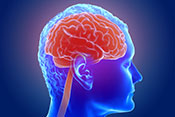 Illustration: ©iStock/Lars Neumann
Illustration: ©iStock/Lars Neumann
(04/25/2019)
Cortical thickness is linked with sustained attention, according to a study by VA Boston Healthcare System researchers. The cortex is the outer layer of the brain, and is divided into different sections related to various functions. The researchers took high-resolution MRI scans of the brains of 125 participants. The participants then took performance tests to measure how well they could maintain attention. Better attention was linked to more thickness in the visual, somatomotor, frontal, and parietal cortices of the brain, especially in the right hemisphere. Different regions of the cortex also connect and work together to form networks for specific functions. Several networks of brain regions—including two known to be linked to attention—were thicker in participants with better sustained attention. The results show that structural MRI could help explain differences in cognition, say the researchers. (Human Brain Mapping, April 13, 2019)
Mixed reports from women Veterans on their family-planning experiences
 Photo for illustrative purposes only. ©iStock/PeopleImages
Photo for illustrative purposes only. ©iStock/PeopleImages
(04/24/2019)
Women Veterans had both negative and positive experiences with family planning in the military and VA, in a study by VA Puget Sound and Pittsburgh health care system researchers. Researchers interviewed 32 women Veterans about their family planning care. Nearly all described negative experiences in military or VA health care. These included perceived gender-based discrimination and pressure to choose certain contraceptive methods, judgment of reproductive choices, and lack of continuity with providers. Some women also reported positive family planning experiences in VA. These included feeling respected, receiving comprehensive information about options, and having their perspectives and concerns considered. Women preferred counseling that included providers initiating and validating family planning discussions. Establishing trust and avoiding judgment, asking women's individual preferences, and engaging them as equal decision-making partners were also important. The results provide key insights that could improve family planning care in VA, say the researchers. (Women's Health Issues, April 10, 2019)
Weight management boosts quality of life in serious mental illness
 Photo: ©iStock/emesilva
Photo: ©iStock/emesilva
(04/24/2019)
Both in-person and web-based weight management programs improved quality of life for patients with serious mental illness, in a study by Baltimore VA Medical Center researchers. Patients with serious mental illness are often at greater risk for obesity. Researchers analyzed outcomes for patients participating in the in-person MOVE! weight management program or the online version, WebMOVE. Participants in the in-person program showed decreases in loneliness, compared with normal care, after six months. Those in WebMOVE had increases in weight-related self-esteem after six months. Both groups had significant increases in health-related quality of life, compared with patients in usual care. The results show that both in-person and web-based weight management counseling can promote "holistic" recovery for patients with serious mental illness, according to the researchers. (Society of Behavioral Medicine Annual Meeting, March 7, 2019
Researchers grow axons in lab
 Photo: ©iStock/Henrik5000w
Photo: ©iStock/Henrik5000w
(04/24/2019)
A team including a Corporal Michael J. Crescenz VA Medical Center researcher have found a way to create brain axons in the lab. Axons are long, slender fibers projecting from neurons that conduct electrical impulses. Brain damage to the white matter often leads to permanent neurological problems because axons are not known to regenerate much. The researchers used stem cells to generate cortical neurons. Using a technique called axon stretch growth, they were able to grow axon tracts at a rate of one millimeter per day. The technique could potentially make it possible to transplant axons into the brain after injury, say the researchers. (Tissue Engineering Part A, March 29, 2019
Parkinson's patients more likely to get recommended care with new model
 Photo: ©iStock/noipornpan
Photo: ©iStock/noipornpan
(04/11/2019)
A new method of disease management led to improved care processes for Parkinson's patients, in a study by VA Greater Los Angeles Healthcare System researchers. The study recruited 328 Veterans with Parkinson's disease at five VA medical centers in California. Half were treated using a nurse-led chronic model called CHAPS. The rest received usual care. The CHAPS group had substantially higher adherence to quality of care indicators, such as assessment of symptoms, counseling, and palliative care. The only patient-centered difference was improvements on a depression screen in the CHAPS group. While this care model shows potential to improve Parkinson's disease treatment, more refinement is needed to improve patient-centered outcomes, say the researchers. (Neurology, March 22, 2019)
Molecular delivery system takes arthritis drugs directly to joints
 Photo: ©iStock/Tharakorn
Photo: ©iStock/Tharakorn
(04/11/2019)
Baltimore VA Medical Center researchers developed a technique to deliver arthritis medication directly to the joints. Rheumatoid arthritis drugs can cause bad reactions when healthy organs are exposed. The researchers developed a molecular substance (a peptide ligand called ART-2) that could home in on inflamed joints. A molecular structure called a liposome is coated in ART-2, with the arthritis drug inside. When injected into the body, the drugs go directly to inflamed joints, meaning that other organs are not exposed. When given to rats, the therapy was more effective at stopping arthritis than injection of the same drug without the ART-2. This type of treatment could have many advantages over conventional arthritis therapy, according to the researchers. (Nanomedicine (London), April 2, 2019)
Racial mortality disparities in VA
 Photo: ©iStock/Andresr
Photo: ©iStock/Andresr
(04/11/2019)
VA has reduced many racial disparities in mortality, but differences in risk of death based on race still exist in some areas, found a VA Portland Health Care System study. Racial and ethnic health disparities have been a major problem in U.S. health care, both in the private sector and in VA. A literature review found that black and white Veterans receiving care through VA have similar overall rates of mortality. This could be due to VA's commitment to equal access to care, according to the researchers. However, black Veterans did have higher mortality from certain conditions: chronic kidney disease, colon cancer, diabetes, HIV, rectal cancer, and stroke. American Indian and Alaska Native Veterans undergoing noncardiac major surgery had higher mortality rates than other groups. Some studies also showed Hispanic Veterans with HIV or traumatic brain injury having higher mortality. Because most studies compare black and white Veterans, more research is needed on health care disparities for other racial and ethnic groups, say the researchers. (American Journal of Public Health, March 2018)
Post-9/11 Veterans less likely to delay mental health care
 (Photo for illustrative purposes only. DoD/Navy Petty Officer 1st Class Daniel Barker)
(Photo for illustrative purposes only. DoD/Navy Petty Officer 1st Class Daniel Barker)
(04/05/2019)
Post-9/11 Veterans were less likely than others to delay treatment for common psychiatric conditions, according to a study by VA Puget Sound Health Care System researchers. In a study of almost 15,000 people, post-9/11 Veterans were less likely to delay treatment for PTSD and depression than pre-9/11 Veterans or civilians. No differences in treatment time existed between groups for alcohol use disorder. Post-9/11 Veterans with health care coverage from VA in the past year tended to seek out depression treatment earlier than post-9/11 Veterans without VA coverage, pre-9/11 Veterans, and civilians. The results may reflect efforts to engage recent Veterans in mental health care, say the researchers. (Psychiatric Services, March 7, 2019)
Tailored medical homes provide better experience to homeless Vets
 Photo: ©iStock/Solange_Z
Photo: ©iStock/Solange_Z
(04/05/2019)
Patient-centered medical homes offer a better care experience to homeless Veterans compared with standard primary care, found a study of more than 11,000 patients. In 2012, select VA facilities implemented a homeless-tailored medical home model, called Homeless Patient Aligned Care Teams. Researchers surveyed patients enrolled in H-PACTs, along with those receiving standard care at facilities both with and without H-PACTs. H-PACT patients were more likely than standard-care patients at the same facility to report positive experiences in five domains: access, communication, office staff, provider ratings, and comprehensiveness. Standard-care patients at facilities with H-PACT programs were more likely to report positive experiences with communication and self-management support, compared with patients at facilities without H-PACT. The lessons learned from the program can be applied throughout the VA system to improve care, according to the researchers. (Medical Care, April 2019)
Sedative prevents neuron cell growth after TBI
 Photo: ©iStock/Henrik5000w
Photo: ©iStock/Henrik5000w
(04/05/2019)
The sedative diazepam prevented neurogenesis after a traumatic brain injury, in a mouse study by Portland VA Health Care System and Oregon Health & Science University researchers. The growth of new neuron cells in the hippocampus increases significantly after TBI. This can be positive and lead to recovery. It can also be negative and lead to conditions such as epilepsy if the cells do not form correctly. The researchers found that diazepam almost completely prevented the TBI-induced increase in hippocampal neurogenesis in brain-injured mice. While limiting this cell growth could lead to some cognitive impairment, it also prevented aberrant cell growth that causes problems after TBI. According to the researchers, more study is needed on how benzodiazepines such as diazepam could help or hinder recovery from TBI. (Journal of Neurotrauma, Feb. 22, 2019)
Increased cleaning time may not improve hospital room disinfection
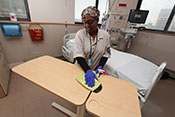 Photo by Mitch Mirkin
Photo by Mitch Mirkin
(03/27/2019)
More time spent cleaning patient rooms in a hospital may not improve disinfection, found a Central Texas Veterans Healthcare System study. Researchers measured the infectious bacteria count on five room surfaces in a VA medical center—bedrail, tray table, call button, toilet seat, and bathroom handrail—after cleaning in between patients. For some rooms, cleaning time was limited to 25 minutes, while for others cleaning time was unlimited. Longer time spent cleaning did not lead to fewer infectious organisms on surfaces. The results suggest that time spent cleaning beyond 25 minutes may not be necessary to properly disinfect a hospital room, as long as appropriate disinfectants are used and staff is properly trained, say the researchers. (Infection Control and Hospital Epidemiology, March 25, 2019)
The link between TBI and dementia
 Photo: ©iStock/gorodenko
Photo: ©iStock/gorodenko
(03/27/2019)
Portland VA Health Care System researchers examined the existing evidence on the link between traumatic brain injury and dementia. Evidence suggest that dementia rates are similar between Veterans and non-Veterans age 65 and older. Multiple studies link TBI with increased risk of dementia in both Veterans and the general population. In Veterans, studies suggest that dementia risk grows progressively larger with higher levels of TBI severity. The researchers identified several evidence gaps where more study is needed. Not many studies have directly compared dementia rates in Veterans and non-Veterans. More research is also needed into the link between TBI and early-onset dementia, as well as into the mechanisms of how TBI raises dementia risk. (VA Evidence Synthesis Program, February 2019)
Gene variant interacts with stress to accelerate aging
 Photo: ©iStock/zmeel
Photo: ©iStock/zmeel
(03/27/2019)
Psychological stress was linked with advanced cellular aging in people with a specific gene variant, in a VA Boston Healthcare System study. Researchers looked at the genotypes of 309 Veterans to see how variants of the longevity gene klotho affected biomarkers of epigenetic age. Epigenetic age refers to how much DNA methylation (a process in which methyl molecules attach to DNA molecules, which can hamper DNA transcription) has occurred, and can be used as a biomarker of how much cells have aged. In some people, epigenetic age can exceed chronological age, which can predict higher mortality risk. They found that a specific form of the gene (rs9315202) interacted with PTSD, sleep disturbances, and pain to predict accelerated epigenetic age. This gene variant also interacted with PTSD to predict inflammation and lower white-matter neural integrity. A different form of the same gene (rs9527025) predicted a slowed epigenetic age. The results suggest that enhancement of the protein produced by the klotho gene could be a treatment target for patients with this gene variant, say the researchers. (Brain, Behavior, and Immunity, March 11, 2019)
Higher rates of insomnia drug overprescribing in women Veterans
 Photo: ©iStock/Martin Dimitrov
Photo: ©iStock/Martin Dimitrov
(03/20/2019)
Women are more likely than men to be inappropriately prescribed the insomnia drug zolpidem (sold as Ambien) within VA, found a Bedford VA Medical Center study. Researchers looked at prescribing data for more than 500,000 Veterans taking zolpidem. They found that 30 percent of female Veterans taking the drug received an inappropriately high dose of zolpidem, compared with only 0.1 percent of male Veterans. Nearly 19 percent of those women had a prescription to both zolpidem and benzodiazepine, while 14 percent of men did. Benzodiazepine is another insomnia drug that is also used to treat other conditions such as anxiety and seizures. Drug interactions between zolpidem and benzodiazepine are linked with increased hospitalizations. Younger women and those with substance use disorders were more likely to receive too-high doses of zolpidem. Women with anxiety or schizophrenia and men with cancer, anxiety, or schizophrenia were more likely to have overlapping prescriptions. Guidelines recommend lower doses of zolpidem for women than men because of metabolism differences, but many women may still be prescribed similar doses to men. The results show that more attention is needed to gender-specific dosing, say the researchers. (American Journal of Managed Care, March 1, 2019)
Study finds low adherence to hormone therapy guidelines
 Photo for illustrative purposes only.©iStock/Highwaystarz-Photography
Photo for illustrative purposes only.©iStock/Highwaystarz-Photography
(03/20/2019)
Adherence to prescribing guidelines for systemic hormone therapy for menopausal symptoms was low among VA providers, in a VA Greater Los Angeles Healthcare System study. Systemic hormone therapy with estrogen is effective in treating menopausal symptoms such as hot flashes and insomnia. Researchers looked at prescribing in four VA facilities across three states to see how well dosage guidelines were followed. Average guideline adherence was 58 percent. Adherence was highest with new prescriptions, at 74 percent. An inappropriately high dose was used in new prescriptions more than half the time. Most renewals were at a high dose, and only 16 percent had a documented rationale for the dosing. Among 116 prescriptions for systemic estrogen, progesterone was not prescribed in eight cases. Failure to co-prescribe progesterone puts women at increased risk for endometrial cancer. Intervention is urgently needed to improve guideline adherence, say the researchers. They also suggest similar studies should be done in community settings to see how widespread the problem is. (Journal of Healthcare Quality, March/April 2019)
Women's health care expenses rise after death of a spouse
 Photo for illustrative purposes only. ©iStock/Tinpixels
Photo for illustrative purposes only. ©iStock/Tinpixels
(03/20/2019)
Bereavement is linked with increased health care spending for women, according to a study by Boston VA Healthcare System researchers and colleagues. The researchers looked at Medicare spending of older adults for the two years before an after their partners' death. Women increased their health care spending by an average of $625 per quarter after the death of a spouse. There was no significant increase for males who survived their spouses. The increase for women may be because they pay more attention to their own health once they are no longer acting as caregivers for their spouses, according to the researchers. More study is needed to find out why men and women have different patterns of health care spending after the death of a spouse, they say. (PharmacoEconomics, March 13, 2019)
Long-term posttraumatic stress tied to changes in brain structure
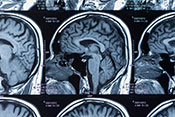 Photo: ©iStock/Utah778
Photo: ©iStock/Utah778
(03/13/2019)
Posttraumatic stress symptoms can persist decades after trauma exposure and are linked to lower hippocampal volume, according to a study featuring VA San Diego Healthcare System researchers. The study assessed PTSD symptoms in 247 men at two times: when each man was an average age of 38, and again when they were an average age of 62. Participants were Veterans who served during the Vietnam era and had experienced trauma before the first assessment. At the first time point, 8 percent of participants met criteria for presumptive PTSD. At the second time point, 6 percent did, showing that PTSD symptoms remained mostly stable over the 24-year period. Posttraumatic stress symptoms at both times were linked to lower volume of the hippocampus and other brain regions. Participants who had worse symptoms at time 2 had smaller hippocampal volume than they had at time 1. The study confirms what other research has shown, that posttraumatic stress symptoms are present years after trauma, even in the absence of a PTSD diagnosis. The results show that this symptom persistence is highly related to changes in brain structure, say the researchers. (Brain Imaging and Behavior, March 4, 2019)
TBI and PTSD increase tinnitus risk
 Photo for illustrative purposes only. ©iStock/Westbury
Photo for illustrative purposes only. ©iStock/Westbury
(03/13/2019)
Traumatic brain injury and PTSD increase the risk for tinnitus, found a VA San Diego Healthcare System study. Tinnitus refers to hearing sound—such as ringing in the ears—when no external sound is present. Researchers assessed the hearing of 2,600 Marines before and after combat deployment. They found that both PTSD and TBI, particularly blast TBI, were linked to worsening tinnitus. Tinnitus progression also increased with hearing loss. Pre-deployment tinnitus was also likely to continue or worsen after deployment. Screening for PTSD, TBI, and hearing loss may allow for more focused treatment for tinnitus, say the researchers. (Military Medicine, Feb. 22, 2019)
Study sheds light on pesticides-Alzheimer's link
 Photo: ©iStock/SVproduction
Photo: ©iStock/SVproduction
(03/13/2019)
A team including two VA researchers have found a possible mechanism for how exposure to pesticides increases the risk of Alzheimer's disease. Occupational exposure to organophosphate pesticides—such as experienced by agricultural workers—has been shown to increase the risk of Alzheimer's disease. The researchers exposed rats to the chemical chlorpyrifos to simulate this pesticide exposure. Exposure resulted in dysregulation of microglial cells (a type of cell involved in the immune defense of the brain and spinal cord). Exposed rats showed accelerated neurodegeneration. The neurodegeneration was more severe in male rats, and only male rats showed cognitive impairment over 20 months. The results suggest that future treatments to preserve or restore the microglia could help prevent Alzheimer's disease in people exposed to pesticides, according to the researchers. (NPG Aging and Mechanism of Disease, Jan. 22, 2019)
Testosterone replacement with exercise boosts muscle mass after spinal injury
 Photo: ©iStock/vadimguzhva
Photo: ©iStock/vadimguzhva
(03/08/2019)
Low-dose testosterone replacement therapy paired with resistance training can lead to improved muscle mass and health in spinal-cord-injured patients, according to a Hunter Holmes McGuire VA Medical Center study. Loss of muscle mass is often a problem in patients with spinal cord injury. Patients underwent twice-weekly resistance training for 16 weeks, using ankle weights and electrical stimulation to activate the paralyzed muscles in their legs. They were also given testosterone replacement therapy via a patch. Patients receiving both testosterone and resistance training had improved body lean mass, muscle mass, and knee extensor strength. The patients also showed trends in less body fat, increased metabolic rate, glucose effectiveness, and inflammatory response. The results suggest that low-dose testosterone replacement therapy could ease the negative muscle and metabolic effects of spinal cord injury. (Journal of Neurotrauma, Feb. 22, 2019)
Cheese may increase prostate cancer risk for men with gene variant
 Photo: ©iStock/lechatnoir
Photo: ©iStock/lechatnoir
(03/08/2019)
The amount of cheese eaten may interact with specific gene variants to greatly increase the risk of prostate cancer, found a VA Portland Health Care System study. Researchers studied the genomes of 187 patients with prostate cancer and 306 controls without cancer. They looked at how 31 different dietary factors interacted with six genes known to be related to prostate cancer risk. They found that, for patients with a specific variant of one of the genes, each additional daily serving of cheese increased the risk of prostate cancer 16-fold. Past research has linked dairy to prostate cancer risk. In the new study, prostate cancer risk decreased by 37 percent per daily serving of fruits in the same group. The results suggest that patients' diet and genetic variation can interact to affect their risk of prostate cancer, say the researchers. (12th Annual Multi-Institutional Prostate Cancer Program Retreat, March 3, 2019)
Understanding a cause of aortic aneurysm
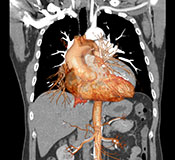 Illustration: ©iStock/mr.suphachai praserdumrongchai
Illustration: ©iStock/mr.suphachai praserdumrongchai
(03/08/2019)
A team including a researcher from the Harry S. Truman Memorial Veterans' Hospital used a mouse model to explore the underlying causes of abdominal aortic aneurysm. An aortic aneurysm is when the aorta (the largest artery in the body, which carries blood from the heart to the rest of the body) becomes enlarged. This can cause it to rupture, leading to death. The researchers found that a deficiency of a protein called IL12p40 can lead to aortic aneurysm. It does this by leading to a build-up of M2 macrophages—white blood cells that decrease inflammation. This can lead to aortic stiffness and damage to the cellular matrix. The results suggest that, for aortic health, balance is needed between M2 macrophages and M1 macrophages—white blood cells that promote inflammation. (Arteriosclerosis, Thrombosis, and Vascular Biology, February 2019)
Sleep habits predict mortality
 Photo for illustrative purposes only. ©iStock/monkeybusinessimages
Photo for illustrative purposes only. ©iStock/monkeybusinessimages
(02/28/2019)
Sleep quality and duration are useful in predicting mortality, according to a study including a Minneapolis VA Health Care System researcher. Researchers looked at health data on more than 8,000 older adults, covering an average of 13 years. Using machine learning programs, they found that a multidimensional set of sleep factors was a significant predictor for all-cause and cardiovascular mortality. The most predictive sleep characteristics were time spent in bed, time to bed, wake-up time, and napping habits. Sleep was less predictive of all-cause mortality than factors such as demographics, physical health, or medication but more predictive than health behaviors such as smoking or drinking alcohol. The results suggest that developing comprehensive tools to measure sleep quality and habits could help predict mortality risk, say the researchers. They add that such tools could also aid in working with patients to improve their sleep habits. (Journal of Gerontology, Feb. 18, 2019)
For those with chronic illness, brief cognitive behavioral therapy reduces suicidal thought
 Photo for illustrative purposes only. ©iStock/asiseeit
Photo for illustrative purposes only. ©iStock/asiseeit
(02/28/2019)
Brief cognitive behavioral therapy (bCBT) can reduce suicidal thoughts, found a Michael E. DeBakey VA Medical Center study. Cognitive behavioral therapy is a psychotherapy that focuses on changing thoughts and behaviors that contribute to emotional distress. Patients with congestive heart failure or chronic obstructive pulmonary disease who also had depression and anxiety symptoms received four months of bCBT. Those who received bCBT were less likely to have suicidal thoughts after treatment, compared with patients who received usual care. They were also less likely to have suicidal thoughts four, eight, and 12 months after treatment. The results suggest that bCBT delivered in primary care can reduce suicidal ideation, even when the therapy does not directly target suicide. (General Hospital Psychiatry, Feb. 8, 2019)
Loved ones' support helps keep Veterans in PTSD treatment
 Photo: ©iStock/PeopleImages
Photo: ©iStock/PeopleImages
(02/28/2019)
Support of loved ones is important to keeping Veterans from dropping out of PTSD treatment, found a Minneapolis VA Health Care System study. Researchers interviewed Veterans undergoing prolonged exposure therapy or cognitive processing therapy—two forms of psychotherapy considered the gold standard for PTSD care—at four VA medical centers. They found that Veterans whose loved ones encouraged them to participate in treatment and face distress were twice as likely to remain in PTSD treatment, compared with those without such support. The researchers concluded that providers should routinely assess how much support for treatment Veterans are getting at home. (Journal of Consulting and Clinical Psychology, March 2019)
Early palliative care may help avert unhelpful chemotherapy
 Photo: ©iStock/Pornpak Khunatorn
Photo: ©iStock/Pornpak Khunatorn
(02/20/2019)
Early palliative care led to less receipt of unhelpful chemotherapy in patients with advanced lung cancer, in a study by VA Portland Health Care System researchers. Chemotherapy is not recommended for patients with advanced lung cancer because it is unlikely to be helpful. However, many patients continue to receive it anyway. Researchers studied more than 23,000 patients with late-stage lung cancer over a seven-year period. Of those, 37 percent received palliative care within 90 days of cancer diagnosis. Forty-five percent of the total group received chemotherapy. Thirty-four percent of patients who received early palliative care also received chemotherapy, compared with 51 percent who did not receive early palliative care. Those who received early palliative care also had lower rates of high-intensity chemotherapy. According to the researchers, early palliative care may optimize patient selection for chemotherapy. This could lead to less use of high-intensity therapy, promoting a focus on quality of life in accordance with patients' performance, preferences, and care goals, they say. (Journal of Thoracic Oncology, February 2019)
Educational tool helps patient understand electronic health records
 Photo for illustrative purposes only. ©iStock/shapecharge
Photo for illustrative purposes only. ©iStock/shapecharge
(02/20/2019)
A resource called NoteAid led to better patient understanding of medical notes within their electronic health records, found a study headed by a Bedford VA Medical Center researcher. NoteAid is a freely available Web-based tool to help patients learn more about a diseases and conditions mentioned in their electronic health records. The system identifies medical concepts within doctor notes and provides links to lay definitions and resources. Patients given access to NoteAid scored higher on a test of comprehension for medical notes within their records, compared with a baseline group and patients given a passive educational resource. The results show that tools such as NoteAid can help patients better understand their own electronic health records. (Journal of Medical Internet Research, Jan. 16, 2019)
Androgen deprivation therapy may increase depression risk
 Photo: ©iStock/Luso
Photo: ©iStock/Luso
(02/20/2019)
Androgen deprivation therapy was linked to an increased risk of depression in men with prostate cancer, in a VA San Diego Health Care System study. Prostate cancer cells require androgen hormones (such as testosterone) to grow. Reducing the level of these hormones can prevent the cancer cells from growing. Researchers looked at nearly 40,000 Veterans with prostate cancer who were treated with radiation therapy. Those also treated with androgen deprivation therapy had higher rates of new depression diagnoses and outpatient psychiatric services, compared with those not given the therapy. This group did not have higher rates of inpatient psychiatric use or suicide. The results may provide further evidence for the long-term risks of androgen deprivation therapy, say the researchers. (Cancer, Feb. 12, 2019)
Rat study: Brain injury can cause PTSD without psychological stressors
 Photo: ©iStock/fotografixx
Photo: ©iStock/fotografixx
(02/14/2019)
A mouse study by James J. Peters VA Medical Center researchers found that PTSD can occur after a traumatic brain injury even without a corresponding psychological trauma. PTSD and TBI often occur together in Veterans, but it is difficult to separate their effects. The researchers exposed rats to repetitive low-level blasts while the rodents were under anesthesia. The rats showed anxiety and PTSD-like behavior for at least nine months after the exposure, even though they had been spared significant psychological stress because of the anesthesia. Exposing the rats to predator scent stress months after the blast exposure also caused a PTSD response. This showed the researchers that mild TBI may make the brain more sensitive to future psychological stress. The researchers also found that a specific experimental compound reversed PTSD-related behaviors in the blast-exposed mice, suggesting that it could one day be used to treat such injuries in humans. (Neuropharmacology, February 2019)
'Next-step' depression treatment medications are cost-effective
 Photo: ©iStock/asiseeit
Photo: ©iStock/asiseeit
(02/14/2019)
Adding a second drug to standard depression treatment is cost-effective, according to a VA Palo Alto Health Care System study. Researchers compared three common alternate treatments for depression: standard antidepressant therapy plus aripiprazole, standard therapy plus bupropion, and switching to bupropion from a different antidepressant. Aripiprazole, sold as Abilify and other brands, is commonly used to treat schizophrenia and bipolar disorder. Bupropion, sold as Wellbutrin or Zyban, is an antidepressant and smoking-cessation aid. Health care costs were similar between treatment groups. The aripiprazole group had the highest depression remission rate. The group that supplemented treatment with bupropion had a higher remission rate than the bupropion-only group. The results show that augmenting standard depression therapy with a "next-step" treatment is cost-effective and could be useful, say the researchers. (Journal of Clinical Psychiatry, Dec. 18, 2018)
Many patients taking PPIs concerned about adverse effects
 Photo for illustrative purposes only. ©iStock/LumiNola
Photo for illustrative purposes only. ©iStock/LumiNola
(02/14/2019)
Concern about proton pump inhibitors is common and leads to attempts to discontinue the medication, found a VA Ann Arbor Healthcare System study. Researchers surveyed 755 patients with gastroesophageal reflux disease who took PPIs. PPIs—brands such as Prilosec, Prevacid, and Nexium—are a class of drugs that reduces stomach acid production. Thirty-three percent of patients were slightly concerned, 32 percent were somewhat concerned, and 14 percent were extremely concerned about adverse effects of PPIs. Of the 39 percent of patients who attempted to stop taking their PPI, 83 percent did so without a doctor's recommendation. Patients more concerned about adverse effects were more likely to stop taking their PPIs. The results show that doctors should proactively discuss the risks and benefits of PPIs with patients to avoid unwise care decisions, say the researchers. (American Journal of Gastroenterology, February 2019)
Harassment of women Veterans by male Veterans common at VA medical centers
 Photo for illustrative purposes only. ©iStock/Zinkevych
Photo for illustrative purposes only. ©iStock/Zinkevych
(02/06/2019)
Harassment of women Veterans by male Veterans at VA medical centers is prevalent, found a VA Greater Los Angeles Health Care System study. Researchers surveyed more than 1,000 women Veterans who used VA health care at any one of 12 facilities. One in four women said they experienced inappropriate or unwanted comments or behavior from male Veterans on VA grounds. The negative interactions included catcalls, sexual remarks, and denigration of Veteran status. Reports of harassment were more common among women with histories of military sexual trauma; other trauma exposure; anxiety, depression, or PTSD; and poorer health. Not surprisingly, women experiencing harassment were significantly less likely to feel welcome at VA and were more likely to not feel safe. Importantly, they were also more likely to delay or miss care. More efforts are needed to make VA health care facilities more inclusive, welcoming, and respectful of women Veterans, say the researchers. (Women's Health Issues, Jan. 24, 2019)
Mechanism behind COPD lung damage
 Photo: ©iStock/wwing
Photo: ©iStock/wwing
(02/06/2019)
Researchers with the Birmingham VA Medical Center and colleagues have shown a possible mechanism for how lung damage occurs in chronic obstructive pulmonary disease (COPD). The researchers showed that inflammatory cells in the lung produce specific proteins that can damage specific critical structural proteins in lung tissue. Particles related to a type of white blood cell bind to and cause damage to the extracellular matrix of the lungs. The neutrophils were found in the lungs of patients with COPD, but not healthy patients. The finding points to a number of approaches for therapies to reduce the progression of lung damage in Veterans with COPD, according to the researchers. (Cell, Jan. 10, 2018)
Melamine promotes kidney stone formation
 Photo: ©iStock/Xsandra
Photo: ©iStock/Xsandra
(02/06/2019)
Researchers with the Washington DC VA Medical Center explored how melamine can contribute to the formation of kidney stones. Melamine is a type of plastic that can sometimes find its way into the body through products such as plastic tableware. The researchers showed that melamine can promote the forming of crystals of calcium phosphate and calcium oxalate—two substances that commonly make up kidney stones—through chemical reactions. The results will add to the knowledge of how kidney stones form and help scientists understand how melamine acts as an environmental toxin, say the researchers. (Scientific Reports, Jan. 29, 2019)
Neuropathy drives balance problems in HIV
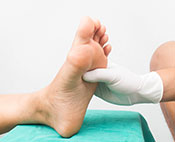 Photo: ©iStock/memorisz
Photo: ©iStock/memorisz
(02/01/2019)
Neuropathy (nerve damage) can cause balance problems in older people with HIV, according to a study by VA San Diego Healthcare System researchers. Looking at more than 3,000 patients, the researchers found that patients with HIV were more than twice as likely than HIV-negative patients to have had balance problems within the last 10 years. In both groups, patients with diagnosed chronic distal sensory polyneuropathy (cDSPN)—loss of feeling in the toes and feet—had more balance problems than those without. The results show that balance problems caused by neuropathy were more frequent in HIV-positive patients. Older patients with HIV should be assessed for cDSPN to prevent falls, say the researchers. (Journal of Acquired Immune Deficiency Syndromes, Jan. 3, 2019)
Chronic hypoxia a risk factor for suicide
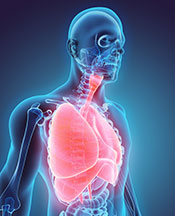 Illustration: ©iStock/yodiyim
Illustration: ©iStock/yodiyim
(02/01/2019)
Chronic hypoxia is a risk factor for suicide, found a White River Junction VA Medical Center study. Hypoxia is when the body does not get enough oxygen. The researchers looked at data on more than 9 million patients, a little over 22,000 of whom died by suicide. They assessed three causes of chronic hypoxia: altitude, smoking, and chronic obstructive pulmonary disease (COPD). Patients who had at least one of the three hypoxia conditions had a significantly increased risk of suicide. Current smokers had nearly two-times greater odds of dying by suicide than those who never smoked. Suicide risk increased as the elevation where a person lives increased. Having multiple hypoxia conditions greatly raised odds of suicide. Patients with all three conditions were nearly four times more likely to die by suicide than patients with no conditions. Patients with these risk factors may need specialized treatments to prevent suicide, say the researchers. (Psychiatry Research, Jan. 12, 2019)
Compounds emerge as potent tools against toxoplasmosis and malaria
 Photo by Michael Moody
Photo by Michael Moody
(02/01/2019)
VA Portland Health Care System researchers identified highly effective chemical compounds for fighting toxoplasmosis and malaria. Toxoplasmosis is a disease that can cause vision loss, neurological problems, and death. It is caused by the microscopic parasite Toxoplasma gondii. The researchers tested chemical compounds called endochin-like quinolones (ELQs). They found that the ELQs can stop T. gondii proliferation, even when the parasite is drug-resistant. These compounds may also be effective against malaria, which is caused by a parasite similar to T. gondii. Understanding the chemical interactions involved with these compounds could lead to safer and more effective treatment for toxoplasmosis and malaria. (ACS Infectious Diseases, Nov. 9, 2018)
Therapeutic horseback riding can lower PTSD symptoms
 Photo: ©iStock/DragonImages
Photo: ©iStock/DragonImages
(01/24/2019)
Therapeutic horseback riding could effectively lower PTSD symptoms in Veterans, found a study by Harry S. Truman Memorial Veterans' Hospital researchers and colleagues. After three weeks of a horseback riding program, participants had a 67 percent greater chance of having lower PTSD symptoms, compared to a waitlisted group. The likelihood of lower symptoms was 88 percent greater after six weeks. The results show that longer participation leads to better results in self-efficacy and emotion regulation. The study also identified several steps that could make therapeutic horseback riding programs more effective, such as providing transportation to the riding center and child care during classes. (Military Medical Research, Jan. 19, 2018)
Research limited on electrical brain modulation for PTSD
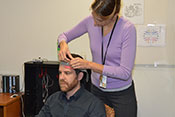 Photo by Kimberly DiDonato-Ferro
Photo by Kimberly DiDonato-Ferro
(01/24/2019)
Evidence is limited on the effectiveness of neuromodulation strategies to treat PTSD, according to a review led by a VA Greater Los Angeles Healthcare System researcher. In neuromodulation, electric currents or fields are applied to the head to influence brain circuits. The researchers looked for published studies on multiple techniques: electroconvulsive therapy, repetitive transcranial magnetic stimulation, transcranial direct current stimulation, vagus nerve stimulation, trigeminal nerve stimulation, and deep brain stimulation. While these techniques have had some success in treating other neurological disorders—such as depression and schizophrenia—not much evidence has been gathered related to PTSD. More studies are needed to improve the understanding of how neurocircuitry affects PTSD, say the researchers. (Progress in Neuro-psychopharmacology & Biological Psychiatry, Jan. 11, 2019)
Rates of wrong-site spinal surgery in VA
 Photo: ©iStock/Morsa Images
Photo: ©iStock/Morsa Images
(01/24/2019)
The VA National Center for Patient Safety investigated the rates of wrong-site spinal surgery in the Veterans Health Administration. Surgery on the wrong region of the spinal cord is one of the most commonly reported surgical mistakes. The researchers found 32 cases of wrong-site spinal surgery over an 18-year period in the VHA. This equates to an error in 2.66 of every 10,000 spinal surgeries, a rate comparable to that seen nationally outside VA. The most common cause was a problem with the X-ray, such as image quality. Error rates in spinal surgery were steady during the 18-year study period, even though error rates in other types of surgeries declined. New methods to optimize X-ray image quality and interpretation may be needed to correct this problem, say the researchers. (Clinical Spine Surgery, Jan. 11, 2019)
ADHD drug may help in Parkinson's
 Photo: ©iStock/MarsBars
Photo: ©iStock/MarsBars
(01/24/2019)
The medication atomoxetine shows potential for treating executive dysfunction caused by Parkinson's disease, found a Durham VA Health Care System review. Atomoxetine (sold as Strattera) is commonly used to treat ADHD. Executive functioning refers to cognitive processes involved in planning, organizing, and completing tasks. Several studies showed that atomoxetine improves markers of executive dysfunction—such as impulsivity, risk-taking, and global cognition—in Parkinson's patients. The drug was well-tolerated in most studies, with a few reports of gastrointestinal problems or insomnia. The results show that atomoxetine should continue to be explored to treat Parkinson's disease, according to the researchers. (Journal of Clinical Psychopharmacology, December 2018)
Chronic kidney disease care varies widely in VA system
 Photo: ©iStock/Natali_Mis
Photo: ©iStock/Natali_Mis
(01/16/2019)
Chronic kidney disease treatment in VA facilities varied widely and was often suboptimal, found a study including Michael E. DeBakey VA Medical Center researchers. The study looked at nearly 300,000 patients with both CKD and diabetes receiving care in 130 VA facilities. They found that rates of laboratory test ordering and nephrology referral scheduling varied widely. Only 13 percent of patients met all outcomes measuring recommended care for chronic kidney disease. The results show that further efforts are needed to standardize CKD care within VA, say the researchers. They did note in an interview with the health website Healio.com that "these rates are similar [to, if not better than those of] other health care systems." (Clinical Journal of the American Society of Nephrology, Dec. 7, 2018)
Hybrid treatment proves effective for Veterans with PTSD and TBI
 Photo: ©iStock/Steve Debenport
Photo: ©iStock/Steve Debenport
(01/16/2019)
A new hybrid treatment called SMART-CPT led to improvement in PTSD symptoms and cognitive functioning in patients with PTSD and traumatic brain injury, in a VA San Diego Healthcare System study. Researchers combined two treatments to create SMART-CPT. Cognitive Symptom Management and Rehabilitation Therapy (CogSMART) aims to improve memory and function through brain training—such as list memorization and problem-solving drills—after a brain injury. Cognitive processing therapy (CPT)—a widely used PTSD treatment—is talk therapy that helps patients change their thinking about traumatic events. In the study, Veterans with PTSD and TBI were given either CPT only or SMART-CPT. Patients in both groups had lower PTSD and postconcussive symptoms after treatment. Those in SMART-CPT also had additional improvements in attention/working memory, verbal learning/memory, and novel problem-solving. The results show that SMART-CPT can have benefits beyond CPT alone. (Journal of Neurology, Neurosurgery, and Psychiatry, Dec. 15, 2018)
Improving prediction of Alzheimer's disease
 Illustration: ©iStock/tampatra
Illustration: ©iStock/tampatra
(01/16/2019)
Changing the criteria for mild cognitive impairment diagnosis to include two separate memory tests allows for better prediction of future Alzheimer's disease, according to a study including a VA San Diego Healthcare System researcher. The study looked at patients diagnosed with MCI by Alzheimer's Disease Neuroimaging Initiative (ADNI) criteria who also took a second memory test, the Rey Auditory Verbal Learning Test (AVLT). Patients who showed MCI on both memory tests had consistently higher levels of biomarkers for Alzheimer's disease, compared with patients diagnosed with MCI by the ADNI but not the AVLT, and cognitively normal patients. Catching Alzheimer's early gives patients more time to prepare, and medications are more effective in early stages of the disease. Using a single MCI test often yields false positives or negatives, according to the researchers. They concluded that changing the requirement for MCI diagnosis to include two different memory tests could improve prediction of progression to Alzheimer's disease. (Brain Imaging and Behavior, Dec. 4, 2018)
Racial disparities in electroconvulsive therapy
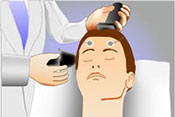 Illustration: National Institute of Mental Health
Illustration: National Institute of Mental Health
(01/14/2019)
Racial disparities exist in the use of electroconvulsive therapy to treat depression in older adults, found a study including a Houston VA health Care System researcher. ECT involves applying electrical current to the brain to treat mood disorders. It has proven effective in treating major depressive disorder when medication does not work. The researchers looked at nearly 700,000 patients older than 65 in a national health care database. They found that black and Hispanic patients were nearly half as likely to receive ECT, compared with white patients. While the research team acknowledges that patient preference may have played some role, they assert that efforts are needed in any case to ensure that minority groups have equal access to care. (American Journal of Geriatric Psychiatry, Nov. 29, 2018)
Barriers to medication treatment for opioid use disorder
 Photo: ©iStock/Charles Wollertz
Photo: ©iStock/Charles Wollertz
(01/14/2019)
VA Palo Alto Health Care System researchers explored the barriers to using medication to treat opioid use disorder within VA. Evidence shows that medications such as methadone, buprenorphine, and naltrexone care be effective at treating opioid use disorder. However, only 21 percent of patients with the disorder in VA residential treatment are on these medications. According to patient and staff surveys, barriers to this type of treatment include program philosophy against medication use, lack of coordination with other treatment settings, and perceived low patient interest. Having prescribers on staff, education and support for patients and staff, and support from leadership would help facilitate medication treatment, according to survey responses. (Journal of Studies on Alcohol and Drugs, November 2018)
Survey: Most Vets OK with curbing gun access during times of high suicide risk
 Photo: ©iStock/GummyBone
Photo: ©iStock/GummyBone
(01/14/2019)
Veterans receiving mental health care were in favor of voluntary programs to reduce firearm access during high-risk periods for suicide, in a VA Ann Arbor Health Care System survey. Veterans in mental health care have high rates of firearm-related suicide. Of Veterans surveyed receiving mental health care at one VA facility, 93 percent were in favor of health system interventions to limit firearm access. Of those, 75 percent were in favor of substantially limiting firearm access during times of crisis. While Veterans with household firearms were less likely to be in favor of interventions, 50 percent of the group that owns firearms still said they would participate in an intervention to limit firearm access during high-risk periods. The results suggest that VA and other health systems should consider more intensive efforts to voluntarily limit firearm access during high-risk periods, say the researchers. (General Hospital Psychiatry, Nov.-Dec. 2018)
Risk factors for transition from suicidal thoughts to attempts
 Photo for illustrative purposes only. ©iStock/Geber86
Photo for illustrative purposes only. ©iStock/Geber86
(01/03/2019)
A team co-led by a VA San Diego Healthcare System researcher identified characteristics that differed between service members who contemplated suicide and those who went on to make a suicide attempt. As part of the Army STARRS study, researchers surveyed more than 10,000 soldiers. They found that, compared with soldiers without suicidal thoughts, those with suicidal thoughts had higher rates of interpersonal violence, relationship problems, major depressive disorder, PTSD, and substance use disorder. Soldiers with combat trauma in the past 12 months, intermittent explosive disorder, or any college education were less likely to have suicidal thoughts. Of those with suicidal thoughts in the past 30 days, those with PTSD had higher risk of suicide attempt. Those with intermittent explosive disorder or some college education were less likely to have attempted suicide. The results show that PTSD, intermittent explosive disorder, and education should be considered when studying what makes suicidal ideation transition into suicide attempts. (Depression and Anxiety, Dec. 14, 2018)
Carpal tunnel syndrome treatment varies widely in VA
 Photo: ©iStock/PeopleImages
Photo: ©iStock/PeopleImages
(01/03/2019)
Nonsurgical therapy use for carpal tunnel syndrome varies widely within the Veterans Health Administration, according to a study by VA Ann Arbor and Palo Alto researchers. Of nearly 80,000 patients diagnosed with carpal tunnel syndrome, 8 percent had surgery. Across different facilities, between 0 and 93 percent of surgical patients received physical therapy, occupational therapy, or an orthotic. Between 1 and 67 percent of nonsurgical patients received these types of therapy. Between 0 and 100 percent of surgical patients had electrodiagnostic studies (such as X-rays or CT scans), while between 0 and 55 percent of nonsurgical patients had diagnostic scans. The results suggest that clinical practice guidelines are needed to improve the uniformity and efficiency of carpal tunnel care, say the researchers. (Journal of Hand Surgery, Dec. 19, 2018)
Probing the evidence for probiotics
 Illustration: ©iStock/wildpixel
Illustration: ©iStock/wildpixel
(01/03/2019)
Evidence suggests that several probiotics are effective to treat various conditions, found a study by an Edward Hines, Jr. VA Hospital researcher and colleagues. Probiotics are live bacteria and yeast that promote a healthy microorganism balance in the digestive tract. While many probiotics are on the market, evidence is lacking on their effectiveness. Researchers reviewed the current medical literature and consulted experts in the field about which probiotics have been shown to be effective. They found enough evidence to suggest that 22 different types of probiotics are effective at treating different conditions. Some probiotics had strong evidence for treatment of conditions such as antibiotic-associated diarrhea, pediatric acute diarrhea, and inflammatory bowel disease. The researchers stress that it is important to pick the correct strain, formulation, and dose of a probiotic to match a specific disease. (PLoS One, Dec. 26, 2018)
Intimate relationships may buffer against suicide
 Photo for illustrative purposes only. ©iStock/ljubaphoto
Photo for illustrative purposes only. ©iStock/ljubaphoto
(12/26/2018)
Strong intimate relationships could help protect service members from suicide, according to a VA Ann Arbor Health Care System study. Researchers surveyed 712 National Guard members after they returned home from deployment. The found that lower relationship satisfaction and more depressive symptoms at six months after deployment were linked to greater risk of suicide 12 months after deployment. Couple satisfaction was related to suicide risk for service members with PTSD, depression, and anxiety. The results show that the strength of an intimate relationship could serve as a buffer against suicide for patients who have these conditions, say the researchers. (Suicide and Life-Threatening Behavior, Dec. 3, 2018)
Molecular brain damage after blast exposure
 Illustration ©iStock/kh_art
Illustration ©iStock/kh_art
(12/26/2018)
A team including researchers from the Bedford VA Medical Center in Massachusetts have shown molecular changes in brain cells that occur after a mild traumatic brain injury. The researchers used a mouse model to simulate exposure to low-intensity blasts, analogous to those experienced by many service members. They found changes in interactions within cells for more than 2,000 different proteins. The brain cells showed mitochondrial dysfunction, as well as other structural damage. This damage negatively affected cell growth, development, and other functions. Understanding what molecular changes occur after mild traumatic brain injury could help scientists better identify and treat brain injuries. (Journal of Neurotrauma, Nov. 28, 2018)
Adding fish oil to a statin did not lead to better cardiovascular health in Veteran study
 Photo: ©iStock/solidcolours
Photo: ©iStock/solidcolours
(12/26/2018)
Adding fish oil to statin treatment did not improve cardiovascular outcomes in a Fargo VA Health Care System database study that included nearly 1,000 patients. Statins are the standard drugs prescribed for high cholesterol. Past research has shown that fish oil could help prevent major coronary events in patients with high cholesterol. The researchers looked at data for Veterans prescribed either a statin alone or statins and fish oil together. They did not find any difference between the group in number of cardiovascular events—such as heart attack or stroke—or in rates of any-cause death. The results suggest that adding fish oil to statin treatment does not lower the risk of cardiovascular problems. (Federal Practitioner, October 2018)
Lowering of blood pressure medication linked to fewer falls in long-term care
 Photo: iStock/Toa55
Photo: iStock/Toa55
(12/20/2018)
Deintensification, or lowering, of blood pressure medication could lead to fewer falls in older adults in nursing homes, found a study by researchers from several VA facilities. Researchers looked at data on more than 2,000 VA nursing home residents whose records suggested evidence of overly aggressive blood pressure treatment. Eleven percent of patients had had their medication lowered prior to the study. Those whose medication levels were lowered had a significantly lower risk of recurrent falls than other patients. The results suggest that steps should be taken to deintensify overly aggressive treatment for high blood pressure, say the researchers. (Health Services Research, December 2018)
Lab study suggests heart benefits from widely used diabetes drug
 Photo: iStock/dra_schwartz
Photo: iStock/dra_schwartz
(12/20/2018)
An international lab study that included a VA San Diego Healthcare System researcher showed that congenital heart disease (CHD) and obesity can lead to heart failure, but treatment with metformin, a widely used diabetes drug, can prevent the condition. CHD is the most frequent birth defect worldwide. Researchers found that the combination of CHD and a high-fat diet in mice led to heart failure. Giving mice the drug metformin prevented this heart dysfunction. Early treatment with metformin may prevent or delay the onset of heart failure in patients with CHD, say the researchers. (Molecular Metabolism, Nov. 15, 2018)
Prolonged exposure therapy, medication equally effective at treating PTSD in new study
 Photo: iStock/KatarzynaBialasiewicz
Photo: iStock/KatarzynaBialasiewicz
(12/20/2018)
PTSD treatment with prolonged exposure therapy and with the anti-anxiety drug sertraline (sold as Zoloft) showed similar effectiveness, in a study including several VA researchers. Researchers treated 223 Veterans with PTSD with one of three treatments: prolonged exposure therapy plus a placebo, prolonged exposure therapy plus sertraline, or sertraline plus a medication management program. After 24 weeks, patients in all three groups had significantly decreased PTSD symptoms. No significant symptom differences existed between groups. Prolonged exposure therapy, a type of psychotherapy, is a preferred PTSD treatment within VA. The researchers expected that therapy and sertraline together would prove the most effective. The results suggest that adding medication to prolonged exposure therapy does not further improve PTSD symptoms, according to the researchers, although they say more study is necessary. (JAMA Psychiatry, Dec. 5, 2018)
Robotic heart procedure shown to be safe and effective
 Photo: ©iStock/3alexd
Photo: ©iStock/3alexd
(12/12/2018)
Robotic percutaneous coronary intervention is as safe and effective as manual PCI, found a study including VA San Diego Healthcare System researchers. In PCI, surgeons use a catheter to place a stent in blood vessels in the heart. Manual PCI procedures can expose the surgeon to radiation from the X-ray machine, as well as other occupational hazards. Using a robotic platform can protect surgeons from these hazards. To see how well robotic PCI works compared with manual procedures, researchers looked at outcomes from 108 robotic and 226 manual PCIs. They found no differences between the procedures in adverse cardiovascular events after six and 12 months. The results show that robotic PCI can be similarly effective to manual PCI while offering protection to the surgeons. (Catheterizations and Cardiovascular Interventions, Nov. 19, 2018)
Two DNA sites linked to PTSD risk
 Photo: ©iStock/Gio_tto
Photo: ©iStock/Gio_tto
(12/12/2018)
A team including a VA San Diego Healthcare System researcher identified two genome sites that may influence a person's risk for PTSD. While trauma exposure often leads to PTSD, not everyone who experiences trauma develops PTSD. To explore why that is, researchers looked at the genomes of trauma-exposed people with and without PTSD. They found that those with PTSD had more methylation at two specific genome sites: NRG1 and NGS. Methylation is when a chemical compound (methyl) attaches to the DNA molecule. It can change how the DNA segment acts. Future research should focus on whether this DNA activity existed prior to trauma, making it a risk factor for PTSD, or whether PTSD causes the activity, say the researchers. (Epigenomics, Nov. 20, 2018)
Cisplatin superior to cetuximab for cancer treatment
 Illustration: ©iStock/Nerthuz
Illustration: ©iStock/Nerthuz
(12/12/2018)
The drug cisplatin was superior to cetuximab in treating head and neck cancer along with radiation therapy, in a study by researchers from the Michael J Crescenz and James J. Peters VA medical centers. Both cisplatin and cetuximab are commonly given along with radiation therapy to treat head and neck squamous cell carcinoma. The researchers looked at 4,520 cancer patients over a period of three years. They found that those on cetuximab had significantly inferior overall survival, compared with patients taking cisplatin. The results suggest that cisplatin is the most appropriate drug partner for radiation therapy, say the researchers. (Cancer, Oct. 20, 2018)
Large genome study leads to better understanding of high blood pressure
 Photo by Jeff Bowen
Photo by Jeff Bowen
(12/04/2018)
A large international genetic study that included several VA researchers has identified more than 500 new gene locations that affect blood pressure. The project is the largest genetic study of blood pressure to date, involving more than 1 million participants. It included data from VA's Million Veteran Program. By comparing participants' genetic data, researchers identified 535 new locations on the human genome that influence blood pressure. The researchers calculate that the new findings increase the knowledge of inheritable blood pressure traits by 27 percent. They call the findings "an important step forward" in understanding how genes affect blood pressure. (Nature Genetics, October 2018)
Program improved staff interactions with residents
 Photo for illustrative purposes only. ©iStock/monkeybusinessimages
Photo for illustrative purposes only. ©iStock/monkeybusinessimages
(12/04/2018)
A training program improved interactions between staff and VA community living center residents, in a study by researchers at several VA facilities. The intervention centered on observations, huddles, and a focus on the positive. Researchers surveyed 62 residents and 308 staff members after the staff behavioral change program. Results showed increased communication and decreased negative staff intervention with residents after the training. Staff members credited the program with helping them to understand the importance of engagement and improving the quality of their interactions with residents. (Gerontologist, July 13, 2018)
White matter damage could explain chronic headaches after TBI
 Photo: ©iStock/wenht
Photo: ©iStock/wenht
(12/04/2018)
Researchers with the VA San Diego Healthcare System have identified white matter abnormalities in the brains of patients with mild traumatic brain injury that may help explain their chronic headaches. The study used brain imaging data from 12 patients with TBI and chronic headache, compared with healthy controls. The TBI patients had abnormalities of the white matter in two brain tracts: the left superior longitudinal fasciculus, and the right anterior thalamic radiation. These tracts link different parts of the brain. This disruption of communication within the brain could be partly responsible for chronic headaches often experienced by patients with TBI, say the researchers. (Molecular Pain, Oct. 16, 2018)
Mouse study: Aspirin may slow multiple sclerosis
 Photo by Jerry Daliege
Photo by Jerry Daliege
(11/29/2018)
Low-dose aspirin could suppress multiple sclerosis symptoms and slow the disease, according to a mouse study by Jesse Brown VA Medical Center researchers. Mice with a condition similar to MS were given small doses of aspirin orally. Mice given aspirin show reduced symptoms for both relapsing-remitting and chronic forms of the disease. The aspirin also seems to have prevented destruction to the myelin sheath in the spinal cord caused by destructive T-cells. The researchers found that aspirin reversed the depletion of regulatory T-cells that occurs in MS, which may have helped stop other T-cells from attacking nerve fibers. While more study is needed, the results suggest that low-dose aspirin regimens could help patients with MS, say the researchers. (Science Signaling, Nov. 27, 2018)
Rural, urban ICUs perform similarly in VA system
 Photo: ©iStock/PeopleImages
Photo: ©iStock/PeopleImages
(11/29/2018)
Rural intensive care units (ICUs) in VA facilities perform similarly to their urban counterparts, found an Iowa City VA Health Care System study. Researchers looked at data on nearly 10,000 rural patients and almost 66,000 urban patients. They found that patients treated at rural ICUs had similar mortality rates, despite rural locations having lower-complexity facilities. Rural patients were less likely to have respiratory illnesses and more likely to have sepsis than urban patients, and they had higher illness severity scores. Rural patients also had fewer inter-hospital transfers and shorter ICU length of stay. The results indicate that being part of a national health care system may have benefits for rural facilities that should be explored outside the VA system, according to the researchers. (Journal of Critical Care, Oct. 19, 2018)
Study explains gene mutation's link to ALS
 Photo: ©iStock/imaginima
Photo: ©iStock/imaginima
(11/29/2018)
Researchers at the VA Lexington Medical Center and University of Kentucky have shown how a gene mutation may contribute to the development of amyotrophic lateral sclerosis (ALS). Mutation to a gene called fused in sarcoma (FUS) are known to contribute to some cases of inherited ALS. The researchers showed that this mutation can suppress protein translation and interfere with how RNA functions in the body. The mutated proteins generated by the FUS gene disrupt an RNA quality-control pathway, which damages neuronal maintenance and function. Because this mutation suppresses how proteins are translated within cells and disrupts how RNA regulates cell activity, it likely contributes to the motor cell death seen in ALS. According to the researchers, the results will add to the understanding of both how this specific mutation can lead to inherited ALS, and more generally how ALS develops. ( Proceedings of the National Academy of Sciences, Nov. 19, 2018)
Patients more likely to use psychotropic medication in suicide attempts when they have a prescription
 Photo: ©iStock/DNY59
Photo: ©iStock/DNY59
(11/21/2018)
People at high risk for suicide who had a psychotropic medication prescription were more likely to use that type of drug in suicide attempts than those without a prescription, found a study including a Rocky Mountain Regional VA Medical Center researcher. The study looked at health insurance data for nearly 23,000 people who had attempted suicide. Those who had prescription access to a psychotropic drug were 1.7 times more likely to use that drug to attempt suicide than those without a prescription. People with antipsychotic or mood stabilizer prescriptions had the highest odds of using their prescription drug in a suicide attempt. Antianxiety drugs were the most common class of drugs used, regardless of prescription status, accounting for 59 percent of overdose attempts. The results show that people at risk for suicide with psychotropic prescriptions should be targeted for safety interventions, say the researchers. (Journal of Clinical Psychiatry, Nov. 6, 2018)
High cholesterol linked to lower risk of death in chronic kidney disease patients
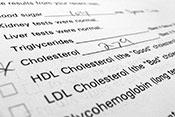 Photo: ©iStock/lbodvar
Photo: ©iStock/lbodvar
(11/21/2018)
High cholesterol was linked to lower risk of death in chronic kidney disease patients, but higher risk of death in other patients, in a VA Long Beach Healthcare System study. Researchers looked at data on more than 2 million Veterans. They found that, in patients with chronic kidney disease, patients with cholesterol levels higher than 200 mg/dL had lower risk of all-cause death. However, patients without chronic kidney disease had a higher risk of death from cardiovascular conditions when their cholesterol was above 200 mg/dL. More research is needed to explore the seemingly paradoxical relationship between chronic kidney disease and cholesterol, according to the researchers. (American Heart Association Scientific Sessions, Nov. 10, 2018)
Reasons for trauma-focused therapy drop-out
 Photo: ©iStock/asiseeit
Photo: ©iStock/asiseeit
(11/21/2018)
Minneapolis VA Healthcare System researchers explored why some Veterans with PTSD drop out of prolonged exposure and cognitive processing therapy, the two main forms of psychotherapy that VA uses to treat the condition. About one-third of Veterans who begin prolonged exposure and cognitive processing therapy do not complete treatment. Researchers interviewed 60 patients who completed treatment and 68 who did not to look for differences. They found differences between the groups in the strength of the working relationship between patient and therapist, patients' ability to cope with increased distress, and internal motivation. Treatment buy-in, logistical factors such as transportation, and beliefs about treatment did not appear to influence the drop-out rate. (Annual Meeting of the International Society for Traumatic Stress Studies, Nov. 9, 2018)
Diabetes prevention program equally effective online and in person
 Photo: ©iStock/Wand_Prapan
Photo: ©iStock/Wand_Prapan
(11/14/2018)
Diabetes prevention programs delivered in person and online can be similarly effective for both older and younger Veterans, found a VA Ann Arbor Healthcare System study. Researchers looked at data from 378 Veterans enrolled in a weight management program either in-person or online. Over 70 percent of participants completed eight or more sessions within six months. A higher percentage of the online group completed at least eight sessions. Both online and in-person groups saw similar weight loss. Weight loss was the same for both younger participants and participants 65 or older. The results show that online programs may be an good way for diabetes prevention programs to reach older adults, say the researchers. (Diabetes Care, Oct. 30, 2018)
Benzodiazepine use linked to greater hospitalization, suicide risk in those with PTSD
 Photo: ©iStock/happyphoton
Photo: ©iStock/happyphoton
(11/14/2018)
Patients with PTSD who were prescribed benzodiazepines, such as Valium or Xanax, had higher health care utilization and suicide risk than similar patients not given the drugs, in a study by VA Salt Lake City Health Care System researchers. They looked at data on more than 240,000 Veterans with PTSD. About 7 percent of those were prescribed benzodiazepines during the 14 years examined in the study. Patients prescribed benzodiazepines had more hospitalizations, as well as outpatient and mental health visits, than those not on the drug. Benzodiazepines users had a significantly greater risk of death from suicide, and were more likely to have suicide attempts or suicidal thoughts. The study strengthens the evidence against use of the drugs in Veterans with PTSD, according to the researchers. (Journal of Clinical Psychiatry, Oct. 23, 2018)
Household paints likely to contain rash-causing allergen
 Photo: ©iStock/gece33
Photo: ©iStock/gece33
(11/14/2018)
Household paints frequently contain isothiazolinones, despite claims on safety data sheets, according to a study featuring Minneapolis VA Medical Center researchers. Isothiazolinones are commonly used as preservatives in household products, but can cause allergic reactions. The researchers tested 47 common paints. All 47 contained at least one isothiazolinone. Concentration varied based on the type of isothiazolinone present. Isothiazolinones were present even in paint specifically advertised as being preservative-free. Safety data sheets, which are supposed to disclose potential allergens, were inaccurate and insufficient to warn against possible contact dermatitis, say the researchers. (Dermatitis, Oct. 20, 2018)
Omega-3 fatty acids boost neurological health after stroke in mice
 Photo: ©iStock/BlackJack3D
Photo: ©iStock/BlackJack3D
(11/07/2018)
Omega-3 fatty acids were shown to improve neurological health after stroke, in a mouse study by VA Pittsburgh Health Care System researchers. The researchers gave mice food supplements of omega-3 polyunsaturated fatty acids, including from fish oil, for 35 days after a stroke. Mice given omega-3 had better cognitive function and neurovascular healing than those not on the supplements. Omega-3 was not as effective at improving cognitive function in older animals as in younger animals, although older animals did improve some. The results suggest that omega-3 fatty acid could be a promising therapy after stroke, say the researchers. (Neurobiology of Disease, Sept. 12, 2018)
Battlefield acupuncture effective in both groups and individually
 Photo by Robert Turtil
Photo by Robert Turtil
(11/07/2018)
Battlefield acupuncture was effective in treating back pain in both group and individual settings, in a West Haven VA Medical Center study. In battlefield acupuncture, needles are placed in specific sites in the ear to influence the nervous system. The researchers treated 284 Veterans with back pain in either a group or individual setting, for a total of close to 800 treatment sessions. Patients self-reported a decrease in pain after 82 percent of treatments. Patients reported no change after 10 percent of treatments, and reported increased pain after 8 percent of the sessions. Both group and individual treatment had similar rates of effectiveness. The results confirm that battlefield acupuncture could be a useful treatment to relieve pain, whether administered in a group or individually. (Medical Acupuncture, Oct. 1, 2018)
Study reveals how lungs protect against damage from cigarette smoke
 ©iStock/bagi1998
©iStock/bagi1998
(11/07/2018)
A study by VA Pittsburgh Healthcare System researchers explored mechanisms that protect the lungs from oxidants and how smoking can damage these processes. The researchers looked at two parts of the lungs' defense system: an enzyme called GPx3 and a hormone receptor called PPAR-gamma. They found that GPx3 expression was decreased in the lungs of patients with chronic obstructive pulmonary disease (COPD). The study showed that PPAR-gamma responds to oxidative stress from cigarette smoke by increasing GPx3 production, which helps protect the lungs from damage. However, the researchers also found that cigarette smoke makes the relationship between GPx3 and PPAR-gamma less effective. They believe that the results could be useful in the development of more effective treatments for COPD. (Free Radical Biology and Medicine, October 2018)
Small molecule has potential as non-opioid pain drug
 Photo: ©iStock/kasto80
Photo: ©iStock/kasto80
(11/02/2018)
A team featuring several VA researchers have discovered a non-narcotic drug that has potential to reduce neuropathic pain. The team designed and synthesized a small molecule that disrupts protein exchange in calcium channels in nerves. Calcium channels control the flow of molecules between nerve membranes, and have been shown to affect how pain is perceived. The channel targeted by the new molecule is important for the release of pain neurotransmitters in the spinal cord. When given to rodents, the molecule lowered their neuropathic pain response. This discovery has potential to be developed into a non-opioid pain medication, according to the researchers. (Proceedings of the National Academy of Sciences, Oct. 24, 2018)
Brain stimulation technique no better than sham version in depression study
 Brain illustration: ©iStock/cosmin4000
Brain illustration: ©iStock/cosmin4000
(11/02/2018)
In a trial sponsored by VA's Cooperative Studies Program, Veterans receiving repetitive transcranial magnetic stimulation for major depression did not show greater signs of remission than those not undergoing the treatment. In TMS, an electromagnetic coil is placed on the head to stimulate a specific brain region. The researchers treated 164 Veterans with treatment-resistant major depression with either TMS or sham treatment. Of those receiving TMS, 41 percent saw remission of depressive symptoms. In the sham group, 37 percent saw remission. The difference was not statistically significant, say the researchers. The results do not support previous studies in civilians showing TMS to be effective for major depression. In fact, the FDA has approved TMS to treat depression that doesn't respond to other treatments. The VA researchers believe the difference could be that Veterans often have multiple mental health conditions, making treatment more complex. They point to the fact that patients in the TMS group without PTSD were more likely that those with PTSD to achieve remission in the study. The researchers also note that the remission rate for both the TMS and sham groups was higher than seen in previous studies. They say this could be because Veterans had higher expectations of recovery and because their medications and other treatments were closely monitored. (JAMA Psychiatry, Sept. 1, 2018)
Study explores alcohol counseling for Vets in non-VA care
 Photo for illustrative purposes only. ©iStock/PeopleImages
Photo for illustrative purposes only. ©iStock/PeopleImages
(11/02/2018)
Veterans were more likely than non-Veterans to be screened by doctors for heavy drinking, found a study by VA Pittsburgh and Puget Sound health care system researchers. While past research has shown that Veterans receiving care through VA have high rates of alcohol screening and intervention, less than 50 percent of Veterans in the U.S. use VA health care. The researchers looked at data on more than 92,000 people who had visited a non-VA doctor for a routine checkup within the last two years, 14 percent of whom were Veterans. The Veterans were more likely to be screened for alcohol quantity and heavy episodic drinking than non-Veterans. They were also more likely to receive advice about alcohol's harmful effects. However, Veterans were not more likely to receive advice to reduce or abstain from drinking. The results point to some gaps in the delivery of recommended alcohol-related care, especially for vulnerable populations such as women Veterans, say the researchers. (Journal of Substance Abuse Treatment, Sept. 8, 2018)
Food environment can alter weight management effectiveness in men
 Photo for illustrative purposes only. ©iStock/gilaxia
Photo for illustrative purposes only. ©iStock/gilaxia
(10/25/2018)
The food environment in people's neighborhoods slightly affects how effective VA's MOVE! weight management program is, at least among men, found a study by VA Great Lakes Health Care System researchers and their colleagues. MOVE! is a VA program designed to help Veterans eat healthier, be more physically active, and achieve weight loss goals. Researchers studied data on MOVE! patients and community locations for a seven-year period. They found that the program was slightly less effective for men living near fast food restaurants or convenience stores. The food environment did not change the program's effectiveness among women. The results highlight the importance of considering environmental and community factors in weight loss, say the researchers. (Health Services Research, Sept. 23, 2018)
More research needed on stem cell therapy for diabetic foot ulcers
 Photo: ©iStock/Hotaik Sung
Photo: ©iStock/Hotaik Sung
(10/25/2018)
Studies suggest that stem cell therapy could be an effective treatment for diabetic foot ulcers, but more research is needed on best techniques, according to a review by a team including a VA Connecticut Healthcare System researcher. Multiple studies have shown that stem cell therapy for diabetic foot ulcers is both safe and effective. However, studies varied widely on what stem cell type they used and how the treatment was delivered. Many different study designs were used, making it difficult to compare techniques. Because of these differences, the researchers emphasize the need for new studies to reach consensus on the best ways to test and deliver stem cell therapy for this condition. (Stem Cell Research & Therapy, July 11, 2018)
Studies teases out impact on kidneys of intensive blood pressure lowering
 Photo: ©iStock/Tashi-Delek
Photo: ©iStock/Tashi-Delek
(10/25/2018)
Two studies featuring several VA researchers found that intensive blood pressure lowering led to a decline in estimated glomerular filtration rate (eGFR), but not other signs of kidney damage. Doctors commonly use eGFR as a measure of kidney function. Previous research has suggested that intensive blood pressure control can lead to kidney injury. One study (ACCORD-BP) examined blood pressure risk in patients with diabetes. The other (SPRINT) looked at patients with high blood pressure who also had chronic kidney disease. Each study checked eGFR levels, as well as other biomarkers of kidney damage, in different groups of patients undergoing intensive blood pressure lowering treatment. Both found that intensive blood pressure lowering was linked with reductions in eGFR. However, neither study detected increases of biomarkers in the urine that usually indicate kidney damage. Both studies concluded that declines in eGFR may reflect hemodynamic changes—changes to blood flow—rather than actual kidney injury. (American Journal of Kidney Disease, Sept. 28, 2018)
PTSD not tied to asthma in Veteran study
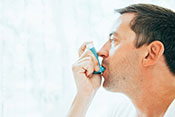 Photo for illustrative purposes only. ©iStock/Chalffy
Photo for illustrative purposes only. ©iStock/Chalffy
(10/17/2018)
PTSD was not linked to bronchodilator response, a marker of asthma, in a VA New Jersey Health Care System study. Past research has suggested that PTSD may be linked to symptoms of asthma in combat Veterans. To test this association, researchers looked at the breathing and PTSD symptoms of 188 Veterans of Iraq or Afghanistan. They found that responses to a bronchodilator—a drug that opens the airways, used to treat asthma—were not different between participants with and without PTSD symptoms. The researchers specifically looked at three symptoms of PTSD—re-experiencing, avoidance, and arousal—and did not find any link between any symptom and participants' breathing. (Canadian Institute for Veteran and Military Health Research, Oct. 16, 2018)
The role of fatty acids in diabetic neuropathy
 Photo: ©iStock/JanIngeskogheim
Photo: ©iStock/JanIngeskogheim
(10/17/2018)
Unsaturated fatty acids have potential for treating diabetic neuropathy, according to a review by a VA Iowa City Health Care System researcher. Diabetic neuropathy refers to nerve damage caused by diabetes. Multiple studies show that a diet high in saturated fat slows nerve function in rodents. Other studies with rodents suggest that unsaturated fats like omega-6 or omega-3 fatty acids could improve or even reverse vascular and neural problems. Studies show that resolvins, a type of unsaturated fatty acid, can promote neuron cell growth in diabetic mice. Omega-3 polyunsaturated fatty acids derived from fish oil have anti-inflammatory properties and could help with diabetic neuropathy, says the researcher. Clinical trials would be needed to test whether these substances would help people with diabetes. (Current Diabetes Reports, Aug. 25, 2018)
3D modeling of brain cells reveals protein changes linked to Alzheimer's
 Photo: ©iStock/Henrik5000w
Photo: ©iStock/Henrik5000w
(10/17/2018)
Researchers from the Edith Nourse Rogers Memorial Veterans Hospital in Bedford, Massachusetts, found protein alterations in neurons of Alzheimer's disease patients by using a new technique. Studying neurons in a two-dimensional slide under a microscope, the usual way they are analyzed, does not give a full picture. The researchers created "neuro-spheroids," 3D neuron cultures, using stem cells derived from patients' blood cells. Using this technique, they found a number of alterations to proteins in the neurons of Alzheimer's patients that would lead to dysfunction. When compared with postmortem brain tissue taken from Alzheimer's patients, the 3D neurons showed similar dysfunction. The results show this type of 3D modeling could help find Alzheimer's disease markers. The identified proteins could have important implications for the progression of the disease, say the researchers. (Journal of Proteomics, June 30, 2018)
Nursing home quality of care linked to cost
 Photo: ©iStock/LPETTET
Photo: ©iStock/LPETTET
(10/10/2018)
Higher quality of nursing home care was linked to higher cost, in a study of 132 VA community living centers. Researchers looked at data from two years for all community living centers in the VA system. They measured quality of care by looking at rates of adverse health events (such as falls). Fewer adverse events were linked to higher predicted cost, suggesting that greater resources allocated to quality lead to better care. However, higher costs were not driven by higher nurse staffing levels. According to the researchers, more studies are needed to determine what precisely drives the relationship between quality and cost. (PLoS One, Sept. 19, 2018)
Evidence lacking on outcomes of genetic testing for statin resistance
 Photo: ©iStock/jxfzsy
Photo: ©iStock/jxfzsy
(10/10/2018)
Information is lacking on patient outcomes for statin-associated muscle symptoms (SAMS) after testing for the SLCO1B1 gene, according to a VA Boston Healthcare System literature review. SAMS refers to muscle pain and weakness sometimes caused by statin medication used to treat cardiovascular disease. Previous studies have shown that people with the SLCO1B1 gene are more likely to get SAMS. The researchers looked at 37 studies for evidence that testing for SLCO1B1 could lead to treatment changes and improved cholesterol levels in statin-intolerant patients. They found very few reports of patient outcomes after SLCO1B1 testing. More studies are needed to explore whether this type of genomic testing can lead to improvements in care, say the researchers. (Clinical Pharmacology and Therapeutics, Aug. 23, 2018)
Study suggests adverse health impact on sexual minorities from religious freedom law
 Photo: ©iStock/JacobStudio
Photo: ©iStock/JacobStudio
(10/10/2018)
A team including a VA researcher found that "unhealthy days" increased for Indiana residents identifying as sexual minorities after that state passed a religious freedom restoration act (RFRA). Statewide religious freedom restoration laws aim to protect the free exercise of religion by ensuring that any government interference must be for "compelling" interests, and must employ the "least restrictive means" possible. Some legal scholars have argued that RFRAs could potentially expose sexual minorities to more discrimination. And past research has shown that stigma and discrimination could worsen physical and mental health for sexual minority individuals. The researchers surveyed sexual-minority individuals in 21 states with RFRAs in 2015. They found the number of people reporting more than 14 "unhealthy days" per month increased quarterly in Indiana following the passing of an RFRA there. Unhealthy days did not increase for heterosexual people. This trend did not occur in other states. Indiana was the only state to pass and enact an RFRA in the time frame of the study. Other states already had RFRAs in place or had passed an RFRA but not put it into practice. Indiana also differed from other states in that its law applies to cases between private parties, not just those involving government. (American Journal of Orthopsychiatry, Sept. 24, 2018)
Telehealth a viable way to improve antimicrobial stewardship
 Photo: ©iStock/vm
Photo: ©iStock/vm
(10/04/2018)
A pilot telehealth program shows promise in improving infectious disease control at rural medical centers, according to a Louis Stokes Cleveland VA Medical Center study. Staff at two rural VA medical centers used videoconferencing to work with infectious disease physicians at other facilities. These videoconference antimicrobial stewardship teams (VASTs) held weekly meetings to discuss ways to combat antimicrobial resistance on a patient-by-patient basis. After a year of the program, one site accepted VAST recommendations in 73 percent of cases presented, and the other accepted 65 percent of the recommendations. Participants felt that the sessions improved their antimicrobial stewardship efforts and patient care. (Infection Control and Hospital Epidemiology, Sept. 6, 2018)
Mental health disorders linked with more unintended pregnancy
 Photo: ©iStock/Vasyl Dolmatov
Photo: ©iStock/Vasyl Dolmatov
(10/04/2018)
Women Veterans with mental health disorders are more likely to have experienced unintended pregnancy than those without, found a study by VA Pittsburgh Health Care System researchers and colleagues. They surveyed almost 3,000 women Veterans by phone. Sixty percent of women with at least one mental health disorder reported having an unintended pregnancy, while 51 percent of women without a mental health disorder said they had had an unintended pregnancy. Mental health disorders were linked to a greater number of unintended pregnancies. Multiple mental health disorders were also connected to a greater number of unintended pregnancies. More research is needed on how to improve reproductive health outcomes for women with mental health disorders, say the researchers. (Journal of General Internal Medicine, Sept. 5, 2018)
Opioids not linked to better sleep for chronic pain patients
 Photo for illustrative purposes only. ©iStock fergusowen
Photo for illustrative purposes only. ©iStock fergusowen
(10/04/2018)
Opioid use did not improve insomnia or fatigue for patients with chronic pain, in a Minneapolis VA Health Care System study. Insomnia is a common problem related to chronic pain. Researchers studied data on medication dosage and sleep disturbance for patients taking opioids or non-opioid medication for chronic pain. Over a year of treatment, neither group showed improvements in insomnia or fatigue despite improvements in pain severity. Medication dosage increased over the course of the trial. Patients with chronic pain commonly take extra opioid medication to sleep, but this increase did not lead to improved sleep. The results suggest that patients should be encouraged to used evidence-based behavioral sleep interventions to manage their insomnia, according to the researchers. (International Association for the Study of Pain, Sept. 13, 2018)
Early nonadherence to diabetes drugs leads to more heart attacks and strokes
 Photo: ©iStock/Wavebreakmedia
Photo: ©iStock/Wavebreakmedia
(09/27/2018)
Patients who did not adhere early on to their medication treatment for type 2 diabetes were more likely to have poor health outcomes, found a study by VA Mid South Health Care Network researchers and their colleagues. Researchers looked at data for more than 159,000 Veterans with type 2 diabetes over an 11-year period. They measured patients' adherence to oral diabetes medication by how often patients filled prescriptions in the first year of treatment. Patients who did not take their medication as prescribed were 14 percent more likely to have a heart attack in the five years after starting treatment, compared with those who took their medication. Those not regularly taking their medication were 22 percent more likely to have a stroke. The less compliant patients were to their medication regimen, the higher their chances were of having a heart attack or stroke. Those not adhering to treatment were also more likely to have died. The results underscore the need to help patients understand the importance of taking their oral antidiabetes medication regularly, say the researchers. (Diabetes Medicine, July 6, 2018)
Blood test could predict effectiveness of NSAID treatment in Alzheimer's patients
 Photo by Derrick Morin
Photo by Derrick Morin
(09/27/2018)
Blood tests could identify which Alzheimer's disease patients will respond to non-steroid anti-inflammatory drug (NSAID) therapy, according to a study including a VA San Diego Healthcare System study. Previous research has shown the potential of NSAIDs to improve outcomes in Alzheimer's patients because the disease has been linked to inflammation. An earlier study treated Alzheimer's patients with two NSAIDs, rofecoxib and naproxen. In it, some patients improved and some declined in both groups as well as in controls. For the new study, researchers tested blood samples from these patients for four specific proteins that have been identified as inflammation biomarkers. They found that they could identify which patients in the rofecoxib group had cognitive improvements with 98 percent accuracy. They also predicted improvements in the naproxen group with 97 percent accuracy. The results show that a precision-medicine approach could identify which treatments will be most effective for specific patients with Alzheimer's, according to the researchers. (Journal of Alzheimer's Disease, Sept. 4, 2018)
Benzodiazepine prescribing higher than evidence warrants in older adults
 Photo for illustrative purposes only. ©iStock/BraunS
Photo for illustrative purposes only. ©iStock/BraunS
(09/27/2018)
Prescribing of benzodiazepines may be higher than appropriate in older adults, according to a study that included several VA researchers. The team looked at use of the drugs across various health systems, not just in VA. Benzodiazepines are sedative drugs commonly prescribed for conditions such as insomnia, anxiety disorders, and behavioral and psychological symptoms of dementia. However, evidence suggest that these drugs could be dangerous for elderly patients. The researchers looked at 31 studies on the effects of benzodiazepines in patients over age 50 with the above three conditions. They found 21 studies that demonstrated improved insomnia outcomes. Only one study showed a benefit of the drugs for patients with anxiety disorder. They also found only a single study that showed improvements in behavioral disturbances in patients with dementia. The results suggest that benzodiazepine prescribing in older adults is higher than what is supported by evidence, according to the researchers. Studies are needed on how to reduce use of this type of drug in older patients, they say. (Harvard Review of Psychiatry, Sept/Oct 2018)
Brain peptide implicated in migraine pain
 Photo for illustrative purposes only. ©iStock/laflor
Photo for illustrative purposes only. ©iStock/laflor
(09/20/2018)
VA and University of Iowa researchers may have identified one of the sources of migraine pain. Researchers injected mice with calcitonin gene-relate peptide (CGRP), a substance naturally found in the brain that is believed to be related to nerve hypersensitivity and photosensitivity in migraine. They found that CGRP caused spontaneous pain in the mice, regardless of whether they were in light or darkness. When the researchers gave the mice an antibody that blocks CGRP receptors, the pain went away. They also found that the nonsteroidal anti-inflammatory drug meloxicam did not block the effects of CGRP. The antimigraine drug sumatriptan partially blocked CGRP response in male mice, but not females. (Pain, Sept. 1, 2018)
Suicide risk common in patients with anxiety
 Photo for illustrative purposes only. ©iStock/PeopleImages
Photo for illustrative purposes only. ©iStock/PeopleImages
(09/20/2018)
A high number of patients with anxiety could be at risk for suicide, found a Syracuse VA Medical Center study. Researchers surveyed 182 primary care patients who had anxiety symptoms but were not in psychotherapy specialty care. Forty percent had elevated suicide risk, based on a standard assessment. Suicide risk was more common in patients who also had depression (51 percent) than in those who had anxiety alone (27 percent). The severity of anxiety symptoms did not affect patients' suicide risk. The results suggest that primary care providers should assess suicide risk in patients with anxiety, even when patients are not seeking mental health treatment or when their anxiety symptoms do not rise to the level of an anxiety disorder, say the researchers. (Family Practice, Sept. 14, 2018)
Oxytocin fails to boost social cognition in schizophrenia trial
 Illustration: ©iStock/goa_novi
Illustration: ©iStock/goa_novi
(09/20/2018)
Oxytocin did not improve social cognition in patients with schizophrenia, in a study by VA San Diego Healthcare System researchers and their colleagues. Social cognition refers to how a person deals with other people, including aspects like social knowledge and emotional processing. People with schizophrenia often have impaired social cognition. The researchers prescribed schizophrenic patients oxytocin—a drug that has been shown to improve social cognition in the general population—over 24 weeks, along with cognitive-behavioral training. Patients taking oxytocin showed no improvements in social cognition over the course of the study, compared with patients taking placebo. The results add to growing literature suggesting that oxytocin may not be effective in this population. (Psychological Medicine, Sept. 6, 2018)
Herbicide-related COPD rates differ between self-report and lung tests
 U.S. Army, via Wikimedia Commons
U.S. Army, via Wikimedia Commons
(09/14/2018)
Herbicide exposure during the Vietnam War was linked to self-reported chronic obstructive pulmonary disease (COPD), but the link was not supported by lung tests, in a study by VA's Office of Patient Care Services. Researchers surveyed more than 3,000 Veterans of the U.S. Army Chemical Corps who served in Vietnam. Those who had actively sprayed herbicides during their service were nearly twice as likely to say they had been told by a doctor that they had COPD, compared with non-sprayers. However, when the survey respondents were examined with spirometry—a common test of lung function—people in the spraying group were not more likely to have COPD than the non-spraying group. The difference may be due to physicians diagnosing COPD based on symptoms rather than spirometry, according to the researchers. Spirometry is underutilized by physicians, they say. (American Journal of Industrial Medicine, Aug. 29, 2018)
PTSD may disrupt parasympathetic nervous system during sleep
 ©iStock/domoyega
©iStock/domoyega
(09/14/2018)
Patients with PTSD had blunted parasympathetic nervous system modulation during sleep, found a Durham VA Health Care System study. The parasympathetic nervous system is the part of the nervous system that regulates rest and digestion. Heart-rate variability can be used to assess how well the parasympathetic system is working. Researchers studied the sleep of 62 post-9/11 Veterans and service members. They found that, for those with PTSD, high-frequency heart rate variability was lower during the non-rapid eye movement sleep phase, compared with those without PTSD. Impaired parasympathetic nervous system function increases the risk of cardiovascular events. This parasympathetic modulation could be one reason for the increased rates of cardiovascular disease among Veterans with PTSD, suggest the researchers. Patients with PTSD had blunted parasympathetic nervous system modulation during sleep, found a Durham VA Health Care System study. The parasympathetic nervous system is the part of the nervous system that regulates rest and digestion. Heart-rate variability can be used to assess how well the parasympathetic system is working. Researchers studied the sleep of 62 post-9/11 Veterans and service members. They found that, for those with PTSD, high-frequency heart rate variability was lower during the non-rapid eye movement sleep phase, compared with those without PTSD. Impaired parasympathetic nervous system function increases the risk of cardiovascular events. This parasympathetic modulation could be one reason for the increased rates of cardiovascular disease among Veterans with PTSD, suggest the researchers. (Sleep, Aug. 29, 2018)
Development of a new non-addictive pain drug
 ©iStock/SeventyFour
©iStock/SeventyFour
(09/14/2018)
A team including a researcher from the W.G. Hefner VA Medical Center in Salisbury, North Carolina, is working on a pain medication that could potentially work as well as opioids without being addictive. They developed a new compound, AT-121, that works on the mu opioid receptor, a protein that opioids interact with to block pain. AT-121 also activates the nociceptin receptor, which blocks the addictive side effects of opioids. Using non-human primates, the researchers showed that AT-121 gave the same level of pain relief as opioids without the risk of addiction that comes with opioids. The results suggest that this new drug could have potential to both safely and effectively relieve pain, and also treat prescription opioid abuse. More studies will be needed before AT-121 can be tested in humans. (Science Translational Medicine, Aug. 29, 2018)
Circadian rhythm disruption linked to cognitive decline in older men
 ©iStock/MladenZivkovic
©iStock/MladenZivkovic
(09/14/2018)
Disruptions in circadian rhythm are linked to greater cognitive decline in older men, according to a study including a Minneapolis VA Health Care System researcher. Circadian rhythm refers to the body's natural sleeping and waking patterns. Over multiple follow-up visits during an average period of three years, the researchers found that men with disrupted rest-activity circadian rhythm had greater cognitive decline, as measured by a standard cognition test, compared with those without disrupted circadian rhythms. Rest-activity circadian rhythm was measured using an accelerometer that recorded any time a patient's wrist moved. Aging is often associated with altered rest-activity circadian rhythm. The results add to growing evidence that age-related disruptions to sleep pattern are connected to cognitive decline, say the researchers. (Journal of the American Geriatric Society, Aug. 23, 2018)
Complex relationship between alcohol consumption and psychiatric distress
 Photo for illustrative purposes only. ©iStock/South_agency
Photo for illustrative purposes only. ©iStock/South_agency
(09/06/2018)
Hazardous drinking was linked to higher likelihood of psychiatric symptoms, while results of moderate drinking were mixed, in a study by Durham VA Health Care System researchers and colleagues. Previous studies have linked heavy drinking with increased depression and anxiety, but the it is not clear what cause-and-effect relationships, if any, may exist. The researchers collected data on alcohol use and psychiatric conditions for 3,003 Veterans. They found that hazardous drinkers were more likely to have PTSD, depression, and suicidality, compared with moderate drinkers. For men, moderate drinkers were less likely than nondrinkers to have depression and suicidality. However, this relationship disappeared when nondrinkers with past alcohol use disorder were removed from the calculations. Women moderate drinkers had lower rates of PTSD than nondrinkers and light drinkers, even when those with past AUD were removed. More research is needed on the possible protective effects of moderate drinking, say the researchers. Also, patients with a history of AUD may benefit from mental health screening and treatment, they say. (Journal of Studies on Alcohol and Drugs, July 2018)
Written exposure therapy effective as PTSD treatment
 Photo: ©iStock/PeopleImages
Photo: ©iStock/PeopleImages
(09/06/2018)
Written exposure therapy (WET) could be as effective as cognitive processing therapy in treating PTSD, according to a VA Boston Healthcare System study. WET involves five weekly sessions in which patients write for 30 minutes in detail about a single traumatic event associated with their PTSD. Cognitive processing therapy (CPT), a common PTSD treatment, involves learning how to evaluate and change upsetting thoughts. WET is shorter than CPT, which usually lasts for 12 sessions and includes homework between each session. Patients in both a WET and CPT group showed similar improvement of PTSD symptoms when assessed 60 weeks later. Both treatments significantly reduced depressive symptoms, although the CPT group did have a more rapid decrease in symptoms. WET takes a similar approach to prolonged exposure therapy, another common psychological PTSD treatment, in that both focus on directly confronting memories of trauma. Prolonged exposure is usually based on talking with a therapist, and generally involves more sessions than WET. The results show that WET could be a short and long-lasting treatment for PTSD. (Depression and Anxiety, Aug. 24, 2018)
Study shows two genes may be linked to suicide attempts
 Photo: ©iStock/vchal
Photo: ©iStock/vchal
(09/06/2018)
Durham VA Medical Center researchers have identified two genes that may be related to suicidal behavior. They conducted a genome-wide association study, in which they compared the genomes of a large number of Veterans to look for variations common among those with history of suicidal behavior. The researchers found an association between a gene called KCNMB2 and suicide attempts. This gene plays a key role in neuronal excitability. They also found evidence that may link another gene, ABI3BP, to both suicide attempts and suicidal thoughts. While the results are interesting, the researchers caution that they are preliminary and need replication in further studies. (Psychiatry Research, July 17, 2018)
Group treatment program curbs intimate partner violence
 Photo: ©iStock/RomoloTavani
Photo: ©iStock/RomoloTavani
(08/29/2018)
The Strength at Home program can successfully reduce intimate partner violence use, found a study by Central Texas and Boston VA health care system researchers. SAH is a 12-week cognitive-behavioral and trauma-informed group treatment designed to reduce and end IPV use among military and Veteran populations. The pilot program is part of a national program within VA to help Veterans who use or experience IPV. It was implemented at 10 VA medical centers over a year. Seventy percent of sites successfully launched the program in the first year. Results from 51 Veterans who participated in the program showed a significant reduction in the number who exhibited violence toward a partner. The participants also showed reduced PTSD symptoms. While the pilot program showed overall successful implementation, more work is needed to reduce the time between initial training and the start of group treatment, according to the researchers. (BMC Health Services Research, July 24, 2018)
Repeated ketamine infusions may ease PTSD and depression
 Photo: ©iStock/stevecoleimages
Photo: ©iStock/stevecoleimages
(08/29/2018)
Repeated ketamine infusions may improve PTSD and depression symptoms, according to a Minneapolis VA Health Care System study. Researchers gave 15 people with both PTSD and major depressive disorder six intravenous infusions of ketamine—a medication used mainly for anesthesia—over two weeks. Eighty percent had remission of PTSD symptoms immediately after treatment. The remission lasted a median of 41 days. For major depressive disorder, 93 percent experienced remission of symptoms, which lasted a median of 20 days. The results suggest that repeated ketamine treatments are safe and may be an effective treatment for people with both PTSD and major depressive disorder, say the researchers. (Journal of Clinical Psychiatry, May/June 2018)
Review study: Mind-body treatments show promise for PTSD
 Photo for illustrative purposes only. ©iStock/jacoblund
Photo for illustrative purposes only. ©iStock/jacoblund
(08/29/2018)
Studies show that mind-body treatments are promising for treating PTSD, found a literature review by VA Boston Healthcare System researchers. The researchers looked at 22 randomized controlled trials on mind-body techniques. Nine mindfulness and six yoga studies showed significant improvements in PTSD symptoms, compared with control groups. Seven studies showed large symptom improvements from relaxation interventions, even though relaxation was used as the control condition in these studies. While many studies on mind-body interventions have methodology weaknesses, the researchers found increased scientific rigor in recent studies. The results overall show increasing evidence on the benefits of mindfulness, yoga, and relaxation for PTSD. (Journal of Clinical Psychology, May 10, 2018)
Depression drives nursing home placement in older women
 Photo for illustrative purposes only. ©iStock/KatarzynaBialasiewicz
Photo for illustrative purposes only. ©iStock/KatarzynaBialasiewicz
(08/23/2018)
More severe depression symptoms led to higher rates of nursing home placement in women, found a study by San Francisco and Minneapolis VA health care systems. Researchers looked at data for more than 9,000 older women over a 20-year period. They found that women with low or moderate depressive symptom burden were twice as likely to move from community living to a nursing home, compared with women with minimal burden. Those with high burden were three times as likely. Antidepressant use only slightly affected this relationship. The results show the importance of improving recognition, monitoring, and treatment of depression early to reduce or delay nursing home placement, say the researchers. (Journal of the American Geriatric Society, Aug. 9, 2018)
Postconcussive symptoms predict opioid prescriptions
 Photo: ©iStock/VladimirSorokin
Photo: ©iStock/VladimirSorokin
(08/23/2018)
Traumatic brain injury symptoms predicted opioid prescriptions for chronic pain for Veterans, in a San Francisco VA Health Care System study. Opioids are not recommended for patients with neuropsychological impairment from traumatic brain injury. However, clinical guidelines are not always adhered to in actual practice. Researchers studied the records of 53,124 Iraq and Afghanistan Veterans with chronic pain diagnoses from VA providers during a nine-year period. Self-reported severe and very severe postconcussive symptoms predicted starting long-term or short-term opioid use for chronic pain. The results indicate a need to educate prescribers and make non-opioid pain management options more available for Veterans, according to the researchers. (Brain Injury, July 9, 2018)
Mild ozone exposure can cause breathing problems
 Photo for illustrative purposes only. ©iStock/Wavebreakmedia
Photo for illustrative purposes only. ©iStock/Wavebreakmedia
(08/23/2018)
Low-level ozone exposure causes breathing problems and lung damage in older people, according to a study led by a San Francisco VA Medical Center researcher. Ozone, a gas commonly found in the upper atmosphere, is considered a pollutant when present in lower levels of the atmosphere. Researchers exposed healthy adults to low concentrations of ozone for three hours, with intermittent exercise. Tests showed worse lung function after exposure to ozone, with higher ozone concentration linked to worse function. This decreased lung function was still noticeable 22 hours later. The results show that ozone can decrease lung function and cause airway injury and inflammation in older adults. The U.S. Environmental Protection Agency suggests regularly checking air-quality reports for levels of ozone and other irritants, especially for people with conditions such as asthma. (American Journal of Respiratory and Critical Care Medicine, May 15, 2018)
New approach to target drug treatment to painful joints
 Photo: ©iStock/solidcolours
Photo: ©iStock/solidcolours
(08/15/2018)
Baltimore VA Medical Center researchers have designed a method that could more effectively deliver drugs directly to the joints to treat rheumatoid arthritis. Arthritis medications can cause damage to other organs because they affect the whole body rather than just the joints. Researchers used a liposome (a sphere of molecules surrounding another material, such as a medication) containing the peptide ART-1 to target medication to joint cells. A peptide is a chain of amino acids. ART-1 has been shown to bind to the endothelial cells in joints. Researchers injected this compound into rats with arthritis. They found that the injection containing ART-1 suppressed the disease better than a control that did not have ART-1. The ART-1 liposome also appeared to be safer than liposomes not directed by the peptide, which interacted with more parts of the body than the joints. The results show that ART-1 could be used to home in on the joints to treat rheumatoid arthritis. (Journal of Controlled Release, Aug. 4, 2018)
Patient perspectives on opioids
 Photo for illustrative purposes only. ©iStock/ClarkandCompany
Photo for illustrative purposes only. ©iStock/ClarkandCompany
(08/15/2018)
Iowa City VA Healthcare System researchers interviewed 19 hospitalized Veterans about their chronic pain to get their perspective on opioids and other care. Patients were not asked about opioids specifically. Most patients brought up opioids themselves. Interviewees expressed views that other patients were the problem, meaning they thought opioid access was limited because other people were misusing opioids. They had empathy for providers, whom they saw as working under prescribing constraints. Most also viewed opioids as a last resort for treating pain. The results show that engaging hospitalized patients in conversations about opioids and alternative pain management would be useful, and that providers would benefit from increased awareness of chronic pain, say the researchers. (Pain Medicine, July 17, 2018)
Sailing therapy helpful in substance use disorders
 Photo: ©iStock/LeoPatrizi
Photo: ©iStock/LeoPatrizi
(08/15/2018)
Sailing adventure therapy may be a positive and calming activity for Veterans with substance use disorder, according to a George E. Wahlen VA Medical Center study. Twenty-two Veterans participated in the pilot study. In the therapy, participants sailed on a reservoir with an instructor for three hours, including instructional time. Each participant went to three sessions, once per month. They manned various positions on the sail boat, helped rig the sails, and watched out for other boats. After each trip, they took turns describing what the experience had been like for them personally and were encouraged to share whether they had learned anything about themselves from the experience. The activity did not increase anxiety or negatively affect the participants. Results show that this therapy may increase psychological flexibility and enhance treatment response, based on questionnaires given after the therapy. The results suggest that sailing adventure therapy could be a low-risk intervention for Veterans with substance use disorder, according to the researchers. (Complementary Therapies in Medicine, October 2018)
Urine biomarkers may warn of kidney damage from ventilation
 Photo: ©iStock/Natali_Mis
Photo: ©iStock/Natali_Mis
(08/08/2018)
Novel urine biomarkers could give an early warning on kidney injury caused by mechanical ventilation, say VA San Diego Health Care System and University of California San Diego researchers. Previous research has linked mechanical ventilation to acute kidney injury. This link may be due to damage to the lungs and circulatory system, or blood flow changes to the kidney. Low-tidal volume—when less air is taken into the lungs with each breath—could help prevent this kidney injury. Several biomarkers (such as mitochondrial byproducts) have recently been found to show kidney dysfunction before permanent injury. By testing for these biomarkers in the urine, clinicians may be able to time when ventilation needs to be adjusted to prevent kidney injury, according to the researchers. (Nephron, July 11, 2018)
Battlefield acupuncture may reduce opioid use after surgery
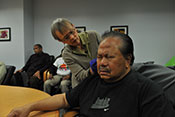 Photo by Robert Turtil, for illustrative purposes only.
Photo by Robert Turtil, for illustrative purposes only.
(08/08/2018)
Battlefield acupuncture may reduce the need for opioid use after surgery, found a John D. Dingell VA Medical Center study. In battlefield acupuncture, needles are placed in and around the ear to influence how the central nervous system processes pain. In a study of 39 patients, those who had this treatment after general surgery had significantly lower opioid use in the following 24 hours, compared to those not given acupuncture. Patients in the acupuncture group also had 15 percent less post-operative nausea and vomiting. Previous studies have shown that this type of acupuncture can reduce the stress response after surgery, aiding in recovery. The results suggest that battlefield acupuncture could be a low-cost, effective, safe, and easy to implement means of reducing post-operative pain, say the researchers. (2018 World Congress on Regional Anesthesia & Pain Medicine, April 19, 2018)
Health care performance measures may not be accurate for older patients
 Photo for illustrative purposes only. ©iStock/FatCamera
Photo for illustrative purposes only. ©iStock/FatCamera
(08/08/2018)
Standard measures of health care quality may not accurately rate care for higher risk patients, according to a VA Greater Los Angeles Healthcare System study. Measures based on processes of care—such as breast cancer screenings—are frequently used to compare health care performance. To see whether these measures are biased against older and sicker patients, researchers looked at national data on mortality risk from a 14-year period. They found that providers serving high-risk patients rated significantly worse (67 percent performance score) than for low-risk patients (74 percent). Clinicians may choose not to use recommended processes based on limited prognosis, patient preference, or potential adverse effects when patients are older and have more illnesses. The resulting poor performance scores may lead to financial penalties or excessive administrative work. The results suggest that process of care ratings may not be the best fit to evaluate all situations. (Journal of the American Geriatric Society, Aug. 6, 2018)
Lab study suggests novel RNA treatment could improve brain function after TBI
 Photo: ©iStock/Ivcandy
Photo: ©iStock/Ivcandy
(08/01/2018)
James A. Haley Veterans Hospital and University of South Florida researchers showed that injections of a type of RNA could improve brain function after a traumatic brain injury, in rats. The researchers injected injured rats with cell structures called exosomes, which they got from stem cells in human fat tissue. The exosomes contain MALAT1, a type of RNA (a form of genetic material). The rats injected with exosomes showed significant recovery of function of motor behavior, as well as a reduction in cortical brain injury. Analysis of the brain and spleen showed that MALAT1 could ease brain inflammation at a genomic level. The spleen is involved in protective substances such as white blood cells entering the blood stream after injury. The results show that using exosomes containing MALAT1 has "tremendous" potential for treatment of TBI, say the researchers. (Journal of Neuroinflammation, July 12, 2018)
Algorithm can identify urine-test results showing cannabis use
 Photo: ©iStock/courtneyk
Photo: ©iStock/courtneyk
(08/01/2018)
VA Portland Health Care System researchers have developed an algorithm to identify cannabis urine drug test results in electronic health records. Although VA does not prescribe cannabis, in accordance with federal law, many states now allow medical cannabis use. Many patients are now using medical cannabis, particularly for chronic pain. While it may be important for doctors to know of this use, how the results of drug tests are reported varies widely. The researchers created a computer algorithm to identify the results of urine tests within the VA electronic health records. They tested the algorithm on a sample of VA patients who were prescribed long-term opioid therapy for chronic pain. The algorithm correctly identified cannabis-positive results for 99 percent of patients who used cannabis. It identified cannabis-negative results with 100 percent accuracy. The findings suggest that this algorithm is an effective way to identify urine test results for cannabis use within the electronic health record, despite inconsistent reporting practices. (Journal of Medical Systems, July 24, 2018)
VA emergency departments vary widely in opioid prescribing
 Photo: ©iStock/dusanpetkovic
Photo: ©iStock/dusanpetkovic
(08/01/2018)
Opioid prescribing rates vary widely in VA emergency departments (EDs), found a study by the VA Pharmacy Benefits Management program. The researchers looked at data on opioid prescribing for pain in 118 VA EDs between January and March 2017. The percentage of patients prescribed an opioid ranged from 1 percent to 24 percent, depending on facility. For individual clinicians, opioid prescribing rate varied between 0.2 percent and 57 percent. While nationwide interventions to promote safe opioid prescribing have resulted in lower overall opioid prescriptions in VA since 2011, much variation still remains based on geographic area and individual behavior. Targeting interventions for providers may be more effective than general prescribing guidelines at changing how opioids are prescribed in VA EDs, say the researchers. (Journal of General Internal Medicine, July 23, 2018)
Availability of non-VA health care lacking for rural Veterans, despite Veterans Choice Act
 Photo: ©iStock/davidperks
Photo: ©iStock/davidperks
(07/27/2018)
The Veterans Choice Act may not significantly improve rural Veterans' access to health care due to a shortage of non-VA providers, according to an Iowa City VA Medical Center study. Under the Veterans Choice Act, VA will pay for medical care from non-VA providers for Veterans who live more than 40 miles from a VA facility. Pending legislation is set to expand on the Veterans Choice Act and replace it. To see how the existing act or future versions could affect Veterans' access to care, researchers looked at data on both where rural Veterans live and what health care is available in those areas. They found that 16 percent of rural Veterans live in an area with primary care shortages, and 70 percent in mental health care shortage areas. Most rural Veterans lived in counties that lacked specialized care such as cardiologists and neurologists. In fact, VA played a greater role in delivering health care in areas where Veterans were eligible for the Veterans Choice Act, compared with less rural areas. The results show that programs such as telehealth are needed to supplement non-VA health care in rural areas, which may be lacking, say the researchers. (BMC Health Care Services, May 29, 2018)
Mouse study questions whether tau protein leads to brain degeneration after TBI
 Photo: ©iStock/D-Keine
Photo: ©iStock/D-Keine
(07/27/2018)
A mouse study suggests that the build-up of a protein in the brain is not a cause of traumatic encephalopathy following a traumatic brain injury, counter to evidence from previous studies. James A. Haley Veterans Hospital researchers and their colleagues studied the build-up of tau proteins in the brain matter of mice after traumatic brain injury. Other research has documented increased tau protein in patients with chronic traumatic encephalopathy, a degenerative brain disease linked to dementia. Researchers on the new study found modest increases in tau protein in the brain after both a single and repetitive mild TBI. However, in both cases the protein was reabsorbed by the brain within 12 months after injury, with no evidence of excess build-up. Moreover, increased tau protein in the brain was not linked to worse cognitive performance in the mice. The results may mean that while there may be short-term tau protein build-up after TBI, this condition is not likely to directly cause post-TBI cognitive problems. (Journal of Neurotrauma, June 11, 2018)
Acquired stuttering after TBI and PTSD could be linked to medications
 Photo: ©iStock/Ivan-balvan
Photo: ©iStock/Ivan-balvan
(07/27/2018)
Veterans with both traumatic brain injury and PTSD were more likely to be diagnosed with acquired stuttering, and the condition could be linked to medications they were prescribed, found a South Texas Veterans Health Care System study. Researchers looked at data on more than 300,000 Iraq and Afghanistan Veterans. They found that 235 were diagnosed with acquired stuttering after their deployment. Of those, 43 percent had both TBI and PTSD. These patients had a greater likelihood of stuttering than those with only one or neither condition. Furthermore, over 66 percent of patients with stuttering were prescribed a medication that affects speech fluency, such as antidepressants and antiepileptic drugs. Based on the results, the researchers suggest that clinicians treating Veterans with complex conditions should consider the impact of medications on speech fluency. (Military Medicine, April 18, 2018)
Mantram meditation more effective than present-centered therapy at reducing PTSD symptoms
 Photo for illustrative purposes only. ©iStock/laflor
Photo for illustrative purposes only. ©iStock/laflor
(07/19/2018)
Mantram therapy was more effective than present-centered therapy at reducing PTSD symptoms, in a VA San Diego and New England Health Care System study. Patients with PTSD underwent eight weekly one-hour session of either mantram or present-centered therapy. In mantram meditation therapy, patients repeat a word or phrase with spiritual meaning to slow down thoughts and focus attention. Present-centered therapy focuses on currently stressful events and problem-solving skills. Those in the mantram group had significantly lower scores on a PTSD symptom scale after treatment and two months later. The mantram group also had lower self-reported PTSD symptoms and less insomnia. The results show that non-trauma focused complementary approaches such as mantram therapy can help alleviate PTSD symptoms, say the researchers. (American Journal of Psychiatry, June 20, 2018)
Intensive management outpatient program has similar cost to usual care
 Photo: ©iStock/Sasha_Suzi
Photo: ©iStock/Sasha_Suzi
(07/19/2018)
High-risk patients received more outpatient care with no increase in total cost from an intensive management program, found a study at five VA medical centers. More than 2,000 patients with an average of seven chronic conditions were given either intensive outpatient management or usual care for one year. Intensive management involves care coordination, goals assessment, health coaching, medication reconciliation, and home visits through an interdisciplinary team. Those in the intensive management had an average of $2,164 lower inpatient costs than the usual care group. The intensive management had an average of $2,636 more in outpatient costs. Average total costs were similar for both groups. The results show that intensive management has potential, but room exists to improve the program and make it more efficient, according to the researchers. (Annals of Internal Medicine, June 19, 2018)
Possible mechanism behind TBI-related sleep-wake disturbances
 Photo: ©iStock/theasis
Photo: ©iStock/theasis
(07/19/2018)
Researchers with the VA Portland Health Care System may have demonstrated how traumatic brain injury affects the sleep-wake pattern of the brain, using a mouse model. TBI often causes sleep-wake disturbances, such as excessive daytime sleepiness. Researchers have hypothesized that this is because of damage to neurons that make orexin, a hormone that regulates sleep. By studying the brains of mice with TBI, the researchers found that decreased density of the amino acid glutamate—which helps neurons function—could be responsible for problems with the orexin neurons. They also found that giving the mice branched-chain amino acid supplements through their food helped restore glutamate density and orexin neuron function. The results open up a path to potential therapy for sleep-wake disturbances caused by TBI. (Sleep, March 1, 2018)
Study shows safety of brain stimulation together with exposure therapy for PTSD
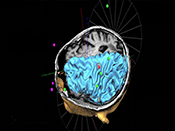 Image courtesy of Dr. Albert Leung
Image courtesy of Dr. Albert Leung
(07/11/2018)
Transcranial magnetic stimulation (TMS) along with prolonged exposure therapy may be beneficial for patients with PTSD, according to a Ralph H. Johnson VA Medical Center study. Eight patients with PTSD undergoing prolonged exposure therapy received either weekly repetitive TMS for five weeks or a control adjunct treatment. In TMS, a magnet is applied to the outside of the head to affect the electrical fields in the brain. Patients in the TMS group showed a trend toward improvement of PTSD symptoms, although the change was not statistically significant. The study demonstrates that TMS is safe to be delivered to PTSD patients while they are receiving prolonged exposure therapy. Larger studies are needed to see if this technique can be an effective treatment, say the researchers. (Journal of Electroconvulsive Therapy, June 26, 2018)
Movement-based therapies yield multiple benefits for patients with chronic conditions
 Photo by Robert Turtil
Photo by Robert Turtil
(07/11/2018)
Patients saw improvements in a number of areas as a result of movement-based therapies, in a VA New England Healthcare System study. Researchers surveyed a focus group of 31 patients enrolled in yoga and qi gong programs for chronic conditions at two VA medical centers. The participants described improved physical and mental health, reduced opiate and psychotropic use, enhanced emotional well-being, and better social relationships as a result of the treatment. They attributed these changes to physical improvements, development of coping skills, and increased self-awareness. The researchers suggest health care providers consider referring patients with chronic conditions to movement-based complementary and integrative health therapies alongside usual care. (Chronic Illness, Jan. 1, 2018)
New drug-resistant form of E. coli rapidly spreading
 Photo: ©iStock/Dr_Microbe
Photo: ©iStock/Dr_Microbe
(07/11/2018)
A team including a Minneapolis VA Healthcare System researcher tracked the spread of a new drug-resistant strain of E. coli. The team gathered data on more than 6,000 E. coli infections at nine hospitals, including at the Minneapolis VA Medical Center. Twenty-one percent of the infections were resistant to fluoroquinolones, a common antibiotic. The most common strain of drug-resistant strain of E. coli was H30. The prevalence of this strain—which has been known since the 1990s—did not increase from the study years of 2016 to 2016. The second most common type of E. coli was ST1193. This strain is newer than H30, and its prevalence increased sevenfold between 2016 and 2017. It is more likely to occur in younger patients. The results show that the ST1193 of drug-resistant E. coli is on the rise, say the researchers, and more studies are needed on how to limit its spread. (Clinical Infectious Diseases, June 29, 2018)
Irregular discharges tied to higher suicide risk
 Photo for illustrative purposes only. ©Stock/Tempura
Photo for illustrative purposes only. ©Stock/Tempura
(07/05/2018)
Patients are at an increased suicide risk after irregular hospital discharges, according to VA researchers in New England and Ann Arbor. Irregular hospital discharges include a patient leaving the hospital against medical advice and other unplanned discharges. The researchers looked at data on more than 5 million inpatient discharges from VA facilities between 2001 and 2014. About 2 percent were irregular. Patients with an irregular discharge from a general medical ward had three times higher risk of suicide than those discharged normally a year after their discharge. Patients with an irregular discharge from psychiatric care did not have higher suicide risk based on discharge type. The findings give important information on patient populations that may need to be targeted for suicide prevention, say the researchers. (Psychiatric Services, June 1, 2018)
Dialysis patients have lower mortality in VA vs. non-VA centers
 Photo: ©iStock/porpeller
Photo: ©iStock/porpeller
(07/05/2018)
Patients who initiated dialysis at VA facilities had lower mortality than patients who used non-VA dialysis centers, found a study of nearly 70,000 VA patients. Researchers looked at Veterans with end-stage kidney disease who began dialysis between 2007 and 2014. Ten percent used VA dialysis centers. Those in VA facilities were 13 percent less likely to die in the 12 months after they began dialysis. Along with that, patients in VA facilities were more likely than those in outside centers to be hospitalized at some point in the following year. The researchers suggest that the better outcomes may relate to VA's integrated health care system. Most VA dialysis centers are located within larger VA facilities. VA's integrated system may mean that patients are receiving more intense care addressing their health problems and have an easier transfer to hospital admission, say the researchers. (Clinical Journal of the American Society of Nephrology, June 14, 2018)
ICU telemedicine lowers hospital transfers
 Photo: ©iStock/Donghero
Photo: ©iStock/Donghero
(07/05/2018)
Intensive-care unit (ICU) telemedicine was linked to decreased interhospital transfers in an Iowa City VA Health Care System study. In ICU telemedicine, intensivist doctors can provide remote care to patients at regional facilities that may lack specialized personnel. The researchers looked at data for more than 550,000 admissions at 306 VA ICUs during a five-year period. Transfers to other hospitals decreased by 42 percent in hospitals with telemedicine programs, compared with a decrease of 7 percent in non-telemedicine hospitals during the same time period. The results may show that telemedicine allows hospitals to better evaluate when patients may effectively be treated locally, say the researchers. While ICU telemedicine did not reduce mortality in the study, past research suggests that limiting interhospital transfers lowers costs and improves patient, family, and staff satisfaction. (Chest, June 5, 2018)
Electrical signal change may explain link between combat exposure and psychiatric disorders
 Photo by Jerry Daliege
Photo by Jerry Daliege
(06/27/2018)
Increased error-related negativity (ERN) may help explain why combat exposure increases the risk of psychiatric disorders, found a Jesse Brown VA Medical Center and University of Illinois at Chicago study. ERN refers to a change in electrical signals in the brain as a result of making a mistake in a motor or cognitive task. Past research has linked it to various psychiatric disorders, such as anxiety and alcohol use disorders. In a study of 62 Veterans, the researchers used electroencephalography to show that those with greater combat exposure had greater ERN. This effect held true even after adjusting for anxiety and PTSD symptoms. The level of ERN was not associated with other life stressors before or after deployment, suggesting that this effect is specific to combat exposure. The results suggest that ERN may be one mechanism for how combat exposure increases the risk of psychiatric disorders, say the researchers, and could be a valuable screening tool for psychiatric disorder risk. (International Journal of Psychopsychology, July 2018)
Increased travel reimbursement leads to more VA health care use
 Photo: ©iStock/KarenMassier
Photo: ©iStock/KarenMassier
(06/27/2018)
Increased reimbursement for travel led to more VA outpatient use, found a VA Salt Lake City Health Care System study. A recent VA policy change increased how much Veterans can be reimbursed for travel expenses to receive VA health care. To study the effects of this change, researchers looked at data for 110,007 Veterans nationwide. They found that the number of VA outpatient visits increased by more than 30 percent after the rule change. The greatest increase was in Veterans living in rural areas. The number of non-VA outpatient care visits for rural Veterans also significantly decreased. A 2014 policy allows eligible Veterans to use their VA-provided health care at non-VA facilities. The results indicate how health care utilization may be affected by future policy changes. (Medical Care, July 2018)
Mental health service use remains stable after PTSD disability rating
 Photo: ©iStock/amesy
Photo: ©iStock/amesy
(06/27/2018)
Use of VA mental health services largely remains stable after receipt of a service-connected disability for PTSD, according to a study by VA researchers in Ann Arbor and Boston. Some concern exists that Veterans will stop using mental health services after receiving service-connected disability benefits for PTSD, but actual usage patterns are not well-understood. Researchers looked at mental health service utilization for more than 22,000 Veterans one year before and after they received service-connected disability ratings for PTSD. They found that use remained stable for 80 percent of patients. Nine percent increased their use, and 11 percent decreased their use. While disability rating largely did not alter mental health service usage patterns, the researchers did find generally low utilization of these services. Opportunities exist to enhance outreach for Veterans with PTSD-related disability benefits, they conclude. (Health Services Research, April 17, 2018)
Review: Childhood sexual abuse can lead to sexual dysfunction in women
 Photo: ©iStock/chameleonseye
Photo: ©iStock/chameleonseye
(06/21/2018)
A review by Doris Miller VA Medical Center and University of Texas at Austin researchers confirmed that women with childhood sexual abuse histories had higher rates of sexual dysfunction, compared with women without a history of abuse. Lack of positive emotions related to sexuality appears to be the most relevant factor in sexual dysfunction. Lack of positive emotions was more common than direct negative emotions connected to sexuality. Studies show that mindfulness-based sex therapy and expressive writing treatments are effective for this group. More studies are needed on exactly how childhood sexual abuse can lead to sexual dysfunction, say the researchers. (Sexual Medical Reviews, April 2018)
If taller people are 'smarter,' why is that? Brain study offers insight
 Photo for illustrative purposes only. ©iStock/XiXinXing
Photo for illustrative purposes only. ©iStock/XiXinXing
(06/21/2018)
Cortical surface area may explain the connection between height and cognitive ability, found a study including a VA San Diego Healthcare System researcher. Previous studies have shown that greater height is correlated with greater general cognitive ability. But the reason for this relationship is not well-understood. The researchers looked at data from 515 participants of the Vietnam Era Twin Study of Aging. General cognitive ability was based on the Armed Forces Qualification Test, a measure similar to IQ. The researchers found that cortical surface area (brain size, taking into account the folds and layers of brain matter) is positively linked to cognitive ability. Taller people tend to have larger brains, and larger brains are linked to higher cognitive ability. Cortical thickness (total thickness of all brain layers) was not linked to cognitive ability. (Brain Structure & Function, May 11, 2018)
Suicidal behavior common with schizophrenia and bipolar disorder
 Photo: ©iStock/efks
Photo: ©iStock/efks
(06/21/2018)
A recent study confirmed that suicidal behavior is common among Veterans with schizophrenia or bipolar disorder. Researchers from the Bruce W. Carter VA Medical Center and VA Connecticut Healthcare System collected data on 3,942 Veterans with schizophrenia and 5,414 with bipolar disorder. They found that 70 percent of Veterans with schizophrenia had a history of suicidal thoughts or behavior. Of those with bipolar disorder, 82 percent had a history of suicidal thoughts or behavior. Veterans with more than one psychiatric condition were at the highest risk of suicide. The results underscore the need for continuous monitoring for suicidal behavior in patients with severe mental illness. (Journal of Psychiatric Research, April 21, 2018)
Homeless Veterans are more satisfied with specially tailored care teams
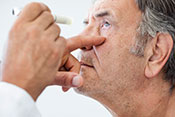 Photo for illustrative purposes only. ©iStock/seb_ra
Photo for illustrative purposes only. ©iStock/seb_ra
(06/14/2018)
Homeless Veterans at VHA facilities with tailored primary care teams had better care experiences than non-homeless Veterans, according to a National Center on Homelessness Among Veterans study. Researchers surveyed more than 340,000 Veterans receiving care through VHA nationwide. About 4 percent were homeless. In facilities without homeless-tailored teams, homeless patients had more negative and fewer positive experiences than non-homeless patients. In facilities with Homeless Patient Aligned Care Teams (HPACTs), this pattern was reversed. HPACTs appear to offer homeless Veterans a better primary care experience than that received by non-homeless Veterans. (Medical Care, May 12, 2018)
Fluorouracil cream may lower treatment cost for those at high risk for skin cancer
 Photo: ©iStock/kali9
Photo: ©iStock/kali9
(06/14/2018)
Treating patients at high risk for two skin cancer conditions with topical fluorouracil cream can provide cost savings, found a VA Palo Alto Health Care System study. Previous research shows that fluorouracil reduces incidence of keratinocyte carcinoma (nonmelanoma skin cancer) and actinic keratosis (a precancerous skin condition). Patients at high risk for the conditions applied either the fluorouracil or a placebo cream to their faces and ears for four weeks. After one year, those not using fluorouracil had more treatment visits for squamous cell carcinoma than those using it. Over three years, patients using fluorouracil had average treatment costs of $771 less per patient. (Journal of the American Academy of Dermatology, March 2, 2018)
Photodynamic therapy may effectively treat bladder cancer
 Photo: ©iStock/wildpixel
Photo: ©iStock/wildpixel
(06/14/2018)
A group including a VA Northern California Health Care System researcher showed that a photodynamic therapy technique could effectively treat bladder cancer. In photodynamic therapy, medication that is activated by light and heat is injected into the body. The cancer site can then be exposed to light, which allows the cancer cells to be closely targeted. This process has significantly fewer side effects than treatments such as chemotherapy. The researchers used the drug 17AAG to target bladder cancer in animal models. They combined 17AAG with the organic compound nanoporphyrin. 17AAG is not very water-soluble. Combining it with nanoporphyrin allows it to be absorbed by cells more easily. The results show that the NP-AAG was effectively accumulated in cancer cells. A single intravenous injection followed by multiple light treatments over seven days effectively eradicated the tumors. This technique could dramatically improve bladder cancer management with minimal toxicity, say the researchers. (Nanomedicine, April 2018)
Gender-tailored alcohol screening improves detection among women
 Photo: ©iStock/kieferpix
Photo: ©iStock/kieferpix
(06/06/2018)
Gender-tailored binge-drinking screens may improve detection of women's unhealthy alcohol use, according to a study by researchers from several VA systems. Women and men have different patterns of alcohol consumption. But the usual screens for binge drinking are based on men's drinking patterns. Researchers adjusted the AUDIT-C assessment to specifically address women's drinking patterns. In a survey of more than 1,000 women Veterans, 6 percent screened positive for unhealthy alcohol use on the standard assessment. When a gender-tailored binge-drinking question was added (asking how often participants had four or more drinks on one occasion, as opposed to six or more on the unaltered AUDIT-C), 10 percent screened positive. When researchers lowered the threshold score for what was considered unhealthy alcohol use, 21 percent of women screened positive. Using both the tailored question and lowered threshold, 25 percent screened positive for unhealthy alcohol use. Using gender-tailored screening could improve alcohol screening in women, say the researchers. (American Journal of Addictions, March 2018)
Longer 'dwell time' linked to fewer PTSD symptoms
 Photo by Petty Officer 1st Class Holly L. Herline/USN
Photo by Petty Officer 1st Class Holly L. Herline/USN
(06/06/2018)
Longer time home between deployments, or "dwell time," is linked to fewer long-term PTSD symptoms in Veterans, found a Central Texas Veterans Health Care System study. Researchers looked at data for 278 Veterans of Iraq and Afghanistan three years after discharge. They found that those with time between deployments less than 12 months had the highest long-term PTSD symptoms. Consistent with other studies, combat exposure was linked to more PTSD symptoms. Average length of deployment and number of deployments did not significantly affect long-term PTSD symptoms; intensity of combat exposure had a much bigger effect than either. The researchers conclude that "in addition to combat exposure, time between deployments warrants clinical attention as an important deployment characteristic for predicting long-term PTSD symptoms." (Journal of Clinical Psychology, April 2018)
Acceptance and commitment therapy prior to surgery may help pain outcomes
 Photo: ©iStock/kupicoo
Photo: ©iStock/kupicoo
(06/06/2018)
Acceptance and commitment therapy led to a quicker end to pain and opioid use after surgery, in an Iowa City VA Medical Center study of 88 patients. High levels of pain, anxiety, and depressive symptoms before surgery put patients at elevated risk of chronic pain and prolonged opioid use following surgery. Patients scheduled for orthopedic surgery attended a one-day acceptance and commitment therapy workshop prior to surgery. The workshop focused on pain acceptance and values-based behavior. Three months following surgery, patients who attended the workshop achieved pain reduction and opioid cessation sooner than those who had treatment as usual. The benefits of the therapy were greatest for patients with post-operative complications. The results suggest that pre-operative pain management may help prevent chronic pain after surgery. (Journal of Pain, May 16, 2018)
Cannabis use disorder linked to self-injury
 Photo: ©iStock/digihelion
Photo: ©iStock/digihelion
(06/01/2018)
Cannabis use disorder was linked to greater odds of self-injury, in a study by Durham VA Medical Center and Central Texas VA Health Care System researchers. The researchers interviewed 292 Iraq and Afghanistan Veterans. Of those, 13 percent had engaged in either suicidal or non-suicidal self-injury. Fourteen percent of Veterans interviewed had cannabis use disorder—defined as continued use of marijuana despite impairment and dependence. Participants with cannabis use disorder had three times higher odds of any type of self-injury, compared to those without the disorder. The odds of non-suicidal self-injury were higher than the odds of suicide attempts for participants with cannabis use disorder. While the results may show that cannabis use disorder increases the risk of self-injury, the basis for this link is not yet clear, caution the researchers. (Suicide and Life-Threatening Behavior, April 9, 2018
New insight to guide dialysis decisions
 Photo: ©iStock/porpelle
Photo: ©iStock/porpelle
(06/01/2018)
For patients with chronic kidney disease, the level of kidney function at which dialysis improves survival varies by age, according to a study by VA Palo Alto Health Care System and Stanford University researchers. Using data from more than 70,000 Veterans with chronic kidney disease, the researchers compared survival rates of patients on dialysis with those of patients treated without dialysis. They looked at patients' eGFR levels when they were on dialysis. eGFR is a measure of waste products in the blood, and is used to test kidney function. Higher scores mean better kidney function. For patients 75 or older, risk of death was lower than with medical management for eGFR levels of 6-9 or lower. For those age 65-74, risk of death was lower at eGFR below 6. For those younger than 65, the eGFR level at which dialysis improved survival compared with medical management was 6-9. The results show that age should be taken into consideration when deciding to put patients on dialysis. (Journal of the American Society of Nephrology, May 22, 2018
Alcohol-related treatment low in hepatitis C patients
 Photo: Mitch Mirkin
Photo: Mitch Mirkin
(06/01/2018)
Many patients with hepatitis C do not receive recommended alcohol-related care, found VA Puget Sound Health Care System researchers. Alcohol use increases the risks associated with hepatitis C. More than 30,000 VA patients with both hepatitis C and unhealthy alcohol use were studied over a four-year period. Seventy-two percent had a brief alcohol intervention, 13 percent pad specialty addiction treatment, and only 3 percent had drug treatment for problematic alcohol use. For those with alcohol use disorder, 27 percent used specialty addiction treatment and 6 percent used drug treatment. Strategies are needed to increase alcohol-related care and pharmacotherapy for alcohol use disorder in patient with hepatitis C, say the researchers. (Drug and Alcohol Dependence, May 8, 2018
Review study: Exercise helps lungs even in those with chronic lung disease
 Photo for illustrative purposes only: ©iStock/kali9
Photo for illustrative purposes only: ©iStock/kali9
(05/17/2018)
Studies show that whole-body exercise training improves pulmonary function in adults with chronic lung disease, according to a VA New Jersey Health Care System review. The general consensus was that exercise does not stimulate and improve lung function in this population. The researchers looked at 21 randomized controlled trials to see if this assumption was supported by evidence. They found that exercise training resulted in small but significant improvements in measures of pulmonary function for patients with chronic lung disease. The findings suggest that pulmonary treatment should include exercise to improve lung function, in addition to care to reduce symptom burden. (Archives of Physical Medicine and Rehabilitation, April 17, 2018)
Frequent hospital urine cultures lead to unnecessary antibiotic use
 Photo: ©iStock/sercan samanci
Photo: ©iStock/sercan samanci
(05/17/2018)
Patients with a urine culture taken on the first day of hospital admission receive more days of antibiotics and have longer hospital stays than patients who do not have a urine culture, found a Michael E. DeBakey VA Medical Center study. The researchers looked at data for nearly 90,000 patients in 230 U.S. hospitals admitted for any reason. They found that patients who had their urine tested for bacterial infection had more days of inpatient antibiotic use. Those tested had an average of 2.1 percent longer hospital length of stay. Positive urine cultures often lead providers to give patients antibiotics even when they do not need them. In many cases, antibiotics are not necessary even when bacteria is found in the urine if the patient does not have symptoms of an infection. Unnecessary antibiotic use contributes to antibiotic resistance and is a threat to public health, write the researchers. Steps should be taken to limit unnecessary urine cultures, they say. (Infection Control and Hospital Eipdemiology, May 2018)
Therapeutic horseback riding may reduce PTSD symptoms
 Photo for illustrative purposes only: ©iStock/debibishop
Photo for illustrative purposes only: ©iStock/debibishop
(05/17/2018)
A therapeutic horseback riding program reduced PTSD symptoms in a small study of 29 Veterans. The study team included a Harry S. Truman Memorial Veterans' Hospital researcher. Half the Veterans took a six-week horseback riding program, while the others were put on a wait-list. Those who rode had a 67 percent likelihood of a lower PTSD symptom score after three weeks. The likelihood increased to 88 percent after six weeks. Participants showed improvement in self-efficacy and emotion regulation. The results show that therapeutic horseback riding may be an effective way to alleviate PTSD symptoms for some Veterans. (Military Medical Research, Jan. 19, 2018)
Possible biological effect of cognitive behavioral therapy
 Photo: ©iStock/Evgeny Gromov
Photo: ©iStock/Evgeny Gromov
(05/11/2018)
Researchers with the South Texas Veterans Health Care System and University of Texas Health Science Center at San Antonio may have identified a biological explanation for how psychotherapies improve stress-related psychiatric illness. Cognitive behavioral therapies have been shown to improve symptoms in PTSD and depression, but the mechanism is unknown. Researchers used a drug to block activity in the ventral medial prefrontal cortex of rats. Fear extinction therapy, which usually reverses stress-induced cognitive dysfunction in rats, did not work when rats were on the drug. The study also showed that chronic stress decreased this brain region's response to stimulation. This tells the researchers that activity in the prefrontal cortex may underlie the benefits of cognitive behavioral therapy. The results support the idea that modulating activity in the prefrontal cortex, for example, through a medication, could boost the effectiveness of cognitive behavioral therapies for PTSD and other mental disorders. (Journal of Neuroscience, Feb. 7, 2018)
PTSD from military sexual trauma, versus other causes, may have stronger link to suicidal thoughts
 Photo: ©iStock/kitzcorner
Photo: ©iStock/kitzcorner
(05/11/2018)
Female Veterans with PTSD as a result of military sexual trauma were twice as likely to have suicidal thoughts as those with PTSD from any other cause, found a Denver VA Medical Center study. Researchers surveyed more than 300 female Veterans who had experienced military sexual trauma. Of those, 29 percent said they have current suicidal thoughts, and 72 percent said military sexual trauma was the source of their PTSD symptoms. Women who identified military sexual trauma as the source of their PTSD were at least three times as likely to have suicidal thoughts as those who said their PTSD was specifically related to combat or deployment. The study shows the importance of addressing PTSD specifically related to military sexual trauma, say the researchers. (Suicide and Life-Threatening Behavior, April 20, 2018)
Stimulant use increases mortality risk for HIV-infected men
 Photo: ©iStock/tinors
Photo: ©iStock/tinors
(05/11/2018)
Stimulant use increases mortality risk for HIV-infected men Stimulant use increases mortality risk for men with HIV, but cannabis use does not, according to the Veterans Aging Cohort Study. Researchers surveyed more than 3,000 men with HIV. At baseline, 15 percent of participants used cannabis, or marijuana; and 24 percent used stimulants, such as cocaine and methamphetamines. Cannabis was not linked to increased mortality risk based on the VACS Index, a measure of the risk of all-cause mortality. Those using stimulants, however, scored five points higher on the risk scale, compared with cannabis and alcohol users. Participants who used stimulants were also more likely to have unhealthy alcohol and opioid use. This was not true for those who used cannabis. The results suggest that efforts to reduce stimulant use in this population may reduce mortality. The researchers do note that demographic factors—such as age, race, and education—seem to impact mortality risk more than alcohol, cannabis, or stimulant use. (AIDS and Behavior, April 2018)
Pulsed xenon ultraviolet leads to better disinfection
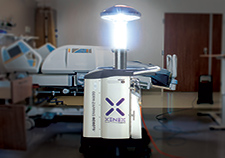 Photo courtesy of www.xenex.com
Photo courtesy of www.xenex.com
(05/03/2018)
Pulsed xenon ultraviolet devices disinfect more effectively than manual cleaning, found a study by researchers at multiple VA centers. The devices use bulbs that contain xenon, a gas, to emit short bursts of high-energy ultraviolet light. Researchers tested surfaces in two hospital rooms cleaned using pulsed xenon ultraviolet and two cleaned with manual disinfection. Staphylococcus aureus counts were reduced by 75 percent in the UV rooms, compared with pre-cleaning counts. Aerobic bacteria colony counts were reduced by 84 percent in the UV rooms. Manual disinfection reduced bacteria counts only by 25 to 30 percent. The researchers recommend that this technology be integrated into daily hospital operations. (American Journal of Infection Control, April 11, 2018)
Caloric restriction changes liver metabolism, shows primate study
 ©iStock/Duka82
©iStock/Duka82
(05/03/2018)
Restricting calories may delay the onset of age-related disorders and extend the lifespan by changing how the liver metabolizes various molecules, according to a study led by a William S. Middleton Memorial Veterans Hospital researcher. Caloric restriction has been shown to ward off disease and extend life in many species. To look for a possible molecular explanation, the researchers put male rhesus monkeys on a diet that was 30 percent lighter in calories than a standard diet, for two years. They then took liver biopsies and conducted high-resolution molecular profiling of the tissue. The team found that caloric restriction changes gene expression relating to liver metabolism. Their report describes the changes in detail, with a focus on RNA processing. They say the work represents a "comprehensive, integrated account of the molecules and pathways recruited by [caloric restriction] that may underlie the longevity benefits." (Cell Metabolism, March 6, 2018)
Researchers report technical breakthrough for brain-computer systems
 Adapted from JN article
Adapted from JN article
(05/03/2018)
A team that included researchers from the Providence VA Medical Center showed how "local field potentials"— the total electrical current flowing to a small section of nervous tissue in the brain—may be a more robust, stable signal for brain-computer systems than neuronal action potentials, which represent the activity of individual brain cells. The study involved one person with ALS and another with locked-in syndrome due to a stroke. In locked-in syndrome, the person is mentally engaged but unable to speak or move his or her limbs. The two participants were able to type messages and emails for 138 and 76 days, respectively, without needing re-calibration of their brain-computer systems. Past studies in which the decoding of brain signals was based on neuronal action potentials had required far more frequent re-calibration. The researchers say they have achieved a "new benchmark" for stability, using local field potentials. "This study is a step towards a reliable and robust [brain-computer interface] that will allow people with [locked-in syndrome] to communicate independently and, therefore, provide greater and more extensive interactions with their friends, family, and caregivers." (Journal of Neurophysiology, April 25, 2018)
Up to nine months between doctor's visits do not worsen viral load for HIV patients
 Photo: ©iStock/NanoStockk
Photo: ©iStock/NanoStockk
(04/25/2018)
Gaps up to nine months between HIV primary care visits do not worsen viral load, found a study including a Michael E. DeBakey VA Medical Center researcher. Current guidelines say that HIV patients should visit their doctors every six months for viral monitoring. Looking at more than 6,000 patients with HIV, researchers found that patients who went up to nine months between doctor's visits did not have significant increases in viral load. Patients with visit gaps greater than 12 months were much more likely to have lost viral suppression. The results show that primary care visit intervals between six and nine months may be appropriate for HIV patients, say the researchers. (AIDS Patient Care and STDs, April 2018)
Probiotic reduces S. aureus infection odds in GI tract
 Photo: ©iStock/RomaRiolen
Photo: ©iStock/RomaRiolen
(04/25/2018)
Probiotics can reduce Staphylococcus aureus infection in the gastrointestinal tract, according to a William S. Middleton VA Medical Center study. Patients with S. aureus infection were given either the probiotic Lactobacillus rhamnosus HN001 or a placebo for four weeks. Those taking the probiotic had 83 percent reduced odds of S. aureus presence in their GI tract after treatment, compared with the placebo group. However, those with S. aureus infection somewhere other than the GI tract only had 15 percent lower S. aureus colonization. The results show that oral L. rhamnosus could be a useful treatment for S. aureus infection in the GI tract. (BMC Infectious Disease, March 14, 2018)
Possible explanation for how melatonin promotes sleep
 Photo: ©iStock/jhorrocks
Photo: ©iStock/jhorrocks
(04/25/2018)
Researchers at the Harry S Truman Memorial VA Hospital have identified a possible mechanism that explains how melatonin promotes sleep. Melatonin, sold in supplement form, is widely prescribed nowadays as a sleep aid, but how exactly it works is unclear. Researchers studied how the brains of mice responded to melatonin. They found that orexin neurons in the brain expressed MT1, a melatonin receptor protein. When the researchers infused melatonin into the brain, the mice showed increased REM sleep and reduced wakefulness. Melatonin infusion inhibited orexin neurons. The results show that melatonin may act via the MT1 receptors to inhibit orexin neurons and promote sleep. The researchers point out that while the finding helps explain an existing treatment, it also may lead to new ones. (Journal of Pineal Research, April 14, 2018)
Certain psychotropic drugs increase risk of QT prolongation in PTSD patients
 Photo: ©iStock/evryka23
Photo: ©iStock/evryka23
(04/25/2018)
Certain drugs used to treat PTSD could lead to dangerous heart conditions, found researchers from several VA systems. Several psychotropic drugs used to treat depression and sometimes given for PTSD have recently been linked to QT prolongation. QT prolongation is an abnormal heart rhythm that can cause fainting, seizures, and even sudden death. The researchers looked at administrative data of VA patients with PTSD. They found that patients on the antipsychotic drug ziprasidone (sold under the brand name Geodon, among others) and the anti-anxiety drug buspirone (sold as Buspar) had increased risk of QT prolongation, while those on the SSRI antidepressants citalopram (sold as Celexa and other brands) and fluoxetine (Prozac and other brands) did not. The researchers also found that patients with QT prolongation had a higher risk of death than those without. They recommend that prescribers and patients consider these risks when deciding on treatments for PTSD. (Annals of Pharmacotherapy, April 1, 2018)
Telemental health useful for women Veterans
 Photo for illustrative purposes only. ©iStock/RapidEye
Photo for illustrative purposes only. ©iStock/RapidEye
(04/19/2018)
Telemental health is seen as a good fit to address the needs of women Veterans, according to a survey by the VA Center for the Study of Healthcare Innovation, Implementation and Policy. Researchers interviewed 40 VA leadership and clinical employees. Respondents believed that telemental health could increase access to care, especially for rural women and those with other barriers to care. Telemedicine was seen as particularly useful for women with responsibilities related to child care, spousal care, and elder care. The findings could help guide gender-tailored expansion of telemedicine. (Women's Health Issues, March-April 2018)
Self-report survey data improves violence risk prediction in soldiers
 Photo for illustrative purposes only. ©iStock/Wavebreakmedia
Photo for illustrative purposes only. ©iStock/Wavebreakmedia
(04/19/2018)
Data from the Army STARRS New Soldier Survey can improve the accuracy of interpersonal violence risk prediction, found a study that included a VA Eastern Colorado Health Care System researcher. The survey was given to more than 21,000 Army recruits. When using both survey and administrative data, researchers were able to predict soldiers' involvement in physical or sexual violence with greater accuracy than with administrative data alone. The greatest change was in predicting whether women soldiers would be victims of sexual violence. Overall accuracy increased to 29 percent, up from 18 percent with administrative data only. The researchers believe that the increased accuracy might offset the survey costs. (BMC Psychiatry, April 3, 2018)
Blood cancer patients with cognitive impairment may have worse survival
 Photo: ©iStock/Dr._Microbe
Photo: ©iStock/Dr._Microbe
(04/19/2018)
Cognitive impairment was linked to worse survival rates in patients with blood cancers, in a study that included VA Boston Healthcare System researchers. They looked at 341 elderly patients with leukemia, myeloma, or lymphoma. Of those, 127 had executive dysfunction and 62 had impaired working memory. Those with impaired working memory had lower median survival, regardless of treatment type. Executive dysfunction was linked with worse survival only for those undergoing intensive treatment. While age is the main cause of cognitive impairment, some cancer-fighting drugs may further impair cognition. Other cancer treatments, as well, may worsen existing health conditions. The results show that targeted interventions are needed for cancer patients with cognitive impairment, say the researchers. (JAMA Oncology, March 1, 2018)
Increased exercise may improve cognitive function shortly after breast cancer surgery
 Photo for illustrative purposes only. ©iStock/Steve Debenport
Photo for illustrative purposes only. ©iStock/Steve Debenport
(04/11/2018)
An exercise program improved cognitive functioning in patients diagnosed with breast cancer within the past two years, in a study including a VA San Diego Healthcare System researcher. Increased physical activity has been shown to improve cognition in both healthy and cognitively impaired adults. This study aimed to see how exercise specifically benefitted cancer survivors. Patients within two years post-surgery scored better on a test of processing speed after a 12-week exercise program, compared with those not in the exercise program. However, patients who had surgery more than two years previously did not show faster processing. The results suggest that early implementation of an exercise intervention could have benefits for breast cancer survivors, say the researchers. (Cancer, Jan. 1, 2018)
High BMI linked with early, but not later, survival after hospitalization
 Photo for illustrative purposes only. ©iStock/GlobalStock
Photo for illustrative purposes only. ©iStock/GlobalStock
(04/11/2018)
Overweight or obese BMI is linked with improved survival after hospitalization, but only in the short term, found a study by VA Ann Arbor Healthcare System and NYU School of Medicine researchers. The study looked at survival rates for older patients hospitalized for congestive heart failure, pneumonia, and heart attack. Patients with overweight or obese BMI had lower mortality one year after hospitalization. However, after one year these patients did not have better survival rates than those with lower BMI. While previous studies have shown the link between higher BMI and lower risk of death after hospitalization in the short term, less data are available on the effects long-term. While obesity may be protective in the short term, this connection is a source of debate. Obesity may be protective against in-hospital mortality, but still hazardous for longer-term mortality, according to the researchers. (BMC Geriatrics, Feb. 6, 2018)
Accepting hepatitis C-positive liver transplants could improve life expectancy
 Photo: ©iStock/Natali_Mis
Photo: ©iStock/Natali_Mis
(04/11/2018)
Patient without hepatitis C needing a liver transplant may have increased life expectancy if they are willing to accept a donated liver that is positive for the hepatitis C virus, according to a mathematical model. A team including a researcher from the Michael E. DeBakey VA Medical Center used data from published studies to create a simulated trial. They found that accepting any liver regardless of hepatitis C status resulted in increased life expectancy over waiting for a liver free of the hepatitis C virus. Although infected livers could have adverse outcomes, the virus can now be treated very effectively post-transplant using direct-acting antivirals. (Hepatology, Dec. 9, 2017)
Detecting coronary heart disease using genetic data
 Photo: ©iStock/wildpixel
Photo: ©iStock/wildpixel
(04/04/2018)
A team including an Iowa City VA Healthcare System researcher used machine learning to detect coronary heart disease by combining genetic and epigenetic data. Epigenetics is the study of what causes genes to be expressed—basically, to get translated into proteins or other molecules that effect changes in the body. The program was able to classify heart disease with 78 percent accuracy, in a group of 142 patients. A comparison test using conventional heart disease risk factors—such as age, cholesterol level, and smoking status—was only 65 percent accurate. The results show that using computer algorithms with genetic data could lead to better ways to detect coronary heart disease, say the researchers. (PLoS One, Jan. 2, 2018)
'Autonomy support' linked to better diabetes control
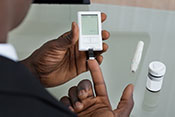 Photo: ©iStock/AndreyPopov
Photo: ©iStock/AndreyPopov
(04/04/2018)
Autonomy support from family or friends may help people better control their diabetes by relieving diabetes distress, according to a study by the VA Center for Clinical Management Research. Autonomy support is social support that encourages patients to control their own care. Many people with diabetes experience emotional distress from diabetes symptoms, the stress of keeping up with care regimens, and fear of complications from the disease. Studying 308 Veterans with diabetes, researchers found that high diabetes distress was linked to poor glycemic control. Those with greater autonomy support had greater glycemic control than those without. (Diabetes Care, March 29, 2018)
Low systolic blood pressure linked to worse outcomes for heart failure patients
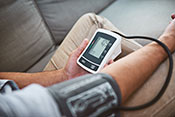 Photo: ©iStock/PeopleImages
Photo: ©iStock/PeopleImages
(04/04/2018)
Low systolic blood pressure is linked to worse outcomes in patients with heart failure with preserved ejection fraction, found Washington DC VA Medical Center researchers. Heart failure with preserved ejection fraction involves increased stiffness of the heart's left ventricle and less relaxation of the ventricle when filling with blood before the next beat. Out of more than 1,800 patients hospitalized with this condition, 10 percent of patients with systolic blood pressure less than 120 mm Hg at discharge died within 30 days, compared with 5 percent of those with systolic blood pressure higher than 120 mm Hg. Those with lower blood pressure also had higher risk of death one year after hospitalization. The researchers conclude that future studies should look at optimal systolic blood pressure treatment goals for patients with this condition. (JAMA Cardiology, Feb. 14, 2018)
Site mentoring can improve clinical trial recruitment
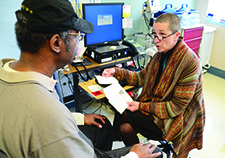 Photo: Christopher Pacheco
Photo: Christopher Pacheco
(03/28/2018)
A site mentoring model improved recruitment for clinical trial participation, in a VA Cooperative Studies Program study. As part of the CONFIRM trial, which studies colorectal cancer, teams with expertise in managing multi-site clinical trials worked one-on-one with low-enrolling CONFIRM sites to identify and overcome barriers to recruitment. Sites being mentored had an average improvement of five participants per month. A majority of sites had improved participant recruitment and participant screening for eligibility three months after the mentoring. The success of this pilot program shows that a site mentoring model could help improve recruitment for future clinical trials, according to the researchers. (Contemporary Clinical Trials Communications, March 2018)
Outpatient medical care linked to lower drug use in rural patients
 Photo: ©iStock/JTSorrell
Photo: ©iStock/JTSorrell
(03/28/2018)
Use of outpatient medical care is linked to reductions in illicit drug use over time in rural areas, found a study by Central Arkansas VA Healthcare System researchers and their colleagues. The researchers looked at how outpatient medical care for other issues affected substance use in 710 stimulant users in rural areas of Arkansas, Kentucky, and Ohio. They found that patients with at least one outpatient medical care visit over a three-year period had lower alcohol, crack cocaine, and methamphetamine use over time, compared with patients who did not have any outpatient visits. The findings highlight the importance of medical care contact in addressing unhealthy substance use, say the researchers. (American Journal of Drug and Alcohol Abuse, 2018)
Gene variant, mild traumatic brain injury combination lead to greater risk of Alzheimer's
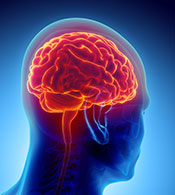 Photo: ©iStock/yodiyim
Photo: ©iStock/yodiyim
(03/28/2018)
Mild traumatic brain injury may be connected to lower hippocampal volume in people with a gene variant linked to Alzheimer's disease risk, according to a VA Boston Healthcare System study. Lower volume of the hippocampus (a region of the brain) has been shown to be a sign of Alzheimer's disease. Previous research has shown that severe TBI can lead to hippocampus atrophy, but less evidence of this exists for mild TBI. The researchers looked at the genes of 165 Veterans with at least one mild TBI. They found that a combination of a specific gene variant previously linked to Alzheimer's and mild TBI was a good predictor of hippocampal volume. The results suggest that people with this gene variant are at greater risk for neurodegeneration after exposure to a mild TBI. (Genes, Brain, Behavior, Feb. 2018)
Apalutamide could delay metastasis of prostate cancer
 Photo: ©iStock/jamesbenet
Photo: ©iStock/jamesbenet
(03/21/2018)
Patients with prostate cancer taking the drug apalutamide went longer without the cancer metastasizing than those taking placebo, in an international study including a researcher from the VA Portland Health Care System. Patients taking daily apalutamide went a median of 40.5 months before the cancer metastasized (spread to bone or other organs). Those in the placebo group had a median of 16.2 months before metastasis. Three percent more patients in the apalutamide group than in the placebo group had adverse events, such rash, hypothyroidism, and fracture. Janssen Research and Development, the makers of apalutamide, funded the study and were involved in the research. (New England Journal of Medicine, Feb. 8, 2018)
Vets with mental health diagnoses have higher risk of respiratory problems
 Photo: USMC
Photo: USMC
(03/21/2018)
Veterans of the wars in Afghanistan and Iraq with mental health diagnoses are more likely to have respiratory problems, found a VA Portland Health Care System study. Researchers looked at data for more than 180,000 Veterans. Fourteen percent had a respiratory condition such as bronchitis, asthma, or COPD. Of those, 77 percent also had a mental health condition diagnosis. Those with a mental health condition were more likely to have a respiratory condition, but the reverse was not true. While the results do not show causation between the two conditions, they show the importance of care coordination for Veterans with multiple conditions, according to the researchers. (Military Medicine, Feb. 6, 2018)
Study: Written exposure therapy as effective as cognitive processing therapy
 Photo for illustrative purposes only. ©iStock/Lyashik
Photo for illustrative purposes only. ©iStock/Lyashik
(03/21/2018)
Written exposure therapy had similar effects to cognitive processing therapy for treating PTSD, found a VA Boston Health Care System study. Cognitive processing therapy is considered the gold standard for PTSD treatment. Written exposure therapy involves five weekly sessions, compared with 12 sessions in cognitive processing therapy. The researchers assigned 63 patients to written exposure therapy and 63 to cognitive processing therapy. Participants in written exposure therapy had similar improvements in PTSD symptoms as cognitive processing therapy participants after 36 weeks. The findings suggest that written exposure therapy could offer an efficient PTSD treatment for patients unlikely to complete longer-term therapy, say the researchers. (JAMA Psychiatry, March 1, 2018)
Cardiac rehabilitation participation lower than recommended
 Photo for illustrative purposes only. ©iStock/juanmonino
Photo for illustrative purposes only. ©iStock/juanmonino
(03/14/2018)
Cardiac rehabilitation participation after cardiovascular incidents (e.g., heart attack, bypass surgery) is low despite being recommended by guidelines, found a study by VA researchers and colleagues. Rehabilitation includes exercise training, risk factor modification, and psychosocial counseling. The researchers found that 16 percent of Medicare patients and only 10 percent of VA patients participated in cardiac rehabilitation after a cardiovascular event. However, they found wide regional variation in both Medicare and VA, ranging from 1 to 48 percent, depending on the state. The northern Midwest had the highest participation, while the Pacific region had the lowest. The researchers believe that best practices from hospitals with higher participation could improve the rates of rehabilitation at other hospitals. (Circulation, Jan. 5, 2018)
Neuropeptide Y may not be good biomarker for PTSD
 Photo by Cpl. Manuel Serrano/USMC
Photo by Cpl. Manuel Serrano/USMC
(03/14/2018)
Neuropeptide Y levels were not found to indicate PTSD risk, in a Dutch and American study including a VA San Diego Healthcare System researcher. Neuropeptide Y is a neurotransmitter associated with the stress response. Previous research had suggested that high neuropeptide Y levels might protect against PTSD. The researchers looked at neuropeptide Y levels in 3,319 U.S. Marines and Dutch service members both before and after deployment. They did not find any connection between neuropeptide Y levels and level of PTSD symptoms at either time point. The results suggest that neuropeptide Y may not be a useful biomarker for PTSD risk, say the researchers. (Biological Psychology, Feb. 19, 2018)
Polytrauma inpatient rehabilitation effective long-term
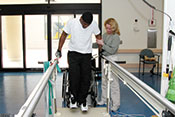 Photo courtesy of Tampa VAMC
Photo courtesy of Tampa VAMC
(03/14/2018)
Patients with traumatic brain injury treated at a VA polytrauma rehabilitation center continued to show improved function in the long term, found a VA Palo Alto Health Care System study. Researchers looked at 44 patients admitted to the inpatient rehabilitation unit in 2006. They found that functional gains made between admission and discharge were maintained eight years later. After eight years, more than 50 percent of patients were either competitively employed or continuing their education. All patients were living in a noninstitutionalized setting. The results show that the established Polytrauma System of Care is both effective and durable. (Archives of Physical Medicine and Rehabilitation, February 2018)
Evidence lacking on benefits of cranial electrical stimulation
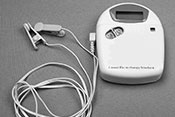 Image courtesy of study authors
Image courtesy of study authors
(03/08/2018)
A West Los Angeles VA Medical Center review found evidence is lacking on the benefits of cranial electrical stimulation for a number of conditions. In CES, doctors apply low-intensity electrical current to the head using electrodes. Evidence from 26 studies was insufficient to show that CES helped patients with fibromyalgia, headache, neuromusculoskeletal pain, degenerative joint pain, depression, or insomnia. Some studies suggested benefit for patients with anxiety and depression, but the evidence was low-strength. Low-strength evidence suggested that CES does not cause serious side effects. Larger randomized trials of higher quality, better execution, and longer follow-up are needed to show whether CES actually helps for these conditions, say the researchers. (Annals of Internal Medicine, Feb. 13, 2018)
Cognitive processing therapy and prolonged exposure therapy equally effective at treating PTSD
 ©iStock/Highwaystarz-Photography
©iStock/Highwaystarz-Photography
(03/08/2018)
Cognitive processing therapy and prolonged exposure therapy are equally effective at treating PTSD, found a study by researchers at the Dwight D. Eisenhower VA Medical Center in Leavenworth, Kansas. Researchers looked at medical charts for 750 Veterans with PTSD who underwent one of the two treatments. Patients who completed either therapy showed significantly lower PTSD symptoms, compared to those who did not complete therapy. There were no significant differences in symptom reduction between the two therapies. Both forms of psychotherapy are widely used in VA, and have been shown in many studies to improve PTSD symptoms. Cognitive processing therapy focuses on teaching patients how to evaluate and change upsetting thoughts related to trauma. Prolonged exposure therapy involves remembering and confronting trauma-related memories rather than avoiding them. This study adds to the existing evidence that either therapy is an effective treatment for PTSD. (Psychological Reports, April 2018)
Balanced high fat-diet reduces cardiovascular risk
 Photo:©iStock/Dusan Vidar
Photo:©iStock/Dusan Vidar
(03/08/2018)
A balanced high-fat diet reduces cardiovascular risk in obese women, found a study by VA Tennessee Valley Healthcare System researchers and their colleagues. In a balanced high-fat diet, total saturated fat is reduced and total unsaturated fat is increased proportionally. The diet balances the type of fat consumed to one-third saturated, one-third monounsaturated, and one-third polyunsaturated. All the women in the study had lower cardiovascular risk factors after the diet, but European-American women and African-American women responded differently. European-American women saw lower scores in measures related to apolipoprotein B, the main protein involved in LDL cholesterol. African-American women sow reductions related to apolipoprotein A1, the main protein related to HDL cholesterol. The results show that ethnicity and genetics should be considered when planning diet therapy, according to the researchers. (Metabolism, Jan. 27, 2018)
Topical fluorouracil reduces risk of some skin cancer and lowers treatment costs
 Photo: ©Stock/artenex
Photo: ©Stock/artenex
(03/08/2018)
Treatment with a fluorouracil cream can lower risk for one form of skin cancer and reduce treatment costs, according to two papers by VA researchers. Both papers were part of the VA Keratinocyte Carcinoma Chemoprevention Trial. Keratinocyte carcinoma refers to two types of non-melanoma skin cancer: cutaneous basal cell carcinoma and squamous cell carcinoma. Keratinocyte carcinoma accounts for about three-quarters of all cancers in the U.S. In the trial, 932 Veterans with a history of skin cancer applied topical fluorouracil—a medication used to treat cancer—to their face and ears twice daily for two to four weeks. The first paper reported that patients treated with fluorouracil had a 75 percent lower risk than those treated with placebo of developing squamous cell carcinoma in the year following treatment. Patients in the fluorouracil group were also significantly less likely to undergo Mohs surgery for either type of cancer. Fluorouracil did not reduce risk of basal cell carcinoma in the first year, or of risk of either cancer after four years. The second paper showed that patients in the fluorouracil group incurred $771 less in treatment costs over a three-year period, compared with the placebo group. Patients treated with fluorouracil had fewer appointments for squamous cell carcinoma. The results show that a topical treatment of fluorouracil substantially reduced surgery for squamous cell carcinoma and provided cost-savings for the VA health care system. (Journal of the American Academy of Dermatology, March 2, 2018)
Lab study suggests curcumin could improve memory, mood in Gulf War illness
 Photo:©iStock/onairjiw
Photo:©iStock/onairjiw
(02/27/2018)
Curcumin may lead to better cognitive and mood for those with Gulf War illness, according to a rat study by Olin E. Teague Veterans' Medical Center and Texas A&M researchers. Curcumin is a natural antioxidant compound found in turmeric and other plants, and is sometimes sold as an herbal supplement. Rats with simulated Gulf War illness symptoms were treated with either curcumin or a placebo for 30 days. Those in the curcumin group had better cognitive and mood function, based on behavioral tests. They also had better neurogenesis (growth and development of nerve tissue) and lower inflammation than the placebo group. The researchers hypothesize that changes in gene expression caused by curcumin could improve memory and mood symptoms related to Gulf War illness. (Brain, Behavior, and Immunity, Feb. 15, 2018)
One-day workshop shows promise for migraine sufferers
 Photo for illustrative purposes only. ©iStock/g-stockstudio
Photo for illustrative purposes only. ©iStock/g-stockstudio
(02/27/2018)
A one-day behavioral intervention workshop for Veterans with migraine improved symptoms and pain acceptance, found a Houston VA HSR&D Center for Innovation and Baylor College of Medicine study. Twenty-five Veterans with migraines along with depression or anxiety attended the workshop, which featured education and elements of acceptance and commitment therapy, a type of cognitive behavioral therapy. Participants said that that the workshop helped them better understand their condition and empowered them to better manage their headaches. The training led to greater awareness of how stress can make headaches worse. At a three-month follow-up, participants had significantly improved depressive and anxiety symptoms, general functioning, and headache-related disability. Findings of this small trial suggest that educational workshops could have important benefits for treating migraines, pending replication in a more rigorously designed large-scale study. (Military Medicine, Feb. 6, 2018) >
Steroid drug may help PTSD symptoms
 Photo ©iStock/adventtr
Photo ©iStock/adventtr
(02/27/2018)
The drug dexamethasone improved PTSD symptoms when paired with trauma memory activation, in a VA North Texas Health Care System study. Dexamethasone is a glucocorticoid—a type of steroid involved in glucose metabolism and the immune system. It is commonly used to treat a number of conditions, such as rheumatoid arthritis, allergies, and asthma, because of its anti-inflammatory properties. Fifty-four male Veterans with PTSD received either dexamethasone or placebo. The first group was given the drug while doing a trauma memory reactivation task in four weekly sessions. Those treated with the drug had significantly lower PTSD symptoms at one- and three-month follow-ups. They also had lower symptoms six months later, but the results were no longer significant relative to the placebo group. The drug is thought to facilitate the extinction of fear memories—meaning that the memory is replaced with new learning. Extinction is impaired in people with PTSD. The drug has an "excellent high-dose safety profile," according to the researchers, although it could have side effects such as increased appetite, insomnia, heartburn, and muscle weakness, and increased blood sugar. One study participant was hospitalized because of leg swelling that possibly resulted from the drug. Further trials are needed to explore the drug's potential role in PTSD treatment, say the researchers. (Psychiatry, Winter 2017)
Non-specialists do as well as specialists at treating sleep apnea
 Photo:©iStock/Nicolesy
Photo:©iStock/Nicolesy
(02/22/2018)
Patients with obstructive sleep apnea receive similar quality of care from sleep specialist physicians and non-sleep specialists, found a Minneapolis VA Health Care System review. Four studies found that sleep specialist physicians and non-sleep specialists performed equally well at diagnosing obstructive sleep apnea and classifying its severity. Eight other studies showed that patients with both types of providers had similar quality of life, adherence to treatment, and symptom scores. Using dedicated sleep specialist physicians can be expensive and inefficient. The researchers believe that more research is needed on the best and most efficient care models for sleep apnea. (Annals of Internal Medicine, Feb. 6, 2018)
Review study finds antipsychotic drug a 'reasonable treatment' for PTSD
 Photo:©iStock/Hailshadow
Photo:©iStock/Hailshadow
(02/22/2018)
A review study by a team at the Durham VA Health Care System concluded that aripiprazole is a reasonable treatment option for PTSD. Aripiprazole, sold as Abilify and other brands, is an atypical antipsychotic mainly used to treat schizophrenia and bipolar disorder. Current VA and Department of Defense guidelines recommend against this class of drugs for PTSD, although in the case of aripiprazole the evidence against its use is considered weak. Looking at six previous studies, the Durham researchers found that patients on aripiprozole showed significant improvements in PTSD symptoms. The drug was well-tolerated, although there were some adverse effects such as anxiety and insomnia. These side effects are themselves symptoms of PTSD, but most study participants experienced fewer symptoms overall. The researchers acknowledge that psychotherapy has been shown to be the best treatment for PTSD, but that since some patients either decline or are unable to participate in talk therapy, other approaches should be explored. Larger studies are needed to better understand how antipsychotics can be used to treat patients with PTSD, say the researchers. (Clinical Neuropharmacology, November/December 2017)
Rates of hospital admission after VA outpatient surgery
 Photo:©iStock/Rpsycho
Photo:©iStock/Rpsycho
(02/22/2018)
As many as 20 percent of VA outpatient surgeries result in hospital admission, according to a VA Boston Healthcare System study. This admission rate is higher than in non-VA settings—which average around 1 to 5 percent—but may be explained by the greater disease burden and higher percentage of men seen in VA, say the researchers. They looked at data from 63,685 surgeries carried out between 2011 and 2013. They found that 66 percent of hospital admissions occurred on the day of surgery. Admission rates ranged from 5 percent in podiatry surgeries to 28 percent in urology. Four percent of admissions were for surgical complications. Regardless of type of surgery, higher procedure complexity and anesthesia risk led to more admissions. The admission rate may appear higher because of planned inpatient stays being miscoded as outpatient procedures that resulted in hospitalizations, noted the researchers. Also, VA providers may also be more likely than private doctors to hold patients for observation or choose to readmit them after a surgery because the patients would not incur an additional cost for this choice. The researchers conclude that most postoperative admissions are likely observational, and not because of problems related to the surgery. (Health Services Research, Jan. 23, 2018)
Natural language processing accurate at analyzing bladder cancer reports
 Photo: Wikimedia Commons
Photo: Wikimedia Commons
(02/15/2018)
Natural language processing was successful at identifying details on patients with bladder cancer from medical reports. Researchers analyzed 600 reports on patients with bladder cancer from the VA's Corporate Data Warehouse using a computer engine that looks at language. They used this set of reports to develop and evaluate the computer program. Researchers then applied the natural language processing engine to more than 10,000 other reports. The program was able to accurately detect pathologic characteristics—such as tumor structure, depth, and grade—in 99 percent of patients. This technology could be used to group cancer patients together by similar characteristics for future studies. (Urology, December 2017)
Protein related to migraine may not be as important to blood pressure regulation as previously thought
 Photo: ©iStock/laflor
Photo: ©iStock/laflor
(02/15/2018)
A central nervous system protein believed to prevent high blood pressure can possibly be blocked without negative cardiovascular effects, according to an Iowa City VA Medical Center and University of Iowa study. The protein, calcitonin gene-related peptide (CGRP), can cause migraines, but it has also been shown to protect against high blood pressure. Researchers treated mice with gene variations that resulted in increased CGRP receptors with drugs that increase blood pressure. The results suggest that the receptors themselves may provide cardiovascular protection even without directly interacting with CGRP. This could mean that migraine medications that block CGRP activity may not pose a risk of causing high blood pressure, as previously thought. (Journal of Cerebral Blood Flow and Metabolism, Jan. 1, 2018)
Insomnia drug may be overprescribed to Veterans
 Photo: ©iStock/OcusFocus
Photo: ©iStock/OcusFocus
(02/15/2018)
Prescription of zolpidem (sold as Ambien and other brands), an insomnia drug, is more widespread than guidelines recommend in Iraq and Afghanistan Veterans, found a study by researchers from several VA systems. Researchers looked at nearly 500,000 Veterans who received VA care in 2013 and 2014. Zolpidem was prescribed to 7.6 percent. The majority of these Veterans had long-term use of zolpidem, averaging 189.3 days. These numbers may reflect high-risk zolpidem prescribing practices that put Iraq and Afghanistan Veterans at risk for adverse effects and poor health outcomes, say the researchers. They believe the findings could serve as a guide to help improve prescribing of the drug. (PLoS ONE, Jan. 23, 2018)
Preterm birth more common in six months after deployment
 Photo: ©Stock/Ondroo
Photo: ©Stock/Ondroo
(02/08/2018)
Women soldiers who gave birth within six months of returning from deployment were more likely to deliver early, according to a study including a VA Palo Alto Health Care System researcher. The rate of preterm birth was nearly double for women who delivered within six month of returning, compared with births at other times. Neither multiple past deployments nor PTSD was linked to preterm birth. The results show a need for increased focus on pregnancy timing for service women, as well as access to pre-deployment reproductive counseling and contraception, say the researchers. (American Journal of Epidemiology, Jan. 12, 2018)
Opioid prescription in VA has declined
 Photo: ©Stock/fluxfoto
Photo: ©Stock/fluxfoto
(02/08/2018)
Opioid prescribing has declined in VA in recent years, found an Iowa City VA Healthcare System study. Researchers looked at data on opioid use in VA between 2010 and 2016. Opioid prescriptions peaked in 2012 at 21.2 percent of all VA patients receiving at least one outpatient prescription. The rate then declined annually to 16.1 percent in 2016. The decline is mostly because of less long-term opioid prescribing, as opposed to short or intermediary opioid use. The results show that recent VA opioid initiatives may be succeeding in preventing patients from beginning long-term opioid use. (Journal of General Internal Medicine, Jan. 29, 2018) iStock-172960226.jpg
Transition-related treatment curbs suicidal thoughts, depression in transgender Veterans
 Photo: ©Stock/portishead1
Photo: ©Stock/portishead1
(02/08/2018)
Transgender people who had undergone transition-related medical interventions were less likely to have suicidal thoughts and symptoms of depression, in a study of transgender Veterans. People who had both hormone therapy and surgery on the chest and genitals had significantly lower levels of suicidal thoughts and depression, compared with those who had no medical intervention, hormone therapy only, or hormone therapy and surgery on either the chest or genitals but not both. Results suggest that combined medical treatment to affirm one's gender identity has a protective psychological effect, according to the researchers. VA currently provides certain transition services for transgender Veterans, such as counseling, evaluations, and hormone therapy, but does not provide nor pay for surgery. (Psychological Medicine, Jan. 14, 2018)
New scale measures moral injury
 Photo for illustrative purposes only. ©iStock/kieferpix
Photo for illustrative purposes only. ©iStock/kieferpix
(02/02/2018)
Researchers from multiple VA centers and their colleagues have developed a scale to measure moral injury in Veterans and service members with PTSD. Moral injury includes feelings of guilt, shame, moral concerns, religious struggles, loss of religious faith, loss of meaning or purpose, difficulty forgiving, loss of trust, and self-condemnation. Researchers tested the Moral Injury Symptom Scale-Military Version (MISS-M) with 427 Veterans and service members with PTSD symptoms. They found high correlation between scores on the 45-item MISS-M survey and PTSD symptoms. The MISS-M could be a useful tool to measure moral injury and identify those at risk for PTSD, say the researchers. (Journal of Religion and Health, February 2018)
Memory tests are accurate for diagnosing Alzheimer's
 Photo: ©iStock/marrio31
Photo: ©iStock/marrio31
(02/02/2018)
Memory tests are able to differentiate between those with and without Alzheimer's disease, found a review by researchers from several VA systems. In the 47 studies included by the researchers, measures of immediate and delayed memory had high diagnostic accuracy for Alzheimer's. Memory tests had lower accuracy for diagnosing mild cognitive impairment, based on 38 studies. While memory tests and other psychological testing can be useful for diagnosing Alzheimer's and other cognitive deficits, they are not required in the current diagnosis criteria. The researchers suggest that these tests should be emphasized when diagnosing the conditions. (Neuropsychology Review, December 2017)
Heart procedures in VA versus community hospitals
 Photo ©iStock/KentWeakley
Photo ©iStock/KentWeakley
(02/02/2018)
Performing coronary revascularization procedures at community care hospitals that partner with VA, rather than at VA hospitals, has benefits and downsides, according to a study in several VA health care systems. Coronary revascularization refers to procedures to treat artery narrowing or blockage near the heart. The procedures studied were percutaneous coronary intervention and coronary artery bypass graft. One in five elective coronary revascularizations for VA patients was performed at community care sites that were part of the VA Community Care Program. Patients who had percutaneous coronary interventions at community-based medical centers had shorter travel distances than their peers who had the procedure at VA hospitals. However, community care patients had higher mortality and higher costs to the health care system than VA hospital patients. Coronary artery bypass grafts performed at community care hospitals had shorter travel distance, similar mortality, and lower costs than those performed at VA hospitals. The results show that patients should be provided with information to help them pick the health care professionals best for them regardless of location, say the researchers. (JAMA Cardiology, Jan. 3, 2018)
Mouse model of PTSD sleep disturbances
 Photo ©iStock/D-Keine
Photo ©iStock/D-Keine
(02/02/2018)
Researchers at the Harry S. Truman Memorial Veterans Hospital have found a technique that may let them study sleep disruptions from PTSD by using mice. The researchers exposed mice to soiled cat litter. The smell caused predator odor trauma in the mice, which caused hyperarousal and memory effects related to fear. By studying electrical signals in the mouse brains, researchers concluded that the sleep disturbances caused by predator odor trauma mimic sleep disturbances in humans with PTSD. The results could allow scientists to study PTSD-related sleep disturbances without using human study volunteers. (Sleep, Jan. 13, 2018)
'Nanoshuttle' capable of delivering drugs to specific tissue
 Image from Bone Research via Creative Commons
Image from Bone Research via Creative Commons
(01/25/2018)
A team including a VA San Diego Healthcare System researcher designed "nanoshuttles" capable of delivering cancer drug molecules to specific cells and tissue. The nanoshuttles are tiny silica structures shaped like golf balls and containing gold and iron oxide nanoparticles. Researchers were able to guide these nanoshuttles through simulated blood vessels and human tissue by using an exterior magnetic field. The nanoshuttle is coated with a polymer sensitive to heat and pH, allowing the researchers to control when the payload, a cancer drug, is released. This technique holds great potential to deliver drugs to specific tissue types, say the researchers. (Bone Research, Dec. 20, 2017)
Evidence lacking on ways to prevent late-life cognitive decline
 Photo: ©iStock/PeopleImages
Photo: ©iStock/PeopleImages
(01/25/2018)
No proven methods exist to prevent cognitive decline in late life, according to a series of four reviews by Minneapolis VA Health Care System researchers.
A review of studies on multiple over-the-counter supplements did not find evidence that supplements protect against cognitive impairment or dementia. Daily folic acid plus vitamin B12 was linked to memory improvements, but the clinical significance was questionable. Evidence showed that vitamin E had no benefit on cognition. Existing evidence on a variety of other supplements is either low strength or insufficient.
Another review did not find much evidence that short-term physical activity prevented cognitive decline or dementia in older adults. Not enough evidence exists on the effectiveness of aerobics, resistance training, or tai chi. Low-strength evidence did suggest that physical activity, diet, and cognitive training together improved cognitive performance.
A third review did not find evidence to support the use of prescription drugs to protect against cognitive decline. NSAIDs, statins, high blood pressure medications, and cholinesterase inhibitors did not reduce dementia risk or slow cognitive decline. Evidence suggests that estrogen and estrogen-progestin increased the risk of dementia or cognitive impairment. High-dose raloxifene, an osteoporosis drug, decreased mild cognitive impairment but not dementia risk, but the strength of the evidence was low.
The final review did not find sufficient evidence that cognitive training could prevent dementia. Training in a specific area improved performance in that area only—for example, memory training improved memory, but not overall cognition. While cognitive training shows some benefit, not enough evidence exists to say whether these benefits actually prevent or delay cognitive decline or dementia. (Annals of Internal Medicine, Jan. 2, 2018)
General satisfaction with VA health care high, but some areas need improvement
 Photo by Mitch Mirkin
Photo by Mitch Mirkin
(01/25/2018)
A diverse, multisite survey found generally high levels of satisfaction with VA health care. Researchers interviewed 1,222 Veterans at multiple VA locations between 2013 and 2015. They found that overall satisfaction with VA care was comparable or better than in other health care systems. No clear patterns in satisfaction were evident based on race or gender. Between 74 and 76 percent of participants said they were "very satisfied" with VA costs, outpatient facilities, and pharmacy services. Satisfaction was lowest with access to care, pain management, and mental health care, with 21 to 24 percent responding they were "less than satisfied." While satisfaction levels with VA health care were generally high, there is room for improvement, conclude the researchers. Since the time of the interviews, VA has made efforts to improve access to care, meaning that the results may not reflect current levels of satisfaction. (Journal of General Internal Medicine, Jan. 8, 2018)
VA system barriers could lead to lack of engagement with psychotherapy
 Photo for illustrative purposes only. ©iStock/Vadimguzhva
Photo for illustrative purposes only. ©iStock/Vadimguzhva
(01/18/2018)
In a study based at one South Central VA Health Care Network clinic, system-level barriers were the most common reason cited by patients who had chosen to not engage with PTSD psychotherapy. Researchers interviewed 24 patients who had been prescribed either cognitive processing or prolonged exposure therapy for PTSD but who did not attend any sessions. Two-thirds of those interviewed mentioned barriers related to the VA system. These included inefficiencies and delays, negative experiences with VA staff and providers, discomfort with the VA environment, and difficulty navigating the VA system. Most Veterans interviewed said they had multiple barriers to treatment engagement. The researchers point out that the study may not provide a full picture of VA consumer satisfaction, since it included only Veterans who had opted out of therapy. But they say the results nonetheless underscore the need for a more patient-centered model of care. (Psychological Services, Dec. 21, 2017)
VA and Medicare Part D dual users more likely to take high opioid doses
 Photo: ©iStock/Darwin Brandis
Photo: ©iStock/Darwin Brandis
(01/18/2018)
Veterans using both VA and Medicare Part D for prescriptions were at a two to three times higher risk of high-dose opioid exposure than those only using one system, according to a study by VA Pittsburgh Healthcare System researchers and their colleagues. They found that 13 percent of patients who filled at least one opioid prescription in 2012 received care from both VA and Medicare Part D. Dual-use patients were more likely to receive high opioid doses and to have long-term high dose use. The researchers acknowledge that the data, which were the latest available at the time of the study, may not reflect the current state of opioid use across VA and Medicare. At the same time, they say that as VA adopts more community care options, the findings may take on even greater relevance. (American Journal of Public Health, February 2018)
Chiropractic care improves low back pain for some female Veterans
 Photo: ©iStock/CheshireCat
Photo: ©iStock/CheshireCat
(01/18/2018)
Chiropractic care improved outcomes for some female Veterans with low back pain, in a VA Western New York Healthcare System study. After an average of eight chiropractic treatments, women saw an average of 27 percent improvement in pain, based on a back pain questionnaire. About 47 percent of patients met the minimum clinically important difference to show the treatment is effective. While not all women studied saw statistically important improvements, the researchers concluded that chiropractic care may be of value for pain management in this population. (Journal of Manipulative and Physiological Therapeutics, October 2017)
Psychological risk factor difference in returning Veterans based on gender
 Photo by Master Sgt. Mark C. Olsen
Photo by Master Sgt. Mark C. Olsen
(01/10/2018)
Researchers with the Edith Nourse Rogers Memorial Veterans Hospital and their colleagues examined the different challenges for men and women Veterans returning from deployment. They looked at 283 post-9/11 returning combat Veterans to see how psychological risk factors differed based on gender. Results showed that female Veterans were more likely to report a history of sexual trauma. Male Veterans had a greater frequency of gambling, impulsivity, and hypersexuality. Both men and women had similar rates of depression, anxiety, insomnia, and substance use disorder. Veterans had higher rates of these conditions than non-Veterans, regardless of gender. Further research should focus on how these differences impact reintegration and functioning, say the researchers. (Journal of Interpersonal Violence, Dec. 12, 2017)
Report: People with PTSD have a smaller hippocampus
 Photo: ©iStock/yodiyim
Photo: ©iStock/yodiyim
(01/10/2018)
People with PTSD have smaller hippocampi than those without, according to a large international consortium including several VA researchers. The study looked at 1,868 subjects who had been exposed to trauma, 794 of whom had active PTSD. Those with PTSD had significantly lower hippocampus volume than those without. The hippocampus is a section of the brain associated with emotions and long-term memory. Subjects with PTSD also had smaller amygdalae, but that finding was not deemed significant after statistical analysis. The results add support to previous findings that trauma exposure may cause volume loss in the hippocampus. The researchers describe the results as an important milestone in understanding the brain's response to trauma. (Biological Psychiatry, Feb. 1, 2018)
Telephone versus televideo for genetic counseling
 Photo: ©iStock/shironosov
Photo: ©iStock/shironosov
(01/10/2018)
Both telephone and televideo delivery of genetic counseling have strengths and weaknesses, found a study by researchers from three VA medical centers. Researchers surveyed 20 patients receiving genetic counseling by phone and 18 receiving it by televideo, along with their counselors. Patients and counselors were satisfied with both methods. Televideo required more travel time and expense than telephone because it must be conducted at a clinic. Patients liked the flexibility of telephone. However, counselors felt that patients missed more appointments and were distracted when using the telephone. Televideo also had the advantage of letting counselors read the body language of patients. The results show that further analysis of telehealth methods is needed to balance access to care with patient engagement, according to the researchers. (Journal of Genetic Counseling, Dec. 15, 2017)
No-touch disinfection effective in preventing some hospital infections, but not others
 Photo courtesy of xenex.com
Photo courtesy of xenex.com
(01/04/2018)
No-touch disinfection methods are effective at preventing some common infections but not others, found a literature review by a team including an Iowa City VA Health Care System researcher. The researchers looked at studies on ultraviolet light or hydrogen peroxide vapor cleaning systems. They found that these techniques significantly reduced C. difficile and vancomycin-resistant enterococci infection, two antibiotic-resistant pathogens common in hospitals. They did not find differences in the infection rates for MRSA or other drug-resistant organisms for no-touch techniques versus manual cleaning alone. The authors believe that no-touch cleaning methods can augment traditional cleaning, but not replace it. (Infection Control & Hospital Epidemiology, Nov. 16, 2017)
COPD tied to cognitive impairment, although causation not clear
 Photo: ©iStock/ands456
Photo: ©iStock/ands456
(01/04/2018)
Patients with chronic obstructive pulmonary disease have a high prevalence of cognitive impairment, according to a review by Central Arkansas Veterans Healthcare System and University of Arkansas researchers. Looking at the available literature, the researchers found that older patients with COPD were more likely to have mild cognitive impairment and dementia than those without COPD. Newer studies have reported that oxygen therapy and pulmonary rehabilitation can have positive effects on cognitive impairment. There is some evidence that the severity of low oxygen levels is linked to the severity of cognitive dysfunction. However, the researchers caution that causality between the two cannot be drawn from the available data. (Current Opinion in Pulmonary Medicine, Dec. 9, 2017)
Effect of testosterone on cardiovascular risk remain unclear
 Photo for illustrative purposes only. ©iStock/Halfpoint
Photo for illustrative purposes only. ©iStock/Halfpoint
(01/04/2018)
Results were mixed on whether treatment for low testosterone in older men improves cardiovascular risk factors, in a study that included several VA researchers. The researchers looked at how testosterone treatment affects cardiovascular risk factors in 788 men age 65 or older. The study was part of a larger series of trials looking at how testosterone therapy affects a number of health outcomes. Testosterone was linked to small reductions in cholesterol and fasting insulin. But testosterone therapy did not affect other cardiovascular risk factors, such as glucose markers, inflammation, or clotting. More large studies are needed to figure out what effect testosterone has on cardiovascular risk, say the researchers. (Journal of Clinical Endocrinology and Metabolism, Dec. 14, 2017)
Military-related trauma linked to eating disorders in male Veterans
 Photo for illustrative purposes only. ©iStock/domoyega
Photo for illustrative purposes only. ©iStock/domoyega
(12/27/2017)
Military-related trauma was linked to eating disorder symptom severity in male Veterans, in a study by VA Boston Healthcare System researchers. Of a group of 642 male Veterans, 4 percent showed a probable eating disorder. Up to 3 percent of men in the general population have an eating disorder. The most common symptom in the study group was binge eating, which is also the most common for men in the general population. Symptoms were more common for those who had experienced military-related trauma, with multiple traumas linked to increased eating disorder symptoms. Military-related trauma was defined in the study as "seeing something horrible or being badly scared" during military service. Interestingly, only non-combat military trauma was linked to eating disorders. Similar results have been seen in female Veterans, but eating disorders are understudied in men. Previous studies have shown as much as 14 percent of women Veterans may have eating disorder symptoms. Non-military trauma, such as childhood trauma, was not shown to be linked to eating disorders in the study group. The researchers say better assessment of eating disorders in male Veterans is needed. (International Journal of Eating Disorders, November 2017)
Antibiotic timing off for many dental procedures
 Photo: ©iStock/domoyega
Photo: ©iStock/domoyega
(12/27/2017)
While most patients in a small one-site VA study received antibiotics when having a dental procedure, most did not receive them at the right time. Guidelines now recommend that a single course of antibiotics be given before tooth extractions, dental implants, and periodontal procedures. Of 183 Veterans having a dental procedure, 83 percent received antibiotics. Of those, 92 percent received antibiotics only after the procedure. Only 3 percent received antibiotics before the procedure, with 5 percent receiving antibiotics both before and after. The researchers conclude that more efforts are needed to ensure proper timing of antibiotic treatment in dental practices. (Open Forum Infectious Diseases, Nov. 15, 2017)
Medical marijuana and opioid misuse may be linked
 Photo: ©iStock/LPETTET
Photo: ©iStock/LPETTET
(12/27/2017)
Medical marijuana use may be linked to risk of prescription opioid misuse, according to a study by VA Portland Health Care System and Kaiser Permanente researchers. They studied 371 patients on long-term opioid therapy. Eighteen percent of those patients also used medical marijuana for pain. Those who used medical marijuana were significantly more likely to be at risk for prescription opioid misuse. The study showed no significant differences between those who used marijuana and those who did not in terms of pain relief, depression, or anxiety. The results highlight the need for more research on the long-term impact of medical marijuana, according to the researchers. (General Hospital Psychiatry, Nov. 8, 2017)
New cholesterol drug not cost-effective
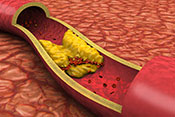 Photo: ©iStock/jamesbenet
Photo: ©iStock/jamesbenet
(12/14/2017)
Adding a PCSK9 inhibitor to statin therapy for high cholesterol is not cost-effective, found a study including a Michael E. DeBakey VA Medical Center researcher. PCSK9 inhibitors have been available since 2015, but are not widely used because of the cost and the newness of the drug class. Using a statistical model for a theoretical group of patients, based on the existing medical literature, the researchers determined that adding a PCSK9 inhibitor drug to a statin would typically reduce LDL cholesterol by 59 percent, and adverse cardiovascular events (such as stroke and heart attack) by 15 percent per year. However, the drug is very expensive: $14,300 per year. This price equates to a cost of almost $500,000 per quality-adjusted life year, an economic measure of disease burden that takes quality of life into account. The normal cost the market is willing to pay per quality-adjusted life year is $100,000. The price of PCSK9 would need to be lowered by 62 to 83 percent to become cost-effective, according to the researchers. (JAMA Cardiology, Oct. 18, 2017)
Protein shown to suppress breast cancer growth in mice
 Photo: ©iStock/dra_schwartz
Photo: ©iStock/dra_schwartz
(12/14/2017)
A protein known as GPER1 suppressed the growth of breast cancer cells in a U.S. and Chinese study that included an Omaha VA Medical Center researcher. Prolonged exposure to estrogen is a risk factor in the progression of breast cancer. GPER1 has been shown to control how estrogen affects certain genes. The researchers looked at how the protein reacted in both human cells and mouse models. They found that GPER1 proteins bind to certain gene sites, disrupting cancer cell division and growth. Injection of GPER1 into mice did not harm their biology or behavior. The results suggest this protein could be a promising chemotherapy drug to treat breast cancer. (Molecular Cancer Therapeutics, June 2017)
Mandibular advancement device offers viable alternative to CPAP
 Photo: ©iStock/cherrybeans
Photo: ©iStock/cherrybeans
(12/14/2017)
Mandibular advancement devices (MAD) may be a good alternative to CPAP for treating obstructive sleep apnea in Veterans with PTSD, according to a VA Western New York Healthcare System study. A MAD is a mouth guard that holds the lower jaw and tongue forward, creating more breathing space during sleeping. Continuous positive airway pressure (CPAP) therapy involves a machine and breathing mask that creates pressure to keep the airway open. Researchers tested 35 subjects with both treatments. Results showed that CPAP provided better breathing results during sleep. However, both treatments improved sleep apnea and PTSD symptoms over no treatment. While CPAP is more effective than MADs, patients are much more likely to use a MAD consistently than they are CPAP, especially patients with PTSD. Patients used the MAD an average of 2.2 hours longer per night than CPAP. Fifty-eight percent of participants preferred the MAD to CPAP, while only 29 percent preferred CPAP. (Journal of Clinical Sleep Medicine, Nov. 15, 2017)
VA responsive to FDA drug warning on antidepressant, but less so for older patients
 Photo: ©iStock/Cecile_Arcurs
Photo: ©iStock/Cecile_Arcurs
(12/08/2017)
VA prescription of high doses of a common antidepressant decreased after FDA safety warnings, but not for all patient groups, found a VA Ann Arbor Healthcare System study. The FDA issued warnings against high doses of the antidepressant citalopram (sold as Celexa) in 2011 and 2012. Within the VA health system, high-dose citalopram use decreased by 2 percent per month between the first warning in 2011 and second in 2012. Less than 3 percent of citalopram users were on a high dose after both warnings. However, about 31 percent of older patients remained on doses higher than the new recommendation. Lower citalopram use was accompanied by significant increases in prescription of alternative antidepressants. While the results suggest that notification systems used in VA enable a quick response to medication warnings, more research is needed on how facilities receive and respond to these warnings, say the researchers. (American Journal of Geriatric Psychiatry, September 2017)
Telehealth management program may lower burden for dementia caregivers
 Photo: ©iStock/Thomas_EyeDesign
Photo: ©iStock/Thomas_EyeDesign
(12/08/2017)
A telephone-based dementia care management program led to reduced burden on caregivers, found a study involving several VA centers. Home caregivers of patients with dementia participated in a telehealth education program. Participants engaged in two to three contacts per month for three months. They completed modules on dementia-related behavior management strategies and caregiver coping techniques. Participants in the telephone learning program showed lower burden, compared with those who received standard clinical care. The telehealth group also showed lower frequency of dementia-related behaviors and caregiver distress in response to these symptoms. The results suggest that a care management program delivered by telephone can improve outcomes for both patients with dementia and their caregivers. (American Journal of Geriatric Psychiatry, September 2017)
Variations in performance on cognitive tests may foretell Alzheimer's
 Photo: ©iStock/solidcolours
Photo: ©iStock/solidcolours
(12/08/2017)
Cognitive tests may be effective in predicting Alzheimer's disease, found a study including William S. Middleton Memorial Veterans Hospital researchers. The researchers looked at biomarker and cognitive test data gathered over six years from 349 patients. They found that performance on cognitive tests lined up with biomarkers from lumbar punctures in predicting the advance of Alzheimer's disease and mild cognitive impairment. Specifically, the participants at risk were those who performed unevenly across tests in different cognitive areas, such as executive functioning, attention, verbal learning, memory, and reading. Such tests may pose an alternative to invasive medical procedures for prediction or early detection of the disease, according to the researchers. (Journal of Alzheimer's Disease, 2018)
New tool to predict mortality of dialysis patients
 Photo: ©iStock/porpeller
Photo: ©iStock/porpeller
(12/08/2017)
VA and Kaiser Permanente researchers have developed a new risk prediction tool for patients transitioning to dialysis. The researchers looked at demographics, renal disease causes, other conditions, and lab data for more than 35,000 Veterans who transitioned to dialysis over a 6.5-year period. Twenty-seven percent died within a year of beginning dialysis. Researchers predicted about that number of deaths based on the data. They validated the prediction tool by looking at more than 4,000 patients outside VA. This new tool could help identify high-risk patients and aid in dialysis planning, say the researchers. (American Society of Nephrology Kidney Week, Nov. 3, 2017)
Study links genes to suicide-attempt risk
 Photo: ©iStock/nicolas
Photo: ©iStock/nicolas
(11/30/2017)
A team including several VA researchers has identified a gene variation that may be linked to risk of suicide attempts. The researchers studied the mapped genomes of a large group of soldiers to look for similarities in those who had attempted suicide. They found similar variation in two genes in one genome location. The genes (CEP162 and MRAP2) are involved in how the body uses the energy it gets from food. The results suggest that this gene variation may increase the risk of suicide, according to the researchers. The results may also show a genetic link between risk of suicide and bipolar disorder, they say. (American Journal of Medical Genetics, December 2017)
Genetic markers of schizophrenia predict lithium nonresponse in bipolar disorder
 Photo: ©iStock/Morrhigan
Photo: ©iStock/Morrhigan
(11/30/2017)
Patients with bipolar disorder who also have a high genetic risk for schizophrenia do not respond as well to lithium treatment as those without schizophrenia markers, found a large, international consortium including several VA researchers. Lithium is the standard mood stabilizer used to treat bipolar disorder. However, up to 30 percent of patients do not respond to lithium. The researchers looked at the genomes of more than 2,000 patients with bipolar disorder. They found that patients who had gene variations that have previously been shown to predict schizophrenia also did not respond to lithium for bipolar disorder. The results could be used to predict how effective lithium treatment will be for individual patients, say the researchers. (JAMA Psychiatry, Nov. 9, 2017)
Program will match cancer patients with clinical trials
 Photo: ©iStock/RoBeDeRo
Photo: ©iStock/RoBeDeRo
(11/30/2017)
Researchers with the VA Boston Healthcare System have created an online system to match cancer patients with clinical trials. The researchers partnered with a team at the University of California, San Francisco to adapt their CTMatch application to VA patients with non-small cell lung cancer. The system is part of the Precision Oncology Program, a VA program that offers genomic analysis of patients with tumors. The researchers hope that the system will lead to better treatments for patients by matching them with the most relevant clinical trials. (American Medical Informatics Association Annual Symposium, Nov. 7, 2017)
Trend toward earlier hospice enrollment in VA
 Photo: ©iStock/Martin Prescott
Photo: ©iStock/Martin Prescott
(11/21/2017)
Early hospice enrollment increased over time in the VA health care system for patients with advanced-stage lung cancer, found VA Portland Health Care System researchers and their colleagues. Early enrollment in hospice can improve quality of care and caregiver well-being, according to the researchers. They looked at data from nearly 22,000 patients diagnosed with lung cancer between 2007 and 2013. Seventy percent of patients were enrolled in hospice. Of those, 53 percent were enrolled in the last month of life, while 15 percent were enrolled in the last three days. Over the time period studied, hospice enrollment increased. Time between diagnosis and hospice enrollment decreased. This trend toward timely hospice enrollment is encouraging, say the researchers. They also note that regional variability in hospice enrollment suggests room for improvement. (Cancer, Oct. 10, 2017)
RNA markers altered in rheumatoid arthritis
 Photo: ©iStock/selvanegra
Photo: ©iStock/selvanegra
(11/21/2017)
Small RNA segments are altered in people with rheumatoid arthritis, found a VA Tennessee Valley Healthcare System study. Small, noncoding RNA segments within human genes regulate biological processes. Researchers looked at the RNA variations in blood plasma of people with rheumatoid arthritis. They found significant alteration in 12 RNA sequences, compared with subjects without arthritis. The results could be used to help diagnose rheumatoid arthritis, say the researchers. (American College of Rheumatology Annual Meeting, Nov. 6, 2017)
For back pain, telehealth cognitive behavioral therapy matches in-person treatment
 Photo: ©iStock/fstop123
Photo: ©iStock/fstop123
(11/21/2017)
Cognitive behavioral therapy for low back pain delivered by phone had similar results to in-person treatment, in a study by VA San Diego Healthcare System researchers. Patients with chronic low back pain participated in eight weeks of either cognitive behavioral therapy over the phone or in-person supportive care. Both groups showed similar levels of pain improvement. Both also had strong participation. The results show that telehealth approaches to psychotherapy could be useful in treating pain. (Clinical Journal of Pain, Sept. 1, 2017)
Exploring the risks of sexual assault for deployed versus non-deployed servicewomen
 Photo by Sgt. Richard Blumenstein/USMC
Photo by Sgt. Richard Blumenstein/USMC
(11/21/2017)
Researchers from the Iowa City VA Health Care System and their colleagues looked at the rates of sexual assault against servicewomen who were deployed, versus those who were not deployed. Of more than 1,000 women surveyed who served during the wars in Iraq and Afghanistan, 16 percent had experienced sexual assault in the military. More servicewomen experienced sexual assault while not deployed. However, after adjusting for time spent in each setting, the researchers found that women were at greater risk of sexual assault during deployment. The results suggest that both locations require unique strategies to reduce sexual assault, say the researchers. (American Journal of Industrial Medicine, November 2017)
Computer algorithms accurately identify fatty liver disease
 Photo: ©iStock/choja
Photo: ©iStock/choja
(11/16/2017)
Researchers at the Michael E. Debakey VA Medical Center and their colleagues have developed computer algorithms that can accurately identify fatty liver disease from radiology reports. The algorithms use natural language processing to "read" text reports from radiology tests. They were able to identify patients with fatty liver disease more than 90 percent of the time. The algorithms could be used to rapidly screen patient records to gather data for studies on the disease, say the researchers. (Digestive Diseases and Sciences, October 2017)
Electronic trigger detects mammogram follow-up delays
 Photo: ©iStock/thomasandreas
Photo: ©iStock/thomasandreas
(11/16/2017)
An electronic trigger was effective at detecting delayed follow-up after an abnormal mammogram result, found Michael E. DeBakey VA Medical Center researchers. The researchers used a computer algorithm to search electronic health records for abnormal mammogram results with no noted follow-up. Looking at more than 2,000 records, the algorithm had 71 percent accuracy for detecting follow-up delays. The results suggest that electronic triggers could help track and reduce missed opportunities to act early for treatment, according to the researchers. The results also show that delayed follow-ups continue to be a problem for some despite federal laws requiring patient notification of mammogram results within 30 days, they say. (Journal of the American College of Radiology, Nov. 1, 2017)
Window of Hope therapy is effective at reducing hopelessness in people with TBI
 Photo for illustrative purposes only. ©iStock/KatarzynaBialasiewicz
Photo for illustrative purposes only. ©iStock/KatarzynaBialasiewicz
(11/16/2017)
The Window of Hope therapy program significantly reduced feelings of hopelessness in participants with traumatic brain injury, found a VA Rocky Mountain MIRECC study. Window of Hope is a cognitive behavioral therapy adapted for TBI. Hopelessness often occurs in people with TBI, sometimes leading to suicide. Those who participated in 10 weekly sessions scored significantly lower on a measure of hopelessness than those who did not. They continued to feel less hopeless three months after the therapy. The results show that the Window of Hope program is an effective way to treat hopelessness in this population, say the researchers. (Journal of Head Trauma Rehabilitation, Oct. 27, 2017)
Common fluids no better than saline for preventing kidney injury during angiograms
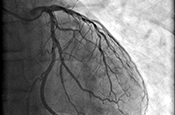 Photo: ©iStock/kalus
Photo: ©iStock/kalus
(11/16/2017)
Commonly used angiogram fluids are no better than saline at preventing kidney injury from the procedure, found a large international study funded by the VA Cooperative Studies Program and the National Health and Medical Research Council of Australia. Angiograms use a contrast solution containing iodine to illuminate blood vessels and organs for imaging. Intravenous sodium bicarbonate and oral N-acetylcysteine are commonly given during angiogram along with the contrast solution because they were thought to reduce the risk of kidney damage from the contrast. But the study of nearly 5,000 patients showed that these treatments were no better than a simple salt solution at preventing kidney injury. "The findings have implications every time someone with kidney disease in any hospital in the U.S. or worldwide undergoes angiograms," explains Dr. Steven Weisbord of the VA Pittsburgh Healthcare System, lead author on the paper. The results show that "saline solution alone should be the standard of care for the procedure," says Weisbord. (New England Journal of Medicine, Nov. 12, 2017)
Self-monitoring can lower blood pressure when used with other treatments
 Photo: ©iStock/mixetto
Photo: ©iStock/mixetto
(11/09/2017)
Self-monitoring leads to lower blood pressure when combined with other treatments, found a large international review including several VA researchers. The researchers analyzed 36 relevant articles on high blood pressure. They found that having patients monitor their own blood pressure on a regular basis at home resulted in reductions in pressure when combined with treatments such as medication, education, and lifestyle counseling. Self-monitoring by itself, however, did not lower blood pressure. The American Heart Association recommends self-monitoring at home for all those with high blood pressure, as the regular and frequent readings help providers track whether treatments are working. Based on the new study results, the researchers recommend including self-monitoring with other methods to treat high blood pressure. (PLoS Medicine, Sept. 19, 2017)
Blister packaging improves medication adherence
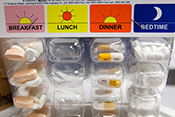 Photo by Scott R. Galvin
Photo by Scott R. Galvin
(11/09/2017)
Psychiatric patients are more likely to take their medications correctly when it is given in blister packaging, found a study by the Rocky Mountain Mental Illness Research, Education and Clinical Center at the Denver VA Medical Center. Blister packaging consists of individual doses of pills in plastic bubbles with a foil backing, similar to how cold medication is often packaged. Study participants who received blister packaging were 59 percent more likely to follow their medication instructions than those who received medication in standard pill bottles. The results suggest that using this kind of packaging could improve treatment outcomes for psychiatric patients, say the researchers. (Journal of Psychiatric Practice, September 2017)
Patients often overestimate activity level
 Photo: ©iStock/sdominick
Photo: ©iStock/sdominick
(11/09/2017)
Patients and their surrogates often largely overestimate activity level, according to a collaboration between VA and Australian researchers. The researchers asked patients admitted to the ICU or their surrogates to estimate how many steps they took each day prior to hospitalization. The researchers then used smartphone GPS and pedometer data to get objective numbers. Patients and surrogates overestimated the numbers of steps per day by more than 3,000. The results suggest that clinicians should be cautious when using subjective estimates of activity level, especially if they are using that information to plan treatment, say the researchers. (Critical Care Medicine, October 2017)
Transgender health care in VA and the military
 Photo courtesy of Bedford VAMC
Photo courtesy of Bedford VAMC
(11/02/2017)
Researchers from several VA health care systems reviewed the literature on the care received by transgender people in VA and the U.S. military. They found that more than 5,000 transgender Veterans receive care in VA. Little data exists on care of transgender active-duty service members, mostly because transgender individuals were not permitted to serve openly until June 2016. Transgender Veterans experience higher rates of both mental and physical health conditions than non-transgender Veterans, according to the review. VA and military facilities have increased access to health care for transgender Veterans and service members in recent years. However, the researchers caution that more studies about improving health outcomes for this group are needed. (Current Sexual Health Reports, September 2017) [use image from Currents story on 9-6-17: Study: Majority of transgender Veterans satisfied with VA care]
Small, dense cholesterol particles linked to lower death risk
 Photo: ©iStock/designer491
Photo: ©iStock/designer491
(11/02/2017)
Patients with a pattern of small, dense LDL cholesterol particles had a lower risk of death after a heart attack than those with large, buoyant particles, found a study including a researcher from the Michael E. DeBakey VA Medical Center. Doctors have long known that higher LDL cholesterol levels can put people at risk for cardiovascular problems such as heart attack. In the new study, researchers found a 32 percent lower risk of death after a heart attack for patients with small, dense LDL particles in their blood stream, compared with patients with larger, buoyant particles. Despite the interesting findings, the researchers caution that more research is needed to figure out what causes this association. In the meantime, treatment after heart attack should continue to focus on lowering overall LDL cholesterol levels, they say. (Journal of Clinical Lipidology, Oct. 3, 2017)
Public attitudes on homelessness more compassionate than in the past
 Photo for illustrative purposes only. ©iStock/Photawa
Photo for illustrative purposes only. ©iStock/Photawa
(11/02/2017)
Public attitudes and perceptions about homelessness have changed in recent years, according to a recent VA study. Researchers surveyed 541 adults in November 2016 and compared the results to surveys conducted in 1990. The more recent survey showed more compassion and liberal attitudes about homelessness than the older surveys. The largest changes were related to increased support for homeless individuals using public spaces for sleeping and panhandling. Survey participants overestimated the proportion of homeless people who are young and minorities. They underestimated the proportion who have mental or substance use problems. The increase public support for homeless individuals shown here presents new opportunities to address homelessness through legislation and public health initiatives, say the researchers. (American Journal of Community Psychology, Oct. 13, 2017)
Antibiotic group shown to be effective against drug-resistant bacteria
 Photo: ©iStock/adventtr
Photo: ©iStock/adventtr
(10/26/2017)
A VA St. Louis Health Care System team showed that a new group of antibiotics are effective against drug-resistant bacteria. The researchers tested 254 related antibiotic compounds, known as the nucleotidyltransferase superfamily, against a variety of common bacteria. They found multiple compounds to be effective at preventing the growth of drug-resistant bacteria, such as E. coli and Staphylococcus. The results show that this antibiotic group stops bacteria growth in a different way than existing antibiotics, according to the researchers. (ASM/ESCMID Conference on Drug Development to Meet the Challenge of Antimicrobial Resistance, Sept. 6, 2017)
Longevity gap for people with schizophrenia
 Photo: ©iStock/Mark_Hubsky
Photo: ©iStock/Mark_Hubsky
(10/26/2017)
Mortality rates for people with schizophrenia have not gone down in recent years despite a decline in mortality rates in the general population, found a review by VA San Diego Healthcare System and University of California San Diego researchers. People with schizophrenia tend to have a 15–20 year shorter life expectancy than those without. Average life expectancy in developed countries, including the United States, increased from 72 years in the 1970s to 82 years in 2010. But this increase was not seen in the schizophrenic population. The study found that the gap in the mortality rate between people with schizophrenia and the general population increased by 37 percent from pre-1970s reports to post-1970s reports. The researchers suggest that this gap is caused by unmet health care needs stemming from the social stigma of mental illness, along with a lack of infrastructure and social support that leads to problems such as homelessness and incarceration for people with schizophrenia. The results suggest that major changes in mental health stigma, health care, and economic policy are urgently needed to improve medical care for people with schizophrenia, they say. (Schizophrenia Research, Sept. 27, 2017)
Family violence linked to higher risk of suicide attempt
 Photo: ©iStock/lolostock
Photo: ©iStock/lolostock
(10/26/2017)
Suicide attempts were higher in soldiers with a history of family violence, found an analysis of data from the Army STARRS study. According to the study, odds of a suicide attempt increased with the number of family violence events experienced. Soldiers who had experienced family violence in the past month were five times as likely to attempt suicide as those with no family violence history. Odds of a suicide attempt were higher for both violence perpetrators and victims. The results show that it is important to consider family violence when looking at the risk of suicide among soldiers, say the researchers. (Psychiatry Research, Sept. 20, 2017)
Mental disorders linked to suicidal behavior
 Photo for illustrative purposes only. ©iStock/Marjan_Apostolovic
Photo for illustrative purposes only. ©iStock/Marjan_Apostolovic
(10/26/2017)
A study of surveys given as part of the large Army STARRS study reinforced the idea that mental disorders are significantly associated with suicidal behavior. The researchers combined data from the All-Army Survey with two other Army STARRS study to get a large sample that included deployed soldiers and Army National Guard and Reserve troops. Previous studies on this topic using the All-Army Survey only looked at about 5,000 soldiers. This study used data from nearly 30,000 soldiers. Results revealed that all self-reported disorders tested for were associated with suicidal thoughts in both men and women. The surveys screened for major depressive episode, bipolar disorder, panic disorder, generalized anxiety disorder, PTSD, ADHD, intermittent explosive disorder, and substance use disorder. Disorders characterized by agitation and impulsiveness predicted a transition from suicidal thoughts to attempts in men. For both men and women, being in the regular Army (rather than National Guard or Army Reserve) was associated with greater risk. Being deployed and having a junior rank were also linked to higher risk of suicide attempts for men. (Suicide and Life Threatening Behavior, Sept. 19, 2017)
Lower-extremity neuroprostheses continue to function in the long term
 Photo: ©iStock/kali9
Photo: ©iStock/kali9
(10/04/2017)
Neuroprostheses to allow patients with spinal cord injuries to stand were still functioning and useful several years after being implanted, found a Louis Stokes Cleveland VA Medical Center research team. The researchers followed up with 22 patients with lower-extremity neuroprostheses an average of six years after they had the devices implanted. The neuroprostheses cause otherwise paralyzed muscles to contract by providing electrical impulses through implanted electrodes, allowing patients to stand. Being able to stand has many health benefits, such as improved circulation, bowel and bladder function, and digestion. Sixty percent of the patients still used their neuroprostheses for exercise and other activities for more than 10 minutes per day. First-generation implants still functioned correctly in 90 percent of patients with those devices. Second-generation implants (with slightly improved technology) still functioned in 98 percent of cases. Overall, 94 percent of the patients were satisfied with the prostheses. The findings suggest that implanted lower-extremity neuroprostheses can provide lasting benefits for patients, say the researchers. (Archives of Physical Medicine and Rehabilitation, Sept. 9, 2017)
Meditation could help with cardiovascular risk reduction
 Photo: ©iStock/PeopleImages
Photo: ©iStock/PeopleImages
(10/04/2017)
Meditation could reduce the risk of cardiovascular disease, according to a scientific statement from the American Heart Association. The AHA council, which included several VA researchers, reviewed more than 400 scientific articles on meditation. They found that meditation can have long-standing effects on the brain, which can in turn lower cardiovascular risk. Meditation may be able to help with cardiovascular risk factors such as stress, smoking, high blood pressure, and various metabolic functions. Meditation has low costs and low risks. This means it could be a useful addition to treatments for cardiovascular problems, say the researchers. However, they note that the quality of studies was only modest. More research is needed on meditation and cardiovascular risk, they say. (Journal of the American Heart Association, Sept. 28, 2017)
To find out more about VA research on mindfulness-based stress reduction (MBSR) read "Using mindfulness to combat stress-related heart disease in women Veterans."
Listen to Dr. Karen Saban, a VA researcher at Edward Hines, Jr. VA Hospital, as she discusses her work with MBSR.
Yoga could improve adverse effects of menopause

(10/04/2017)
Yoga may reduce vasomotor and psychological symptoms in women going through menopause, according to a Durham VA Medical Center and Duke University review. Vasomotor symptoms (e.g., hot flashes) are related to blood vessel dilation. Searching the available literature, the researchers found one review and three randomized controlled trials on yoga for treating menopause symptoms. The findings suggest practicing yoga reduced vasomotor symptoms and psychological symptoms such as anxiety and mood disturbances, say the researchers. However, they caution that more research with larger numbers and comparison groups is needed. (Complementary Therapies in Medicine, October 2017)
Three gene variants linked to Alzheimer's disease
 Photo: ©iStock/malgorzata tatarynowicz
Photo: ©iStock/malgorzata tatarynowicz
(09/27/2017)
A large, international research group including several VA researchers identified three rare gene variants associated with late-onset Alzheimer's disease. The researchers looked at the genetic maps of more than 85,000 subjects. They found coding variants of three genes (PLCG2, ABI3, and TREM2) to be associated with Alzheimer's disease. All three genes are commonly expressed in microglia cells—a common cell type in the brain and spinal cord involved in the central nervous system's immune defense. The results add evidence that the body's immune response process is directly related to Alzheimer's disease, according to the researchers. (Nature Genetics, September 2017)
CPAP use may improve sexual quality of life in women
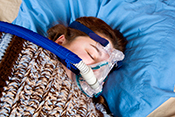 Photo: ©iStock/ viola83181
Photo: ©iStock/ viola83181
(09/27/2017)
Use of continuous positive airway pressure (CPAP) may improve sexual quality of life in women, found a VA Puget Sound Health Care System study. Sleep apnea often reduces sexual quality of life through reduced libido, reduced intimacy, erectile dysfunction, and other mechanisms. The researchers tested patients with newly diagnosed sleep apnea after 12 months of CPAP use, compared with controls who did not use CPAP. Women CPAP users showed improvement in sexual quality of life, but men did not. (American Academy of Otolaryngology–Head and Neck Surgery Annual Meeting, Sept. 12, 2017)
Sleep intervention shown effective for older adults
 Photo: ©iStock/bowdenimages
Photo: ©iStock/bowdenimages
(09/27/2017)
VA Greater Los Angeles Healthcare System and Durham VA Medical Center researchers found that a sleep intervention program improved sleep for older adults in an adult day health care program. Patients in the experiment group received four weekly sessions of the program, which included sleep compression (limiting time in bed to avoid lying awake), modified stimulus control (avoiding activities other than sleep, such as watching television, in bed), and sleep hygiene (e.g., limiting daytime naps and caffeine). Patients in the program improved on sleep efficiency, number of nighttime awakenings, and minutes awake at night, compared with a usual-care group. Some benefit remained four months after the program. The results suggest that a short behavioral sleep intervention could benefit older patients in day health care programs. (Sleep, Aug. 1, 2017)
Hip or knee replacement usually not followed by boost in physical activity
 Photo: ©iStock/eyenigelen
Photo: ©iStock/eyenigelen
(09/25/2017)
Most patients do not increase their physical activity levels after total hip or knee replacement, according to a literature review by a team that included a Durham VA Medical Center researcher. Patients often have large reductions in pain and increased physical function and quality of life after total hip or knee replacement. However, the researchers found no corresponding increases in physical activity after six months, and only modest increases after 12 months. The lack of physical activity may be behavioral, since a sedentary lifestyle is hard to change, say the researchers. (Arthritis Care & Research, Sept. 12, 2017)
More diabetic Medicare patients overtreated than undertreated
 Photo: ©iStock/andesr
Photo: ©iStock/andesr
(09/25/2017)
More diabetic Medicare patients overtreated than undertreated Medicare patients with diabetes are more likely to be overtreated than undertreated, found a Centers for Medicare and Medicaid Services and VA Health Services Research and Development Service study. The researchers studied data from more than 78,000 Medicare recipients with diabetes. They found that 11 percent were potentially overtreated for their diabetes. About 7 percent were potentially undertreated. Patients over 75 and those enrolled in Medicaid were more likely to be overtreated. Therapy was de-intensified for only 14 percent of overtreated diabetics. The results suggest that greater personalization of treatment would benefit patients with diabetes, say the researchers. (Journal of General Internal Medicine, Sept. 13, 2017)
Antiviral drugs could increase kidney transplant options for patients with hepatitis C
 Photo: ©iStock/pixologicstudio
Photo: ©iStock/pixologicstudio
(09/25/2017)
Kidney transplants from deceased donors positive for hepatitis C antibodies could shorten transplant wait times for patients with hepatitis C when antiviral drugs are administered early, according to a Miami VA Healthcare System and University of Miami study. Patients with hepatitis C often need kidney transplants because the virus can cause renal disease. The researchers started 25 patients on direct-acting antiviral agents soon after they received kidney transplants from antibody-positive donors. The hepatitis C virus was not detected in the blood of 24 of the patients after 12 weeks. Transplants from donors with hepatitis C antibodies are not generally accepted because of risk of spreading the virus. But with new drugs that act directly on the virus, kidney transplants from these donors could decrease organ wait times and increase survival for patients with hepatitis C, say the researchers. (Transplant International, September 2017)
Study probes impact of stress on Coast Guardsmen's mental health
 Coast Guard photo by Petty Officer 3rd Class Eric D. Woodall
Coast Guard photo by Petty Officer 3rd Class Eric D. Woodall
(09/11/2017)
Researchers with VA and other institutions assessed 241 active-duty Coast Guard members and found rates of posttraumatic stress disorder and depression comparable to those of the Army and other military services after deployment. The Coast Guardsmen in the study, a fifth of them female, were all serving at boat stations, which carry out operations such as search and rescue. The overall rate of PTSD was 15 percent. Nonmilitary trauma was twice as common as military trauma among those with the disorder. The overall rate of depression was 8 percent, with women at higher risk. Based on psychological tests, the researchers found that certain types of personalities predicted either PTSD or depression. They note that Coast Guard personnel have been understudied, relative to other military branches. The new study is the largest to date to look at Coast Guardsmen's stress-related mental health symptoms. The researchers say the results are "provocative," raising questions for future studies. They add that "accounting for personality could provide opportunities for early intervention." (Frontiers in Psychology, Sept. 14, 2017)
Older women especially susceptible to blood pressure spikes during exercise
 Photo for illustrative purposes only. ©iStock/shironosov
Photo for illustrative purposes only. ©iStock/shironosov
(09/11/2017)
When researchers conducted exercise tests with four groups of volunteers—younger men and women, average age 23; and older men and women, average age 73—they saw exaggerated increases in systolic blood pressure (the upper number in a blood pressure reading) only in the older women. On average, the systolic blood pressure of the older women rose 47 points, whereas in older men the increase was only 27 points. Among younger men and women, the increases were 25 and 22 points, respectively. The older women showed unique responses on other measures of blood pressure, as well. While regular exercise helps lower blood pressure in the long run, blood pressure does rise during an exercise session, as the heart works harder. But increases that run too high could be a sign of impending cardiovascular disease. The researchers, from VA and the University of Utah, say the work adds to the understanding of the impact of age and sex on blood pressure. The work was funded by VA and the American Heart Association. (The FASEB Journal , April 2017)
Expanding VA home-based primary care to American Indian communities
 Photo for illustrative purposes only. ©iStock
Photo for illustrative purposes only. ©iStock
(09/11/2017)
VA's home-based primary care (HBPC) enables aging, infirm Veterans to stay in their homes, rather than move to long-term care facilities. But the model was developed in urban settings, and extending it to rural areas involves unique challenges. Researchers studied the roll-out of HBPC at 14 VA medical centers that reached out to Native American reservations in their regions. A dozen succeeded in implementing a HBPC program. The study found variations across the sites. Typically, however, there were "key individuals who were able to build trust and faith in VA healthcare among American Indian communities." All the programs required adaptations to overcome barriers associated with rural areas. Examples were care providers needing to travel long distances to reach Veterans' homes, and delays in hiring additional clinicians to ease heavy caseloads. The study team urges more opportunities for federal health care organizations—including VA—and nonfederal health agencies to network and share what they have learned about providing care to American Indians. (Implementation Science, Sept. 2, 2017)
Behavioral health needs spur enrollment in VA care for Army Guard, Reserve members
 Photo for illustrative purposes only. ©iStock/Marjan_Apostolovic
Photo for illustrative purposes only. ©iStock/Marjan_Apostolovic
(09/06/2017)
Army National Guard and Reserve members with greater behavioral health needs are more likely than those with fewer needs to link to the Veterans Health Administration after deployment, found a study by VA Salt Lake City and VA Palo Alto Health Care Systems researchers and their colleagues. Service members are screened for alcohol misuse, depression, and PTSD three to six months after returning from deployment. Those who screened positive for PTSD and depression were more likely to enroll in VA health care, and 54 to 84 percent received VA treatment once diagnosed. Men who screened positive for alcohol misuse were more likely to enroll in VA health care, but women were not. Relatively few men and women diagnosed with alcohol use disorder received treatment. While the findings about VA health care engagement are encouraging, more outreach is needed toward those with alcohol use disorder, especially women Veterans, say the researchers. (Psychiatric Services, Aug. 1, 2017)
Arthritis prevalent in Iraq, Afghanistan Veterans
 Photo: U.S. Army
Photo: U.S. Army
(09/06/2017)
Arthritis is prevalent among Veterans of Iraq and Afghanistan, and is associated with other health problems, according to a study of VA patient data. The researchers found that nearly 12 percent of Iraq and Afghanistan Veterans had arthritis, higher than the rate found in the civilian population. Those with arthritis had greater frequencies of diabetes, high lipid levels, high blood pressure, and obesity than those without arthritis. Patients with arthritis also had higher level of prescription opioid and anti-inflammatory use. The results suggest that the need for arthritis care will increase as VA assumes the health care of Veterans from these conflicts, say the researchers. (Journal of Orthopaedic Research, March 2017)
Protein treatment may protect against TBI damage, finds mice study
 Photo: ©iStock/defun
Photo: ©iStock/defun
(09/06/2017)
Treatment with a neuronal protein could protect the brain from damage from traumatic brain injury, found a study by VA Pittsburgh Healthcare System researchers. The researchers combined UCH-L1, a protein expressed in high levels in neurons, with other proteins to increase its ability to affect neurons. They then injected this protein into mice with TBI. The mice treated with the protein showed better brain function than controls, and neuron cell survival was also improved. The results suggest that treatment with this protein combination has the potential to improve cognitive function when given weeks or months after a TBI, say the researchers. (PLoS One, May 24, 2017)
Identifying health disparities in Veterans
 For illustrative purposes only. Photo: ©iStock/digitalskillet
For illustrative purposes only. Photo: ©iStock/digitalskillet
(08/30/2017)
A recent VA Evidence-based Synthesis Program literature review created a map of the evidence to identify knowledge gaps on health disparities within VA. Of the 351 studies included in the review, more than half focused on health care disparities based on race or ethnicity. The second and third most common topics were disparities based on sex and mental health condition, respectively. Very few studies focused on disparities related to sexual or gender identity or homelessness. Race/ethnicity studies more often looked at quality of care, while studies on other Veteran populations tended to focus on health care utilization. Within the studies on race/ethnicity, the majority focused on health care usage by black Veterans, with far fewer studies examining other minorities. The authors note that findings from the various studies varied widely by population, and by the particular outcome studied. Understanding where data is lacking can help VA further address health care disparities in Veterans, say the researchers. (Medical Care, September 2017)
Palliative care nurses improve care planning in patients with advanced cancer
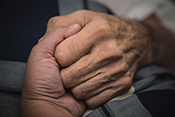 Photo: ©iStock/LPETTET
Photo: ©iStock/LPETTET
(08/30/2017)
An embedded palliative care nurse can improve care planning for patients with advanced cancer, found a Greater Los Angeles VA Healthcare System study. Palliative care refers to care to improve quality of life by focusing on relieving symptoms and stress, rather than treating a disease directly. Patients in oncology clinics with a palliative care nurse practitioner were more likely to have advance care planning than those in clinics without an embedded palliative care nurse. Hospice referral was also significantly higher in the clinics with a palliative care nurse. This model could be a good way to support the treatment of patients with advanced cancer, say the researchers. (Journal of Oncology Practice, Aug. 16, 2017)
Taking multiple medications associated with increased risk of death
 Photo: ©iStock/WanjaJacob
Photo: ©iStock/WanjaJacob
(08/30/2017)
Polypharmacy, or the use of multiple medications at the same time, is associated with increased risk of death, found an Iowa City VA Health Care System literature review. Researchers reviewed 47 studies from the available literature. They found that the risk of death increased with the number of medications being taken. The researchers note that it is unclear whether polypharmacy is responsible for the increased risk of death, or whether the association is driven mainly by the fact that people in worse health — and therefore at higher risk of death — tend to be on more medications. In either case, the researchers urge prescribers to pay close attention to patients' overall medication burden when prescribing new drugs. (Journal of the American Pharmacists Association, Aug. 4, 2017)
Electrical brain stimulation could reduce osteoarthritis knee pain
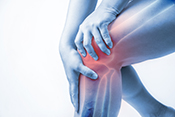 Photo: ©iStock/meen_na
Photo: ©iStock/meen_na
(08/23/2017)
Directly stimulating the brain with electrical current may reduce pain in patients with knee osteoarthritis, according to a study including a researcher with the South Central VA Health Care Network. Researchers assigned 40 participants either to the experimental group receiving noninvasive electrical stimulation or to a control group. They applied an electrical current using sponge electrodes placed on the head of experimental-group participants, once a day for five consecutive days. Participants who received electrical stimulation indicated significantly less knee pain than the control group, which lasted up to three weeks, although pain reduction was not seen on every pain assessment used. The researchers explain that electrical stimulation might reduce pain by modulating activity in brain areas involved in pain processing. The results suggest that electrical stimulation could be an alternative to medication for reducing osteoarthritis pain, they say. (Brain Stimulation, May 19, 2017)
BMI is a risk factor for colorectal cancer death
 Photo: ©iStock/Raycat
Photo: ©iStock/Raycat
(08/23/2017)
A Minneapolis VA Health Care System and University of Minnesota study confirmed that higher body mass index is linked to greater risk of death from colorectal cancer. Researchers followed more than 46,000 participants for 30 years. Participants who were overweight or obese based on BMI scores had a marginally increased risk of death from colorectal cancer. Although lifestyle risk factors such as BMI have been linked with colorectal cancer death, results on this link have been inconsistent. This is the first study to show a direct association between BMI and long-term colorectal cancer mortality, say the researchers. (Digestive Diseases and Sciences, July 21, 217)
Repeated upper endoscopy overused in VHA
 Photo: ©iStock/zilli
Photo: ©iStock/zilli
(08/23/2017)
Repeated upper endoscopy is overused in the Veterans Health Administration, found a study by researchers from several VA health care systems. Upper endoscopy is a procedure in which a camera is used to look at the esophagus, stomach, and beginning of the small intestine. Although common, upper endoscopy is invasive and costly. Of the 85,690 cases of VHA patients receiving repeated upper endoscopy in a five-year period, 50 percent were deemed to be possible or probable overuse. Although overuse of this procedure is common within VHA, the authors note that it is less likely to be overused in VHA than in health systems that serve Medicare beneficiaries. Efforts are needed to better understand why this procedure is overused and to promote appropriate use, say the researchers. (American Journal of Gastroenterology, July 11, 2017)
Reducing opioid dose in long-term therapy may be beneficial, but evidence is limited
 Photo: ©iStock/Hailshadow
Photo: ©iStock/Hailshadow
(08/15/2017)
A literature review by researchers from several VA health care systems suggested that reducing opioid dose may improve pain, function, and quality of life for patients on long-term opioid therapy. However, most of the studies found were of poor quality. This shows that there is inadequate evidence on the risks of opioid tapering, say the researchers. They suggest that clinicians should discuss the potential benefits of opioid tapering with patients, in addition to discussing the goals and risks of opioid therapy. More studies are needed on the effects of reducing opioid dosage, according to the researchers. (Annals of Internal Medicine, Aug. 1, 2017)
Lower natriuretic peptide levels found in racial groups more prone to hypertension and diabetes
 Photo: ©iStock/solidcolours
Photo: ©iStock/solidcolours
(08/15/2017)
Hormone concentrations linked to several diseases differ based on genetic heredity, found a study including a researcher from the VA San Diego Healthcare System. Lower levels of hormones called natriuretic peptides are associated with increased risk of hypertension and diabetes. Studying over 5,000 people, the researchers found that natriuretic peptide levels were 44 percent lower in black participants and 46 percent lower in participants of Chinese descent, compared with white participants. Natriuretic peptide levels for Hispanic participants fell in between the white participant group and the other two groups. Hispanic participants with higher genetic European ancestry had higher levels, while those with higher African ancestry had lower levels. Black participants with higher genetic European ancestry also had higher natriuretic peptide levels. The results could help explain why hypertension and diabetes are more common in black, Chinese, and Hispanic individuals than in white individuals, say the researchers. (American Journal of Cardiology, June 30, 2017)
Patients comfortable receiving text messages about HIV testing
 Photo: ©iStock/ballero
Photo: ©iStock/ballero
(08/15/2017)
Text messages could be used to prompt patients to ask their doctors about HIV testing, according to a study by researchers from the Michael E. DeBakey VA Medical Center and their associates. Researchers surveyed 265 patients in a health center waiting room. They found that that 55 percent of patients had never talked to their doctors about HIV testing. Of those, 74 percent said that they would be comfortable asking their doctors for the HIV test. A majority of patients surveyed said they would be comfortable receiving text messages prompting them to talk to their doctors about HIV testing. Text messages could be a useful tool to encourage communication between patients and doctors about HIV testing, say the researchers. (Journal of the Association of Nurses in AIDS Care, July 11, 2017)
Suicide attempt risk increases in Army units with a history of suicide attempts
 Army photo by Staff Sgt. Jennifer Bunn. For illustrative purposes only.
Army photo by Staff Sgt. Jennifer Bunn. For illustrative purposes only.
(08/10/2017)
The risk of suicide attempt among soldiers increased with the number of other suicide attempts made within the unit within the past year, found the Army Study to Assess Risk and Resilience in Servicemembers. The results show that suicide attempts by members of one's unit increase the risk of suicide attempt for a soldier. The odds of a suicide attempt were more than double for a soldier in a unit with five or more attempts in the past year, compared to one in a unit with no attempts within the past year. Suicide attempts within a unit were associated with risk of future suicide attempts regardless of unit size or job within the military. The study suggests preventive efforts should target those who have been exposed to suicide attempts by members of their units, in addition to those who know people who died by suicide, say the researchers. (JAMA Psychiatry, July 26, 2017)
Heart failure may increase risk of chronic kidney disease
 Photo for illustrative purposes only. ©iStock/digitalskillet
Photo for illustrative purposes only. ©iStock/digitalskillet
(08/10/2017)
Heart failure may be associated with a higher risk of chronic kidney disease, according to a Memphis VA Medical Center study. Examining data from more than 3 million Veterans, the researchers found that those with heart failure had a much higher rate of chronic kidney disease than those without. Of patients with heart failure, 22 percent had a rapid decline in kidney function over a two-year period, while only 8.5 percent of patients without heart failure had such a decline. Heart failure has not previously been linked to poor kidney outcomes in patients with normal kidney function. (Circulation: Heart Failure , August 2017)
Pre-surgery chemotherapy may improve survival in pancreatic cancer
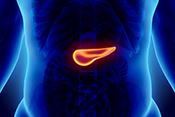 Photo: ©iStock/yodiyim
Photo: ©iStock/yodiyim
(07/31/2017)
Chemotherapy before surgery could lower the risk of death for people with pancreatic cancer, according to Michael E. DeBakey VA Medical Center and Baylor College of Medicine researchers. By studying data from nearly 20,000 patients, the researchers found that those who underwent chemotherapy before surgery survived longer than those who had only surgery to remove the pancreas, or those who received chemotherapy after surgery. The study is the first to convincingly demonstrate a clear benefit of pre-surgery chemotherapy. (Surgery, June 27, 2017)
Electronic health record alerts linked to provider burnout
 Photo: ©iStock/monkeybusinessimages
Photo: ©iStock/monkeybusinessimages
(07/31/2017)
Increased notifications from electronic health records can contribute to provider burnout, found a Michael E. DeBakey VA Medical Center study. Physicians and other providers often do not have protected time devoted to responding to these messages. The notifications could include, for example, test results, referral responses, medication refill requests, and messages from colleagues. In a survey of care providers, the researchers found that those who felt their workloads had increased because of electronic health record notifications were more likely to experience physical fatigue and cognitive weariness, two signs of burnout. They suggest that training, protected time for alert management, and improvements to electronic health record systems could help providers avoid burnout. (Applied Clinical Informatics, July 5, 2017)
Biopsy pattern can predict lethality of prostate cancer
 Photo: ©iStock/OGphoto
Photo: ©iStock/OGphoto
(07/31/2017)
A specific pattern on a prostate biopsy can predict the risk of cancer metastasis (spread) and mortality, according to a study of VA medical center data. The Gleason score grades tissue samples from 1 (normal prostate tissue) to 5 (very abnormal cancer growth patterns), and combines the two highest grades from a number of samples for a composite score for the biopsy. Two samples graded 3 and 5 would yield a Gleason score of 8, as would two samples both graded 4. The researchers found that patients with a grade of 5 on any tissue sample had a greater risk of metastasis and death than those with a Gleason 4+4 pattern, regardless of the grades of other samples in the biopsy. The results suggest that the presence of a sample graded as 5 should be viewed as an indicator of a uniquely aggressive cancer, regardless of the composite score, say the researchers. (Journal of Urology, July 11, 2017)
TBI and psychiatric conditions may lead to greater suicide risk
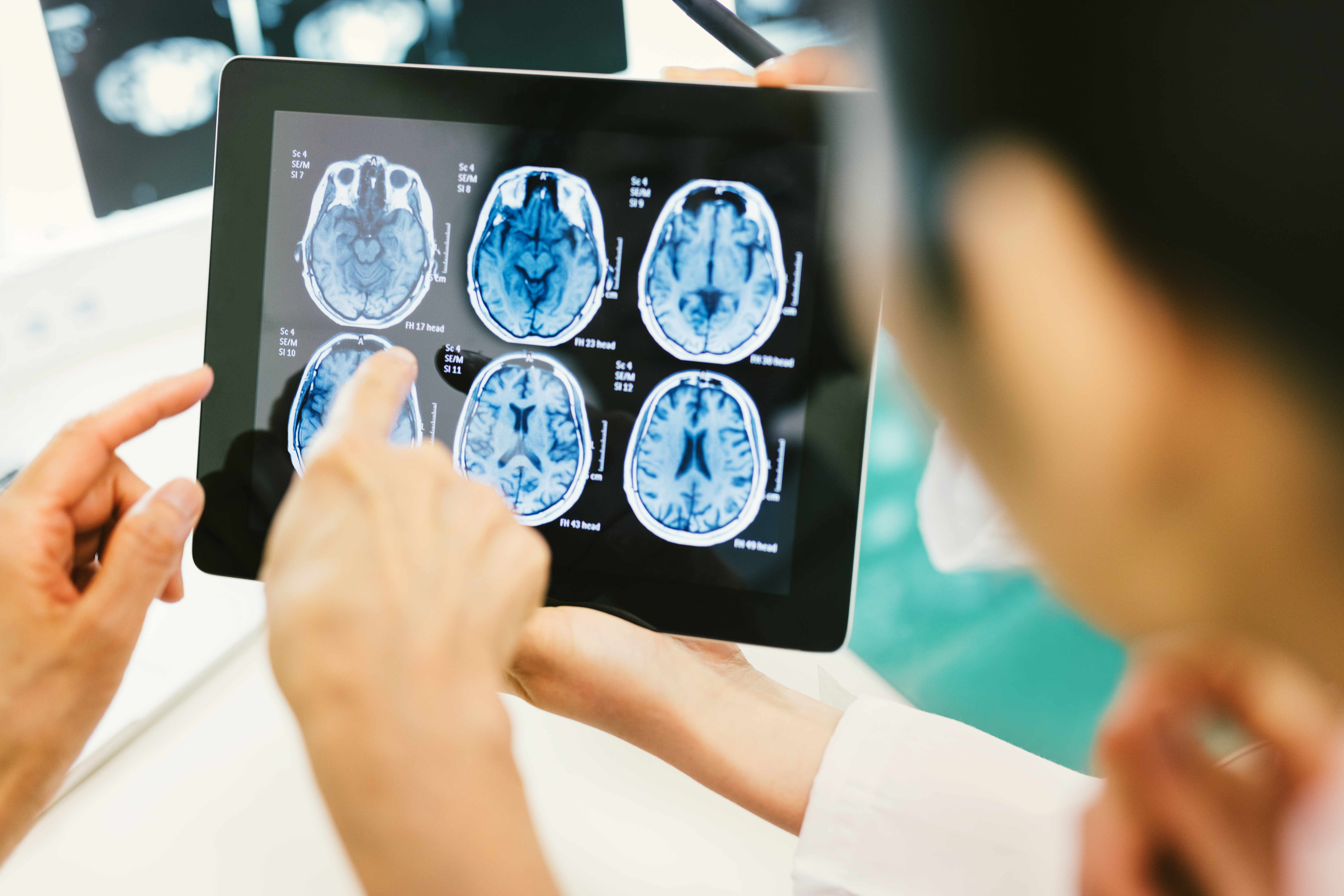 Photo: ©iStock/Nikada
Photo: ©iStock/Nikada
(07/20/2017)
Psychiatric conditions may add to the relationship between traumatic brain injury and suicide, according to a VA Boston Healthcare System study. The researchers looked at data for more than 270,000 Veterans deployed to Iraq and Afghanistan. They found that Veterans with a TBI had an increased risk of a suicide attempt. Further, 83 percent of those with TBI who attempted suicide also had a psychiatric condition. Conditions examined were PTSD, depression, anxiety, and substance use. While these conditions on their own could increase suicide risk, they may help explain the correlation between TBI and suicide. Psychiatric conditions are more common in people with TBI. The results suggest that Veterans with these conditions should be monitored closely for suicidal behavior, say the researchers. (American Journal of Epidemiology, May 3, 2017)
Parents' PTSD linked to children's psychosocial problems
 Photo for illustrative purposes only. ©iStock/Squaredpixels
Photo for illustrative purposes only. ©iStock/Squaredpixels
(07/20/2017)
PTSD symptoms in parents are related to lower psychosocial functioning in their children, found a study by Central Texas Veterans Health Care System researcher and colleagues. Researchers surveyed more than 100 Veterans with children between ages 3 and 18. Veterans with PTSD reported lower levels of parenting satisfaction, and children of Veterans with PTSD had higher levels of psychosocial problems, such as trouble sleeping and behavioral problems. Positive parenting, as opposed to parenting based on punishment, was linked to higher parent satisfaction and child psychosocial problems. But parents with PTSD were less likely to practice positive parenting. The results suggest that offering resources to improve positive parenting and to better address the influence of PTSD on the parent-child relationship would be helpful, say the researchers. (Military Behavioral Health, May 23, 2017)
Study suggests steps to curb anesthesia-related adverse events
 Photo: ©iStock/knape
Photo: ©iStock/knape
(07/20/2017)
A study by VA's National Center of Patient Safety identified 36 adverse events involving anesthesia care in VA during a three-year period between 2012 and 2015. The most common event was medication errors. The authors say increased standardization could further decrease adverse events. They recommend expanding efforts to incorporate bar codes, checklists, and simulations of best practices. They also suggest storing similar-looking or -sounding medications separately, and limiting the stock of high-risk medications. (Anesthesia and Analgesia , July 1, 2017)
Emotional awareness and expression training reduces IBS symptoms
 Photo: ©iStock/Steve Debenport
Photo: ©iStock/Steve Debenport
(07/13/2017)
Emotional awareness and expression training (EAET) can reduce irritable bowel syndrome symptoms, found a study headed by a Michael E. DeBakey VA Medical Center researcher. Participants took part in three weeks of either EAET or relaxation training. EAET teaches patients to recognize emotions related to stressful situations and to express those emotions directly. Participants receiving EAET had significant improvements in IBS symptoms both after training and 10 weeks later, compared to both the relaxation training group and controls. However, EAET did not improve psychological symptoms, such as depression and anxiety, while relaxation therapy did. The results show that EAET may be an effective additional treatment for IBS, say the researchers. (Neurogastroenterology and Motility, June 22, 2017)
Treating trauma-related muscle loss with stem cells
 Photo: ©iStock/ChrisChrisW
Photo: ©iStock/ChrisChrisW
(07/13/2017)
Researchers with the VA Palo Alto Health Care System were able to treat volumetric muscle loss in mice using muscle stem cells. Volumetric muscle loss is the loss of skeletal muscle from trauma or surgery. By using a 3D muscle tissue scaffold to give the stem cells structure, the researchers were able to stimulate muscle regeneration. They also found that physical therapy after the muscle construct was implanted improved function of the muscles. The results show that cell-based therapies may be an effective way to engineer tissue within animals and people, according to the researchers. (Nature Communications, June 20, 2017)
'Anxiety sensitivity' seen as possible link between PTSD, suicide risk
 Photo for illustrative purposes only. ©iStock/Marjan_Apostolovic
Photo for illustrative purposes only. ©iStock/Marjan_Apostolovic
(07/13/2017)
Anxiety sensitivity may help explain the connection between PTSD and suicide, according to a Southeast Louisiana Veterans Health Care System study. Anxiety sensitivity is an exaggerated fear of experiencing symptoms related to anxiety, separate from the actual symptoms. Studying 60 male Veterans, the researchers found a significant association between PTSD symptom severity and greater frequency of suicidal thoughts, plans, and impulses. The results further showed that cognitive anxiety sensitivity concerns may be responsible for this link. The results suggest that when people with PTSD worry that their personalities have changed or that they are not thinking normally, this may underlie an increased risk of suicidal behavior. (Journal of Affective Disorders, June 19, 2017)
Yelp ratings give edge to VA hospitals, study finds
 Photo: ©iStock/Tinpixels
Photo: ©iStock/Tinpixels
(07/13/2017)
VA hospitals scored slightly higher in Yelp ratings than their affiliated university hospitals, according to a study by a team with VA and Stanford University. Yelp is an online customer rating service that allows the public to post ratings and reviews of a wide range of products and services, including doctors and hospitals. The VA and Stanford researchers found that on average, the VA hospitals scored half a point better than their affiliates: 3.70 versus 3.19. On Yelp, five stars is the top rating, and one the lowest. Past research, including a 2016 study by VA researchers and others, has shown that online consumer reviews may be a good reflection of official hospital performance measures, such as those from the Centers for Medicare and Medicaid Services. The authors note that analyzing Yelp ratings can also complement other research that involves more extensive and rigorous comparisons of hospital quality. (American Journal of Managed Care , June 28, 2017)
Finding the best treatment for hoarding disorder
 Photo: ©iStock/trekandshoot
Photo: ©iStock/trekandshoot
(07/05/2017)
Older adults with hoarding disorder had greater improvement with cognitive rehabilitation and exposure/sorting therapy (CREST) than with geriatric case management, found a study by VA San Diego Healthcare System researchers. Hoarding disorder involves a psychological inability to throw possessions away, and can lead to health and safety risks. Participants received one of the treatments in 26 sessions over six months. About 2 to 6 percent of the general population shows hoarding symptoms, and the rate may be up to three times higher in older adults. Those in the CREST group had a 38 percent improvement in symptoms, while those in the case management group improved by 25 percent. CREST involves cognitive training and behavioral exposure to stressors. Case management involves more standard support and advocacy. Both groups continued to show improvement six months after treatment. The results show that CREST is an effective treatment for hoarding disorder, but that case management is also beneficial, say the researchers. (Journal of Clinical Psychiatry, May 23, 2017)
Little research available on probiotics, prebiotics for TBI, PTSD
 Photo: ©iStock/Barmaleeva
Photo: ©iStock/Barmaleeva
(07/05/2017)
A literature review by researchers at the VA Rocky Mountain Mental Illness Research Education and Clinical Center found little research on using prebiotics and probiotics to treat traumatic brain injury and PTSD. Recent findings have suggested that inflammation may be an underlying mechanism of both TBI and PTSD. If this is so, anti-inflammatory agents such as prebiotics or probiotics could present a new strategy to treat both conditions. Prebiotics are nondigestible food ingredients, such as fiber, that promote the growth of helpful bacteria in the body. Probiotics are living micro-organisms that provide health benefits when eaten, such as healthy bacteria found in yogurt. However, the researchers found only three studies addressing probiotics and TBI and one study on PTSD. They did not find any studies on probiotic treatments for TBI and PTSD together. More studies are needed to explore the possibilities of this type of treatment for the two conditions, say the researchers. (Brain, Behavior, and Immunity, June 9, 2017)
Intestinal fungi play role in alcoholic liver disease
 Photo: ©iStock/ksass
Photo: ©iStock/ksass
(06/14/2017)
Chronic alcohol consumption can lead to an imbalance of intestinal fungi, which in turn can lead to chronic liver disease, according to a study that included researchers from the VA San Diego Healthcare System. In mice, alcohol consumption increased the amount of fungus in the intestines, and also allowed the fungus to travel to other parts of the body. This increased the likelihood of liver disease. Treating the mice with antifungal drugs reduced the fungal overgrowth. The researchers also studied human patients, and found that those with alcohol dependence had lower fungal diversity and too much of one specific fungus. The people with this fungal imbalance had higher mortality rates. While several types of fungi naturally occur in the human intestine, they can cause harm if they spread to other parts of the body. The results show that alcohol affects levels of intestinal fungi and that controlling these fungi levels may help treat alcohol-related liver disease, say the researchers. (Journal of Clinical Investigation, May 22, 2017)
Childhood mistreatment linked to suicidal behavior
 Photo: ©princessdlaf
Photo: ©princessdlaf
(06/14/2017)
Childhood mistreatment is strongly associated with suicidal behavior among new soldiers, according to the Army Study to Assess Risk and Resilience in Servicemembers. The research team, led by a VA San Diego Healthcare System psychiatrist, looked at data for nearly 40,000 soldiers reporting for basic training. They found that those who reported childhood abuse or neglect had higher odds of suicidal thoughts or attempts over their lifetime. More frequent and pervasive mistreatment was more strongly associated with suicidal behavior. Focus on childhood abuse might lead to new ways to reduce suicide risk among new soldiers, say the researchers. (Journal of Clinical Psychiatry, May 23, 2017)
Mantram repetition program improves insomnia
 Photo by Kevin Walsh
Photo by Kevin Walsh
(06/08/2017)
The mantram repetition program (MRP) helped manage insomnia in patients with PTSD, in a VA San Diego Healthcare System study. The MRP is a "mind-body-spiritual intervention" that "teaches a portable set of cognitive-spiritual skills for symptom management," according to the research team. Patients who participated in the MRP over eight weeks had significant improvement in insomnia symptoms, compared with before they used the program. MRP participants also had moderate improvements in PTSD symptoms. The results suggest that mantram meditation could be useful to address both insomnia and PTSD symptoms, say the researchers. (Advances in Nursing Science, April 2017)
Homelessness among Veterans seen in specialty mental health care
 Photo: ©iStock/kevinruss
Photo: ©iStock/kevinruss
(06/08/2017)
Researchers from VA New England MIRECC and Yale School of Medicine studied the one-year incidence of homelessness among 300,000 Veterans seen in VA specialty mental health clinics. They found that 5.6 percent of Veterans referred to anxiety or PTSD clinics experienced homelessness. The homelessness rate for the entire Veteran population is about 3.7 percent over a five-year period. Veterans who were unmarried or diagnosed with a drug use disorder were more than twice as likely to become homeless. Black Veterans or those earning less than $25,000 a year were more than one and a half times as likely to become homeless. Monitoring early signs of housing vulnerability in this population is important to preventing homelessness, say the researchers. (Psychological Services, May 2017)
Testosterone replacement therapy could lower risk of atrial fibrillation
 Photo: ©iStock/sudok1
Photo: ©iStock/sudok1
(06/08/2017)
Returning testosterone to normal levels using testosterone replacement therapy (TRT) appears to significantly decrease the incidence of atrial fibrillation, according to a Kansas City VA Medical Center study. Atrial fibrillation is the most common irregular heart rhythm, and causes a high number of cardiac problems and deaths. Looking at the records of more than 70,000 Veterans, the researchers found that patients whose testosterone levels were normalized by TRT had significantly lower risk of atrial fibrillation than those who had TRT but not normalized testosterone levels or those who did not receive TRT. The results suggest that low testosterone levels are associated with higher risk of atrial fibrillation, say the researchers. (Journal of the American Heart Association, May 9, 2017)
ALS medicine may help fight drug-resistant cancer
 Photo: ©iStock/vitanovski
Photo: ©iStock/vitanovski
(06/08/2017)
The drug riluzole may be useful in treating some drug-resistant cancers, according to a study including researchers from the Miami VA Healthcare System. The researchers found that reactive oxygen species, chemical compounds containing oxygen, were present in cisplatin-resistant cells. Cisplatin is a common chemotherapy medication. They used riluzole, a drug used to treat ALS, to increase the amount of reactive oxygen species in these cancerous cells. Increasing the ROS levels selectively killed the cisplatin-resistant cells. The results show that riluzole could be repurposed as an antitumor agent, say the researchers. (Oncotarget, May 2, 2017)
'Psychological autopsy' explores suicide risk factors
 Photo: ©iStock/vadimguzhva
Photo: ©iStock/vadimguzhva
(06/08/2017)
A team including researchers with the VA San Diego Healthcare System performed "psychological autopsies" to look for differences between soldiers who died by suicide and matched control groups. Researchers talked to next of kin or Army supervisors of soldiers who had died by suicide. They compared responses to those of similar relations of two other groups of soldiers: one matched to the experimental group demographically, and the other comprised of soldiers who had suicidal thoughts but had not completed suicide. Almost 80 percent of soldiers who died by suicide had a prior mental disorder, and about half told someone that they were considering suicide. The risk factors for those who died by suicide were not different from the risk factors for those with suicidal thoughts, showing that more research is needed into what moves someone from thinking about suicide to completing the act. (Psychological Medicine, May 15, 2017)
Homeless Veterans have more negative primary care experiences than non-homeless Veterans
 Photo: ©iStock/Solange_Z
Photo: ©iStock/Solange_Z
(05/25/2017)
Homeless Veterans consistently reported more negative experiences with primary medical care than non-homeless Veterans, in a large national survey of Veterans with mental health and/or substance use disorders. Homeless Veterans reported more negative experiences with comprehensive care, communication, care coordination, medication decision-making, and self-management support than non-homeless Veterans. Negative experiences with primary care may make homeless Vets more likely to avoid mental health and substance use treatment, say the researchers. Homeless Vets may need more specific services aimed at encouraging them to continue with primary care services, they conclude. VA implemented patient-aligned care teams specifically tailored to homeless Veterans in 2012, but the effects of this program have not been studied thoroughly. (Psychological Services, May 2017)
New system implemented to advise patients of pregnancy risks from medications
 Photo: ©iStock/michaeljung
Photo: ©iStock/michaeljung
(05/25/2017)
The VA Pittsburgh Healthcare System recently began a program to guide primary care providers in discussing teratogenic medications. A teratogen is something that could cause pregnancy problems or complications. The new framework is called TARCC, which stands for teratogen, alternative, risks, contraception, and chart. It is designed to remind care providers of what to discuss with patients when prescribing new medicines. While research shows that a high number of women Veterans are prescribed teratogenic medications, the majority do not receive counseling on risks or on contraceptive topics. This lack of communication prompted the new system. TARCC has been added as part of the electronic health record reminder system. The study authors plan to evaluate the effects of the TARCC reminders after they have been in place for at least a year. After being shared at a VA women's health conference, TARCC has been adopted in educational literature distributed nationally to VA health care providers. (Journal of Midwifery and Women's Health, May 9, 2017)
Study proposes redefining 'normal' levels of blood iron
 Photo: ©iStock/spanteldotru
Photo: ©iStock/spanteldotru
(05/25/2017)
A team of VA researchers defined new levels of ferritin and transferrin in the blood to be used as indicators of type 2 diabetes and cardiovascular disease risk. Ferritin and transferrin are proteins that contain iron and are found in blood. Research has shown that high iron levels correlate with both diabetes risk and death from cardiovascular disease. However, the levels of ferritin and transferrin that are considered "normal" are so broad that increased risk of both diseases has been seen in the normal ranges. The researchers found that ferritin levels of 15 ng/mL up to 80–100 ng/mL (nanograms per milliliter) in the blood and transferrin levels of 15 to 55 percent were associated with lower type 2 diabetes and cardiovascular disease risk, and therefore should be considered the proper "normal" range. (Current Diabetes Review, May 4, 2017)
Aggressive care at end of life for lung cancer linked to lower family satisfaction
 Photo: ©istock/beerkoff
Photo: ©istock/beerkoff
(05/18/2017)
Aggressive care in the last month of life for patients with non-small cell lung cancer was associated with lower family satisfaction with care, according to a study of VA data. Aggressive care includes chemotherapy, mechanical ventilation, acute hospitalization, and being admitted to an intensive care unit. The researchers looked at data on 847 cancer patients who died in VA care over a three-year period. They found that families of patients who had received at least one episode of aggressive care rated care lower compared with when aggressive care did not take place. Families of patients in hospice or palliative care units tended to rate care higher. The results suggest that aggressive care does not contribute positively to patients' and families' experiences in the final days of life, say the researchers. (Cancer, April 17, 2017)
Collaboration to accelerate proteogenomics cancer care
 Photo: ©istock/selvanegra
Photo: ©istock/selvanegra
(05/18/2017)
VA, the Department of Defense (DoD), and the National Cancer Institute have joined forces to advance cancer research and care. The new program, described in a recent journal article, is called the Applied Proteogenomics Organizational Learning and Outcomes Network, or APOLLO. The three agencies will work together to use advanced genomic and proteomic techniques to address cancer treatment at a molecular level. Genomics is the study of DNA and RNA, while proteomics is the molecular study of proteins. The collaboration arose out of the Cancer Moonshot initiative. (Clinical Pharmacology and Therapeutics, May 2017)
Possible biomarker of Gulf War illness identified
 Photo: Tech. Sgt. H. Deffner, U.S. Army
Photo: Tech. Sgt. H. Deffner, U.S. Army
(05/18/2017)
A team including several VA researchers identified biomarkers in the blood of both rodents and humans that may indicate Gulf War illness (GWI). Both animals and humans showed increases in multiple types of phospholipids related to GWI. These findings suggest inflammatory imbalances in GWI, since phospholipids play a role in the inflammatory process, say the researchers. GWI is hard to diagnose because it can present as multiple different symptoms. As such, identifying biological changes related to the condition could help with diagnosis and treatment. (PLoS One, April 28, 2017)
Psychological treatment may help patients with IBS
 Photo for illustrative purposes only. ©iStock/bowdenimages
Photo for illustrative purposes only. ©iStock/bowdenimages
(05/12/2017)
Psychological treatments have some benefits for patients with irritable bowel syndrome (IBS), according to a literature review by researchers at the Michael E. DeBakey VA Medical Center. The researchers looked at studies of direct psychological treatments in gastrointestinal practices. They found that patients saw short-term benefits after treatment regardless of the type of treatment. IBS and pain symptoms improved for patients in behavioral therapy, mindfulness-based stress reduction, and emotional awareness training, compared with patients receiving no treatment. While these treatments seem to benefit patients with IBS, evidence on their effectiveness in this setting is limited. More research is needed to find best practices for psychological treatment in gastrointestinal care, say the researchers. (Digestive Diseases Week meeting, May 9, 2017)
Online weight-management program effective for patients with mental illness
 Photo for illustrative purposes only. ©iStock/lovro77
Photo for illustrative purposes only. ©iStock/lovro77
(05/12/2017)
An online weight-management program proved more effective than an in-person program or usual care, in a Greater Los Angeles VA Healthcare System study. Researchers assigned 276 overweight patients with serious mental illness either to computerized weight management with peer coaching (WebMOVE), in-person weight services, or usual care. Those in the WebMOVE group lost an average of six pounds after six months. Those in the other two groups did not show a significant change. Patients with mental illness face barriers to in-patient intervention because of expensive clinician time required and transportation problems. But an online program can be tailored to patients' specific needs and easily administered, say the researchers. (Journal of General Internal Medicine, April 2017)
Protein shown to suppress breast cancer growth in lab setting
 Photo: ©iStock/vitanovski
Photo: ©iStock/vitanovski
(05/12/2017)
Researchers at the Kansas City VA Medical Center have shown how a specific protein can control breast cancer tumor growth and progression. By isolating a breast cancer cell line in the lab, the researchers showed how the protein CCN5 regulates the transition of cancer stem cells into cancer epithelial cells. CCN5 essentially blocks cellular growth by making tumor-initiating cells into non–tumor-initiating cells. Less expression of CCN5 by the genes correlates to tumor growth. The researchers speculate that restoring CCN5 protein could be beneficial in breast cancer and possibly other forms of cancer. (Scientific Reports, April 27, 2017)
CPAP could ease PTSD in Vets with sleep apnea
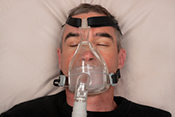 Photo: ©iStock/BVDC
Photo: ©iStock/BVDC
(05/04/2017)
PTSD symptoms improved in patients with obstructive sleep apnea who were given continuous positive airway pressure (CPAP) treatment, found a VA Western New York Healthcare System study. The researchers had 47 Veterans with obstructive sleep apnea use a CPAP device while they slept for three months. They found that patients' PTSD symptom improvement correlated with consistent CPAP usage. Veterans with severe to very severe PTSD had larger improvements than those with mild to moderate PTSD. CPAP usage also decreased the frequency of nightmares. The abatement of PTSD symptoms could be the result of better sleep from treating patients' sleep apnea, say the researchers. (Sleep Medicine, May 2017)
Little research available on blast versus nonblast TBI
 DoD photo by Lance Cpl. Immanuel Johnson
DoD photo by Lance Cpl. Immanuel Johnson
(05/04/2017)
A literature review by Minneapolis VA Health Care System researchers found that little information is available about outcomes for blast versus nonblast traumatic brain injury (TBI) in U.S. military personnel. The research available shows that blast and nonblast TBI groups had similar rates of depression, sleep disorders, alcohol use, vision loss, balance problems, and functional status. Results were inconsistent about PTSD, headache, hearing loss, and neurocognitive functions. More research is needed on the differences between blast and nonblast TBI, along with consistent definitions of blast exposure, say the researchers. (Journal of Head Trauma Rehabilitation, April 18, 2017)
Study probes links between smoking, increased pain
 ©iStock/bagi1998
©iStock/bagi1998
(05/04/2017)
There may be an association between smoking, gender, and musculoskeletal pain, according to a VA study. Researchers surveyed more than 1,000 Veterans who served in Iraq or Afghanistan about PTSD symptoms, depressive symptoms, and pain severity. They found that female Veterans who smoked had more moderate to severe musculoskeletal pain than female nonsmokers. This difference was not significance in male Veterans. Smoking may serve as a stress-reducer for some patients, which may explain why those in greater pain are more likely to smoke. The results support a need for more research on the gender-based risk factors for pain in Veterans who smoke, say the researchers. (Pain Medicine, March 14, 2017)
Drug-resistant bacteria on the rise in patients with spinal cord injury
 Photo: ©iStock/Scharvik
Photo: ©iStock/Scharvik
(04/27/2017)
Patients with spinal cord injury and related disorders are at an increased risk of drug-resistant bacterial infection, according to a study of 130 VA medical centers. Researchers found that more than a third of gram-negative bacterial infections found in patients over a nine-year period were drug-resistant. Over that period, drug-resistant strains of bacteria became increasingly common. Infections may be more common in spinal cord injury patients because of altered bodily function as a result of the injury. Infections may also be diagnosed later than usual because of the loss of sensation. Priority should be given to controlling the spread of resistant bacteria and studying epidemiologic trends in spinal cord injury patients, say the researchers. (Journal of Spinal Cord Medicine, Feb. 15, 2017)
Mapping brain activity in PTSD and mild TBI
 Photo: ©iStock/spanteldotru
Photo: ©iStock/spanteldotru
(04/27/2017)
Researchers from two VA health care systems and their colleagues used a technique called magnetoencephalography to map activity in the brains of patients with PTSD and mild traumatic brain injury. Magnetoencephalography records the magnetic fields produced by electrical currents in the brain. The researchers found that alpha brain waves showed reductions in network structure—the interconnected system of neurons within the brain—in PTSD. The scans also showed a shift in connectivity from alpha bandwidth electrical activity to theta bandwidth in both conditions. There was also increased randomness associated with PTSD and increased structure with traumatic brain injury. The study shows the potential of magnetoencephalography to analyze brain activity in these two conditions, and to distinguish between them when similar symptoms occur, say the researchers. (Brain Connectivity, February 2017)
Case study points to better strategy for monitoring liver cancer
 Photo: ©iStock/luchsche
Photo: ©iStock/luchsche
(04/27/2017)
A recent case study suggested that screening for liver cancer at the molecular level for high-risk patients could help manage the disease. The hepatitis C virus is a major risk factor for liver cancer. An international team including a researcher from the Iowa City VA Health Care System followed a patient with hepatitis C and liver cancer. The patient had three tumors treated and removed. He then achieved sustained virologic response — when the hepatitis C virus is not detected in the blood. The researchers then compared RNA molecules from the patient with samples from other patients with liver cancer and hepatitis C. The comparison showed that the patient was at high risk for the cancer to return. By screening for cancer more frequently, at three-month intervals, the care team was able to detect a liver lesion early and treat it. They say the molecular biomarker test could help with early cancer detection in the growing population of hepatitis C patients. (Hepatology)
New technique for artificial lung manufacturing
 Photo: Jason Miller
Photo: Jason Miller
(04/21/2017)
Researchers with the VA Ann Arbor Healthcare System have come up with a new way to manufacture microfluidic artificial lungs that may have applications for human patients. Artificial lungs have been used for years to supplement patients' breathing, and recent microfluidic artificial lung technology has shown potential for great improvement in function. But microfluidic artificial lung material is hard to scale large enough for human use. The researchers have found a way to assemble a lung structure through continuous "rolling" and bonding of a single, patterned layer of polydimethyl siloxane. They expect that this technique will work to construct microfluidic artificial lungs large enough for human use. (Biomicrofluidics, April 2017)
Evaluation reveals areas for improvement in Veterans Choice Program
 Photo: ©iStock/sturti
Photo: ©iStock/sturti
(04/21/2017)
Researchers at the Louis Stokes Cleveland VA Medical Center used the Lean Six Sigma quality-improvement strategy to evaluate the Veterans Choice Program (VCP), which allows eligible VA-enrolled Veterans to get certain health services at non-VA sites in their communities. The study found that key issues to target for improvement included inefficient exchange of information between staff and patients, shortages of VCP-participating providers, appointment duplication, declines in care coordination, and lack of program adaptability. Using evaluations such as Lean Six Sigma could help identify further ways to improve the program, suggest the researchers. (Medical Care, April 13, 2017)
Bulk of VA testosterone use for off-label purposes
 Photo: ©iStock/RapidEye
Photo: ©iStock/RapidEye
(04/21/2017)
Only a small portion of testosterone prescriptions given in VA were for conditions for which testosterone has been approved by the FDA, according to a study of VA system data. The FDA approves testosterone only for diseases of the testis, pituitary, and hypothalamus. Yet only 6.3 percent of prescriptions in the VA were for these conditions over a five year period. The results show a need for more efforts to optimize testosterone-prescribing practices, say the researchers. They do note that there may be valid therapy reasons for off-label testosterone use. (Journal of General Internal Medicine, March 2017)
Many wet wipes contain potential allergens
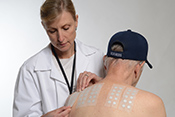 Photo by April Eilers
Photo by April Eilers
(04/06/2017)
Two studies by Minneapolis VA Medical Center researchers found that many commonly used wet wipes contain a high number of potential allergens. The researchers examined ingredient lists for 178 facial wipe and 54 personal hygiene wipe products. They found that a majority of wet wipes on the market contain ingredients that could cause allergic contact dermatitis. The most common potential allergens in both types of wipes were fragrances, botanicals, preservatives, and propylene glycol. Preservatives such as methylisothiazolinone are the ingredients most likely to cause contact dermatitis, according to an earlier study by the same researchers and their colleagues that involved more than 9,000 patch-tested patients. It is important to consider the ingredients in wet wipes when evaluating contact dermatitis, say the researchers. (Dermatitis, March 23, 2017)
Combination of two therapies may be effective treatment for those with PTSD and borderline personality disorder
 Photo for illustrative purposes only. ©iStock/Highwaystarz-Photography
Photo for illustrative purposes only. ©iStock/Highwaystarz-Photography
(04/06/2017)
A combination of dialectical behavior therapy and prolonged exposure therapy may be a safe and effective means of treating Veterans with both PTSD and borderline personality disorder, found a Minneapolis VA Health Care System study. Twenty-two Veterans underwent a 12-week intensive outpatient program combining the two treatments. After the treatment, 91 percent of participants showed a significant reduction in PTSD symptoms. Dysfunctional coping styles (e.g., self-harm) were also reduced, as was suicidal ideation. Patients with borderline personality disorder are often excluded from PTSD treatments out of concern for an increased suicide risk. Combining the two treatments shows promise for treating this difficult population, say the researchers. (Journal of Traumatic Stress, March 22, 2017)
Frequent in-person coaching most effective for weight loss
 Photo: ©iStock/LeoPatrizi
Photo: ©iStock/LeoPatrizi
(03/30/2017)
Consistent and continuous treatment is needed to address obesity, according to a study of weight loss programs offered by VA. Researchers at two Midwestern VA medical centers tracked the weight loss of 332 Veterans participating in three different programs over two years. One group received usual care (VA's MOVE! program), one attended a Small Changes group program in person, and one received Small Changes counseling by phone. Small Changes encourages participants to make modest changes to dietary intake and physical activity level. In the first year, in which participants began with weekly sessions and tapered off to monthly sessions, those in the Small Changes in-person group lost twice as much weight as the other two groups. All groups showed significant weight loss. However, in the second year, when Small Changes participants had weight-loss sessions only every two months, the Small Changes in-person group experienced significant weight regain, while the other two groups continued their weight loss. Weight regain was often related to diabetes. The results show that ongoing and frequent contact with coaching is important for weight-management programs, say the researchers. (Journal of General Internal Medicine, March 7, 2017)
Nearly half of soldiers with mTBI had postconcussive symptoms three months postdeployment
 Photo: Staff Sgt. William Tremblay/USA
Photo: Staff Sgt. William Tremblay/USA
(03/30/2017)
In a study by the Defense and Veterans Brain Injury Center study, almost half of soldiers who had a mild traumatic brain injury (mTBI) while serving in Afghanistan or Iraq had postconcussive symptoms three months after their deployment. The researchers examined 366 soldiers with previous mTBI and 599 without three months after they were screened for TBI upon their return. Forty-seven percent of those with mTBI had postconcussive symptoms at the three-month mark, while only 25 percent of controls did. The most common symptoms were sleep problems, forgetfulness, irritability, and headaches. Those with mTBI were twice as likely as controls to have received rehabilitative services after deployment. "The persistence of symptoms, even absent [posttraumatic stress], suggests that mTBI is associated with continuing problems for longer than has been generally recognized in the active duty population," wrote the researchers. (Neurology, March 17, 2017)
Alzheimer's caregiver intervention not associated with additional health care costs
 Photo: ©iStock/Eva-Katalin
Photo: ©iStock/Eva-Katalin
(03/30/2017)
REACH programs to support caregivers of patients with Alzheimer's disease and related dementias did not lead to increased health care costs for either patient or caregiver, according to a study by VA researchers in Tennessee and New York. REACH (Resources for Enhancing Alzheimer's Caregivers Health) provides caregivers with interventions to increase coping skills and management of patient behaviors. Previous research has shown that REACH interventions benefit both caregivers and patients, but concerns about additional health care costs may have hindered the program's adoption. The study shows that REACH did not add to health care costs. In fact, VA patients in the REACH program showed significantly lower health care costs. (Journal of the American Geriatric Society, March 13, 2017)
Copper cuts bacteria growth on hospital surfaces
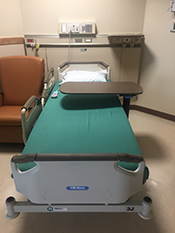 Courtesy of EOS Surfaces
Courtesy of EOS Surfaces
(03/23/2017)
Copper-impregnated surfaces may lower bacteria growth on hospital surfaces, found a Central Texas Veterans Healthcare System study. Copper is known to self-sanitize and naturally reduce the growth of bacteria. However, few studies have looked at its effectiveness in reducing contamination in real-world hospital settings. Researchers measured the number of bacteria on copper-containing and standard bedside tray tables in hospital rooms. They found that the bacteria amount was 81 percent lower on the copper-infused trays 30 hours after the test began. The copper-containing trays showed similar levels of bacteria as trays in rooms under isolation protocol to prevent infection. The copper-infused surfaces used in the study have the appearance of stone. Using them in patient rooms may help reduce the spread of infection in hospitals, say the researchers. (American Journal of Infection Control, Feb. 22, 2017)
Recommendations on using weight-management drugs
 Photo: ©iStock/emesilva
Photo: ©iStock/emesilva
(03/23/2017)
A VA Health Services Research and Development workgroup recently developed recommendations for the use of weight management medications (WMMs) within VA. Previous data show that only 2 percent of Veterans in VA care eligible for WMMs are prescribed the medications. The workgroup found that barriers to this treatment included patient and provider concerns about safety and efficacy, limited involvement of primary care, and overly restrictive medication criteria. The workgroup recommended educating patients and providers about WMMs and the health benefits of weight loss, increasing primary care provider engagement, relaxing criteria for use, and creating a system to help patients navigate weight-management options. (Journal of General Internal Medicine, April 2017)
Past sexual assault linked to risk for sexually transmitted disease
 Photo: ©iStock/jarun011
Photo: ©iStock/jarun011
(03/23/2017)
Women Veterans who have experienced sexual assault may be at increased risk for sexually transmitted infections (STIs). Researchers interviewed women Veterans at two facilities in the VA Midwest Healthcare Network. Of the 996 women interviewed, 51 percent reported past sexual assault, and 32 percent had a history of STIs. Women who had experienced sexual assault were significantly more likely to report a history of STIs. The cause of this correlation is not clear. History of sexual assault should be considered when determining the need for STI screening, say the researchers. (Journal of Women's Health, March 10, 2017)
Rebuilding cartilage using collagen scaffolding
 Photo: Ames Laboratory, U.S. Dept. of Energy
Photo: Ames Laboratory, U.S. Dept. of Energy
(03/23/2017)
British researchers and a collaborator at the Memphis VA Medical Center published work on a new way to promote cartilage regeneration in osteoporosis. Providing a three-dimensional scaffold for cell attachment could help stem cells to form into cartilage. The researchers found that creating a scaffold that mimics the composition and structure of the cartilage in the body promotes this growth. Using collagen type-II and chondroitin sulfate promoted cartilage growth more than other scaffold configurations. The technique could lead to better tissue-engineering treatments for osteoarthritis. (Scientific Reports, March 3, 2017)
Functional electrical stimulation helps MS patient walk
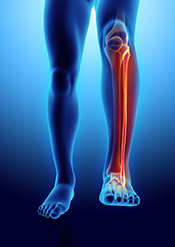 Photo: ©iStock/yodiyim
Photo: ©iStock/yodiyim
(03/15/2017)
Functional electrical stimulation improved the walking ability of a patient with multiple sclerosis, in a case study by researchers at the Louis Stokes Cleveland VA Medical Center. The patient had lower limb weakness and was frequently unable to take a step unaided. Doctors implanted electrodes into the muscles of his hip, knee, and ankle. The electrodes delivered stimulation that helped activate the muscles in his legs. Over a 90-day trial, he was able to consistently take steps with electrical stimulation. The case study shows that implanted electrical stimulation devices could help restore walking in patients with muscle weakness caused by MS, according to the researchers. (American Journal of Physical Medicine & Rehabilitation, Feb. 1, 2017)
ADHD associated with nonsuicidal self-injury
 Photo by Mitch Mirkin
Photo by Mitch Mirkin
(03/15/2017)
Male Veterans with attention deficit hyperactivity disorder (ADHD) were significantly more likely to report nonsuicidal self-injury (NSSI) than those without ADHD, according to a study by VA Mid-Atlantic Health Care Network and Central Texas VA Health Care System researchers. Veterans with PTSD were more likely to have ADHD symptoms than those without PTSD. However, PTSD was not associated with NSSI, contrary to what the researchers expected, based on past studies. The findings show that ADHD may increase the risk of NSSI in male Veterans independent of other factors such as PTSD, say the researchers. (Psychiatry Research, Feb. 24, 2017)
Statin use linked to higher odds of diabetes in physically active people
 ©iStock/gilaxia
©iStock/gilaxia
(03/15/2017)
Statin use was associated with double the odds of diabetes and its complications without offsetting cardiovascular benefits, in a VA North Texas Health Care System and University of Texas Southwestern study. The researchers looked at rates of diabetes and cardiovascular outcomes in healthy, physically fit people who were using statins to prevent cardiovascular disease. Statin use is currently recommended for adults 40 to 75 years old with one or more risk factors for cardiovascular disease, such as high cholesterol, diabetes, high blood pressure, or smoking and a calculated risk of heart attack. The researchers found 12.5 percent of statin users and 5.8 percent of nonusers were diagnosed with diabetes. Furthermore, 1.7 percent of statin users and 0.7 percent of nonusers were diagnosed with diabetic complications, such as nerve, kidney, and eye damage. Of the statin users, 1.6 percent had major acute cardiovascular events, compared to 1.5 percent of nonusers. Those rates were much lower than in the general population, but did not show a difference between statin users and nonusers. The researchers concluded that the risks and benefits of statin use in healthy, physically active people may need to be reconsidered. (Journal of Science and Medicine in Sport, Jan. 24, 2017)
Smaller changes in cortisol levels linked to better response to PTSD treatment
 ©Stock/marekuliasz
©Stock/marekuliasz
(03/09/2017)
Change in cortisol levels during treatment predicted how well patients with PTSD responded to psychotherapy, found researchers at the Atlanta and Ann Arbor VA health care systems. Cortisol is a hormone released by the adrenal gland in response to stress. The researchers measured cortisol in the saliva during treatment of 30 Veterans undergoing either prolonged-exposure or present-centered therapy. They found that patients who had a greater increase in cortisol levels over the course of treatment had less reduction of PTSD symptoms. Contrary to what the researchers expected, overall cortisol levels did not predict how well patients responded to treatment. Modulating patients' hormonal responses may aid their response to treatment, suggest the researchers. (Journal of Clinical Psychiatry, Jan. 17, 2017)
Causes of suicide on hospital grounds
 ©Stock/sshepard
©Stock/sshepard
(03/09/2017)
Researchers with the VA National Center for Patient Safety analyzed the root causes of suicide or suicide attempts on VA hospital grounds and in hospital common spaces and clinic areas (as opposed to patient rooms). They found that the primary causes were breakdowns in communication between patient and staff; the need for improved psychiatric and medical treatment of suicidal patients; and problems with the physical environment, such as unmonitored nonclinical areas. Forty-seven suicides or suicide attempts were reported over a 15-year period. The researchers recommend that hospital staff evaluate the environment for suicide hazards, consider prohibiting firearms (currently, VA facilities nationwide do not allow firearms on their campuses), assist patients who do not have appointments, and promote better communication between staff about high-risk patients. (Journal of Patient Safety, Feb. 22, 2017)
Neuroprotective compound may improve brain function after stroke
 ©Stock/stockdevil
©Stock/stockdevil
(03/09/2017)
The neuroprotective compound P7C3-A20 improved brain function after stroke in rats, found a study by Iowa City VA Health Care System and University of Miami researchers. Rats injected with the compound did better than controls on sensorimotor and cognitive tests. The rats treated with P7C3-A20 also showed significantly less cortical and hippocampal atrophy. They also had improved growth of new nerve tissue. The results suggest that this compound could be useful in protecting the brain from ischemic stroke, say the researchers. (Experimental Neurology, Jan. 8, 2017)
More studies needed on the effect of risk factors on multiple sclerosis
 ©iStock/sudok1
©iStock/sudok1
(03/02/2017)
Two literature reviews by VA researchers and their associates showed that more research is needed on how risk factors affect multiple sclerosis (MS) progression. One review showed that low vitamin D levels were consistently associated with MS progression, and smoking was associated with more rapid decline in MS disability. However, the different methods and measures used by different studies make it hard to draw conclusions. A second review by the same researchers found that no current risk factor interventions had significant effects on MS progression. More studies are needed on vitamin D supplements, long-term exercise, and smoking cessation, say the researchers. (Multiple Sclerosis Journal, Feb. 1, 2017; Multiple Sclerosis Journal, Feb. 1, 2017)
Clinical practice guidelines for low back pain
 ©iStock/ChesiireCat
©iStock/ChesiireCat
(03/02/2017)
VA researchers were part of an American College of Physicians group that developed recommendations for treating low back pain by reviewing multiple studies published on the topic. They recommend that patients with acute or subacute low back pain should use non-medication treatment such as heat, massage, or acupuncture. If medication is required, clinicians should prescribe nonsteroidal anti-inflammatory drugs or muscle relaxants. Patients with chronic low back pain should be treated without medications whenever possible. If patients do not respond to non-medication treatment, they should be prescribed nonsteroidal anti-inflammatory drugs as first-line therapy, or tramadol (sold as Ultram or Zytram) or duloxetine (sold as Cymbalta) as second-line therapy. Opioids should be an option only after other treatments have proved ineffective and only if potential benefits outweigh risks. (Annals of Internal Medicine, Feb. 14, 2017)
New understanding of how white blood cells work
 ©iStock/blueringmedia
©iStock/blueringmedia
(03/02/2017)
Researchers with the University of Iowa and Iowa City VA Health Care System found evidence of neutrophil plasticity, or the ability of these cells to change in the body. Neutrophils are the most common type of white blood cell. The concepts of neutrophil plasticity and different neutrophil phenotypes (cells with different structural characteristics) are new; previously, scientists thought that these cells all had similar properties. The researchers exposed neutrophils to H. pylori bacteria, and found that the structure of the nucleus of some neutrophil cells changed after bacterial infection. This demonstrates that the cells can change while still alive. The results could lead to a better understanding of bacterial diseases, particularly how white blood cells fight and interact with infections. (Journal of Immunology, Mar. 1, 2017)
Psychotropic medication linked to higher dementia risk in patients with PTSD
 Photo: ©iStock/Kwangmoozaa
Photo: ©iStock/Kwangmoozaa
(02/23/2017)
PTSD by itself has been linked to a higher risk for dementia later in life, but certain medications often used as part of PTSD treatment appear to compound that association. An analysis of data on more than 417,000 Veterans found that those with PTSD who were treated with selective serotonin reuptake inhibitors (SSRIs), novel antidepressants, or atypical antipsychotics were more likely to be diagnosed with dementia, relative to those with or without a PTSD diagnosis but not using any of these drugs. The patients in the study had an average age of 67.7 at the start of the study period, back in 2003, and they were followed, on average, for about 9 years. Those using benzodiazepines or serotonin-norepinephrine reuptake inhibitors (SNRIs) had an increased dementia risk, regardless of whether they had PTSD. The researchers say while it's possible some of the drugs may directly contribute to dementia risk, it's also possible that their use is a marker for more severe PTSD symptoms, or other underlying brain conditions, that may account for the higher dementia risk. They recommend further study. (Journal of the American Geriatrics Society, January 2017)
Wii Fit exercise program boosts balance in older adults
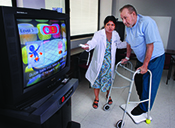 A Veteran receives an explanation of the Wii-Fit from Dr. Kalpana Padala at the Central Arkansas Healthcare System. (Photo by Jeff Bowen)
A Veteran receives an explanation of the Wii-Fit from Dr. Kalpana Padala at the Central Arkansas Healthcare System. (Photo by Jeff Bowen)
(02/23/2017)
A Wii Fit exercise program improved balance in older adults, found a Central Arkansas Veterans Healthcare System study. Fifteen Veterans participated in an exercise program on the Wii Fit video game for 45 minutes, three days a week for eight weeks. The control group, also including 15 Veterans, performed a computer-based cognitive program. Those in the exercise group scored significantly better than controls on measures of balance. The results show that a Wii Fit exercise program is safe and feasible for community-dwelling older adults with balance problems. (Journal of Aging Research, Feb. 5, 2017)
Physical activity counseling improves activity levels at low cost
 Photo: ©iStock/kali9
Photo: ©iStock/kali9
(02/23/2017)
A physical activity counseling program improved activity levels and gait speed in older Veterans at only a small percentage of patients' health care costs in a VA Mid-Atlantic Health Care Network study. The program included initial in-person exercise counseling, followed by telephone counseling at two, four, and six weeks, and monthly thereafter for one year. The total cost of the program per participant averaged $696, about 6 percent of patients' estimated annual health care costs. The cost of this program may be offset by lower health care costs due to improved physical fitness, but that result was not statistically significant in the study. (Journal of the American Geriatrics Society, January 2017)
Thiazide blood-pressure drugs could lower fracture risk
 ©iStock/Sutthaburawonk
©iStock/Sutthaburawonk
(02/15/2017)
A certain class of blood pressure medication may improve bone strength in patients with osteoporosis, according to a secondary analysis of data from a larger study involving VA medical centers. Research shows that people with high blood pressure tend to have more osteoporotic fractures. This study showed that patients on chlorthalidone, a thiazide-type medication also sold as Hygroton, had lower risk of hip and pelvic fracture than those on amlodipine (sold as Norvasc) or lisnopril (sold as Zestril). Thiazides are one class of diuretics, or water pills. They increase the amount of water and salt expelled from the body as urine. They also affect the body's balance of minerals. The results suggest that thiazide-type blood pressure medication could reduce fracture risk in older adults. (JAMA Internal Medicine, January 2017)
Transparent clinical notes can build trust with mental health patients
 ©iStock/Steve Debenport
©iStock/Steve Debenport
(02/15/2017)
Allowing patients in VA mental health care to view clinical notes about their visits with providers can strengthen or strain their trust in those providers, depending on the contents of the notes. Researchers interviewed 28 patients who had access to OpenNotes, allowing them to see what their clinicians wrote about their treatment. The study found that ensuring consistency between what occurs during appointments and what the notes say makes patients trust their clinicians more. Notes that highlight patient individuality and strengths also help create trust. Showing transparency and respect in clinical notes can help build trust with patients, say the researchers. (Psychiatric Services, Feb. 1, 2017)
Modest brain changes seen in patients with schizophrenia after computer exercises
 ©iStock/Image Source
©iStock/Image Source
(02/15/2017)
Patients with schizophrenia showed cognitive improvements after cognitive remediation training in a Minneapolis VA Health Care System study. Cognitive remediation involves computer exercises that place demands on working memory. Patients who received 48 hours of cognitive remediation over a 16-week period showed increased activation of the left prefrontal cortex of the brain, compared with those in the placebo group, who received only basic computer skills training. Increased brain activation, as shown on a type of MRI scan that tracks blood flow, correlated with improved task accuracy and suggests improved neuroplasticity. According to the researchers, the results suggest that brain activation may be an important target for schizophrenia interventions. However, the results were modest, and significant changes were not reported in other areas of the brain, contrary to what the researchers expected. (British Journal of Psychiatry, February 2017)
C. difficile treatment with vancomycin results in fewer deaths than treatment with metronidazole
 ©iStock/Scharvik
©iStock/Scharvik
(02/09/2017)
The antibiotic vancomycin reduced the risk of death after C. difficile infection over another antibiotic, metronidazole, found a study of VA health care system data. In recent decades, C. difficile infection has become a major cause of death inside and outside of hospitals. Metronidazole is the most common drug used to treat C. difficile. While C. difficile recurrence rates were similar with both drugs, this study showed that those treated with vancomycin were less likely to have died than those treated with metronidazole within 30 days after treatment. The findings justify vancomycin as initial therapy for C. difficile infection, according to the researchers. (JAMA Internal Medicine, Feb. 6, 2017)
Unique challenges of delivering primary care to women Veterans
 ©iStock/javi_indy
©iStock/javi_indy
(02/09/2017)
VA's Patient Aligned Care Team (PACT) initiative faces unique challenges in delivering care to women Veterans, according to a VA Greater Los Angeles Health Care System study. The researchers interviewed 73 primary care providers and other staff about the benefits and difficulties of providing PACT care to women Veterans. Those interviewed said that PACT improved continuity of care and helped nursing staff practice effectively. Problems included inconsistent implementation of PACT procedures, short staffing, and space constraints. Challenges unique to the care of women Veterans included more psychosocial needs, the need for specialized training for staff, and inadequate staffing due to a separation between woman's health and primary care services. (Women's Health Issues, Jan. 4, 2017)
Clock-in-the-Box test helps predict return home after hospital stay
 ©iStock/monkeybusinessimages
©iStock/monkeybusinessimages
(02/09/2017)
The Clock-in-the-Box (CIB) test is effective at predicting whether older patients will return home after hospitalization, suggests a new study. The CIB is a brief cognitive screening measure that assesses memory and executive functions. This VA Boston Healthcare System study found that every unit of increase on the CIB was associated with a lower likelihood of being discharged to somewhere other than home, such as a nursing home or rehabilitation center. The results support the CIB as a tool to inform clinical treatment decisions and discharge planning, say the researchers. (Clinical Interventions in Aging, Nov. 11, 2016)
E. coli contamination widespread in U.S. chicken
 Photo: ©iStock/MikeyGen73
Photo: ©iStock/MikeyGen73
(02/02/2017)
Antibiotic-resistant E. coli contamination is widespread in commercial U.S. chicken meat, found a study that included Minneapolis VA Health Care System researchers. Many of the strains of E. coli found in chicken do not respond to antibiotics. This means that it can be much harder to treat people infected with E. coli from eating chicken. Organic chicken breasts had slightly lower levels of antibiotic resistance, but had just as strong E. coli contamination as non-organic chicken. The study, conducted in 2013, suggests retail chicken products in the U.S. pose a potential health threat to consumers even if they are labeled as organic. Food-safety experts say thorough cooking kills the bacteria in meat, but consumers don't always follow guidelines. (Applied and Environmental Microbiology, Jan. 6, 2017)
Compound improves cognitive function after stroke
 Photo: ©iStock/FikMik
Photo: ©iStock/FikMik
(02/02/2017)
A chemical compound called P7C3-A20 could help improve cognitive function after stroke. When given to rats, P7C30-A20 protected existing neurons from atrophy and promoted the regeneration of new neurons in the brain. The rats treated with P7C30-A20 performed better than controls on movement and memory tests after seven days. The researchers also found decreased cortical and hippocampal atrophy in the treated rats. This study suggests that P7C3 compounds may be useful in protecting the brain from stroke. This study was conducted by researchers with the University of Miami, University of Iowa, and Iowa City VA Health Care System. (Experimental Neurology, Jan. 8, 2017)
Review of significant infectious-disease research cites key VA study
 Photo: ©iStock/AlexRaths
Photo: ©iStock/AlexRaths
(02/02/2017)
A recent review of infectious-disease research selected a 2015 VA study as contributing significantly to the field. The VA study, published in the journal Clinical Infectious Diseases, looked at the effectiveness of two drugs in fighting vancomycin-resistant Entrerococcus bloodstream infections (VRE-BSIs), bacterial infections that resist treatment with common antibiotics. The study found that treatment with the antibiotic linezolid resulted in significantly higher treatment failure than treatment with daptomycin. Linezolid treatment was also associated with a higher rate of mortality in the study group. According to the researchers, the results show that daptomycin is a better choice than linezolid for treating VRE-BSIs. (American Journal of Health-System Pharmacy, Feb. 15, 2017)
New evidence on how aspirin may help prevent cancer

(01/26/2017)
Researchers with the Michael E. DeBakey VA Medical Center and University of Texas may have found why aspirin can help prevent and treat some cancers. Scientists have long known that taking aspirin can lower the risk of certain cancers and stop the spread of cancer cells, but how this works is not well understood. The new research suggests that aspirin stops platelets from interacting with cancer cells, which affects cancer growth. The researchers further found that a new type of aspirin (based on lipid molecules) may be even more effective at preventing cancer. (Cancer Prevention Research, Dec. 20, 2016)
Protein in lungs could be target for asthma drugs
 Photo: ©iStock/yodiyim
Photo: ©iStock/yodiyim
(01/26/2017)
Targeting asthma drugs to a specific protein (HIF-1alpha) in the lungs could help limit airway inflammation, according to a VA San Diego Healthcare System study. A drug to inhibit HIF-1alpha in mice led to less allergic inflammation in the airway, although the response varied based on genetic factors. Asthma can be caused by different genetic variants, and current therapies are limited in their effectiveness. The researchers suggest HIF-1alpha inhibitors may be a way to effectively target certain forms of the disorder. (Clinical Immunology, Jan. 13, 2017)
Pay-for-performance has limited effect on health care
 Photo: ©iStock/simarik
Photo: ©iStock/simarik
(01/26/2017)
Pay-for-performance programs may improve health care procedures, but evidence does not show that they improve patient outcomes. Pay-for-performance programs give financial rewards or penalties to health care providers and institutions according to their performance on quality measures. A literature review found some evidence that these programs improve the processes that institutions use, but this evidence was low-strength and somewhat contradictory. The review found no evidence that these programs improve patient outcomes. (Annals of Internal Medicine, Jan. 10, 2017)
Few Veterans with moderate or severe TBI go back to work
 Photo: ©iStock/lentolo
Photo: ©iStock/lentolo
(01/18/2017)
Few service members and Veterans with moderate to severe traumatic brain injury (TBI) return to work one year after their injury, according to a VA Polytrauma Rehabilitation Centers study. In a study of 293 Veterans and service members, only 21 percent were employed one year after a TBI. Those who were older, were minorities, or had a more severe TBI were more likely to be unemployed. Every additional year of age was linked to a 2 percent decrease in employment likelihood. Eighty-three percent of minorities were unemployed after one year, compared with 76 percent of nonminorities. Eighty-five percent of subjects with severe TBI were unemployed, while only 63 percent of subjects with moderate TBI were unemployed. These results will help VA plan rehabilitation services, say the researchers. (Journal of Head Trauma Rehabilitation, Jan. 5, 2017)
Rewards can push older adults to walk more
 Photo: ©iStock/FatCamera
Photo: ©iStock/FatCamera
(01/18/2017)
Older adults were more likely to meet daily step goals when they received reward money or had money donated to charity for reaching those goals. Study participants were challenged to increase their daily step counts by 50 percent. Those who were offered a reward of $20, a $20 donation to the charity of their choice, or a combination of the two were more likely to meet the step goal than those who were offered only feedback during a 16-week period. According to the researchers, incentives such as these could be used to get older adults to walk more. (American Journal of Preventive Medicine, Jan. 3, 2017)
Toxic exposures common in recent wars
 Photo: Airman 1st Class Christopher Griffin/USAF
Photo: Airman 1st Class Christopher Griffin/USAF
(01/18/2017)
A study of 224 Iraq and Afghanistan Veterans found that 97.2 percent were exposed to toxic hazards during deployment. Toxic exposure was associated with chronic multisymptom illness (CMI) symptoms in these Veterans. The most common type of toxic exposure was breathing in smoke or fumes. Pesticide exposure was the most likely predictor of CMI. More analysis is needed on specific toxic hazards Veterans face and the relationship with CMI in order to improve prevention, say the researchers. (Journal of Occupational and Environmental Medicine, January 2017)
Sunlight improves function of immune cells
 Photo: ©iStock/selvanegra
Photo: ©iStock/selvanegra
(01/12/2017)
Researchers at the Washington DC VA Medical Center, Georgetown University, and Vinh University in Vietnam found a mechanism that may explain why sunlight can reduce instances of autoimmune disease and some cancers, as shown in past research. Through experiments with human cells and mouse tissue, they found that T cells within skin are naturally sensitive to blue light. T cells serve an important purpose in the immune system and help the body adapt to disease. Blue light, which is absorbed by the skin from sunlight, appears to improve the movement of T cells within the body, which benefits the immune system. Scientists have long known that sunlight can have positive effects on the immune system, but were not sure why. (Scientific Reports, Dec. 20, 2016)
Multiple medical conditions linked to arthritis-causing disease
 Photo: ©iStock/bloodstone
Photo: ©iStock/bloodstone
(01/12/2017)
Researchers looked at a large Veteran population to identify other conditions associated with calcium pyrophosphate crystal deposition disease (CPDD), a common cause of arthritis. They found that people with CPDD had high rates of hyperparathyroidism, gout, osteoarthritis, rheumatoid arthritis, hemochromatosis, hypomagnesemia, and chronic kidney disease. These patients also tend to take calcium supplements, the study found. The use of common high blood pressure and heartburn medicines was not associated with CPDD. Knowing these links could help doctors develop treatment strategies for CPDD. (Arthritis Care & Research, Nov. 29, 2016)
Health-promoting behaviors may reduce suicidal thoughts in Veterans with PTSD
 Photo: ©iStock/PeopleImages
Photo: ©iStock/PeopleImages
(01/12/2017)
A survey of more than 100 Iraq and Afghanistan Veterans found that those who participated in health-promoting behaviors had a lower rate of suicidal thoughts. Research shows that Veterans with PTSD are more likely to have suicidal thoughts. But the link was less pronounced among those in the study with PTSD who said they routinely engaged in activities to foster good nutrition, physical activity, stress management, spiritual growth, health responsibility, and interpersonal relationships. The researchers say promoting these activities in Veterans with PTSD could help lower suicide risk. (PLoS One, Dec. 21, 2016)
High-protein diet linked to lower bone risk
 Photo ©iStock/stock colors
Photo ©iStock/stock colors
(01/05/2017)
Older men who eat more protein have a lower risk of broken bones, according to a recent study. The study looked at 5,875 men over 15 years. Those with more protein in their diet had fewer broken bones than those who ate less protein, and the source of protein also mattered. More protein from dairy and other animal sources (meat, fish, poultry, eggs) was linked to lower hip fracture risk, while protein from plants (such as legumes, grains, and nuts) was not. Higher protein was tied to fewer hip fractures but not fewer spine fractures, showing this connection might vary by body part. While the study focused only on men, and by itself does not prove a direct causal link between protein intake and bone strength, the researchers nonetheless suggest that adding one to two servings per day of protein-rich foods may help older adults cut fracture risk. (Journal of Bone and Mineral Research, Dec. 12, 2016)
Intensive outpatient program did not lower health care cost or use
 Photo ©iStock/shironosov
Photo ©iStock/shironosov
(01/05/2017)
Intensive outpatient care resulted in health care use and costs that were similar to those of standard care in a VA Palo Alto Health Care System study. The study compared 433 high-need patients in standard Patient Aligned Care Team (PACT) care with 150 patients in an Intensive Management program (ImPACT). Patients in ImPACT receive extra outpatient care, including tracking goals and priorities, care management for medical and social service needs, and coordination between VA and non-VA providers. Patients in both programs had similar costs and numbers of hospital visits. Those in the ImPACT group were slightly more satisfied with VA care. These results were surprising—the researchers expected ImPACT to reduce care utilization and cost. (JAMA Internal Medicine, Dec. 27, 2016)
'Safety huddles' ease risks linked to electronic health records
 Photo ©iStock/sturti
Photo ©iStock/sturti
(01/05/2017)
"Safety huddles" can help limit safety risks related to electronic health records (EHRs), found a VA study. These risks include mislabeled medicine, data loss due to computers not working, and incorrect treatment doses. One medical center used a daily meeting of care providers and support staff to discuss safety concerns and "great catches" of potential problems. Over 249 meetings, they were able to identify and address 245 EHR-related safety concerns. The study authors recommend that health care systems use huddles to help improve EHR use. (Journal of the American Medical Informatics Association, Dec. 28, 2016)
Study compares infection control in VA, non-VA nursing homes
 Photo: ©iStock/Wavebreak
Photo: ©iStock/Wavebreak
(12/29/2016)
VA and non-VA nursing homes differed in their approach to catheter-associated urinary tract infections, according to a recent study. VA nursing homes reported more hours per week devoted to infection prevention, were more likely to have committees to review infection policies, had higher physician and nurse staffing-to-bed ratios, had higher percentages of 24-hour registered nurse supervision, and kept track of catheter-associated urinary tract infection rates more regularly, compared with non-VA nursing homes. Most VA nursing homes also had infection prevention programs integrated within VA acute-care programs. A lower percentage of VA nursing homes had policies on appropriate catheter use, compared with non-VA nursing homes. The authors suggest that universal practices should be adopted in both VA and non-VA nursing homes. (Infection Control and Hospital Epidemiology, online Dec. 5, 2016)
How do the experiences of U.S. and Australian Veterans compare?
 Photo courtesy of Australian Army
Photo courtesy of Australian Army
(12/29/2016)
A recent comparison based on data from VA and the Australian Department of Veterans' Affairs showed several differences in post-1990 deployment outcomes. The U.S. deployed significantly more personnel than Australia during this period. Veterans from the two countries had similar overall rates of PTSD. Gulf War Veterans from both countries had a reduced risk of suicide, compared with the general population, but U.S. Veterans of Iraq and Afghanistan had higher rates of suicidal thoughts. U.S. Gulf War Veterans had higher rates of multisymptom illness than Australians, and were also more likely to have been in combat. The two countries' health care systems were alike in terms of their range of services, focus on mental health, and increasing use of technology, but different in some aspects of service provision and financial structure. (Australian DVA website, Dec. 14, 2016)
Concerns about falling not linked to low blood pressure
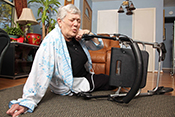 Photo: ©iStock/ Imagesbybarbara
Photo: ©iStock/ Imagesbybarbara
(12/22/2016)
In one of the latest findings to be reported from a major study on high blood pressure treatment that was funded by the National Institutes of Health and involved VA researchers, fear of falling was not associated with low blood pressure or with blood pressure medication use in older adults. While participants with more concern about falling were found to be taking more medicine to combat high blood pressure, the study did not find a link between actual low blood pressure due to medication use and fear of falling. Fear of falling is common in older adults with high blood pressure who take medication to manage the condition. Many do not wish to increase their dose because they fear medication-induced low blood pressure will increase their risk of falling. The researchers point out that it is important to address patients' fear of falling, in addition to actual fall risk. (Journal of the American Geriatrics Society, November 2016)
Virtual training for staff helps prevent pressure ulcers
 Photo: ©iStock/ Johnny Greig
Photo: ©iStock/ Johnny Greig
(12/22/2016)
A new training program decreased the rate of pressure ulcers in VA. The Virtual Breakthrough Series (VBS) is a teleconferencing and email-based training program that uses personalized coaching and group education to help staff implement care changes to prevent pressure ulcers in patients. After the project was implemented, the pressure ulcer rate dropped from 1.2 to 0.9 per 1,000 bed days of care. VBS has previously been used to prevent catheter-associated urinary tract infections and to prevent falls. The researchers say that together, these studies show that VBS could be a powerful tool to improve the quality and safety of care in VA. (Journal of Nursing Care and Quality, online Nov. 29, 2016)
Veterans show no health effects of uranium exposure 25 years later
 Photo courtesy of www.gulflink.osd.mil
Photo courtesy of www.gulflink.osd.mil
(12/22/2016)
Gulf War Veterans wounded in depleted uranium friendly-fire incidents showed no uranium-related health effects 25 years after exposure. Veterans with embedded uranium fragments had elevated urine uranium concentrations, while those who had been exposed to uranium through inhalation had lower urine uranium concentrations. Although these Veterans did not show any negative health effects, metal fragments still in their bodies continue to expose them to uranium radiation, and dangerous concentration thresholds may still be reached. The researchers recommend continued health surveillance for this group. (Environmental Research, January 2017)
AspireAssist device leads to greater weight loss
(12/14/2016)
Patients equipped with the AspireAssist System, a tube placed in the stomach that allows stomach contents to be drawn out, lost more weight than patients who received only lifestyle counseling. In a year-long study in obese patients, patients who received both lifestyle counseling and the AspireAssist lost an average of 12.1 percent of their body weight, compared with a 3.5 percent loss for patients who only received counseling. This treatment could prove effective for long-term treatment of obesity, according to the study authors. It should be noted that the company that makes the device funded the study, which involved the San Diego VA and numerous university sites, and was involved with analyzing the data and preparing the manuscript. (American Journal of Gastroenterology, Dec. 6, 2016)
HIV increases risk for lung cancer

(12/14/2016)
HIV infection could contribute to the development of lung cancer, according to a study of participants in the Veterans Aging Cohort Study. Chronic inflammation and a dysfunctional immune system, both associated with HIV, are two factors that could increase the cancer risk, say the researchers. The study also showed that patients with lower T-cell counts were more likely to develop lung cancer. These findings could be used to target lung cancer prevention to this high-risk group, say the researchers. (The Lancet HIV, Dec. 2, 2016)
TeleMOVE is an effective weight-loss program
(12/14/2016)
A VA San Diego Healthcare System study found that participants in a VA telehealth weight-loss program lost more weight than those in the in-person program. Participants in the new TeleMOVE program lost an average of 8.6 pounds during the 90-day program, while those who attended the MOVE! in-person weight-loss classes lost an average of 4.5 pounds over the course of eight classes. Participants who adhered to the program lost more weight than those who missed sessions, regardless of which program they were in. (Obesity Research & Clinical Practice, Dec. 5, 2016)
Can neurocognitive function predict suicide?
 Photo: ©iStock/efks
Photo: ©iStock/efks
(12/08/2016)
A study of Army administrative data found an association between decreased neurocognitive functioning and suicide in soldiers. Researchers found that lower scores on a computerized test of neurocognitive functioning—including problems in decision-making, problem-solving, verbal fluency, and memory—were linked to suicide attempts or death and suicidal thoughts in the following 12 months. The study showed more suicide attempts in soldiers who were female, less educated, white non-Hispanic, and younger at the time of testing, and who had a mental health diagnosis before testing. The researchers say that neurocognitive testing may be a useful tool in predicting future risk of suicide. (Suicide & Life-Threatening Behavior, Nov. 1, 2016)
Military sexual trauma linked to mental health problems in transgender Veterans
(12/08/2016)
Military sexual trauma (MST) is associated with mental health problems in transgender Veterans. A study of 332 transgender Veterans who served in Iraq and Afghanistan found that MST was associated with likelihood of PTSD and personality disorder for both men and women, and with bipolar disorder and depressive disorder for women. Fifteen percent of the Veterans included in the study had experienced MST. The researchers conclude that medical forms should include gender identity in addition to biological gender, and that MST treatment should be culturally competent. (Journal of Traumatic Stress, December 2016)
Nanoparticle may aid in bladder cancer diagnosis, treatment
 (Photo courtesy of Pan lab)
(Photo courtesy of Pan lab)
(12/08/2016)
Researchers have developed a nanoparticle that promises to help in the diagnosis and treatment of bladder cancer. The particle, called PLZ4-nanoporphyrin (PNP), emits fluorescent light when exposed to infrared light. By coating PNP with a molecule specific to bladder cancer, researchers were able to identify cancer cells with the light and diagnose the condition in mice. PNP was also shown to be able to release chemotherapy drugs, as well as photodynamic and photothermal treatment agents, slower and more effectively than other methods. While this new technique of bladder cancer diagnosis and treatment has been shown to work so far only in mice, the researchers believe it could easily be adapted to individualized medicine in a clinical setting. (Biomaterials, October 2016)
Educational intervention targets racial gaps in use of knee replacements
(12/01/2016)
African American patients who were shown an informational video about knee replacement surgery were 85 percent more likely than those who did not view the video to undergo the surgery, according to a study by researchers at the Philadelphia VA Medical Center and their partners. African Americans are significantly less likely than whites to have knee replacement surgery to relieve pain from arthritis, largely due to lack of knowledge about the treatment. The rate at which doctors recommended knee replacement was higher for those who viewed the video, but this result was not statistically significant. The researchers say that this low-cost, patient-centered intervention could increase use of an effective orthopedic procedure among minority patients. (JAMA Surgery, Nov. 23, 2016)
Telehealth versus in-person therapy for chronic pain
(12/01/2016)
Video teleconferencing can be just as effective as in-person treatment for patients in acceptance and commitment therapy (ACT), a psychological approach that can be used to help people deal with chronic pain. This study found that Veterans receiving the therapy both in person and by video teleconferencing showed significant improvements in pain interference, pain severity, mental and physical health-related quality of life, pain acceptance, activity level, depression, and pain-related anxiety. The results suggest that teleconferencing is an acceptable way to deliver the therapy, although more participants in the teleconferencing group withdrew from the treatment than in the in-person group. (Journal of Pain, Nov. 9, 2016)
Pedestrian pathway roughness thresholds for wheelchair user safety and comfort
 Photo: ©iStock/ands456
Photo: ©iStock/ands456
(12/01/2016)
Researchers at the Human Engineering Research Laboratories, a program of VA and the University of Pittsburgh, studied what level of roughness was acceptable for pedestrian pathways to avoid harmful vibrations and discomfort for wheelchair users. The researchers looked at previous studies on possible health effects of vibrations and engineering studies of wheel displacement when rolling over various surfaces, as well as surveys of wheelchair users about surfaces that cause discomfort. They found that a pathway roughness index threshold of < 50 millimeters per meter for a 100-meter-long surface and ?100 mm/m for a 3-meter-long surface would protect wheelchair users against discomfort and possible health risks. Finding these thresholds is important because current standards are not clear, according to the researchers. (>Assistive Technology, Sept. 2, 2016)
Blood pressure variability leads to vascular problems

(11/18/2016)
High blood pressure variability is linked to vascular problems in non-elderly people with diabetes. Variability in systolic blood pressure could be a sign of blood flow instability. A study of more than 200,000 patients tracked for more than three years in the VA health care system found that patients with the highest variability in systolic blood pressure had a 19 percent higher risk of microvascular complications than those with less varied blood pressure. Neuropathy (nerve damage) was 30 percent more likely, and retinopathy (disease of the retina that leads to vision problems) was 17 percent more likely for this group. (Journal of Diabetes and its Complications, Sept. 14, 2016)
Quality of care for diabetes and cardiovascular disease
(11/18/2016)
A recent study found that quality of care for diabetes and cardiovascular disease in the VA health care system was comparable between physicians and advanced-practice providers, although a majority of patients did not meet measures of proper disease risk-factor control. Advanced-practice providers include nurse practitioners and physician assistants. Regardless of provider type, there is a need within VA to improve risk-factor control in patients with diabetes and cardiovascular disease, say the researchers. (American Heart Journal, November 2016)
The hippocampus' role in memory
(11/17/2016)
A VA San Diego Healthcare System study suggests that the hippocampus is particularly important for linking and ordering events in memory. Patients with brain injury involving the hippocampus remembered fewer details than controls about events right after they occured. However, injured patients and controls remembered about the same amount of details when questioned one month after the event. The patients with hippocampal damage had no trouble remembering spatial details such as locations, but they were noticeably worse than controls at remembering details related to time and event sequence. (Proceedings of the National Academy of Sciences of the United States of America, Nov. 7, 2016)
Statins decrease progression of liver disease
(11/10/2016)
Statins, drugs frequently prescribed to treat high cholesterol, may slow the progression of liver disease in patients with both HIV and hepatitis C, according to a study of VA electronic medical records. Infection with both HIV and hepatitis C carries increased risk of cirrhosis, hepatocellular carcinoma, and death. This study showed that patients with these diseases who were also on statins had a 32-percent decreased risk of developing cirrhosis, possibly due to statins' anti-inflammatory properties. (AIDS, Oct. 23, 2016)
Racial differences in knee replacement surgeries
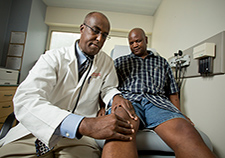
(11/10/2016)
Black Veterans were less likely than white Veterans to undergo knee replacement surgery, according to data from the VA Musculoskeletal Disorders Cohort. Over a 10-year period, rates of knee replacements were much lower for black than white veterans. Hispanic Veterans had the same rates of knee replacement as white Veterans. This study shows the importance of developing ways to reduce racial differences in Veteran health care usage, say the researchers. (Arthritis Care & Research, Oct. 27, 2016)
Heart rate variability as a predictor of PTSD
(11/02/2016)
Lower pre-deployment heart rate variability (HRV) can predict higher post-deployment PTSD symptom severity, according to a study of 343 Army National Guard soldiers. The results suggest that people with lower HRV, meaning fewer changes in the time between heart beats, are at higher risk for PTSD. This may be because lower HRV is associated with a reduced ability of the body to adapt to changing social or environmental demands. One caveat: The results were significant only in soldiers who scored above a cut-off score on a PTSD symptom test pre-deployment. (Biological Psychology, Oct. 20, 2016)
Internet-based smoking cessation programs
(11/02/2016)
Internet-based smoking cessation programs may be an effective way to reduce smoking in Veterans, found a Durham VA Medical Center study. Veterans offered telehealth programs to help them quit smoking had about the same quit rates as those participating in smoking cessation programs in the clinic. Reach of the internet intervention was significantly higher than the in-person program: 50 percent of those assigned to the internet group registered for a smoking cessation program, while only 19 percent of those in the in-person group attended a clinic-based session. Results suggest that using electronic medical records to identify smokers and offering novel interventions—such as online programs—to help them quit can significantly reduce smoking in the Veteran population. (Journal of Substance Abuse Treatment, October 2016)
Antibiotic prescription trends

(11/02/2016)
Antibiotic prescription decreased for physicians and dentists but increased for nurse practitioners and physician assistants—so-called midlevel providers—over a six-year period, according to a recent study. Over-prescribing of antibiotics can lead to drug-resistant bacteria. Midlevel providers were particularly likely to prescribe broad-spectrum antibiotics, which are a major part of the problem. The researchers recommend efforts to reverse the trend. (Journal of the American Pharmacists Association, Oct. 8, 2016)
Depression risk factors among lung cancer patients
(10/27/2016)
The main risk factors for depression among patients with lung cancer are younger age, female sex, low income, not being married, and being a smoker, found a study involving 15 VA medical centers. Researchers suggest that these risk factors should be monitored closely in this population. Patients with depression in this group had worse health-related quality of life, vitality, cancer-specific symptoms, and social support, although the study showed increased mortality only among patients with more lung cancer symptoms or less social support. (Lung Cancer, October 2016)
New technique to test Alzheimer's disease drugs

(10/27/2016)
Researchers at the Edith Nourse Rogers Memorial Veterans Hospital in Bedford, Massachusetts, have demonstrated a new way to test Alzheimer's disease drugs in lab models. They used stem cells from patients' blood to create 3D cell cultures of brain tissue, and were able to measure drug penetration on the sample. Modeling Alzheimer's disease in the lab is hard because of the extremely complex anatomy of the brain, but new drugs need to be tested this way before they are used in humans. This new approach with 3D cell cultures could allow scientists to test drugs more accurately than in traditional 2D cultures by more closely modeling the biology of the brain. (PLOS ONE, Sept. 29, 2016)
Liver transplant outcomes after circulatory death
(10/27/2016)
Liver transplants from younger donors after circulatory death had better outcomes than those from older donors after brain death, found researchers with the University of Wisconsin and William S. Middleton Memorial Veterans Hospital. Liver donation after circulatory death is generally considered to have worse outcomes than donation after brain death. However, this study showed that livers from circulatory death donors younger than 50 fared better than those from brain death donors older than 60. The researchers suggest that more liver donations after circulatory death should be accepted, which could lead to shorter transplant wait times. (Liver Transplantion, September 2016)
Personal stories more engaging for hypertension management
(10/17/2016)
African-American Veterans felt more engaged when viewing interventions about hypertension management that included personal stories from other Veterans, compared with information-only interventions. The study included 618 African-American Veterans with uncontrolled hypertension from three VA medical centers. One group was shown a DVD of information about hypertension, while another was shown a DVD featuring other African-American Veterans telling stories about successfully managing their hypertension. The Veterans who watched real patients tell their stories were more emotionally engaged than the other group and more likely to report intentions to change their behavior, showing that personal stories may be an effective tool to teach patients how to manage their condition. (Patient Education and Counseling, September 2016)
No objective benefits of yoga or aerobic exercise on sleep in midlife women

(10/17/2016)
A study found no objective effects of yoga and aerobic exercise on sleep in menopausal women with hot flashes. Although yoga and exercise have been suggested as useful for midlife women experiencing sleep disturbances, researchers found no significant differences in sleep patterns between those who practiced yoga or exercise and those who did not. The researchers used actigraphy—the continuous measurement of movement to track periods of sleep and wakefulness. While some women reported small sleep improvement after yoga or exercise, these effects could not be objectively measured. (Journal of Clinical Sleep Medicine, Sept. 9, 2016)
PTSD therapies are still effective in presence of TBI
(10/17/2016)
Both prolonged exposure (PE) and cognitive processing therapy (CPT) are effective treatments for Veterans with PTSD regardless of traumatic brain injury (TBI) status, according to a Salem (Virginia) VA Medical Center study. PE therapy involves emotionally reliving trauma in a safe and controlled manner. CPT focuses on evaluating and changing upsetting thoughts. Some clinicians have been reluctant to use PE for patients with both PTSD and TBI out of fear that they would be less able to tolerate the therapy or that cognitive limitations would make the therapy less effective. A previous study showed that Veterans with PTSD and TBI could benefit from PE. The current study showed that the presence or absence of traumatic brain injury did not change the effectiveness of either therapy and that PE provided greater PTSD symptom reduction than CPT. The researchers note important limitations to this study, including that it was not a randomized trial and the sample size was small. (Journal of Traumatic Stress, October 2016)
Aortic aneurysm repair
(10/10/2016)
Two procedures to repair aneurysms (widening of an artery that could rupture and cause internal bleeding) in the aorta have similar health and cost outcomes, according to a multicenter VA study. One procedure involves open surgery to repair the aorta. In the other, called endovascular repair, a surgeon uses X-rays to thread a stent through the arteries to the damaged part of the aorta. Researchers found that survival, quality of life, and costs were not significantly different between these two procedures. Selection of either procedure can be guided by patient and physician preference, say the researchers. (JAMA Surgery, Sept. 14, 2016)
Disclosing adverse surgical events

(10/10/2016)
Fully disclosing adverse effects to patients after surgery benefits both patients and surgeons. To study how often surgeons fully shared details with patients and their family, investigators surveyed surgeons at three VA medical centers. They found that after a negative event, most surgeons were likely to explain why the event happened, express regret and concern for the patient's welfare, disclose the event within 24 hours, and discuss steps taken to treat any subsequent problems. Fewer surgeons were likely to apologize to patients or discuss whether the event was preventable and how recurrences could be prevented. Surgeons who were less likely to disclose details were more likely to experience negative effects such as anxiety. The researchers believe better understanding surgeons' attitudes and experiences can help ensure full and open disclosure to patients and their families. (JAMA Surgery, July 20, 2016)
New device for self-administered pain relief after upper-limb injury
(10/10/2016)
Patient-controlled analgesia (PCA) allows patients to manage their own pain while being treated in hospitals. However, Veterans and service members with limb dysfunction or loss are often not able to use these devices. This problem led to the design of a new PCA adapter for patients with severe upper-limb injuries. The new device features a large surface area that fits around traditional PCA equipment, allowing for easier use. Initial case studies show that patients and clinicians were happy with the device, which could improve treatment and functional independence of Veterans and service members with upper-limb injuries. (Military Medicine, August 2016)
Will Prescription Testosterone Show On Employee Drug Test
Source: https://www.research.va.gov/in_brief.cfm

0 komentar:
Posting Komentar